Finding Alexx
| Bucket list adventures around the globe
Europe , Bucket list travel , Homepage popular · January 12, 2023

The ultimate 2 month Europe itinerary
This 2 month Europe itinerary is the perfect route to spend two months in Europe by train. For each destination I’ve included train details on how to get there, train costs, seat reservation fees for rail pass holders, things to do, places to eat and where to stay.
Planning a two month Europe itinerary? I’ve taken my actual Europe rail itinerary from my recent Europe adventure, made it much cleaner and easier, and typed it up into a super detailed, easy-to-read 2 month Europe itinerary that you can easily replicate for your own trip.
From iconic European cities like Paris, London and Rome to the stunning Italian coast, fairytale cities like Bruges, some of the most scenic train journeys in the world and some world-class culinary gems thrown in for good measure, this 2 month Europe train itinerary will show you a diverse selection of the continent’s highlights.
You could copy and paste this entire itinerary and save yourself weeks of planning, or just use it as a starting point to see where some of the easiest train routes go and then tailor it to fit your timeframe, budget and travel preferences.
So without further ado, let’s dive into this epic Europe train itinerary and get started on planning your European adventure!
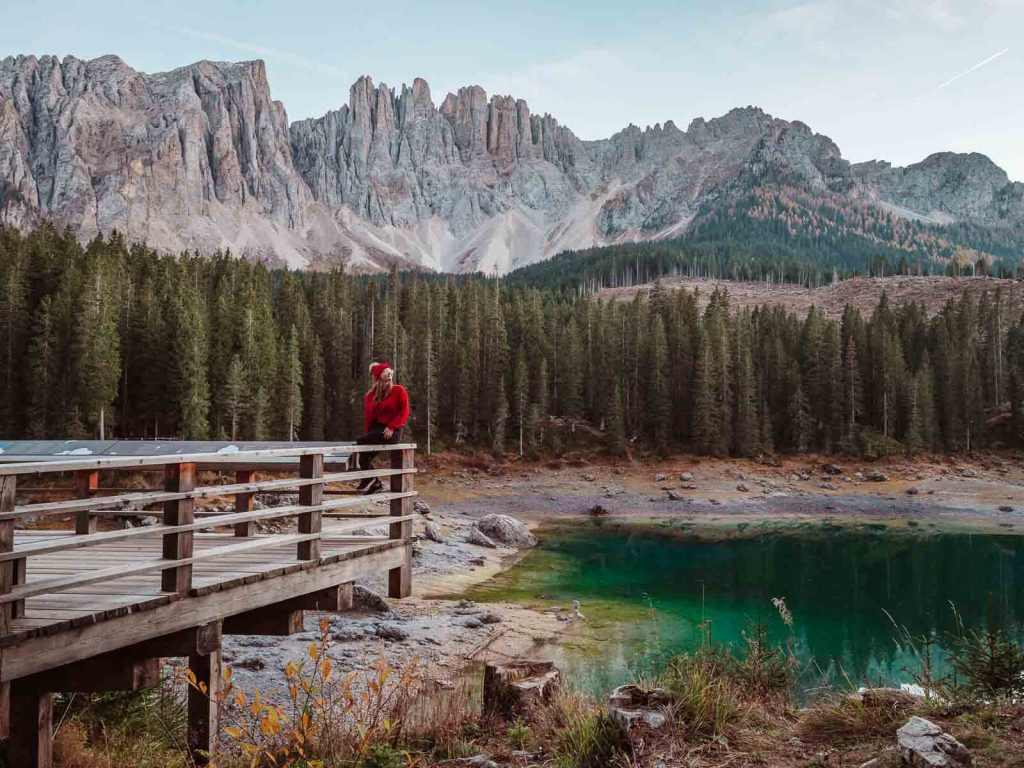
How to use this 2 month Europe itinerary
This two month Europe itinerary is based on my own exact two month Eurail trip, but it’s been fixed up to make much more sense and save time and money.
You can see my exact Eurail itinerary here , but I had to fit my plans around a conference in London, various hotel collaborations on set dates, Christmas markets and some train strikes, so I wouldn’t recommend copying my actual route. Instead you can use this two month itinerary to get ideas for places to visit and how to get between them.
If you’re lucky enough to have even longer in Europe, I also have a super comprehensive three month Europe itinerary that is pretty much all you need to plan your Europe route! It has a core itinerary with the major highlights and then a bunch of add on itineraries that you can easily slot in depending on your preferred travel pace, budget and interests,
Do I need a Eurail pass for this trip?
You should consider purchasing a Eurail Pass (or Interrail Pass if you’re an EU citizen) for this Europe train itinerary, because it could save you a tonne of money (and stress!).
If you know your exact travel dates you can check the train prices for each route (you can do this on a website like RailEurope.com or with the specific train company directly) to calculate if a Eurail Pass is worth it . If you’ve got your route fully confirmed 2-3 months before your trip then it might be better to buy all your tickets outright.
If you’re not sure of dates yet/want to keep things flexible then for this particularly itinerary a Eurail Pass is definitely recommended.

What’s the best Eurail Pass for this two month Europe itinerary?
I travelled Europe for two months with a ’15 travel days in 2 months’ Eurail Global Pass . If you go with this pass you’ll need to look at your route and try to figure out what 15 travel days will be most expensive, and use your Eurail travel days for these. There’s no point in using one of 15 travel days for a short €15 train journey between Tirano and Milan.
If you want to visit even more places, travel for another month, or just want the maximum flexibility then you could consider a consecutive Eurail Global Pass for two months or three months. These passes are much more expensive than the limited travel day passes, but they give you total freedom to wake up and catch a train wherever you want without worrying about calculating if a travel day is worth it.
Note: The Interrail Global Pass and Eurail Global Pass are basically the same, except for some specific requirements for leaving/entering your home country. When I say ‘Eurail Global Pass’ this can be interchanged with ‘Interrail Global Pass’ if you’re an EU citizen.
What are seat reservations?
When you travel with a Eurail or Interrail Pass, the pass covers your train ticket but for some trains you still need to pay for seat reservations. Many trains in Europe don’t require reservations, but for high speed trains, particularly busy routes, long-haul international trains and overnight trains you probably will need to pay for a reservation.
Seat reservation costs can vary drastically, ranging from €5 to €12 for the vast majority of reservation-required trains, but can be from €25 to €48 for high speed international trains like the Eurostar.
Seat reservations for most trains can be made on the Eurail website, they charge an fee of €2 per reservation which I have built into the price (e.g. when I say €12 reservation this is actually a €10 reservation with a €2 fee). If you can’t book them on the Eurail website (the Eurostar is an example), the Eurail website will send you through to the correct link or will tell you that you need to call the train company or visit a ticket office in person.
You can sometimes book reservations directly through local rail companies like DB (Germany) or OBB (Austria) and avoid the Eurail fee, but for ease of research I’ve taken the prices from the Eurail reservation search tool and therefore included that €2 fee in all the prices in this post.
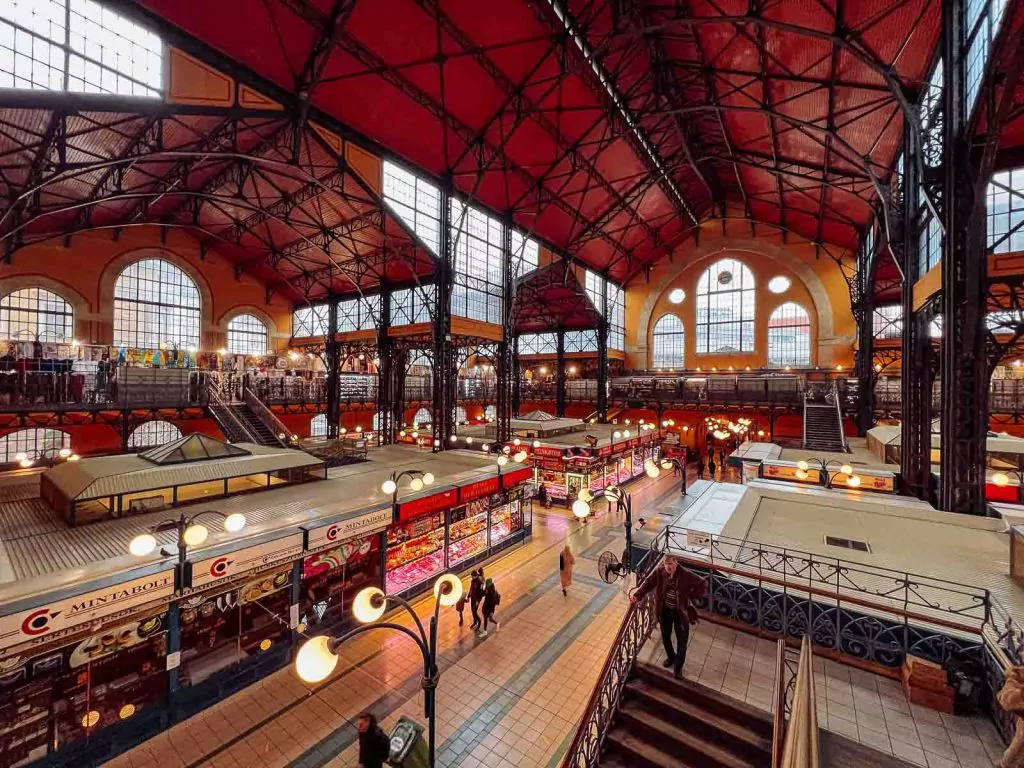
What does this two month Europe itinerary include?
This Europe train itinerary includes many of Europe’s iconic must-do cities, as well as some lesser-visited regions and towns, plus some options for easy day trips or stopovers.
There are many, many more places to see in Europe of course, but for this itinerary I’ve focused on creating a simple train route that’s easy to follow without too many complicated train journeys or drawn out travel days.
There are also a bunch of simple alternative routes at the bottom of the blog, including places you could skip and places you could add on depending on your interests and priorities.
Please note that my ‘how long to stay’ recommendation is an absolute minimum length of stay to see the top sights, but every city has much, much more to explore if you have the time.
Where should I start this Europe train itinerary?
You could start this trip anywhere, it’s pretty much a loop so it’d be possible to start in London, Paris, Barcelona, Rome or any other major airline hub city.

What if I have more time?
You’re in luck! I’ve just published an extremely comprehensive three month Europe itinerary that gives you a core itinerary, and then has a bunch of optional add ons and detours to tailor it for your preferences.
Two month Europe itinerary summary
Europe train itinerary map.
I’ve tried to colour code the destinations in rainbow colours so you can get an idea of the order you’d be travelling in.
Europe train itinerary summary
Again, the days listed here are recommended minimum length of stay. This itinerary is currently 49-61 days long based on the recommended minimum stays so you’ve got a bit of leeway to add on a day in a few extra spots, or to add a new stop altogether.
- London (4 days)
- Paris (4 days)
- Barcelona (3 days)
- Lyon (2 days)
- Zermatt (2-3 days)
- St Moritz (1-2 days)
- Tirano (1 day)
- Milan (2-3 days)
- Cinque Terre (1-2 days)
- Florence via Pisa (2-3 days)
- Rome (4 days)
- Bologna (1 day)
- Venice (3-4 days)
- The Dolomites (3-4 days)
- Salzburg/Innsbruck (2 days)
- Vienna (2-3 days)
- Bratislava (1 day)
- Budapest (2-3 days)
- Prague (2-3 days)
- Berlin (3 days)
- Amsterdam (3-4 days)
- Bruges (1-2 days)
The ultimate 2 month Europe itinerary by train
How to get to London
If you’re starting your two month Europe trip in London, you can fly into one of a number of airports.
Heathrow is the main long-haul airport for most full service major airlines, and to get from Heathrow to Central London it’s an easy Tube trip on the Piccadilly Line or the Elizabeth Line.
Gatwick is the second-busiest airport and is a common arrival point for budget airlines and also some short-haul Europe flights of full service airlines, and is connected to London city by train that runs consistently throughout the day.
There’s also London City Airport (used mostly for short-haul Europe flights from full service airlines), London Stansted (budget airlines like RyanAir and Easyjet) and London (also budget airlines).
How long to stay: As long as you can. Stay for four days at a minimum, but you could stay for weeks and still only see a fraction of what the city has to offer.
About London
London is one of those iconic cities that you probably already know loads about from TV shows and movies, but once you’re there in person you’ll see that there’s much more to the city than Big Ben, Platform 9 3/4 and William’s house from Notting Hill.
I lived in London for two years on a working holiday visa a few years ago and I count it as my second home, so believe me when I say that London is truly whatever you want it to be.
If you want to do the classic tourist route you can visit palaces, museums and skyscrapers by day, and finish the evening with a West End show.
If you prefer seeing a city by exploring their cuisine, London’s full of foodie experiences to keep you satisfied, from world-class markets (Borough is my fave) to Michelin-starred restaurants to budget-friendly cheap eats if you don’t mind getting off the beaten track.
And if you’re up for something a bit different, there are loads of unique things to do in London to surprise and delight you and your travel buddies. Spend a night hopping between funky cocktail bars and speakeasys, roam around some of the city’s expansive parks, get amongst some of the city’s incredible events or see the skyline from a jetboat tour along the Thames.
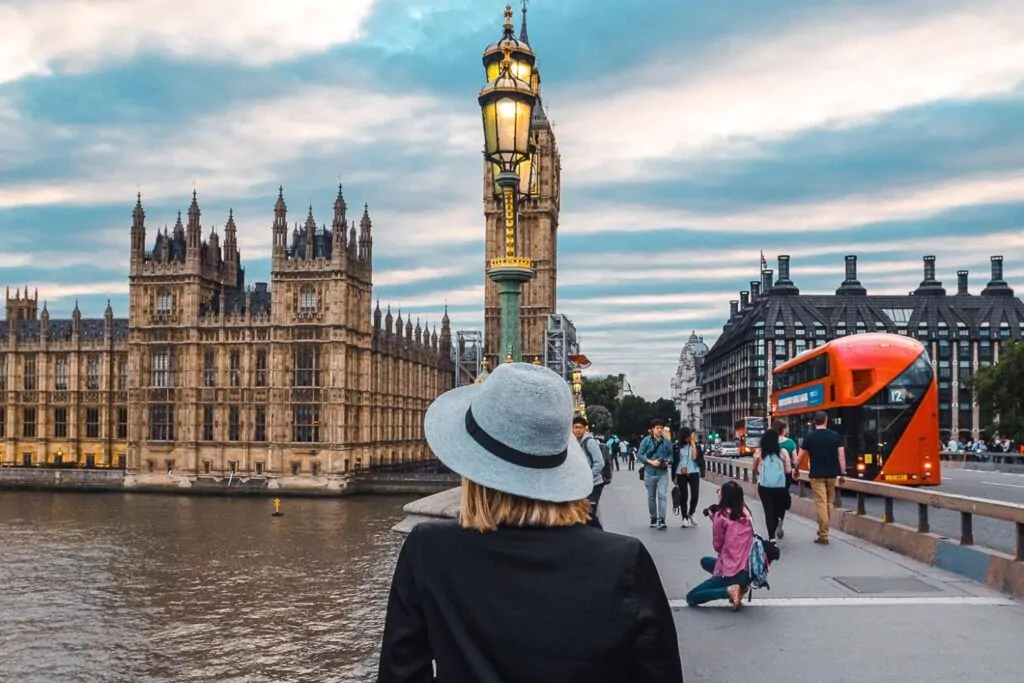
Things to do in London
- See the obvious attractions, like Big Ben, Buckingham Palace, the Natural History Museum, Trafalgar Square, the Tower of London, the London Eye and St Paul’s Cathedral. All attractions are easily reached by public transport but if you’d prefer a simple door-to-door bus then consider the hop-on hop-off bus , or look at the Go City London Pass which gives you discounted entry to major attractions as well as the hop-on hop-off bus.
- Eat your way around Borough Market, don’t miss divine apple crumble from Humble Crumble
- Shop for vintage goodies at Portobello Market, Old Spitalfields Market or Brick Lane Market
- See a show on the West End (I love & Juliet , Hamilton, the Book of Mormon, Wicked, and the Lion King )
- See a darker side of London with this highly-rated Jack the Ripper walking tour
- Taste the best food around London with a food tour! Try this cheese walking tour , this Secret London Food Tour or this East End food tour
- Take a day trip from London. You could spend a day at Warner Bros. Studios (a.k.a. Harry Potter world!), see a bunch of Downton Abbey filming locations , or tick off Stonehenge, Bath and Windsor in a single tour
- See the best view of the city from up the Shard, without having to pay for a ticket. You can simply book a table at Aqua or Hutong’s if you want a meal, or try popping up for just a drink or two in the middle of the day. Don’t miss the bathrooms, now that’s a true loo with a view!
- Another great view is up the Skygarden, it’s free entry but you need to book in advance. You can book tickets her e.
- Treat yourself to a fancy afternoon tea. Head to the Savoy for a quintessential London high tea experience, go to Sketch for the most Instagrammable high tea in town, or tick off a city tour and afternoon tea in one with Brigit’s Bakery Afternoon Tea bus tour .
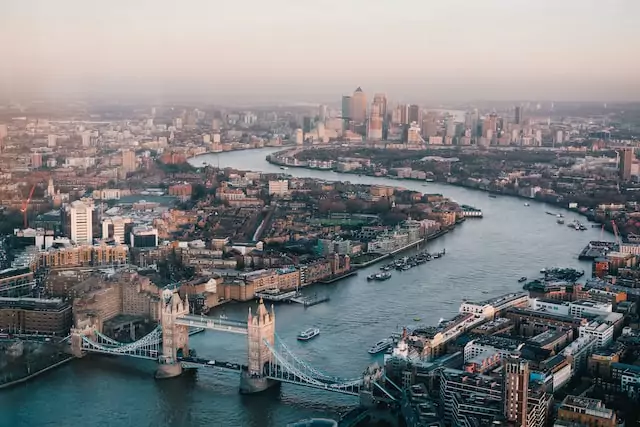
Where to stay in London
Budget | London’s not known for being an affordable city but there are some hostels that can keep your accommodation prices down. Check out Urbany Hostel , Wombat’s Hostel , Selina Camden or Hostel One are all good options, or Kip Hotel is great if all you want a private room but don’t need much space.
Mid-range | To get the best bang for your buck in London you’ll need to stay slightly out of the city, but public transport is super well connected so with these options you’ll find it easy to get to the major tourist sights. The Fox & Goose Hotel in Ealing, Spread Eagle in Wandsworth, Rose & Crown Hotel in Wimbledon and Half Moon in Southwark are all brilliantly-rated mid-range options, or the Z Hotels in Holborn , Trafalgar and The Strand are all well-rated too.
Luxury | There are loads of luxury hotels in London for a fancy stay, but some of the best-rated ones are Hotel 41 , Pan Pacific London , Claridge’s , Ham Yard and the Ritz .
Self-contained | My go-to for a self-contained stay in London is Room2 Chiswick Hometel , a gorgeous boutique aparthotel that offers funky studios with kitchenettes as well as access to a gym, laundry facilities and a café/cocktail bar with plenty of work-friendly spaces. They’re also the world’s first fully net zero hotel which is super cool!
A quick note about airport hotels
If you’ve left planning your Europe trip a bit late and aren’t able to find a seat on the Eurostar to Paris, you might need to fly instead. In London you’ll find that many of the cheaper flights depart before 9am, meaning you might need to leave your hotel at a horrendous hour to reach whichever airport you’re flying out of. To save the early morning stress I often opt for an airport hotel, choosing a cheap early morning fare with an airport hotel booking often ends up cheaper than flying out on an expensive midday flight anyway!
I love BLOC Gatwick if you’re flying from LGW, they have good value cosy rooms with comfy beds literally right next to the departure gate. And if you’re flying from Heathrow, my top pick is the newly-refurbished Hilton Heathrow Terminal 4 , which has super spacious rooms, a brilliant buffet breakfast and a short six-minute walk down a covered walkway to get to Terminal 4.
How to get from London to Paris: Take the Eurostar from London St Pancras to Paris Gare de Lyon, super quick and easy.
Train prices: If you book a few months in advance or during a sale you can find tickets from €45 one way, but there are only a select number of tickets available at that price before it rises. Last minute tickets or tickets for peak times can be as expensive as €150-€175.
Seat reservations with rail passes: A Eurail Pass is great for the Eurostar because you only pay for the seat reservation which is €32 for a Standard seat (with a 2nd class Eurail Pass) or €40 for a Standard Premier seat (with a 1st class Eurail Pass).
How long to stay: 4 days
Paris is one of Europe’s most hotly-debated tourist destinations, it seems as though you either absolutely love it or totally hate it! I’m in the ‘love’ camp, and I’ll always tack a quick Paris visit onto any European adventure.
I think the issue with Paris is that people have these dreamy, romantic expectations of the city after seeing it in movies and TV shows, and then the reality of hectic crowds, abrupt locals, smelly metro corridors and scammy tourist traps ruin these expectations leaving a bit of a sour taste in the their mouths. But, just like any main city, the best Paris has to offer is beyond the iconic tourist sights.
Paris boasts one of the world’s best café cultures, where pastries are freshly-baked, coffee is piping hot and people-watching is a daily event. And if sitting at a sidewalk table isn’t your thing, there are plenty of inner city parks to take your fresh croissant or baguette and cheese to for a DIY picnic.
Throw in a bunch of renowned museums and galleries, Instagrammable photo spots all over the city, easy day trips to palaces, castles and gardens, an alluring cabaret scene and stunning architecture everywhere you look, and you might just join me in the Paris fan club!

Things to do in Paris
- Practice your French! It’s true that the locals aren’t super friendly when you speak English to them and expect them to respond, but can you blame them? A little ‘bonjour’, ‘s’il vous plaît’, ‘parlez vous anglais?’ and ‘merci’ will go a long way. (That’s ‘hello’, ‘please’, ‘do you speak English?’ and ‘thank you’, by the way!)
- See a cabaret show, Paris is home to loads of incredible cabaret performances, ranging from risqué and raunchy through to quirky and even family-friendly. I recently saw Paradis Latin which blew me away, the dialogue and songs were part-French, part-English, the costumes were stunning and the atmosphere was so vibrant and fun.
- Grab a baguette and some cheese and have a picnic under the Eiffel Tower, in the Jardin des Tuileries or at Places des Vosges
- Visit the Galeries Lafayette department store to see the famous stained-glass dome
- Learn about some of the most famous artworks in the world at the city’s museums. There’s the Louvre , Musée Picasso , Musée d’Orsay , Musée Rodin and many, many more.
- Indulge in some sugary treats, like macarons from Pierre Hermé, the famous hot chocolate (more like chocolate soup!) from Angelina’s or a pain au chocolat from Du Pain et des Idées
- Try your hand at making your own French dessert with a macaron cooking class, there’s a good value 1.5 hour option at Galeries Lafayette , or a more intensive 2.5 hour option at a cooking school
- See a side to the city many don’t even know exists with a tour through the Catacombs , an underground network of tunnels that hold the remains of six million people after being moved from overflowing cemeteries in the 18th century
- Enjoy the panoramic view of the city from the steps of the Sacré-Cœur
- Wander through the narrow cobbled streets of the Latin Quarter, and stick around in the evening if you’re keen to experience the neighbourhood’s buzzing nightlife
- Explore the charming Marais district, my favourite part of Paris. Incredible design stores, trendy clothing shops and the city’s best Middle Eastern eatery, l’as du fallafel
- Take a day trip out of the city to the opulent Palace of Versailles , the castles of the Loire Valley , the gardens of Giverny or the rollercoasters of Disneyland Paris
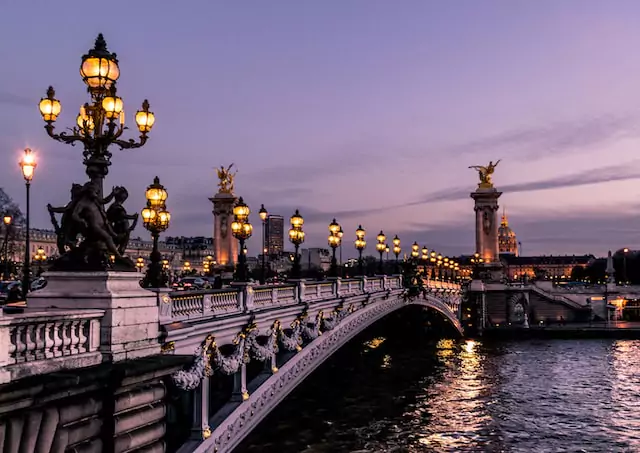
Where to stay in Paris
Budget | On my most recent trip I stayed at JO&JOE Paris Nation , which has a fridge and microwave as well as pod-style dorm rooms and private rooms, from my research it’s the best hostel in Paris that offers cooking facilities. I’ve also stayed at People Nation which has brilliant pod-style rooms right next to a metro station, but unfortunately doesn’t have a kitchen or even a fridge (not ideal for travellers on a budget as eating out in Paris isn’t exactly cheap). Generator Paris is another well-rated hostel but also doesn’t allow any outside food to be brought in, and budget-friendly Enjoy Hostel does have a kitchen but is lacking in other areas like comfort and space.
Mid-range | Hotel Paradis is my go-to for a mid-range boutique stay, they have simple but beautiful interiors, comfy beds and some top floor rooms can see the top half of the Eiffel Tower for cheeeeap. I also love Laz’ Hotel Spa for something a bit fancier without being crazy expensive, and some other decent options are Hôtel de Roubaix , B Montmartre and Babel Belleville .
Luxury | Treat yourself to a luxury stay in Paris at Manolita Paris , Maison Villeroy , La Réserve Paris Hotel & Spa , Bulgari Hotel Paris or Cheval Blanc Paris .
Self-contained | If you want somewhere with kitchen facilities then I adored my time at Edgar Suites Montmartre , they are an aparthotel just around the corner from the stairs to the Sacre Coeur. Spacious, stylish and ideally located! Other top-rated self-contained options are Goralska Résidences Hôtel , Les Jardins Du Luxembourg Hotel , CADET Residence or PEPPER & PAPER Apartments .
Bonus: Where to stay at Paris Disneyland
Budget | Eklo Hotels is an awesome option for Disneyland visitors on a budget, with rooms ranging from single to double to family to group dorm rooms. There’s also a fridge and microwave for guests to use, as well as a restaurant and bar serving up diner-style food and drinks.
Luxury | Hotel L’Elysée Val D’Europe is my top pick for a luxurious, comfortable stay near Disney. They’ve got huge rooms complete with giant beds, desks and bath tubs, and the hotel provides a free shuttle to and from Disney throughout the day.

How to get to Barcelona from Paris: There’s a direct train that runs twice a day (three times in summer) and takes 6h 31m.
Seat reservations for rail pass holders: The seat reservation for this high speed train is expensive, I paid €48 for a 1st class seat and the 2nd class reservation was €36.
Train prices: But the train ticket would’ve cost me €228 without a Eurail Pass when I booked a week before the trip (€188 for 2nd class) so the pass saved me loads of money. Looking at prices now for 2.5 months ahead of time the prices are between €119 and €144 for 2nd class, so this is an expensive route to buy outright.
How long to stay: 3 days
Barcelona is a fabulously vibrant city that offers beaches, nightlife, gastronomy, culture and history all within easy access to each other, which is ideal if you’re only here for a short visit.
By day you could catch some sun rays from a deckchair in the sand, marvel at Gaudi’s masterpieces or try some local delicacies from Mercado de La Boqueria. By night you could sip sangria while taste testing tapas (or trying some of the city’s best paella), enjoy some late night shopping down Las Ramblas or hit the cocktail bars or nightclubs.

Things to do in Barcelona
- Visit the still-incomplete jewel in Barcelona’s tourism crown, La Sagrada Familia, which is one of the city’s Gaudí masterpieces, currently in its 141st year since construction began in 1882. The basilica is certainly a showstopper even from afar, unlike any other church in the world, but you’ve got to go inside and see the stained-glass windows and unique ceiling design. Avoid long queues by booking your ticket and visit time in advance , or skip the line entirely with this guided tour and entry ticket combo .
- Another iconic Gaudí stamp on the city is Park Güell , an enchanting park sitting above Barcelona with incredible views, fairytale-esque gardens and a house where Gaudí himself lived with his family, which is now a museum dedicated to him
- And a third Gaudí tourist hot spot is Casa Batlló, a.k.a. the ‘House of Bones’ thanks to its skeletal look. You can enjoy the unique façade from the street for free, or you can buy an entry ticket to learn more about Gaudí and his creative process.
- Shop til you drop down La Rambla, a tree-lined pedestrian boulevard boasting flagship stores, quirky street performers and vibey cafes and restaurants
- While you’re wandering down La Rambla, don’t miss the entrance to the famous La Boqueria market, where you’ll find a wide range of food from fresh juices to sweet pastries to cured meats and ocean-to-market seafood
- Catch some sun, hit the surf and feel the sand between your toes along the city’s 4.5km coastline
- Experience Spanish culture through cuisine by having a daily tapas session. I loved Ciutat Comtal and some other top-rated eateries are Tapeo, Sensi Bistro and Cerveseria Catalana
- Walk through the beautiful Ciutadella Park
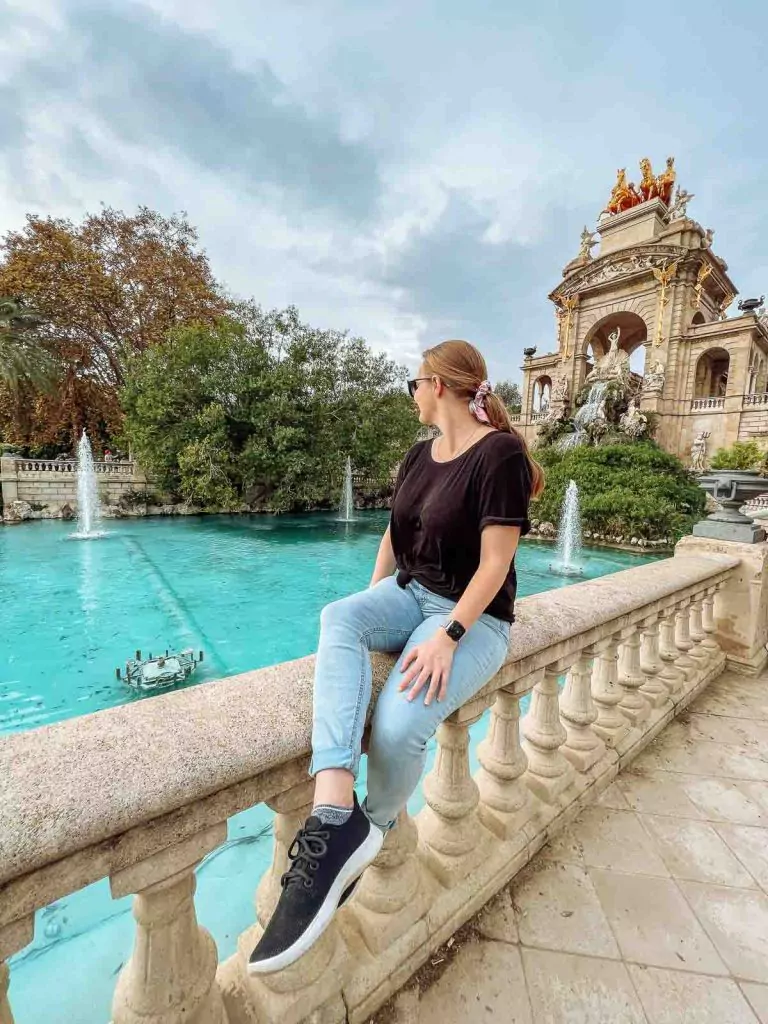
Where to stay in Barcelona
Budget | Yeah Barcelona , Hostel One Ramblas , Born Barcelona and Fabrizzios Terrace Hostel are all top-rated budget-friendly options
Mid-range | For something mid-range check out Forget Me Not , Musik Boutique Hotel , Occidental Barcelona 1929 and Hotel Jazz (which has a rooftop pool!)
Luxury | ME Barcelona , Hotel El Palace , Hotel Boutique Mirlo , Monument Hotel and The One Barcelona GL are some of the best-rated luxury hotels in Barcelona
Self-contained | If you want self-catering facilities, some good options are Deco Apartments , El Alma de las Ramblas , Eco Boutique Hotel and Suites Avenue
How to get to Lyon from Barcelona: A 5h 17m train journey with one change in Montpellier with mandatory reservations on both trains, €36/€50 for the first train (2nd class/1st class) and €12 for the second train (both classes the same price).
Train prices: This route typically costs between €70-€120 for a ticket so check the price for your travel dates to see if a Eurail Pass would be worth it. There’s also a direct coach from Barcelona to Lyon with FlixBus for €28.99 but this takes nine hours.
How long to stay: 2 days
A lesser-known city compared to many on this two month Europe itinerary, Lyon takes the culinary crown as France’s best foodie city. With 19 Michelin-starred restaurants, gastronomic events throughout the year, flagship restaurants from world-famous chefs and easy access to some of France’s best produce and meat, it’s an absolute must-visit for any food-minded traveller.
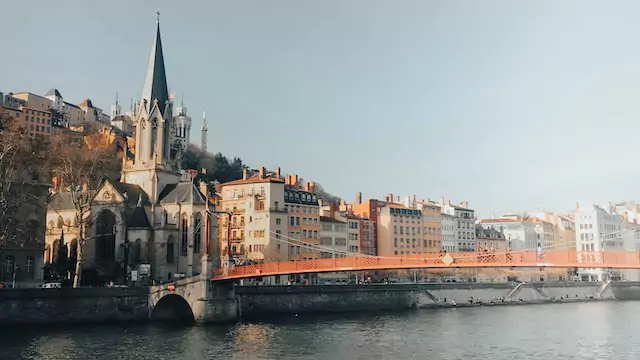
Things to do in Lyon
- My absolute top recommendation for Lyon (and for any foodie city) is to do a food tour, it’s hands down the best way to learn about the city’s culinary history and taste a bunch of local specialties while you’re at it. Some highly-rated ones are this 4 hour Vieux Lyon food tour , this Secret Food Tour and this Vegan Croix-Rousse food tour if you’re plant-based.
- Snag a table at a Michelin-starred restaurant. Restaurant Paul Bocuse is perhaps the most famous, named after Lyon-based gastronomic legend Paul Bocuse and boasting two Michelin stars. You can see all the Michelin-starred Lyon restaurants here , book in advance if you’re visiting on a weekend or during summer.
- Wander through the cobbled alleyways and ‘traboules’ (secret passageways) of Vieux Lyon, the city’s old quarters
- See the city efficiently (time-wise and energy-wise!) with a Pedicab tour , a Segway tour or an electric bike tour
- Take a walk through the indoor and outdoor gardens at Parc de la Tête d’Or
- Catch the funicular (or walk if you don’t mind breaking a sweat) up to Fourvière Hill to see the Basilica of Notre-Dame de Fourvière, the Théatre Gallo-Romain and incredible views of the city

Where to stay in Lyon
Budget | Centre Jean Bosco , Félix Dort , MEININGER Lyon and Hotel Elysée offer brilliant value for money
Mid-range | Hôtel de l’Abbaye , Hotel De Verdun 1882 , Hôtel Edmond W and Le Phénix Hôtel
Luxury | InterContinental Lyon , Villa Maïa , Boscolo Lyon Hotel & Spa or Hotel & Spa Le Pavillon if you’d like somewhere luxurious slightly out of the city
Self-contained | Le Cocon on Dine , Urban Cocoon Gite and MOHOM all offer kitchen facilities
Don’t stay at | I stayed at ResidHotel in a tiny studio apartment, but I wouldn’t recommend it. It was far too expensive for the size and quality of the place, and it was disgustingly dirty, with food remains stuck on ‘clean’ dishes, dust everywhere, sticky stuff on the kitchen bench and desk. Avoid!
How to get to Zermatt from Lyon: A few different options, but the easiest/cheapest is a three train journey that takes between 5h 36m and 6h 36m depending on the connections, with no seat reservations needed (which means it’s totally free if you use a Eurail pass). Most journeys will have a regional train from Lyon to Geneva (1h 57m), a switch in Geneva, then a train to either Visp (2h 13m) or to Brig (2h 1m), then a switch to your final train to Zermatt (1h 10m from Visp, 1h 22m from Brig).
Train prices: Prices seem to sit at around €80-100 for outright tickets even when booking a couple of months in advance
How long to stay: 2-3 days
Have you ever wondered what mountain you see on the Toberlone packet? It’s the Matterhorn, an iconic peak in the Swiss canton of Valais, and the charming ski town of Zermatt provides a front row ticket to it.
Zermatt is best-known as a winter hub for active adventurers who want to hit the slopes of world-class ski resorts, but it’s still well worth a visit in the warmer months too, with hikes, alpine train rides, paragliding, scenic flights and more on offer.

Things to do in Zermatt
- Ski or snowboard if you’re visiting during winter, then get amongst the epic apres-ski scene afterwards
- Take the Gornergrat Bahn mountain railway to the top of Gornergrat for the best view of the Matterhorn
- Do a walk when you’re up at Gornergrat. I got off at the top station and walked the 2km to Riffelsee Lake, a lake with an incredible reflection of the Matterhorn, before heading slightly up hill (short but very steep 5 min walk) to Rotenboden station to catch the train down.
- You could also continue 2.3km to the next station, Riffelberg, or skip the first walk, get off at Rotenboden and just do the second. During winter these trails are snowy so the first walk (Gornergrat to Rotenboden) is accessible to snow-shoers only, but the second walk (Rotenboden to Riffelberg) is accessible to both snow-shoers and normal winter hikers.
- Float amongst the peaks with a paragliding flight
- Take the world’s highest cable car, the Matterhorn Glacier Paradise to Europe’s highest mountain station at 3,883m above sea level, where you’ll be able to spot 38 mountain peaks in Switzerland, France and Italy
- Try some fondue, a quintessential Swiss alpine culinary experience. My hotel (the stunning Hotel ZERMAMA ) had in-room fondue sets where guests could order the ingredients from the restaurant and then DIY their own fondue dinner in the comfort of their room or from their balcony, So dreamy!
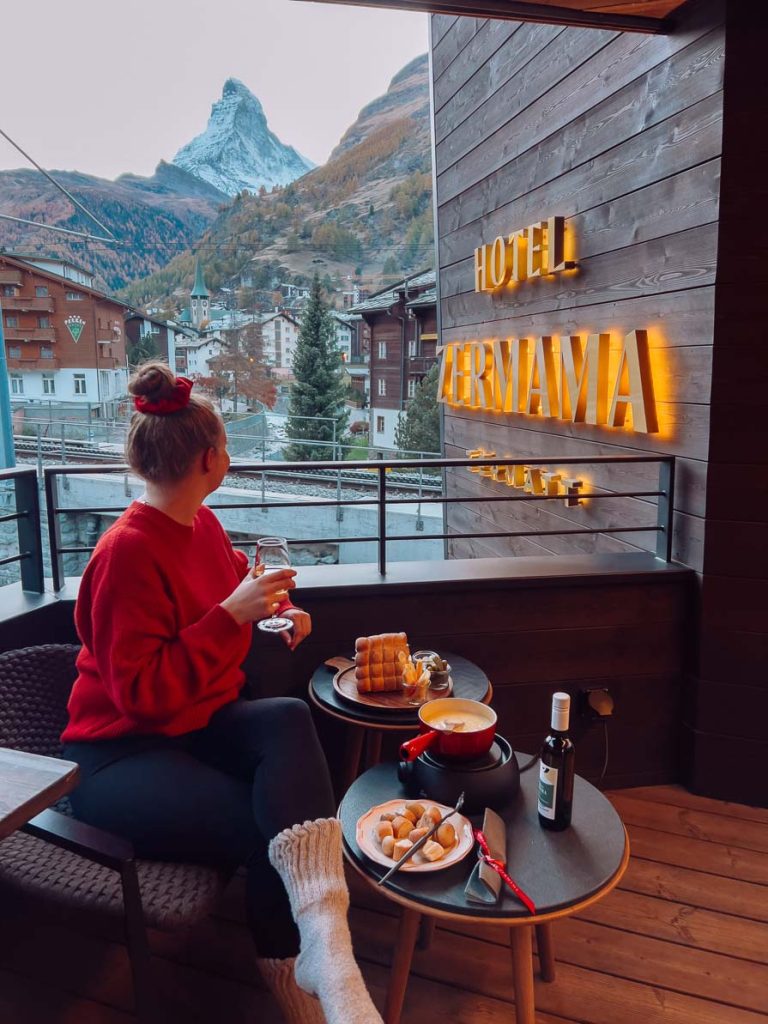
Where to stay in Zermatt
Budget | Zermatt Youth Hostel is the cheapest place in town and has great reviews, or ALPINA Budget Rooms , Hotel Alphubel and Le Petit Charme-Inn are also rated over 8/10 on booking.com
Mid-range | Chesa Valese , SchlossHotel Zermatt , Unique Hotel Post and Schallers Tannenhof offer great value for the mid-range budget
Luxury | I am obsessed with where I stayed and cannot recommend it highly enough, it’s called Hotel ZERMAMA and it’s one of the best places I’ve ever stayed for sure. It’s a 4* luxury design and lifestyle hotel with stunning interiors, lots of thoughtful extras (yoga mat, resistance bands, big faux-fur winter coat for cold nights on the balcony) and little details that take your stay to the next level. I stayed in a suite which was absolutely divine but they also offer single rooms for solo travellers which I love (no need to pay for extra space you don’t need), as well as a range of other rooms to suit different budgets.
Self-contained | Studio MIA , Alpenblick Superior and Piccolo Fiamma all have options with a kitchen/kitchenette
How to get to St Moritz from Zermatt: By catching one of the most scenic train journeys in Europe (and the world!), the Glacier Express, which is an 8 hour direct train with panoramic windows and some of the best views I’ve ever seen in my life. You can save 152CHF (2nd class) or 268CHF (1st class) on your Glacier Express journey using a Eurail, Interrail or Swiss Travel Pass, you can find out how in my Glacier Express travel guide .
Seat reservations: 39CHF during low season (mid-Dec to mid-May), 49CHF during high season (mid-May to mid-Oct)
You can also replicate the same journey by using regional trains which don’t require seat reservations, so they’re free with a rail pass or still relatively cheap compared to the Glacier Express if you’re buying outright. You’ll need to take five trains in total but all the changes are simple and at small stations: Zermatt to Visp, Visp to Andermatt, Andermatt to Disentis/Muster, Disentis/Muster to Reichenau-Tamins, and Reichenau-Tamins to St Moritz.
How long to stay: 1-2 days
St Moritz is the birthplace of winter tourism in Europe, with luxury hotels, fancy ski resorts and gourmet restaurants playing host to the rich and famous since 1864. It also serves as the stopover between the Glacier Express train and another Switzerland panoramic train, the Bernina Express.
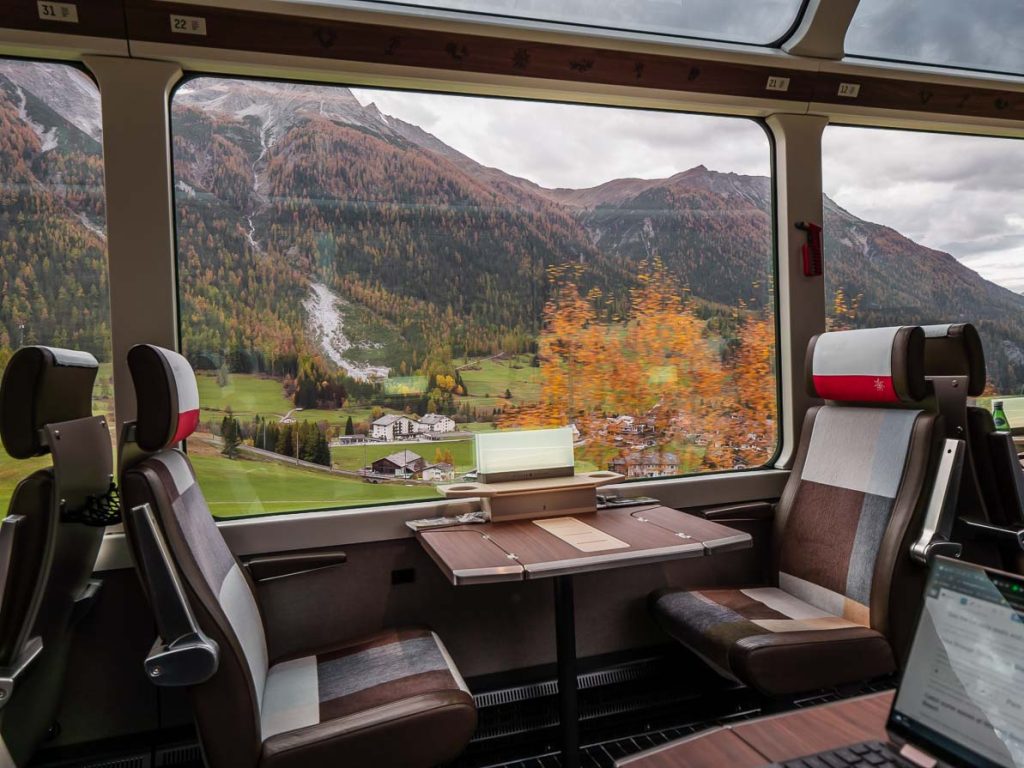
Things to do in St Moritz
- Walk around Lake St Moritz, an easy 4.4km walk past lakefront hotels and restaurants, through some short forest sections and with stunning views the whole way round
- Catch the funicular up to Corviglia (2486m) for hiking in summer and skiing in winter, or go slightly higher with the cable car up to Piz Nair at 3,057m
- There are plenty of other hikes on offer in and around the area, from easy family-friendly trails to more challenging alpine treks and even seasonal wildflower tracks
- Channel Cool Runnings and get your heart racing with a bobsled run down the Olympia Bob Run , the oldest run in the world. It’s not cheap, at 269CHF per person, but you’ll never forget the thrill of speeding down a natural ice track at up to 135km/h, feeling forces of 4G and coming to a halt after 75 seconds of adrenaline.

Where to stay in St Moritz
Unique | I spent two nights at one of the most unique accommodation spots in the world, a historic observatory with mountain views, a turning mechanism and a cog-wheel window for stargazing. The observatory is located at Randolin’s Berghotel and also gives you access to the hotel’s beautiful spa and wellness area. One for the bucket list for sure, a true once-in-a-lifetime experience!
Budget | St Moritz Youth Hostel or Hostel by Randolin’s are the cheapest accommodation options with decent reviews
Mid-range | Aside from the epic observatory, Randolin’s Berghotel also has mid-budget hotel rooms that offer a comfortable stay, great facilities and incredible views for an affordable price. You could also look at Hotel Piz , Chesa Languard or Boutique Hotel Cervus .
Luxury | Suvretta House is an iconic St Moritz luxury hotel, Kulm Hotel has incredible reviews, and Carlton Hotel is one of the Leading Hotels of the World
Optional stop: Tirano
How to get to Tirano from St Moritz: By catching the Bernina Express, another panoramic train with huge windows and insane views. A Eurail pass makes this one much more affordable too!
Seat reservations: From 20CHF to 26CHF depending on time of year
Train prices: 32CHF 2nd class or 56CHF 1st class, not including the seat reservation fee
How long to stay: Overnight
Tirano is a sleepy alpine village located in Northern Italy just across the Swiss border, and it’s the end point of the Bernina Express train.
I’ve noted it an an optional stop in this two month Europe itinerary because there isn’t a huge amount to do there as a tourist, however it’s a charming Italian town that’s much more calm and low key than the next few stops on this trip, so if you want a bit of a break then it’s a great spot to spend a night or two.
If you have extra time and you enjoy skiing in winter or cycling in summer then you might want to stay longer, it’s a great area for outdoor adventures!
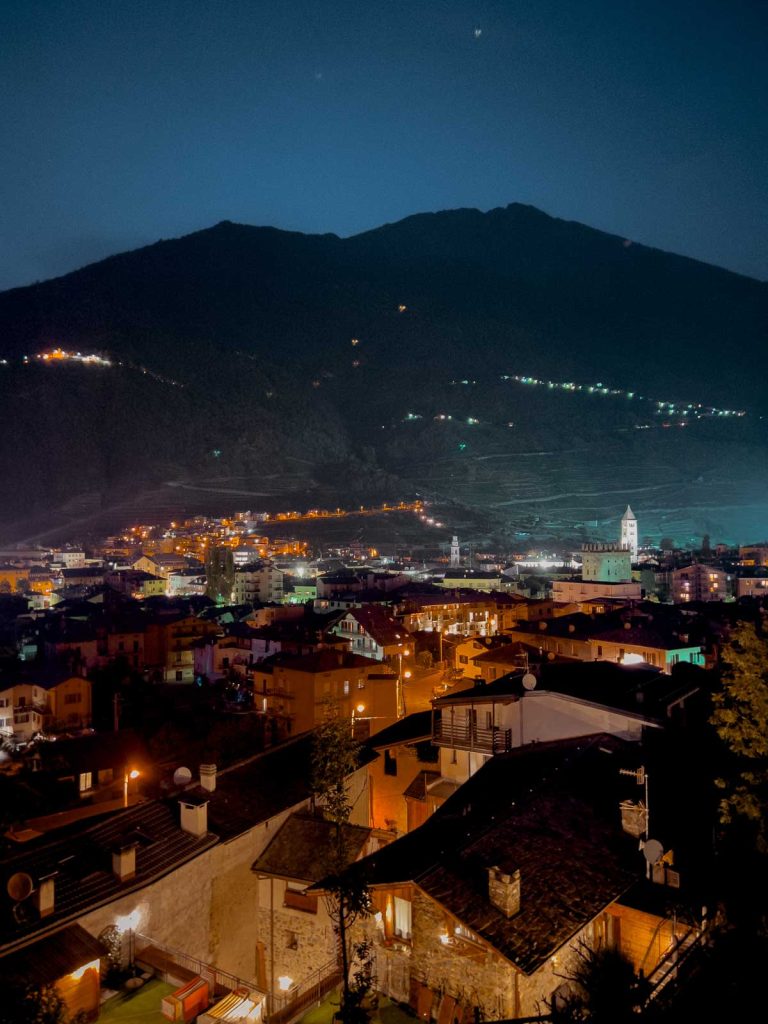
Things to do in Tirano
- See the Basilica of the Madonna di Tirano, a 16th century Renaissance-inspired church dedicated to Mary after she appeared to a local man asking for a shrine in 1504 (as local legend goes)
- Enjoy some Valtellinese cuisine, I loved Parravicini Restaurant but some other top-rated ones are Posteria Del Rosso and Merizzi
- For a classic pizza dinner, head to L’Hostaria Ristorante
- Try some local wines at the wineries on the hills surrounding Tirano
- Ski in winter or explore by e-bike in summer

Where to stay in Tirano
Budget | Hotel La Rotonda , Albergo Gusmeroli and B&B Antica Residenza Centro Storico are all cheap and well-rated
Mid-range | I stayed at Ostello del Castello , a great value guesthouse just a short walk from town and one of my favourite places I stayed in Europe. Basic but spacious and comfortable rooms, superb hospitality, and a rooftop terrace ideal for catching some rays while overlooking the town on a sunny day.
Self-contained | Casa Dolce Casa , Old Town Apartments and Holiday House Viola all have kitchen facilities
How to get to Milan from Tirano: An easy 2h 28m direct train
Train price: Tickets are just €12 so not worth using a travel day on a rail pass (but if you have an unlimited travel pass this train is included and doesn’t require seat reservations)
Milan isn’t as popular on the Italy tourist route as Florence, Rome and Venice, but if you can fit a couple of days in Milan into your Europe itinerary you will find plenty to see, do and eat. It also serves as an easy hub for rail travel, with connections to cities in Switzerland, Germany, France, Austria and more.

Things to do in Milan
- See the Duomo di Milano , one of the largest cathedrals in the world and the most iconic landmark of the city. Book a skip-the-line ticket to save time, you can choose a cathedral and rooftop ticket (optional audio guide add on) or you can get a cheaper ticket to the rooftop terraces only (no church) .
- Right next to the Duomo you’ll find Galleria Vittorio Emanuele II, a glass-covered arcade packed with luxury clothing stores. Go for sunrise to see it quiet, it fills up by around 9am and will be busy the entire day.
- Take a guided tour of the Teatro alla Scala and learn all about the theatre’s history and past performers
- Visit Santa Maria delle Grazie, a church that hosts da Vinci’s Last Supper. Tickets book up well in advance through the official website, so if you miss out then you’ll need to book a skip-the-line ticket with a guided tour .
- Architecture nerds won’t want to miss the Basilica of Sant’Ambrogio
- And football fans might want to visit the museum at San Siro Stadium, or better yet, do a guided tour
- Enjoy an evening of aperitivo in the vibrant Navigli district
- This one sounds strange but hear me out, you have to visit the Starbucks Reserve Roastery near the Duomo! It’s the fanciest Starbucks I’ve ever seen, complete with an authentic Italian menu, cocktails like espresso martinis and Aperol Spritz’, and for digital nomads it’s one of the only cafes in the city that offers unlimited free WiFi
For more things to do in Milan, check out my two day Milan itinerary

Where to stay in Milan
Budget | I stayed at Ostello Bello Grande , part of an Italian hostel chain with top-rated hostels in a bunch of major cities. The hostel is a one minute walk from Milano Centrale which is ideal for rail travellers, it has a beautiful rooftop with great views across the city, and there are loads of events to make friends.
Mid-range | Rosso Segnale Milano , Milano Dreams and B&B La Terrazza di Barbara are my top mid-range picks, all rated above 9.5/10 on booking.com
Luxury | INTOMilan Aparthotel is a brilliant option for affordable luxury, ODSweet Duomo Milano is a brand new ultra-Instagrammable hotel, or Hotel Indigo Milan is a classic
For a view of the Duomo | For the classic balcony/window shot of the beautiful cathedral, check out Duomo Cathedral View (aptly named!) or Unique Duomo Luxury Property
Cinque Terre
How to get to Cinque Terre from Milan: Direct train from Milan to La Spezia (3h 10m-3h 30m), then short trains to the villages.
Train price: The train to La Spezia is pretty cheap (€10-€25 depending on how far in advance you book), then you can take trains between the five villages with a €7.50 train card between March 24 and November 6. If you visit outside of these dates then that’s the off season and trains between the villages are free.
Seat reservations: Depends on the route, some don’t require reservations, some require €5 reservations and some require €12 reservations
The Cinque Terre was one of the first truly ‘Instagram-famous’ destinations when social media really started taking off, and the colourful seaside villages have been appearing on our feeds all through European summers ever since.
If you only have a day for the Cinque Terre then you’ll be able to see all the villages by using the train, but if you’d like to explore each village more in-depth, try some of the hikes between the villages or add on a boat trip along the coast then two or three days would be better.
Keep in mind that the Cinque Terre gets extremely busy from May through to September/October (July/August are slightly less busy because of the summer heat), and chances are you’ll be jostling for photo spots, waiting for restaurants and dealing with loads of people on the hiking trails. This isn’t to put you off visiting, it’s just to ensure you know what to expect so you aren’t disappointed!
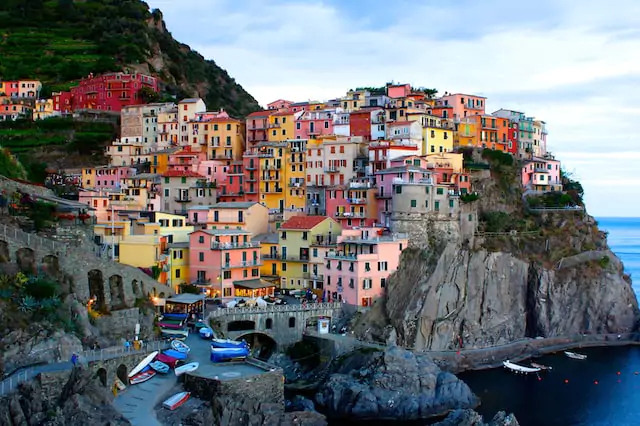
Things to do in the Cinque Terre
- Visit each of the five villages: Riomaggiore, Manarola, Corniglia, Vernazza and Monterosso
- Take a dip at Monterosso al Mare, the only sandy beach in the Cinque Terre, and home to those famous orange and green striped umbrellas
- Explore the coast by foot with one of the many hikes between the villages. The Blue Trail is the most popular track, it used to connect all five villages but was damaged by a landslide in 2012 and the route is now limited to the Monterosso – Vernazza – Corniglia sections which are 7.6km long in total. The famous Via dell’Amore (the Path of Love) from Riomaggiore to Manarola is closed until at least May 2024.
- See the coast from the water, particularly amazing in the afternoon as the sun starts to set and the colourful houses seem even more vibrant than usual. You could do this 1.5 hour kayak tour, a 3 hour kayak + snorkel tour or a full day boat tour.
- Eat lunch at Nessun Dorma, the Cinque Terre’s most well-known restaurant with stunning views overlooking Manarola. The line is always long but you can skip it by downloading the Nessun Dorma app and saving your spot while making your way there.
- Try Pesto Genovese, one of Liguria’s best-known culinary specialties
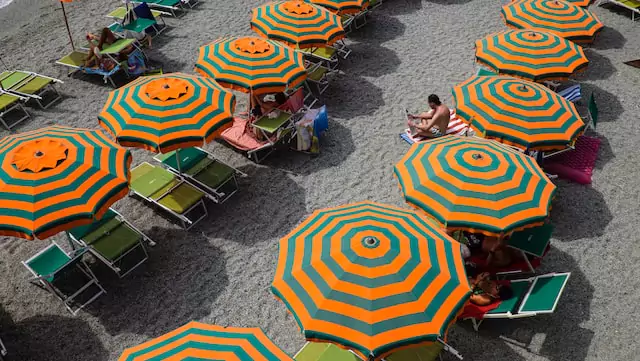
Where to stay in the Cinque Terre
Staying in the villages themselves can be quite pricey (understandably) but gives you better access to the area outside of peak day tripper hours, but for more affordable accommodation I’d recommend staying in La Spezia and then travelling to the villages during the day.
Budget | Ostello Tramonti , La Cesarina or Casa Macaia in La Spezia, or La Rosa dei Venti in Monterosso if you want to be amongst the villages
Mid-range | La Casa dei Treni Affittacamere in La Spezia, A cà da Alba Rooms in Monterosso or AMARE IL MARE Affittacamere in Corniglia
Luxury | Grand Hotel Portovenere or La Spezia by the FIrst
Day trips to Cinque Terre
If you don’t have time to spend a night in the Cinque Terre, you can join organised tours from both Milan and Florence .
Florence via Pisa
How to get to Florence from Cinque Terre: There are regional trains running constantly throughout the day to get from La Spezia to Florence, most of which have a short change in Pisa and the total travel time ranges from 1h 32m to 2h 36m.
Train prices: Tickets are cheap, typically between €14.40 and €18.80 so it wouldn’t be worth using a travel day on your rail pass.
It’s super easy to stop in Pisa to see the Leaning Tower on your way from the Cinque Terre to Florence, there’s luggage storage available at the station (most European stations have this option, usually €5-10 per large locker for a half day) so you can pay to store your suitcases and then walk 20 minutes from the station to the tower.
With Renaissance architecture to marvel at around every corner, fresco-filled churches to visit, and a seemingly endless list of sculptures, paintings and other masterpieces to admire, Florence has enough to satisfy even the most cultured travellers.
If the idea of gallery after gallery bores you then don’t stress, the city also boasts some of the country’s best restaurants, a fantastic shopping scene and easy access to the Tuscan countryside.

Things to do in Florence
- See the most iconic of all of Florence’s beautiful buildings, the Duomo Santa Maria del Fiore. Lines are always long but you can buy skip-the-line tickets with a guided tour , or this Duomo complex ticket includes access to climb the dome itself
- Say hello to perhaps the most famous statue in all of Europe, Michelangelo’s David, at the Accademia Gallery
- Visit the Uffizi Gallery , home to one of the most impressive collections of Renaissance artwork, including masterpieces from da Vinci, Botticelli, Michelangelo and Raphael, to name a few
- Try a sandwich from the original All’Antico Vinaio, the most-reviewed sandwich shop in the world with a 4.6/5 rating from more than 31,000 reviews. It’s worth the wait in line, I promise!
- See the city through Leonardo da Vinci’s eyes with a da Vinci-themed walking tour
- Window shop at the jewelry stores along the Ponte Vecchio
- Buy a genuine leather belt or bag from the artisan leather workshops in and around Piazza Santa Croce
- Visit the Basilica of the Santa Maria Novella and see art from Giotto, Masaccio, Filippo Brunelleschi and more
- Try your hand at making your own Italian dishes with a cooking class, I did this top-rated cooking class and central market tour on my last visit to Florence and now I’m obsessed with making pasta from scratch
- Watch the sunset from Piazzale Michelangelo or Basilica di San Miniato
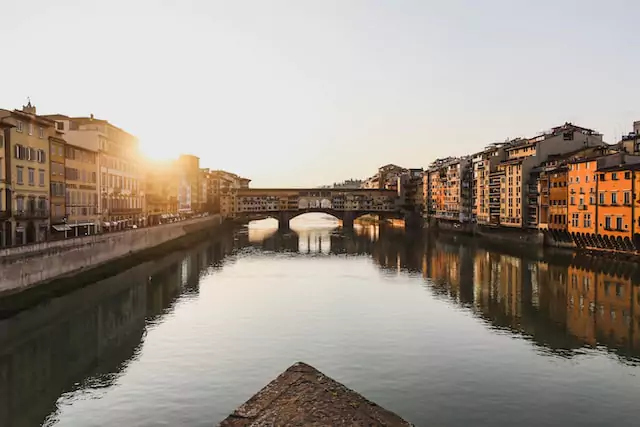
Where to stay in Florence
Budget | I stayed at YellowSquare Florence , a fantastic social hostel with brilliant facilities including a full kitchen, a rooftop bar with swimming pool, co-working areas and even a recording studio! I had a private room which had a desk (ideal as I was slammed with work) but the dorm rooms look super nice too.
Mid-range | For a mid-range budget consider Morandi alla Crocetta , 3110 ArtHotel , Room Mate Luca , Solo Experience Hotel and Residence Leopoldo
Luxury | For a fancy stay check out Villa Cora , Relais Santa Croce , Four Seasons Firenze or The Place Firenze
Self-contained | Some top-rated options with kitchens/kitchenettes are Urban Retreat , Oro Nero Florence , Geppi’s Apartment and Donati Luxury Tower Suites
How to get to Rome from Florence: High-speed direct trains take around 1h 30m
Train prices: These trains range from €14.90 to €50 depending on how far in advance you book
Seat reservations: High speed trains require seat reservations (€12). There are slower regional trains that don’t require reservations, these take around 3h 30m.
Ahhh Roma, the Eternal City that’s packed to the brim with rich culture, fascinating history, mouthwatering cuisine and a thriving nightlife and entertainment scene. Rome is one of those places where you’ll discover something new and interesting around every corner, so set aside a decent chunk of time to explore if you can.

Things to do in Rome
- Say ciao to the Pope with a visit to the Vatican, its museums, and the breathtaking Sistine Chapel. Once again, the lines will be long so a skip-the-line ticket is the best idea if you want to make the most of your time.
- See the Colosseum. Controversial opinion perhaps but I don’t think going inside the Colosseum is a must-do, I personally have only seen it from the outside on my three visits to Rome and I’m not enough of a history buff to be willing to brave the crowds. If you do want to go inside, get a skip-the-line ticket or book a guided tour to get the full experience.
- Marvel at the view from Altare della Patria. This is my all-time favourite ‘hidden gem’ of Rome and something that flies under the radar, it’s a rooftop terrace with the most incredible views across the city and its landmarks. You can catch the elevator to the terrace for only €7 (no need to book online through a travel agent or experience provider, these tickets are basically exactly the same but cost three or four times the price!), or if you’re on a tight budget you can access the terrace for free via stairs inside the monument.
- Eat and drink in the trendy Trastevere neighbourhood, which is full of cheap and cheerful trattorias, a bustling nightlife scene and funky shops. My go-to Trastevere meal is always Donkey Punch, a quirky rock’n’roll-themed sandwich bar with craft beers on offer too.
- Throw a coin into the Trevi Fountain for good luck
- Live out your Lizzie McGuire Movie dreams with a Vespa tour
- Find the Aventine Keyhole and see the perfectly-framed view of St Peter’s dome

Where to stay in Rome
Budget | YellowSquare Rome , the RomeHello and Ostello Bello Roma Colosseo are all top-rated budget options
Mid-range | The Point Suites , Relais Roma Vaticano, Hotel Balilla , Hotel Margherita and At Forty-One
Luxury | Maalot Roma , Umlita 36 , Fendi Private Suites , Baglioni Hotel Regina , Hotel Vilòn and the St Regis
Self-contained | Residenza Roma Imperiale , Trastavere 2.0 , My Bed Vatican Museum and Colosseo Accommodation Room Guest House
Optional: Bologna
How to get to Bologna from Rome: Bologna is an easy stop between Rome and Venice, it’s just over two hours from Rome (€12 seat reservation) and then it’s between 1h 20m and 2h 10m to get from Bologna to Venice (€12 seat reservation for the high speed train, no reservation needed for the slower regional trains). You can store your bags in secure lockers at Bologna train station while you’re exploring the city.
How long to stay: A day trip is sufficient
I’ve put Bologna as ‘optional’ because many first-time Europe travellers may not have even heard of it, but if you enjoy Italian food it is absolutely a must-do. Bologna is the gastronomic capital of Italy, which is saying something in a country that is renowned for its cuisine!
Bologna has many, many eateries serving up local specialties, from cured meats and cheeses to traditional pasta to creamy gelato. I’d looove to stay for a week and just try a new dish every meal, but if you are pressed for time then a day trip with a food tour is how I’d recommend seeing Bologna during this two month Europe itinerary.
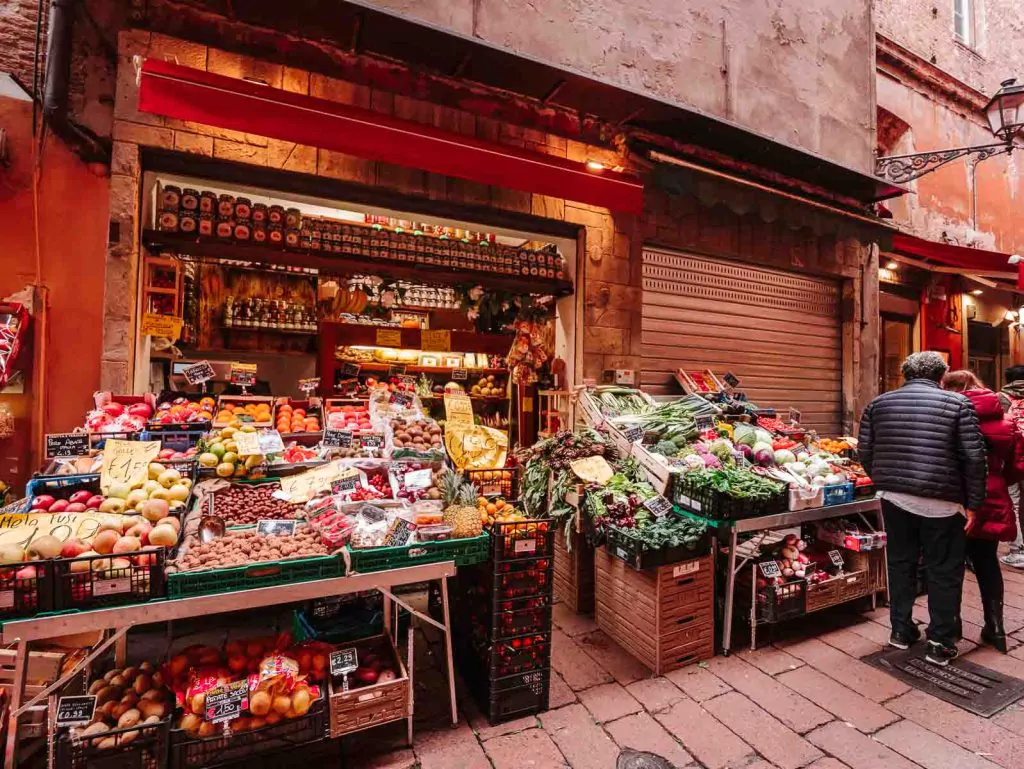
Things to do in Bologna
- A food tour is by far the best way to experience Bologna, especially if you’re limited to a day trip. I went on a food tour with Mattia from Delicious Bologna , his tours have a perfect 5/5 rating on Google from more than 220 reviews. The tour was one of the best food tours I’ve ever been on, it had the perfect mix of food, history and culture, each dish was divine, and I came away knowing so much more about Italian cuisine and produce which then helped me try new foods during the rest of my time in Italy. I genuinely can’t rave about this tour enough, it was a highlight of my two months in Europe.
- Stand under the leaning towers of Bologna, one of them even leans more than Pisa!
- If you’re visiting in summer, Bologna holds a cool summer festival that has free outdoor movies playing at Piazza Maggiore
- See the bizarre two-tone façade of the San Petronio church, which isn’t an unusual design but actually stands unfinished since 1479

How to get to Venice from Bologna: A short, cheap train ride, 1h 20m for high speed trains or around 2h for regional trains
How long to stay: 3-4 days
Venice is another love-hate destination, and it is perhaps the European city that has been most affected by overtourism in the past few decades. The floating city has no way to grow, so the ever-increasing number of tourists end up pushing locals out of their homes to make way more hotels and B&Bs, cruise passengers and day trippers try to cram the entire island into a six hour itinerary, and we all end up with massive lines, unhappy Venetians and frustrated travellers.
And while it may seem counterintuitive, one of the ways to combat overtourism is to stay longer in a destination. This means you aren’t under as much time pressure to see and do everything in a day, you can avoid peak times at the major tourist sights, and you can get a much more authentic experience enjoying slow walks and long meals compared to a hectic day trip.
I recommend at least three or four days in Venice to give yourself time to truly enjoy the city, keeping in mind that from 10am to 4pm you might want to avoid the major landmarks as they’ll be packed with fellow tourists.
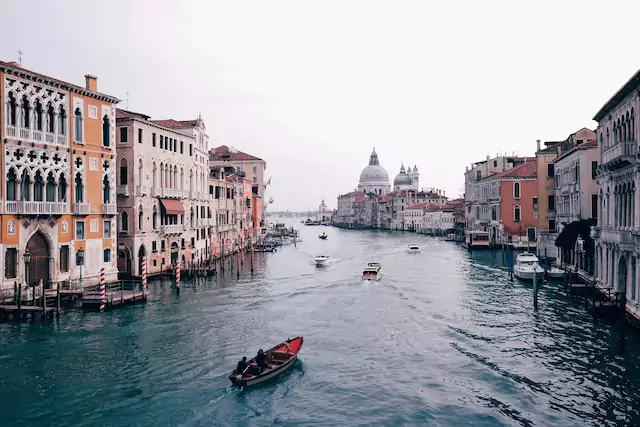
Things to do in Venice
- Take a gondola ride on the Grand Canal. Gondola rides have a standardised price of €80 during the day or €100 after 7pm for a 30 minute tour, and boats can fit up to six people. If you’re travelling solo and don’t want to splurge on a private gondola tour then you can book a shared gondola ride online for around €30 , or you could ask around at your hotel/hostel to see if there are any other solo travellers who might want to share the cost.
- Walk over the iconic Rialto Bridge
- See the magnificent paintings that adorn the walls and ceiling of Doge’s Palace , as well as the 12th/13th century gold mosaics inside St Mark’s Basilica
- Have a go at creating your own glass souvenir with a private lesson from a master artisan , this experience is only €60 which is incredibly cheap for such an authentic local experience
- Catch a vaporetto (water bus) to Burano, famous for its colourful houses, and Murano, famous for its glass workshops and galleries
- Experience the city’s gastronomy with this food tour which includes 15 food tastings!
- Visit Acqua Altadi Venezia, the floating bookshop for a cool photo spot
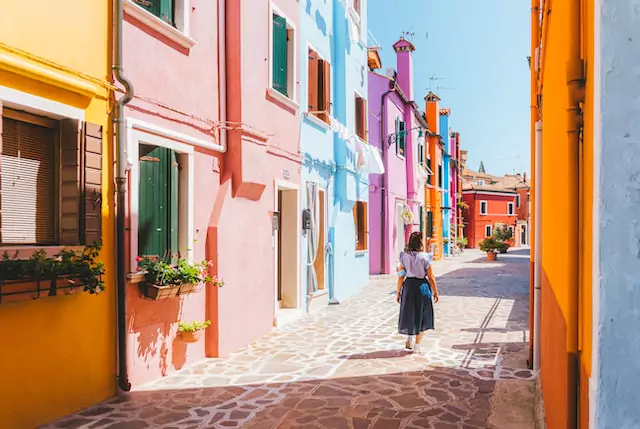
Where to stay in Venice
Budget | Unfortunately my go-to Venice hostel (Wombats Cenice Mestre) shut down due to Covid, but Generator Venice (7.9/10) and Ostello S. Fosca (8.4/10) are the top-rated hostels on booking.com, otherwise there’s cheap private rooms at Hotel dalla Mora , Locanda Silva and Hotel La Residenza
Mid-range | Check out Scalon del Doge , CàPatron , La Veneziana Boutique and Relais Venezia
Luxury | Hotel Metropole Venezia , Ca’di Dio , Palazzo Nani Venice and the absolutely incredible Gritti Palace for something super special
Self-contained | Cà Sant’Angelo , Hotel Rialto and Ai Patrizi di Venezia have options with kitchen facilities
The Dolomites
How to get to the Dolomites from Venice: An easy train journey with one change in Verona, the trip takes anywhere from 2h 45m to 3h 45m depending on the transfer time.
Seat reservations: Some journeys are with regional trains that don’t require reservations for rail pass holders, some have just the initial Venice to Verona train as requiring €12 reservations, some require reservations on both trains so €24 total.
The Dolomites are a mountain range in Northern Italy, and they’re home to some of the most picturesque landscapes you’ll find in the whole of Europe.
In the warmer months the Dolomites are a hub for hikers, bikers and climbers, with plenty of trails for adventurers of all ages and fitness levels. In winter the Dolomites Superski region boasts 15 ski resorts, more than 1200km of slopes and plenty of bars and restaurants to continue the fun after a day on the mountains.
In the Dolomites it’s easiest to explore by car as the public transport isn’t super well connected, and wait times can cut into your short stay. Car rental can be quite cheap, there were deals for €25 per day when I was there in October, but in peak season it would be best to book ahead if you can.
Keep in mind that non-European drivers need an international drivers license in Italy, your own country license won’t cut it. Rental companies might let you hire a car without one but if you’re involved in any accidents (not unlikely in Italy!) you won’t be covered by insurance without an international license, and if you’re pulled over for any reason then chances are you’ll get stung with a hefty fine.

Things to do in the Dolomites
- Go to Lago di Braies for sunrise, pure magic (though chances are you’ll be there with many photographers)
- Head to Lago di Carezza for picture-perfect reflections of the mountains, I’m sure this place is busy during peak season but I visited at sunset at the end of October and had the whole place to myself
- Spend a day at Alpe di Siusi, the largest alpine plateau in Europe. You can take the Mont Seuc cable car from Ortisei, then walk two hours to the other side and take the Seiser Alm cable car back to the the Valley Station, where you can catch a short bus back to Ortisei.
- Experience the unique South Tyrolean cuisine, which incorporates Italian, German and Austrian ingredients and cooking techniques
- Try some of the best pasta in the world at Pastalab in Bolzano, their menu changes daily with seasonal specialties and honestly my mouth is watering while typing this. Don’t miss it.
- Explore the hiking trails of Tre Cime di Lavaredo, some notable options are the Cadini di Misurina viewpoint and the Rifugio Auronzo loop
- Another must-do hike is the Seceda ridgeline, if you can hack a super early wake up then arriving here for sunrise will be well worth it
- If you’re up for a physical and mental challenge, consider a via ferrata, a climbing track that has iron rungs attached to the rock as well as a steel cable that climbers connect to with carabiners. My first via ferrata was the Wildwire waterfall climb in Wanaka, New Zealand and I absolutely loved it, so a Dolomites via ferrata is very high on my list for my next visit.

Where to stay in the Dolomites
There are so many different villages in the Dolomites and it would take hours to give you recommendations for different budgets for each village so I won’t do that.
Bolzano is the capital city of South Tyrol and is the gateway to the Dolomites, you can stay here and do day trips by bus or car, or you could arrive here by train and then catch local transport to one of the villages in the Dolomites, like Ortisei in Val Gardena, Colfosco or Corvara in Alta Badia, or Villabassa or Braies in Upper Puster Valley.
Where I stayed | I stayed at the LOOM Hotel in Bolzano which was super unique, it’s actually a living showroom for an interior design company who wanted to showcase what they could offer hotels around the world, and their rooms double as accommodation for travellers. Such an incredible idea for sustainable tourism and the rooms are truly something else!
Salzburg or Innsbruck
How to get from the Dolomites to Salzburg: Either a direct train or a journey with one or two stops, reservations dependent on the journey you choose
How long to stay: 2 days (accounting for a day trip at the one you aren’t staying in)
Though Salzburg’s main drawcard are its connections to music (as in ‘The Sound of’, as well as Mozart), it’s also well worth a visit to get into a more relaxed pace of tourism after the chaos of Italy. Explore the historic old town, get the best view from Festung Hohensalzburg, see the sheer opulence of grand palaces and search for the city’s most delicious schnitzel and strudel.
Innsbruck has a more modern vibe, not in the architecture but in the energy of the city, the gastronomy, and particularly in the apres-ski scene.
For your two month Europe itinerary you could choose one to stay the night in and one to stop at for a day trip on your way between the Dolomites and the next stop of Vienna.
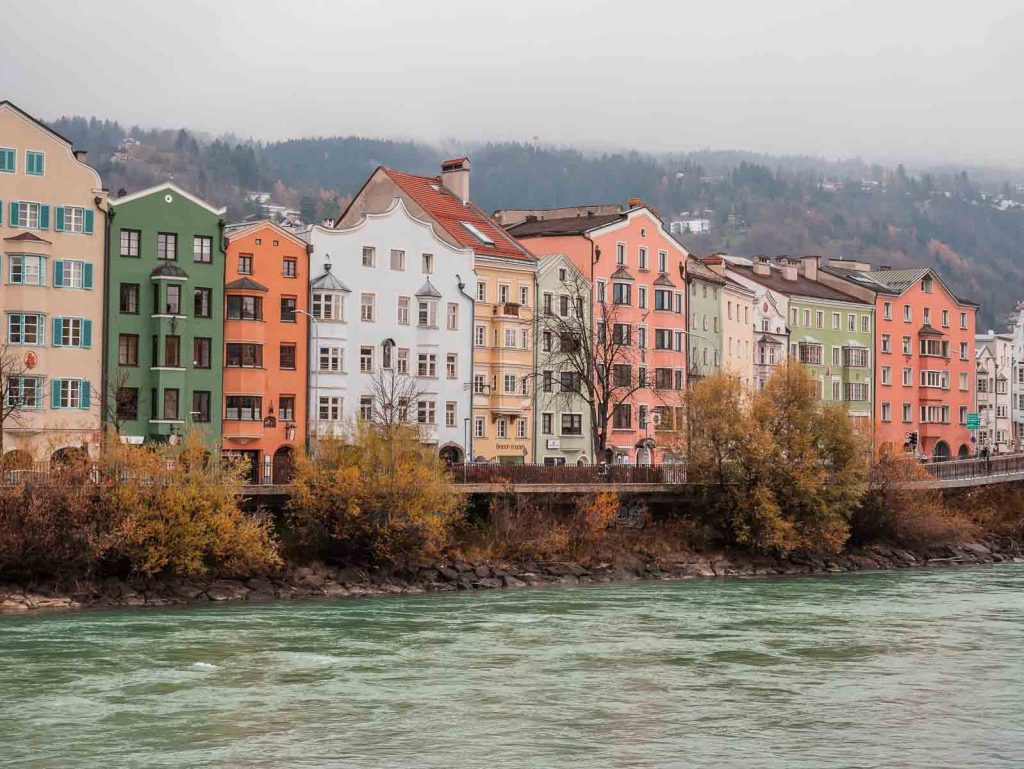
Things to do in Salzburg
- Book a Sound of Music tour to see the city from Maria’s eyes
- Catch the funicular up to Fortress Hohensalzburg for the best view of the city, then walk down the path to get back to the Old Town
- If you’re interested in medieval history, you can buy a ticket to the exhibits at the Fortress and learn more about the building’s past
- Walk through the magnificent halls and gardens of Schloss Mirabell, a 1606 palace, or see the fairytale-esque summer palace, Schloss Hellbrunn where you can find the iconic Sound of Music gazebo
- Enjoy the symphonies of Mozart with a variety of Mozart-related activities, from visiting Mozart’s birthplace (now a museum), to watching a Mozart concert at Mirabell Palace , to a Life of Mozart walking tour around the city
- Take a day trip to the Eagle’s Nest , Hitler’s vacation home in the Bavarian Alps, one of the few Third Reich buildings that remains in its original state today, complete with a marble fireplace gifted to Hitler by Mussolini. If dark tourism isn’t your thing, it’s worth going just for the sweeping views of the valley below.
- Watch the daily organ performance at the spectacular Salzburg Cathedral
Things to do in Innsbruck
- Stroll through the winding streets of the Altstadt (Old Town), where you can see vibrant facades, ornate doorways and classic Tyrolese architecture
- Climb up the City Tower if you’re visiting on a clear day, you can see right over the Old Town colourful buildings and out to the mountains that surround the city
- Spot the grandiose Golden Roof, a Gothic viewing box built in 1496 with gilded copper tiles giving it a metallic shine
- Catch the Hungerburgbahn funicular up to Nordkette, the closest mountain to Innsbruck that offers scenic viewpoints and restaurants
- Find the city’s best schnitzel, I rate Altstadt-Schmankerl as a top contender!

Where to stay in Salzburg
Budget | I stayed at MEININGER Salzburg , a hotel/hostel hybrid with dorm rooms, private rooms, guest kitchen, laundry facilities, hotel bar and bikes for rent. Slightly out of the city but right next to a bus stop, a great budget option. Other cheap options are YoHo Youth Hostel , Stadtalm Naturfreundehaus and The Keep Eco Rooms .
Mid-range | Gästehaus im Priesterseminar Salzburg , Hotel Max 70 , B&B Villa Verde and Boutiquehotel am Dom
Luxury | Hotel Bristol , Goldgasse , Hotel Goldener Hirsch and Hotel Sacher Salzburg
Self-contained | Villa Leopoldskron , Villa Maxglen , Mozart’s Garden Villa and Villa Salzburg
Where to stay in Innsbruck
Budget | Montagu Hostel , MEININGER Innsbruck Zentrum and Pension Stoi
Mid-range | Hotel Neue Post , Hotel Mondschein , Nala Individuellhotel and Faktorei
Luxury | Hotel Maximilian , the PENZ Hotel , aDLERS Hotel Innsbruck and Altstadthotel Weißes Kreuz
Self-contained | Kaiser Max Design Apartments , Apartment Mischa , Quartier 99 and Prada Elf Apartment
How to get to Vienna from Salzburg or Innsbruck: Direct train from Salzburg (2h 25m-2h 55m depending on the train) or direct train from Innsbruck (4h 20m-4h 50m) with an optional stop in Salzburg for a day trip.
Seat reservations: Seat reservations generally aren’t required in Austria but Austrian inter-city tickets are typically quite cheap so check the ticket price before using a Eurail travel day to make sure it’s worth it.
Vienna is brimming with culture, from extravagant coffee houses (with equally extravagant desserts), to countless museums and galleries, to architecture that is mostly Baroque but also spans the Gothic, Renaissance and Rococo styles.
Vienna is what you make of it, my favourite kind of city. Foodies can fill their time with food tours, sweet treats and traditional fare, travellers with an interest in history are spoilt for choice with heritage buildings and world-class museums dotted all over the city, and photographers will love the opportunities provided by Vienna’s unique architecture and fascinating interiors.

Things to do in Vienna
- See the city with a free walking tour, by far the best way to get your bearings
- Relax with a coffee and a sweet treat at one of the famous coffee houses, Café Central and Café Landtmann are two of the most famous ones, but there are many, many more to discover
- Take a 2.5 hour food tour through the bustling Naschmarkt to learn about Vienna’s culinary specialties, or try a longer four hour food tour through the city which includes a coffee house, the market, a bakery and a chocolate shop. Yum!
- Learn about one of the first famous solo female travellers, Empress Sisi. She was the Empress of Austria and Queen of Hungary but hated the rules and regulations that came with her royal titles, so she fled her responsibilities and travelled solo whenever she got the chance.
- Ride the rollercoasters at Prater themepark
- Visit the breathtaking State Hall at Austria’s National Library
- Try a käsekrainer from a würstelstand, one of the best cheap eats in the city
- Have a schnitzel dinner, you’ll find it on pretty much every restaurant menu but the best-rated ones in the city are Figlmüller, Gasthaus Kopp, Schnitzelwirt or Restaurant Pürstner
- Head up St Stephen’s Cathedral for sunset from the rooftop
I’ve got a detailed Vienna travel guide if you want more info on things to do in Vienna

Where to stay in Vienna
Budget | Vienna is home to one of the best hostels in Europe, JO&JOE Vienna . This place truly has everything you could wish for in a hostel; guest kitchens, onsite restaurant, laundry facilities, a rooftop with epic views, funky dorms with privacy blinds, spacious private rooms, loads of fun events, a big screen for movies and sports games, work-friendly spaces and more. Phew!
Mid-range | Boutiquehotel Das Tyrol , Rioca Vienna Posto 2 , Superbude Prater and ARTIST Boutique Hotel
Luxury | Rosewood Vienna , The Leo Grand , Hotel Sans Souci and Hotel Sacher
Self-contained | Karl und Anton Boutique Apartments , Oliver Apartments and URBM Rise
Day trip to Bratislava
How to get to Bratislava from Vienna: RegioJet and FlixBus have buses from as low as €4 which take between 40m and 1h 20m depending on the time of day, or if you’re totally set on train travel you can get a direct train from €10 which takes an hour
Slovakia’s capital city is an easy day trip option from Vienna, with a vibrant old town that you can explore with 5-6 hours on the ground. If you’ve got a day to spare during your time in Vienna then a Bratislava trip lets you see a new country and experience a city with fascinating history.

Things to do in Bratislava
- Take a short but steep walk up to Bratislava Castle for the best view in town
- See the Blue Church (actual name St Elizabeth’s Church), an Art Noveau church that looks like it’s straight out of The Smurfs. Its opening hours are random and changeable, currently it’s open from 6.30-7.30am Monday to Saturday, 7.30am-12pm Sunday (for services I presume), and 5.30-7pm seven days a week. It’s worth going inside if your timing is right, the interior is a mix of baby blue and yellow with intricate details if you look closely.
- Enjoy prices being a little cheaper than the other parts of Europe you’ve seen so far!
- Get a cheap lunch at Funki Punki Pancakes, my go-to eatery in Bratislava. They’ve got a brilliant menu of crepes (both sweet and savoury) with prices sitting between €2.20 and €3.50 each.
- Wander through the Old Town past bright buildings, medieval streets, quirky statues and trendy boutiques
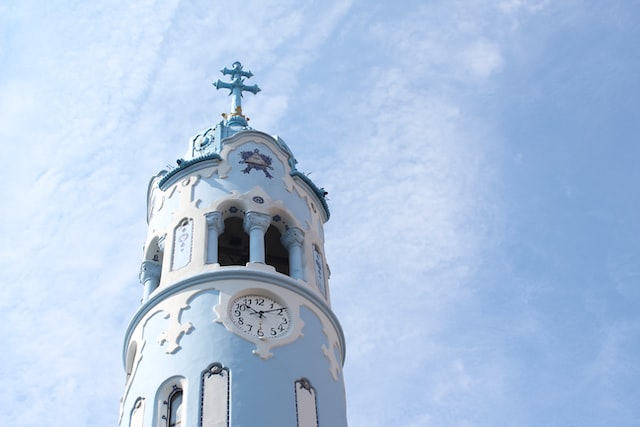
How to get to Budapest from Vienna: There are a few trains that run direct from Bratislava to Budapest but most of them go via Vienna anyway, so I’d recommend heading back to Vienna to pick up your luggage and going to Budapest from there.
Vienna to Budapest is an easy direct train that takes around 2h 41m, no rail pass reservations needed for most routes but tickets can be as cheap as €9 if you book in advance, check the price to buy outright before using a travel day on your rail pass.
Budapest is a fascinating city with a magnetic energy that attracts party-goers, history buffs, budget travellers and culture vultures alike, with things to fill the itineraries of every type of tourist.
You can see the major sights with two to three full days but if you have extra time and want to stay longer, you certainly won’t get bored.
One thing to note is that while Budapest has always been known as one of the best value destinations in Europe, Hungary is currently dealing with a cost of living crisis with inflation sitting at 22.5% in November according to WorldData , and the inflation rate for food in particular was 47.1% compared to the previous year. It was noticeably more expensive during my visit in December 2022 compared to my previous trip in 2019, so don’t be shocked if things don’t turn out to be as cheap as you initially expected.

Things to do in Budapest
- Watch the sunrise from Fisherman’s Bastion, where you’ll find the most incredible view of the city and the Danube
- While you’re up there, explore Buda Castle and the museums and galleries inside it
- See the city from the river with a Danube cruise
- Head to the Great Market Hall to buy some local meats, cheeses and produce
- Have a drink (or five) at Budapest’s iconic ruin bars
- Grab some street food from Karavan, a permanent food stall market near the ruin bars
- Relax and rejuvenate at the thermal baths , Széchenyi Baths and Gellért Baths are the most popular ones
- Learn about the city’s tumultuous past with a walking tour through the Jewish Quarter
- Visit my favourite bakery in the city, Aran, and try their famous cinnamon bun
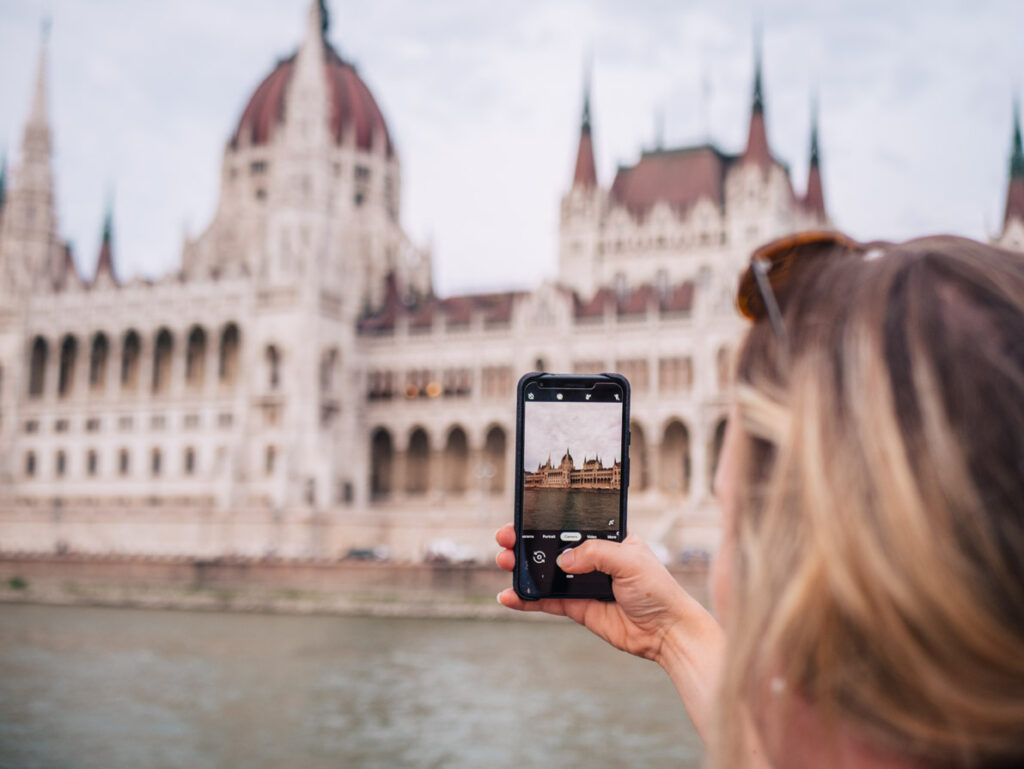
Where to stay in Budapest
Budget | I recently stayed at Flow Spaces which offers light and bright private rooms and dorm rooms, kitchen facilities and a dedicated workspace, the perfect option for digital nomads. I had a private room and loved it, I’d happily stay here for an extended period of time. I’ve also stayed at the quirky Das Nest Hostel which was ideal for a trip with friends, and other top-rated options are Hive Party Hostel and Hostel One .
Mid-range | Dob Twenty Rooms , LILIOM Apartment and OktoHome Suite are all great value apartment options, or for a mid-range hotel look at Global Suites Budapest or B&B Hotel Budapest City .
Luxury | For something sophisticated, consider staying at Alice Hotel , Hotel Memories Old Town or Hotel Moments Budapest .
Ultra luxury | If you’re celebrating something special in Budapest or just feel like treating yourself, you can’t go past the opulent Párisi Udvar Hotel Budapest or Matild Palace .
How to get to Prague from Budapest: Direct or one stop trains (stop in Vienna or Brno usually) that take between 7-8 hours.
Seat reservations: Some routes don’t require seat reservations, some require them at a cost of €6 so quite cheap.
Train prices: Outright tickets can cost as little as €18 for early or late trains when booking in advance, but could be as expensive as €110 for last minute bookings or popular times, so check prices before you decide to use a Eurail travel day.
Prague is another one of Europe’s top value cities with rich history, vibrant culture and striking architecture to offer.
While Prague didn’t totally evade bombings during WWII, it was significantly less affected than many other European cities so its historical monuments are mostly undamaged and sit in close proximity to one another, making it easy to explore on foot.
It’s also got an absolutely pumping nightlife scene, thanks to great beer, multi-storey nightclubs, and cheap flights from London making it a top choice for British lad stag dos.
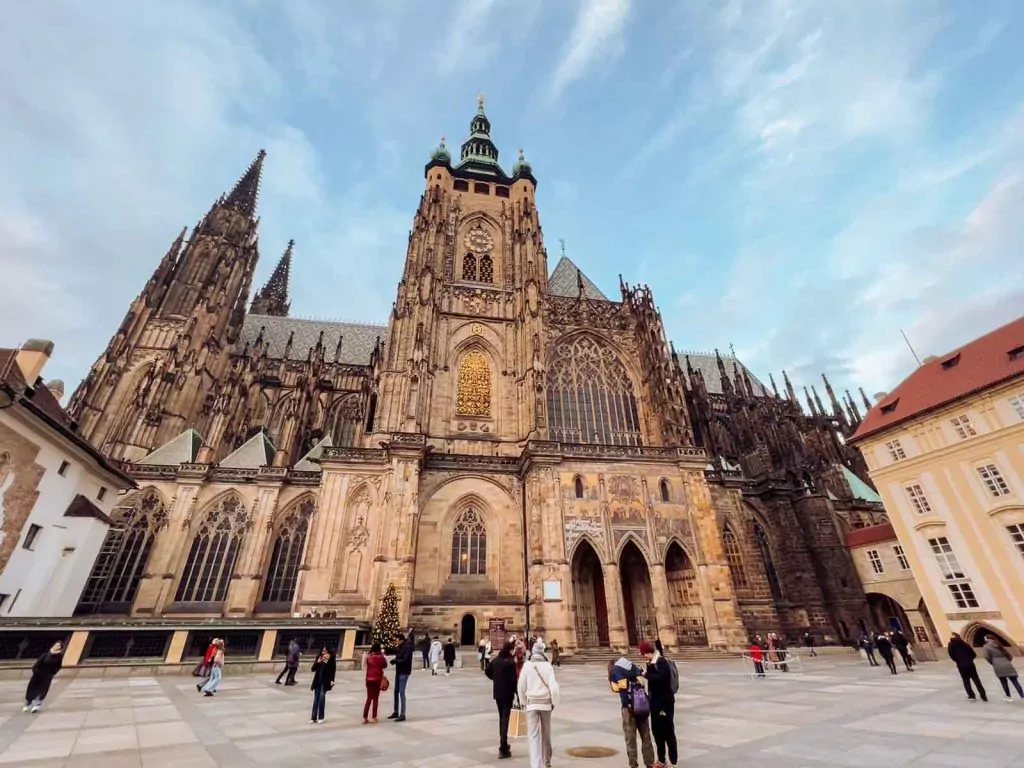
Things to do in Prague
- Visit the Old Town Square, one of the most impressive in all of Europe. It dates back to the 12th century and is home to the Astronomical Clock, the Old Town Hall and the Church of Mother of God before Týn
- Stand below the Astronomical Clock on the hour between 9am and 9pm to see the procession of the 12 Apostles appear in the windows
- Climb the Old Town Hall tower to the observation deck to see Old Town Square from above
- Learn about the city’s political history with this top-rated communism and bunker tour
- Visit Prague Castle, one of the largest castle complexes in the world, occupying more than 70,000sqm. You could stroll through the Royal Garden, see the treasures inside St Vitus Cathedral, walk past colourful buildings down the charming Golden Lane and enjoy great views of the city before heading back to Old Town via Charles Bridge.
- Walking over Charles Bridge is a quintessential Prague experience in itself, the cobblestoned pedestrian bridge provides a great view of the castle on the hill as well as being able to see Baroque, Renaissance and Gothic architecture on the other side of the river
- Do a day tour to the Sedlec Ossuary , a.k.a. the Bone Church
- For something a little unique, walk down the river to reach the Dancing House, designed by Czech architect Vlado Milunić and the legendary Frank Gehry
- Try local brews with a historic pub tour
- Get amongst the buzzing nightlife with the legendary pub crawl
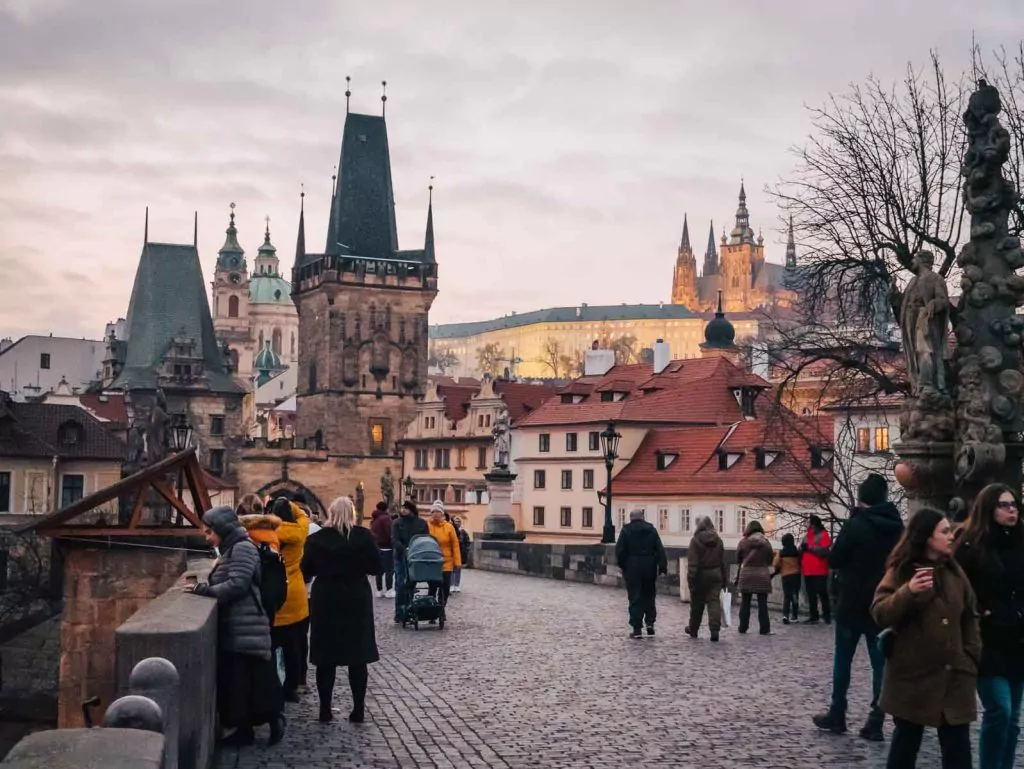
Where to stay in Prague
Budget | I stayed at Brix Hostel which was a social hotel, great for meeting people but not so great for digital nomads who need a quiet place to work. Other top-rated cheap accommodation options are Hostel Little Quarter , Sophie’s Hostel , Giotto Apartments , Hostel One Miru and Prague Dream Hostel .
Mid-range | Revelton Studios Prague , Hotel Residence Agnes , Hotel CUBE Prague , Allure Hotel Prague and Unitas Hotel
Luxury | The Julius , Four Seasons , The Grand Mark , Alchymist Grand Hotel and Hotel Republika
Self-contained | Mooo by the Castle , Hotel Diana and Malostranska Residence have options with kitchens/kitchenettes
How to get to Berlin from Prague: Direct trains run multiple times a day and take around 4h 15m
Seat reservations: No reservations required but you might want to book one (€8) during busy periods to ensure you get a seat
Train prices: They range drastically depending on the route, from €18.90 booking in advance to €90.60 for last minute tickets
Berlin is an essential destination for any Europe itinerary, it’s one of the best cities to learn about the atrocities that Europe suffered during WWII, the rise of communism in Eastern Europe and the subsequent reunification of Germany after many years of Berlin being split in two.
You’ve got the obvious landmarks, from museums to memorials to historical buildings that have been rebuilt and restored since bombs rained down on the city in WWII, but Berlin is also a unique melting pot of cultures, with a captivating arts and entertainment scene, superb culinary experiences and nightlife that rivals anywhere else in Europe.
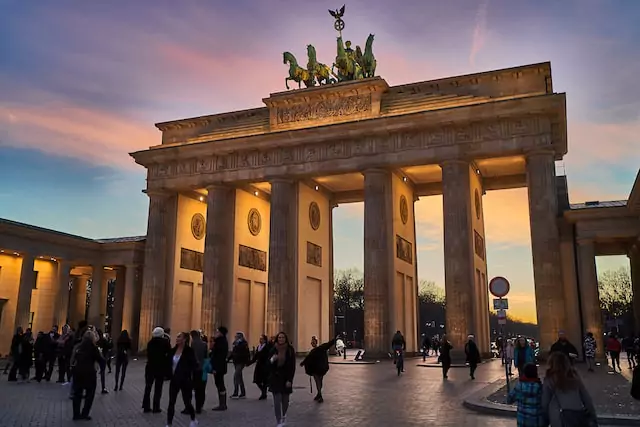
Things to do in Berlin
- Any visit to Berlin would be incomplete without a city tour of some kind, to understand Berlin’s history throughout the 20th century. Some top-rated ones are this small group Third Reich & Cold War walking tour , this 75 minute Trabi safari , and this Hidden Backyards walking tour .
- Iconic landmarks to see include Brandenburg Gate, the Reichstag Building, Checkpoint Charlie, the Holocaust Memorial, Berlin Cathedral and the Berlin Wall Memorial
- Stroll along the East Side Gallery, the longest surviving section of the Berlin Wall which is now an open-air gallery with politically-charged street art
- Take a hop-on hop-off bus around the city to tick off the big sights quickly and easily
- Head up to TV Tower for the best view of the city
- Visit the museums, there are plenty to choose from!
- Delve into Berlin’s gastronomic delights with a top-rated secret food tour
- Experience the legendary clubbing scene with a night out on the town

Where to stay in Berlin
Budget | Pfefferbett Hostel , BIG MAMA Berlin , Kiez Hostel , New Hostel and ArtHotel Connection (a hetero-friendly LGBT+ hotel)
Mid-range | Wil7 Boutique Hotel , Casa Camper , Hotel Indigo , Wilmina Hotel and Hotel Q!
Luxury | Hotel Zoo Berlin , Hotel Adlon Kempinski , Hotel Luc and Regent Berlin
Self-contained | The Weinert Suites , Gorki Apartments and Wilde Aparthotels
How to get to Amsterdam from Berlin: Direct trains available a few times a day taking around 6h 15m-6h 30m, or one stop options with a short transfer in Hannover taking a similar amount of time.
Seat reservations: Seat reservations aren’t required for rail pass holders but busy routes recommend reservations (€8) to guarantee a seat
Train prices: From €37.90 if you book in advance to €161 for some routes last minute
Amsterdam is easily one of Europe’s most picturesque cities, with narrow houses reflecting in the canals, markets overflowing with vibrant flowers, and stylish locals peddling around town making for brilliant street photography opportunities.
Like Venice, Amsterdam also suffers massively from overtourism and you’ll find that the city’s landmarks can get extremely busy, particularly during summer and on weekends. With three or four full days you’ll have time to see many of the major sights without needing to be rushed off your feet, but I’d recommend purchasing skip-the-line tickets where possible just to avoid queues that eat into your adventure time.
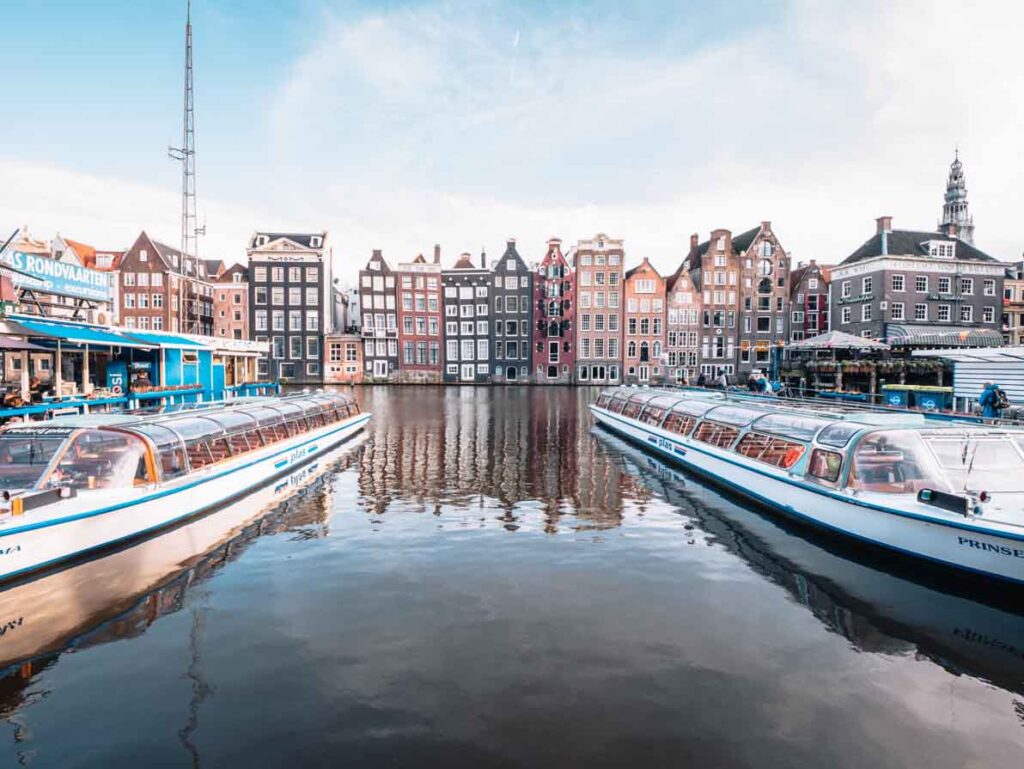
Things to do in Amsterdam
- Rent a bike and explore like a local, just be aware of all the rules so you don’t become a hazard
- Shop til you drop for vintage clothes, quirky souvenirs and stylish homewares. Amsterdam’s home and design stores in particular are beyond impressive and it hurts my soul to walk past them without being able to buy things. One day in the far future when I buy a house I’ll be coming straight to Amsterdam to stock up on knick-knacks to decorate my home.
- Hit the museums, some noteworthy ones are the Rijksmuseum for a deep dive into Dutch history and art, the Van Gogh Museum for Van Gogh masterpieces as well as works from his contemporaries, and the Moco Museum for more modern (read: Instagrammable) art
- If you’re a beer drinker, head to the Heineken Experience, an interactive self-guided tour through the beer behemoth’s former factory
- Visit Anne Frank’s house, now a biographical museum about Anne and her family
- Take a boat ride down the canal, there are plenty of cruise options ranging from budget-friendly tours to booze cruises to fancy dinner cruises
- Explore the Red Light District and get amongst Amsterdam’s infamous nightlife
- Experience Amsterdam’s growing brunch scene, I recommend Little Collins, Box Sociaal and the Lobby
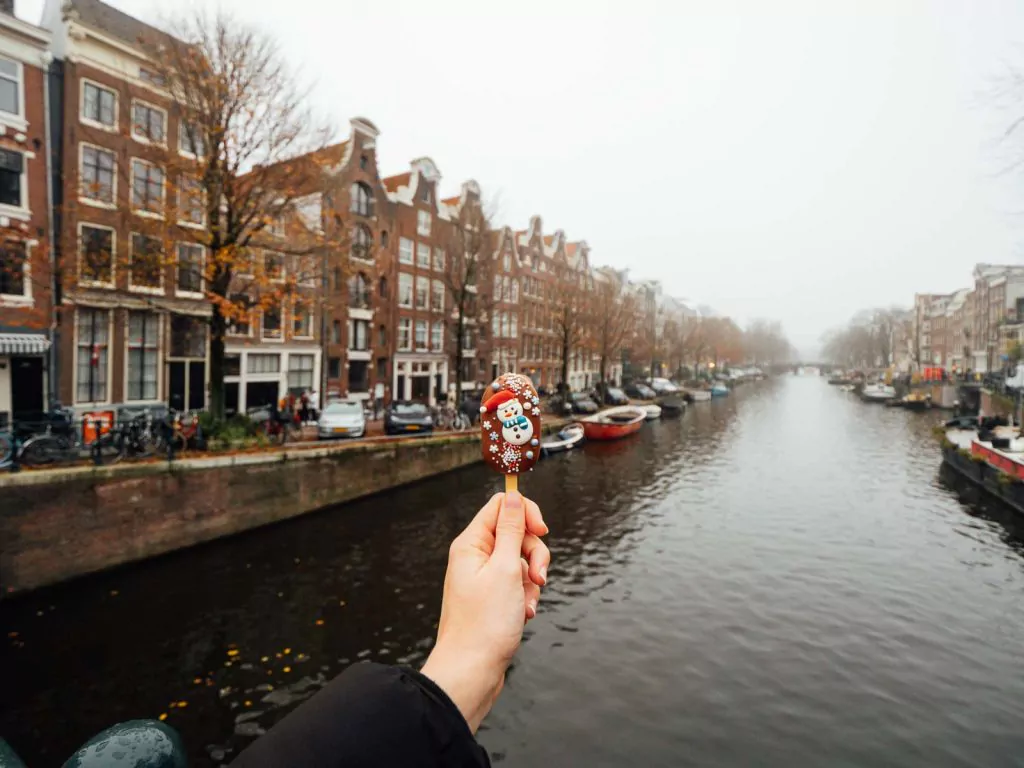
Where to stay in Amsterdam
Budget | On my most recent trip I stayed at MEININGER Amstel which was ideal, a hotel/hostel hybrid with comfy rooms, a full kitchen and a great location next to Amstel train station, ideal for rail travellers. Another great budget option is Hostelle , a ladies-only hostel which is perfect for first-time solo female travellers.
Mid-range | Outside Inn , Met Hotel , Villa Yburg ,and XO Hotels Couture
Luxury | Waldorf Astoria , Hotel TwentySeven , the Dylan , Conservatorium and De L’Europe
Self-contained | Treehouse Inn , Cityden BoLo , Social Hub and Hotel2Stay
How to get from Amsterdam to Bruges: A two-train journey with a change in Brussels (could stop for a day trip if you want)
Seat reservations: Seat reservations are usually required on the first train at a cost of €22, but there are some no-reservation options a few times a day that take closer to four hours
Train prices: From around €65 to €120 depending on when you book
The final stop in this epic 2 month Europe itinerary is Bruges, a fairytale town that’s photogenic from all angles.
It’s small and compact, easily explored by bike, by foot or by canal cruise, so it’s the ideal way to wrap up a very busy couple of months.
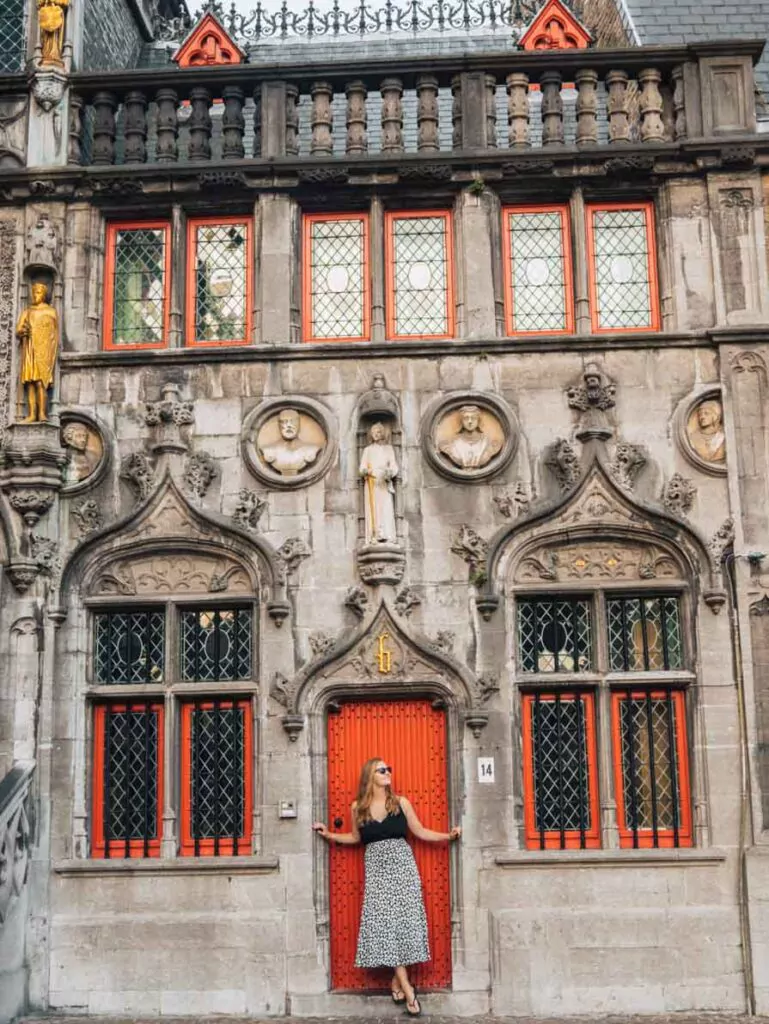
Things to do in Bruges
- Wake up early to enjoy the sleepy town as its quietest. Even cafes typically don’t open until 9am! Use this time to wander around and visit the best photo spots without the crowds.
- Walk more than 350 steps to the top of the Belfry to see the view
- Take a canal cruise
- Visit the Choco-Story Chocolate museum, do a chocolate walking tour or try your hand at making your own Belgian chocolate
- Visit the Basilica of the Holy Blood, a 12th century Romanesque church which houses a vial containing cloth stained by the actual blood of Christ (allegedly)
- Head to Sanseveria Bagelsalon, my favourite eatery in Bruges! They serve up amazing fully loaded bagels with fillings like peanut butter/banana/Speculoos, melted brie/bacon/walnuts/apple (my go-to) and raclette cheese/fried onions/gherkins
- Grab an outdoor table at one of the restaurants in the Market Square (Markt) to enjoy some moules frites with a view of the beautiful buildings that line the square

Where to stay in Bruges
Budget | There aren’t many well-rated hostels in Bruges but some good options are Snuffel Youth Hostel , Hostel Lybeer and St Christopher’s Bauhaus
Mid-range | B&B Valant , La Clé Brugge , Guesthouse Mirabel and Maison Amodio
Luxury | Dukes’ Palace , Relais & Châteaux Hotel Heritage and Dukes’ Arches
Self-contained | Maison Fred Luxury Suites , Old Bruges B&B , Aragon Apartments and Apartments Ridderspoor
Back to London
To get from Bruges to London you can catch the train to Brussels (1h) and then change to the Eurostar (around 2h).
I’d recommend spending a few hours in Brussels to see the main sights on the way, there’s plenty of luggage storage at Brussels station so you can explore without your suitcases.
Wander around the Grand Place, see the Royal Palace of Brussels, or visit one/some of the museums if you have time. And if you’re hungry, I’d highly, highly recommend heading to Tonton Garby near the Grand Place, an incredible sandwich shop with 4.8/5 on Google from more than 1600 reviews. There’s no menu, they’ll ask you questions about what flavours you like and they’ll make a bespoke sandwich perfectly suited to your tastes. Worth the wait!
If you’re flying into London rather than taking the train and you land late, consider spending a night at the airport to have a good night’s sleep and then start your London trip feeling fresh the next day. If you’re flying into Gatwick I highly recommend Bloc Hotel , they have brilliantly cosy rooms available just a minute’s walk from the arrivals section, or for Heathrow I love love love the Hilton Heathrow T4 , it has a covered walkway to Terminal 4 plus shuttles to other terminals, incredible eco-friendly design and a fantastic sustainability-focused restaurant.
Alternative cities/routes you could add or switch out
Add christmas markets if you’re travelling in november/december.
Europe’s Christmas markets start popping up from around mid-November, so if you’re braving the chilly weather and wanting to see some festive events then you’ll want to plan your itinerary around these. I’ll be putting together a Christmas market rail itinerary shortly, but in the meantime some additional places worth adding to your list are:
- Strasbourg and Colmar in France
- Dusseldorf and Cologne in western Germany
- Frankfurt in central(ish?) Germany
- Rothenburg ob der Tauber and Nuremberg in southern(ish?) Germany
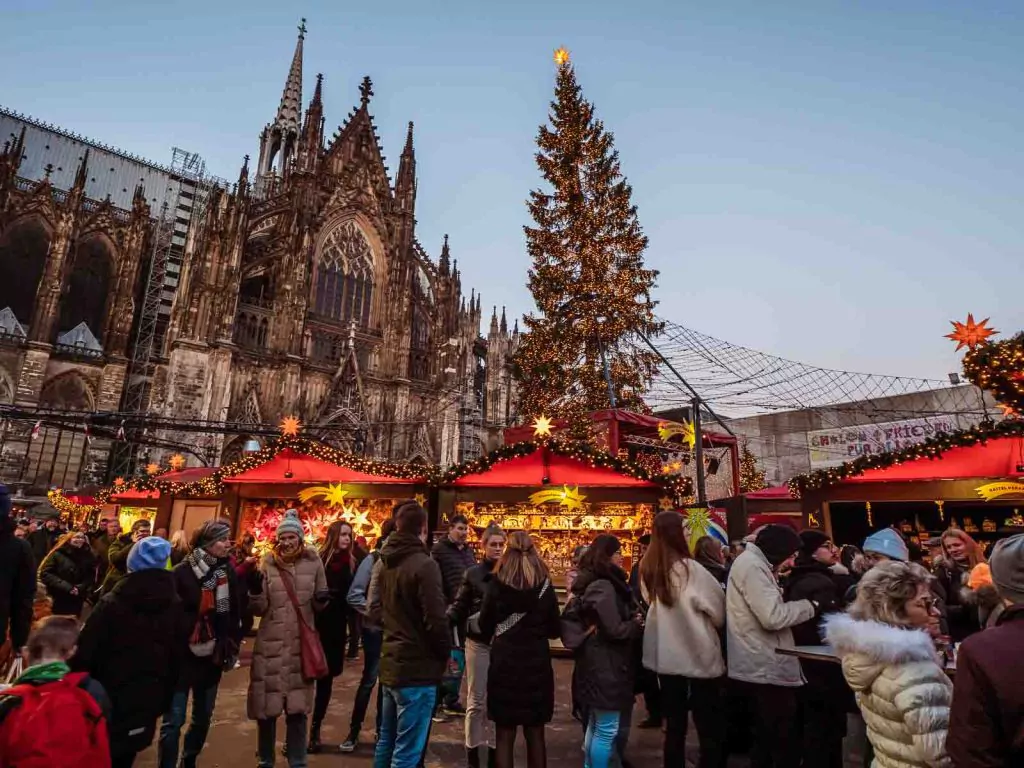
Skip some of Italy
This itinerary has a lot of Italy because a) it’s probably my favourite country in Europe and b) it’s really well connected by train so easy to tick off a bunch of places without spending too long on transport.
If you’re not super keen to spend two weeks in Italy then you could limit the Italian portion of this trip to just Rome and Venice for example, and have more time for other destinations.
Skip Barcelona
Barcelona is a bit out of the way on this itinerary, with a long trip from Paris (6h 30m) and fairly trip to Lyon (5h 20m), both of which have expensive seat reservations if you’re travelling with a rail pass.
You could save yourself some travel time by skipping Barcelona and just going from Paris to Lyon direct, which is only two hours on a high speed train and reservations are only €12, so you’d save a significant chunk of money too,
Skip Switzerland to keep it cheap
Switzerland is definitely the most expensive country on this itinerary, so if you’re on a really tight budget then you could consider skipping it to have extra time in places like Prague, Budapest or add on Warsaw or Krakow in Poland instead.
If you’re travelling with a rail pass then I’d highly recommend doing at least the Bernina Express in Switzerland because you get a huge discount on the usual price. You could even just spend some time in Tirano and do the Bernina Express return trip, so you can see the scenery without needing to splurge on Switzerland accommodation.
Add on more of Germany plus Copenhagen
If you were reducing your time in other countries, there might be space for you to add on some other German cities like Munich and Hamburg, and Copenhagen is an easy 4h 45m direct journey from Hamburg. From Copenhagen you could easily do a quick trip across the Swedish border to Malmö, just 24 minutes by public transport.
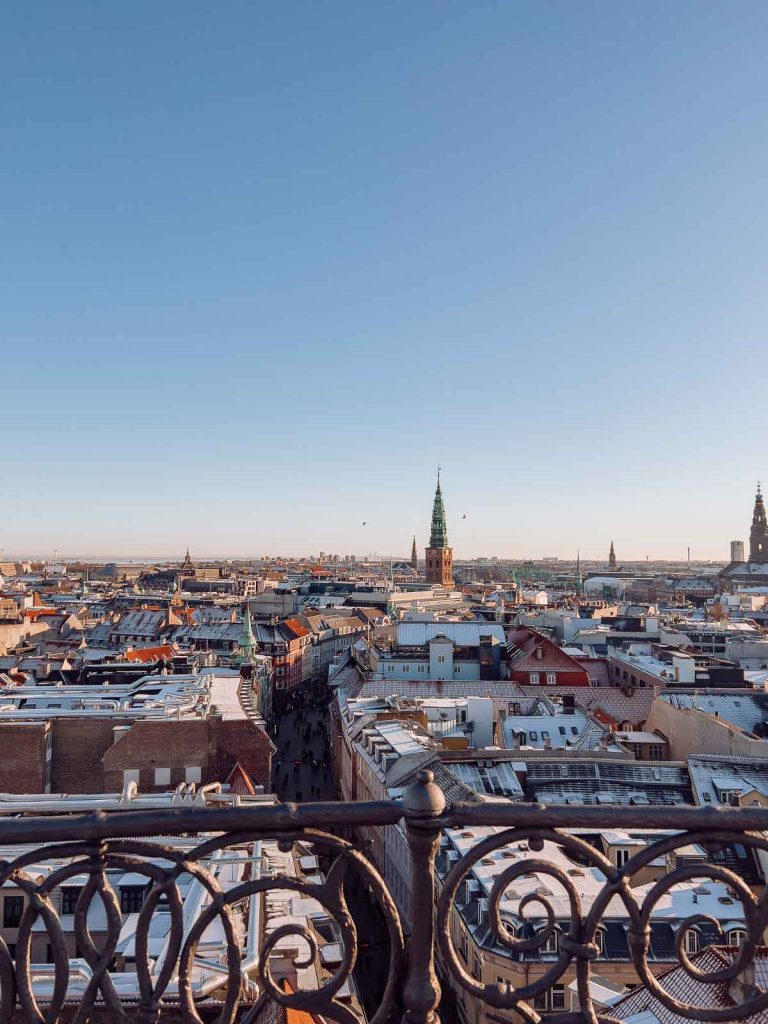
Add on some of Poland
A cheaper add on option (if you didn’t mind long travel days) would be Poland, you could visit both Krakow and Warsaw with direct train or bus routes running from Budapest, Vienna, Prague and Berlin.
Poland is super cheap so if you’re wanting the best bang for your buck this could be a great place to visit. And if you’ve got more time, you could replicate my two week Poland itinerary and slot that into your Europe trip between Prague and Berlin.
Add on more of Spain and Portugal
The reason I haven’t included much of Spain and Portugal is because if you’re using a rail pass, seat reservations must be made at the ticket offices in the country once you’re there, or with Deutsche Bahn (Germany’s railway company) at an office or over the phone. This type of admin is quite tricky for first time rail pass travellers so if you’re really keen to see this part of Europe, I’d recommend doing a lot of research on the Eurail community forum to make sure you know what you’re doing.
In Spain you could go from Barcelona to Valencia, Alicante, Granada, Seville and then Madrid, before scooting over to Portugal and heading down the coast from Porto to Lisbon to Faro.

Add on some islands
Did you know that Eurail passes also give you discounts on some ferries from Italy to Greece and through the Greek Islands? If you’re keen to enjoy paradise islands then you could travel by train to Bari in Italy, then catch the ferry to Corfu, Igoumenitsa or Patras and continue your Greece island hopping from there.
2 month Europe train itinerary FAQs
Should i train or fly in europe.
While Europe does have loads of low cost airlines with crazy cheap flights, flying comes with additional costs like transfers to the airport, wasted time in security lines and of course the impact on the environment, not to mention huge prices for add ons like a check in suitcase or seat selection.
Trains are much more straightforward, often leave from the central city or nearby, you get to enjoy the scenery, and it’s easier to stretch your legs if you’ve got a long journey.
If you need to get from one side of Europe to the other then consider flying, or if you need to get between small cities without great train connections then a flight might be easier, but for simple journeys between two major European city hubs then a train is by far the easier option.
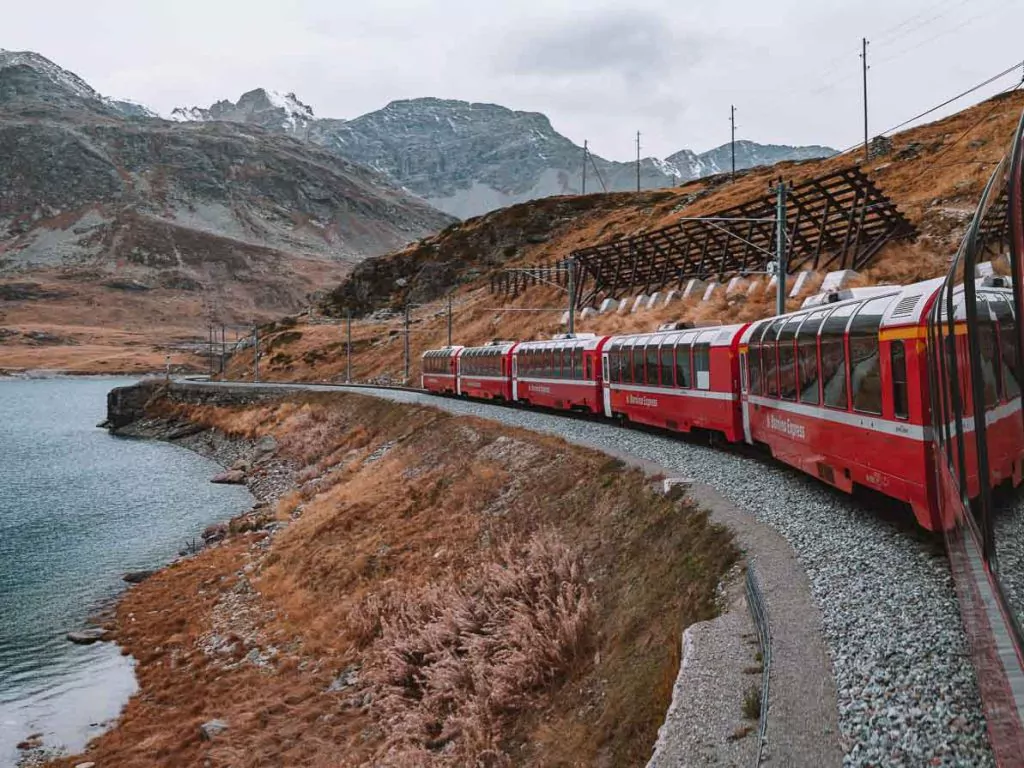
Is a Eurail pass worth it?
It really depends. A Eurail Pass is worth it if the cost of the pass + seat reservations is less than the cost of the train tickets if you bought them outright.
I answer this question in much more detail in my Eurail budget breakdown but here’s a quick summary.
If you already have a good idea of your itinerary (or if you want to follow this one) then I’d recommend typing up all the journeys you want to take and searching them on Rail Europe to see what the price would be if you booked them outright. Then check on the Eurail website for the same journeys to find out the seat reservation cost, add this to the price of the pass you’d need, and you’ll figure out which one is better value.
If you’re spending time in Switzerland and want to take the Glacier Express , Bernina Express or any other scenic trains then the Eurail Pass is definitely worth it, you’ll save loads on these trains alone.
If you don’t know your itinerary yet (and you’re travelling soon), or if you want to keep flexible and be able to decide on your route only a few days in advance then a Eurail Pass is almost certainly worth it, it lets you avoid expensive last minute tickets.
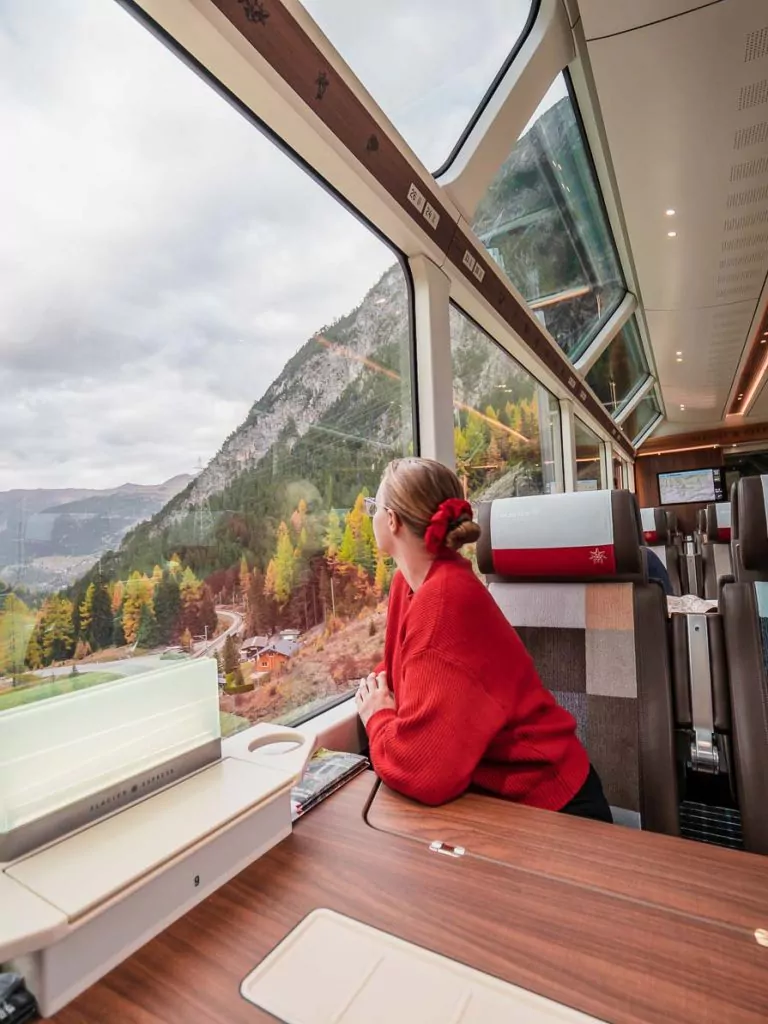
Is Europe safe for solo female travellers?
Specific safety tips will depend on the country but yes, overall Europe is absolutely safe for solo female travellers and I’ve never felt unsafe on all my solo travels in Europe.
Things to be aware of as a solo female traveller (or as any traveller!) are:
- Wear crossbody bags with your wallet in a zipped pocket
- Use a luggage cable to lock your suitcases to the luggage racks on trains
- Always have comprehensive travel insurance with both medical and luggage cover, I use Cover-More New Zealand travel insurance
- If you’re having a night out, always keep an eye on your drink and avoid getting too drunk as it can make you an easy target
- Stay in female-only dorms and night-train cabins
- Get a European SIM card that gives you data so you’re always able to access the internet, maps and transport/taxi apps

And that wraps up this huuuuge 2 month Europe itinerary! I hope this has helped you map out your own two month Europe itinerary, or at least has given you some useful destinations tips for your Europe train itinerary no matter how long you’ll be travelling.
If you have any questions or need any help with your Europe train itinerary then please let me know in the comments or flick me a message on Instagram.
MORE EUROPE TRAIN ITINERARIES:
- The perfect three month Europe itinerary without flying
- A Europe Christmas market itinerary by train
- How to spend 1, 2 or 3 weeks in Northern Italy & Switzerland
- How to spend 3 weeks in Scandinavia
- The perfect 10 day itinerary for Switzerland
- How to spend 2 weeks in Poland
MORE EUROPE TRAIN TRAVEL GUIDES:
- How to use a Eurail Pass
- Is a Eurail Pass worth it?
MORE EUROPE TRAVEL INSPIRATION:
- The most beautiful train rides in Europe
- 27 Europe holiday ideas to inspire you
- The ultimate Italy bucket list
- 33 beautiful places to visit in Switzerland
MY GO-TO TRAVEL PLANNING RESOURCES Flights ✈️ I use Skyscanner to find the best flights for my trip and then I’ll always book direct with the airline to protect myself from having to deal with dodgy third parties if anything goes wrong. Trains 🚂 If I’m travelling through Europe, I try to travel by train wherever possible! For an extended trip (2+ weeks) I’ll calculate if a Eurail Pass is worth it , or I’ll book point-to-point tickets through RailEurope or the local train operator. Accommodation 🛎️ I book almost all of my accommodation through booking.com , they have a user-friendly website + app and many of their options are free cancellation, easily cancelled with a simple click of a button. Activities 🗽 I use GetYourGuide , Klook and Viator to look for activities in the places I visit, or I just Google ‘things to do in [city]’! Travel cards 💳 I’m a Wise gal through and through, they’ve been my chosen travel card for more than five years now. You can easily top up your card from your bank account or through Apple Pay, convert your money to local currency, and spend money with minimal fees and the best exchange rates around. Travel insurance 🩺 I use Cover-More NZ travel insurance for my own trips, I have a comprehensive policy and I’ve only had good experiences with them. Cover-More also has an Australian company , but if you’re from elsewhere then two popular insurance options for global travellers are SafetyWing (cheaper policy, lower coverage) and World Nomads (more expensive but significantly better coverage). Luggage 💼 I travel with Samsonite Cosmolite suitcases , one 75cm check in bag and a 55cm carry on bag, and I absolutely adore them and will never travel with anything else! They are SUPER lightweight (2.8kg and 1.9kg respectively) so I have much more space for my actual stuff. Camera gear 📸 These days many of my photos and all of my videos are with my iPhone 15 Pro Max , my main camera is a Lumix G9 but I have a secondary camera (my old one) that’s a Lumix GX85 , I use a DJI Mini 3 Pro drone and a GoPro Hero 10 . I do all my writing and editing on my HP Spectre x360 , it’s super lightweight and perfect for travel.
You’ll Also Love

May 10, 2023 at 5:25 pm
Some of the accommodation is expensive how much money do u need for this frip
May 11, 2023 at 11:28 am
I’ve included budget accommodation in each of the cities for that reason, so you can pick and choose what accommodation and activities will fit into your budget.
If you’re happy staying in dorm rooms and cooking most of your own meals then in Western Europe you could probably budget €70-80 per day, Eastern Europe will be cheaper at €40-50 per day. If you want to stay in hotel rooms and enjoy a meal out once or twice a day then it really depends on which country/city as Switzerland is more expensive than Spain, and Paris is more expensive than Lyon for example, but as an average amount I’d say €100-130 per day for Western Europe or €70-80 for Eastern Europe. That’s if you’re sharing a hotel room with a partner or a friend, it would be a bit more if you’re travelling solo. Hope that helps!
August 5, 2023 at 6:55 pm
I found this very helpful and detailed—both important. I did have a question on how one might condense this into a two to three week trip. I think my job will not allow me to take more than three weeks maximum off for vacation. But, I’m very enticed to see as much as we can in such a short time frame. I almost considered just modifying your schedule and cutting locations that are not “essential”. Thanks for your thoughts/consideration.
August 9, 2023 at 9:08 pm
With three weeks you could do a smaller route, and it would be particularly helpful if you can fly into one place and out another so you aren’t wasting days getting back to your original destination. You could fly into London and then do Paris, Amsterdam, Berlin, Prague, Budapest and Vienna for example! It really depends on what you’re interested in and what destinations are your essential stops.
September 13, 2023 at 1:08 pm
How much stuff did you pack? Backpack? Suitcase?
September 14, 2023 at 2:33 am
I travel for 9-10 months of the year and have loads of camera gear so I use a suitcase 🙂
Leave a Reply Cancel reply
Your email address will not be published. Required fields are marked *
- SEE ALL BLOGS
- GET INSPIRED
- DESTINATIONS
- SOLO TRAVEL
- TRAVEL PLANNING
- BLOGGING RESOURCES
Join my email list
Subscribe to be the first to know about new blog posts, travel hacks, giveaways and more.
Finding Alexx is a participant in the Amazon Services LLC Associates Program, an affiliate advertising program designed to provide a means for sites to earn advertising fees by advertising and linking to Amazon.com.
- About Finding Alexx
- Work with me
- Privacy policy
Copyright © 2024 Finding Alexx
- Skip to primary navigation
- Skip to main content
- Skip to primary sidebar

Destinations
Experiences.
- Photography
Plan Your Trip
Europe starts here.
It isn’t easy to put a 2 month Europe itinerary together—I say this as someone with almost 20 years of experience traveling on the continent!
The main reason? When you consider how massive Europe is—it’s as big as the continental US, but much denser and more culturally diverse—two months just isn’t very long. Certainly, it’s not enough to see “everywhere” in Europe, or even get close to doing so.
Over the next several paragraphs, I’ll inform and inspire your travels, whether you use your two months in Europe to get a high-level overview of European cities and countries, or dig deep into one or two regions. We’ve got a lot of ground to cover, however, so let’s get started.
Practical Matters
When to visit europe.
While I love visiting Europe during the hottest part of the summer, the reality is that this is also the most crowded and expensive time to explore the continent. Likewise, although there’s no denying the charm of the Alps during the winter, things get busier and costlier the closer you get to the ski slopes. For a European vacation with great weather and relatively few fellow tourists, visit during the “shoulder” months of April, May, September and/or October.
Where to stay in Europe
You should plan on staying in a variety of accommodations during your Europe 2 month itinerary. While certain miles-and-points travelers may decide to sleep entirely at big-name hotels and resorts, the preferable strategy is to tailor your stay to your destination. Boutique city hotels (Seville’s H10 Corregidor Hotel is a great example of this) make sense in cities like Lisbon, Berlin and Stockholm, while resorts and villas with terraces and pools are more worth the expense on Italy’s Amalfi Coast or in the Greek Islands.
How to get around in Europe
The good news? Europe has one of the most efficient railway systems in the world. While not as modern as China’s or as uniform (or fast) as Japan’s, trains in Europe will get you to where you need to go at a relatively low cost and with minimal stress. In most cases, I don’t feel that a Eurail Pass is worthwhile, for what it’s worth.
What I do always recommend, on the other hand, is looking at the Schengen Area map and then comparing the price of flights and trains. If a prospective flight is cheaper—and especially if it’s on a “real” airline—this is probably your best bet.
Money, costs and communication
While most of Europe uses the euro, this is not the case in every country, particularly ones on the eastern half of the continent. Additionally, most transactions in Europe have rapidly become cashless, further decreasing the complication of traveling across borders. With this being said, costs are relatively high: The minimum you can expect to spend to enjoy Europe is 100 USD per person, per day—if you want to travel in comfort, you’ll need to spend more than this.
Regardless of your 2 month Europe trip cost, communicating on the continent is relatively easy. This is true in both a literal and figurative sense. Most Europeans can speak quite a bit of English; WiFi is ubiquitous enough that even if you don’t purchase a SIM card, you’ll be able to connect in most places you wind up.
The good news? eSIM technology has now made its way to Europe. The better news? If you buy your Western Europe eSIM or Eastern Europe eSIM online today , you can be connected the moment you land!
Where to Go With 2 Months in Europe
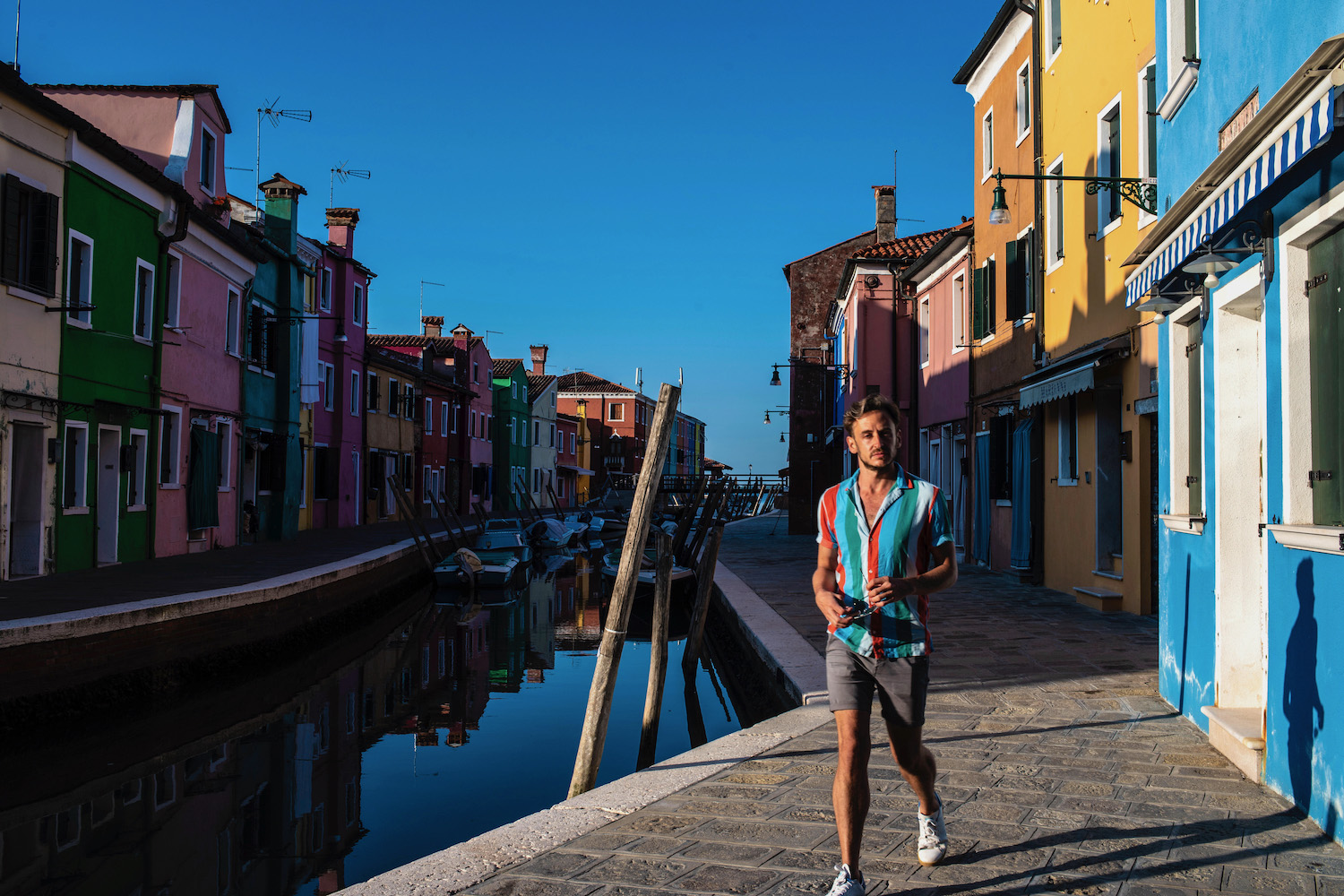
Those of you who’ve read my site for any length of time won’t be surprised that I prioritize Italy when I visit Europe. Plan to spend 2-3 weeks of your three months here. I usually like to zig-zag across the country, starting in Milan , before heading over to Venice and then traveling southward via Tuscany and Rome to Naples and the Puglia region—and, if you have time, Sicily and Sardinia .
Spain and Portugal
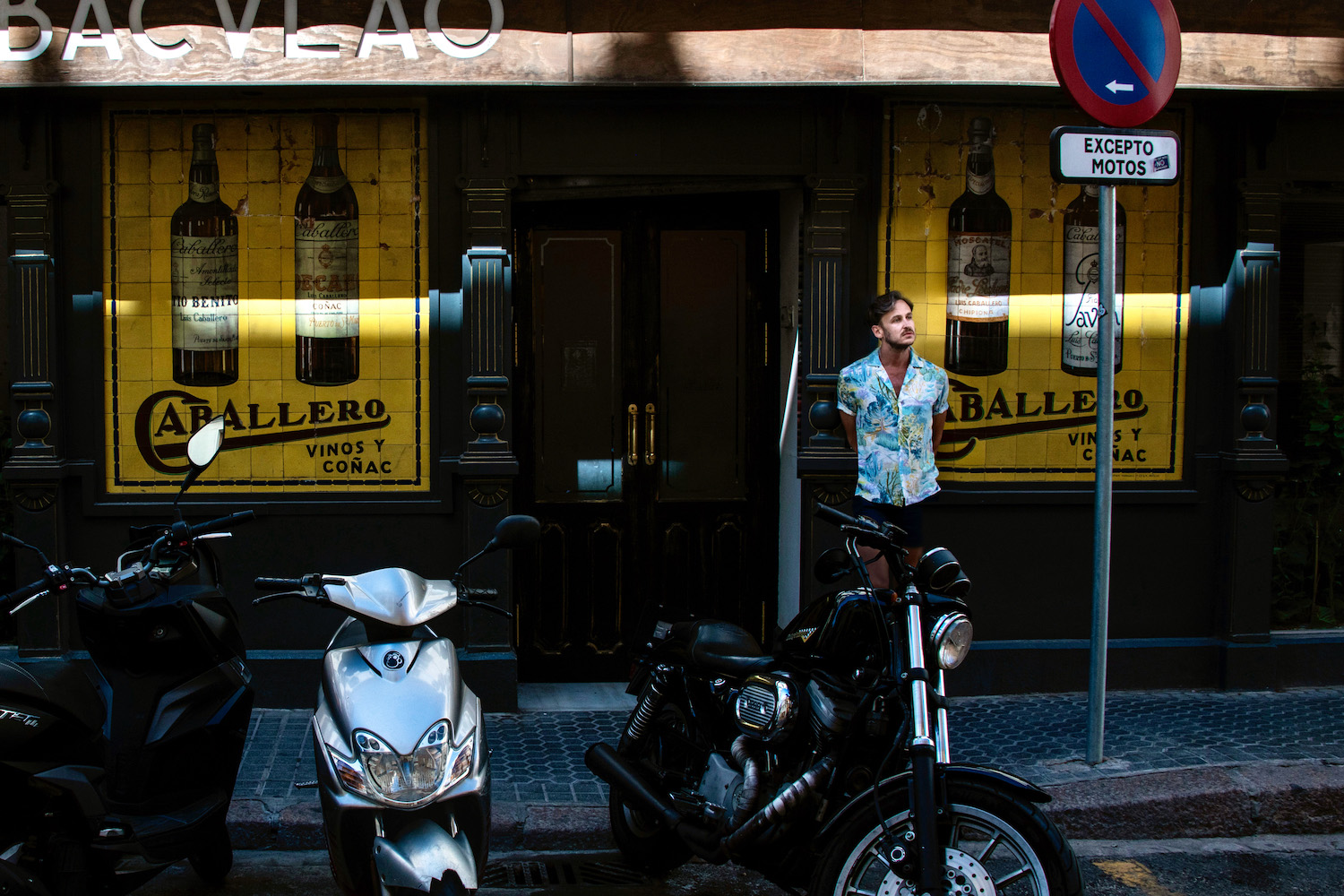
I like hot places, which is why the next stop on my 2 month Europe itinerary (though not necessarily chronologically) is the Iberian Peninsula. If you’re as warm-oriented as me, you’ll spend 2-3 weeks exploring Spain and Portugal , digging in not only to major cities like Madrid , Barcelona , Lisbon and Porto, but also destinations like the Algarve coast, the Basque Country and superlative secondary cities like Seville and Coimbra.
France and the Benelux countries
One of my favorite things about France is that it’s actually many destinations. While Nice and the French Riviera feel more like Italy or Spain, Paris can fit in (at least climactically) with cities in Belgium and the Netherlands like Amsterdam , Brussels , Antwerp and Utrecht. Regions like Brittany and Normandy almost seem like they belong in the British Isles; in Colmar and especially Strasbourg; you could practically be in Germany.

Switzerland, Austria and Germany
Speaking of Germany, while I can’t say how much of your 2 months in Europe cost will come from the (primarily) German-speaking countries of Germany, Austria and Switzerland , I will say that you will get what you pay for in these notoriously expensive places. Whether you explore Alp-adjacent cities like Salzburg, Munich and Zermatt , stick to Germany’s North Sea coast near Hamburg or frolic on the shores of Lake Geneva in western Switzerland, you’re sure to say “Ja!” to adventures in this cozy quarter of Europe.
Scandinavia
The Nordic countries of Finland, Sweden , Denmark, Norway and Iceland are the coldest and most expensive in Europe, but are also home to some of the continent’s most breathtaking scenery. Whether you road trip around Iceland in the middle of winter under the Northern Lights, hang out around the Arctic Circle in Norway or Sweden amid the “Midnight Sun” phenomenon or simply explore superlative capital cities like Stockholm and Copenhagen, you’ll definitely leave impressed.
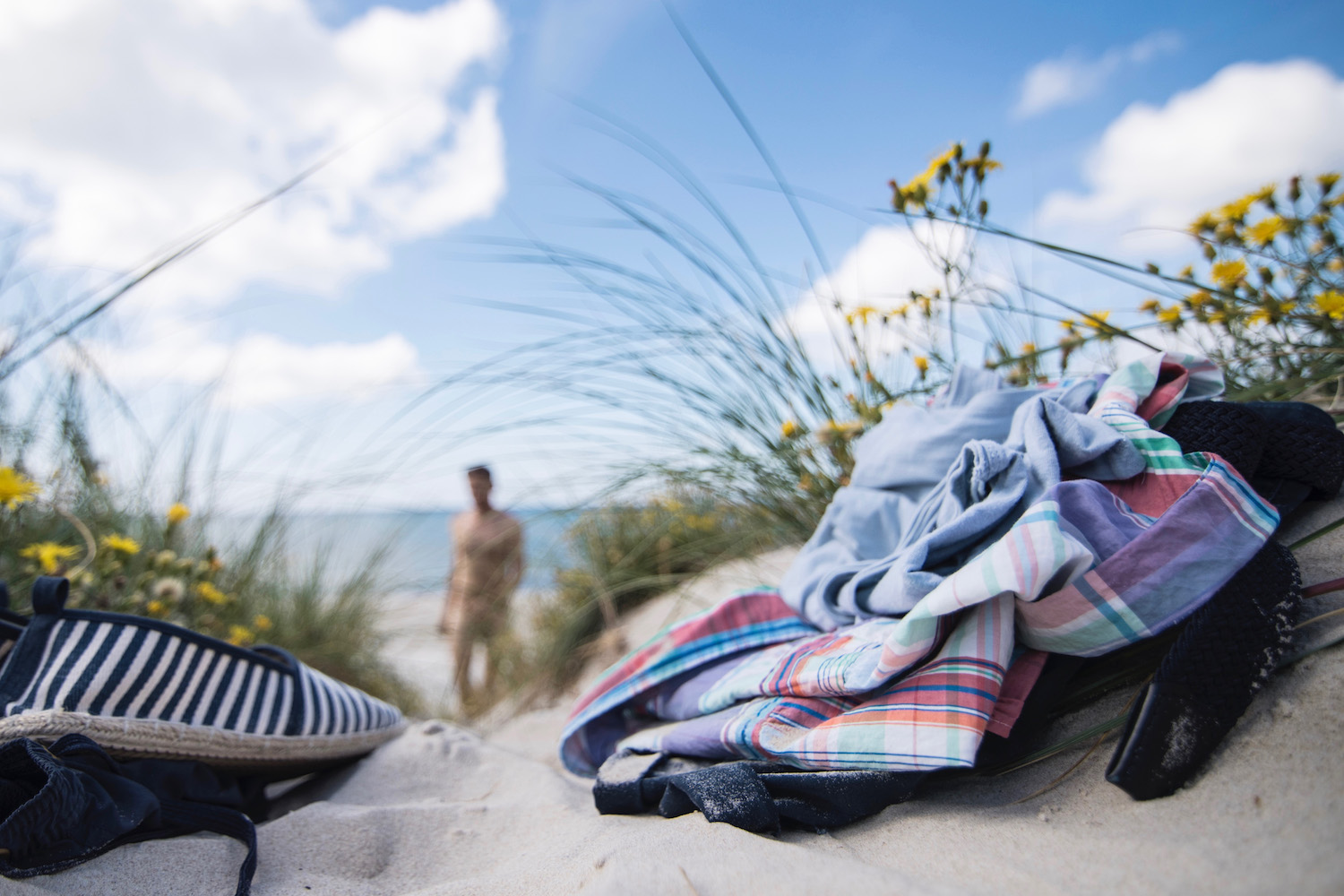
The Baltic States
I only made the mistake of referring to the Baltic States as “Eastern Europe” one time. “It’s Northern Europe,” the kind Latvian I said it to correcting me, a distinction that played itself out as I explored both her native Latvia , as well as the neighboring countries of Lithuania and Estonia . Indeed, the Baltics are something of a bridge between Scandinavia and the former Eastern bloc, with storybook cities surrounded by Soviet-style apartments, and a culture define as much by the Baltic Sea to the north as the dark empire that once loomed to the east.
Greece and the Balkans
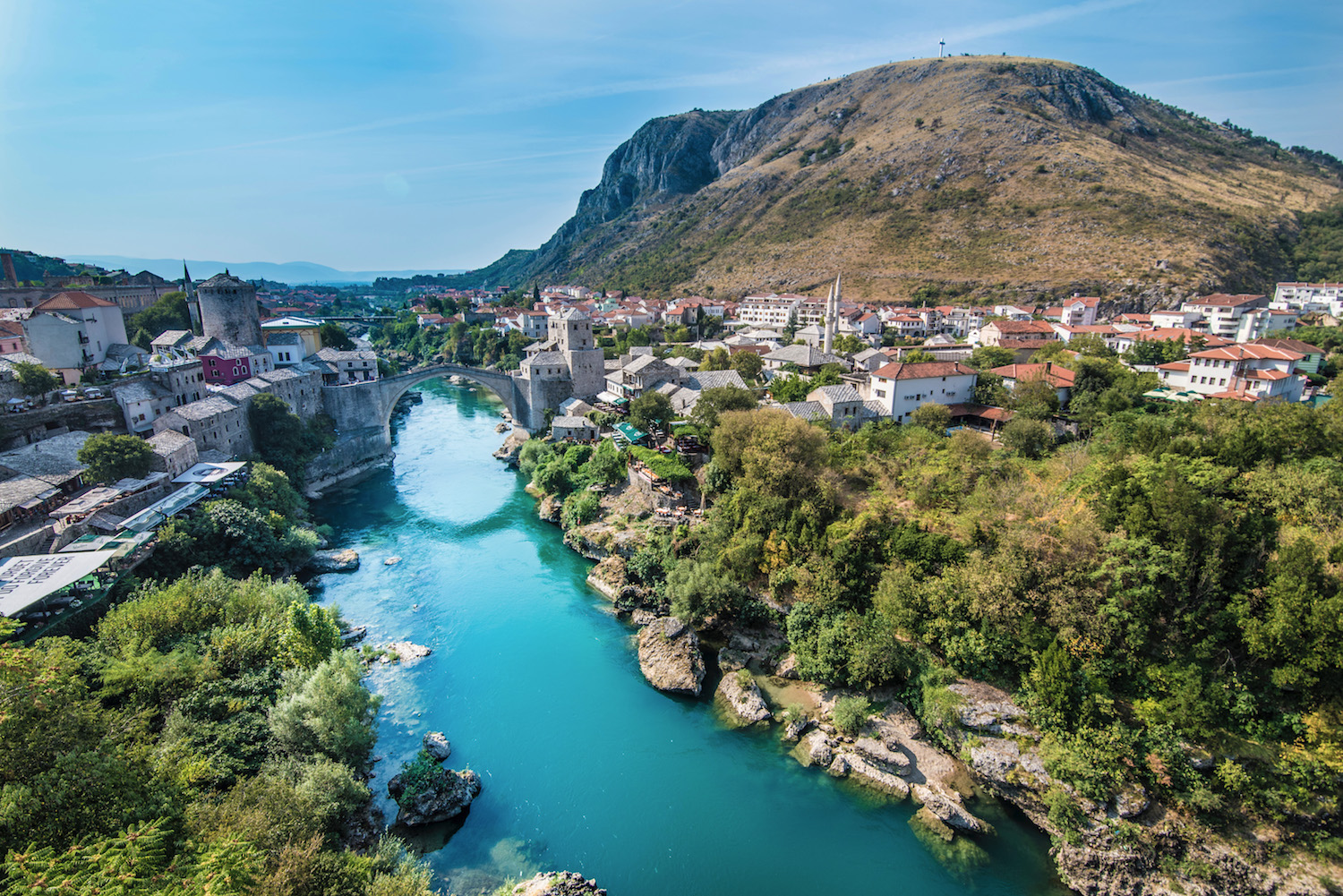
Another great place for sun on your 2 month Europe trip itinerary is Southeastern Europe: Greece and the Balkan countries (and Turkey , if you consider it part of Europe—I do). While I love Greek islands like Mykonos and Santorini, it’s no secret that beaches like Turkey’s Oludeniz and along Croatia’s Dalmatian Coast are less crowded. Likewise, you’ll see just as much history in Istanbul , Belgrade or Sarajevo as you will in Athens.
The British Isles

Brits probably won’t appreciate being lumped in with the Irish (and vice-versa), but hey: I don’t want to make my readers sit through 5,000 words. Indeed, my favorite parts of Ireland and the UK are the Celtic ones, whether I’m road tripping along Ireland’s Wild Atlantic Way , or taking side trips from Edinburgh and Glasgow , Scotland to places like the Isle of Skye and Loch Ness. England is amazing, of course, although I’m the first to admit I haven’t spent nearly enough time there during my “adult” travel life.
The Caucasus
As is the case with Turkey, The Caucasus even being part of Europe is up for debate. Still, assuming you have at least 6 weeks in Europe (and ideally longer), countries such as Georgia , Armenia and Azerbaijan are absolutely worth visiting. Personally, Georgia is my favorite of these, from cozy Tbilisi to the mountain town of Kazbegi and its stunning scenery. However, Armenia’s monasteries and the Caspian vibe of Baku , Azerbaijan are nothing to shake a stick at.

For the majority of travelers, Eastern Europe (with the exception of cities like Prague and Budapest) is separate from “Europe” (which is to say Western Europe) as a travel destination. This is especially the case for Russia , which even before Vladimir Putin’s invasion of Ukraine required a cumbersome visa to enter. Accordingly, I’d probably recommend considering this part of Europe separately from your core two months in Europe.
Is 2 Months in Europe Enough?
Over the past few years, travelers have emailed me about planning trips that range from a 6 week Europe itinerary all the way up to 3 months in Europe. And they’ve told me that this page (and previous iterations of it) have helped them put together itineraries for trips of virtually all lengths. While I’ve obviously optimized my advice for travelers who have about two months, a lot of the information you find here is evergreen.
On the other hand, if you want to comprehensively explore the continent, a 2 months in Europe itinerary is really the minimum amount of time you’ll need to devote. Europe is the size of the continental US, but is much more densely populated and features a much richer cultural tapestry as well. In fact, if you really want to see “all” of Europe, you’ll need closer to half a year here; two months simply affords you a compelling (but not complete) cross-section.
Other FAQ About Spending 2 Months in Europe
How much does it cost to travel europe for 2 months.
The minimum amount of money you can expect to spend during your 2 month Europe itinerary (not including) flights is 6,000 USD. This assumes that your food, accommodation and transport within the continent will cost no less than 100 USD per person, per day.
Do you need a visa to stay in Europe for 2 months?
If you have a US, UK, Australia or New Zealand passport, you don’t need a visa to stay in Europe if you plan to stay less than 90 days. However, there are a couple of important caveats. First, if you’ve already stayed more than 30 out of the previous 180 days, you won’t be able to stay the whole 60 days, as visa-free travel in Europe is only permitted for up to 90 out of every 180-day period. Secondly, starting in 2024, you will need to avail Europe’s nascent ETIAS travel authorization in order to enter the Schengen area.
What is the best month to see Europe?
Europe is a fantastic destination any time of year, though you should keep some things in mind. First, while the summer months of July and August are hot, sunny and lots of fun, they’re also the busiest and most expensive. This is especially the case in August, when virtually the entire country of France is on vacation. Secondly, while winter can be less crowded outside of ski destinations, it’s extremely cold, especially if you’re from a warmer country and aren’t used to it. If you want to balance nice weather with light crowds, “shoulder” months like April, May, September and October are a perfect time to visit Europe.
The Bottom Line
How’s your 2 month Europe itinerary looking? Although planning a Europe trip is a process, I hope you’ve made significant progress toward a plan you can execute. Some of you will spend your time touring European capitals, or popular regions such as Italy’s Tuscany , Portugal’s Algarve or the Swiss Alps. Others will take a more unique approach, be that hunkering down in or or two countries, or making a true marathon across the continent, from one end clear over to another. Want personalized help putting your trip together? I do hope you’ll consider hiring me as your Travel Coach!

Subscribe to email updates!
Words, images and design ©2009-2024 Robert Schrader, All rights reserved. Read Privacy Policy or view sitemap .

Over 20 Bucket List Itineraries for 2 Months in Europe
Europe is a wonderful continent to explore and offers a wide variety of experiences. From beautiful mountain views, to amazing historical architecture, picture-perfect beaches and a variety of unique cultures Europe has something for everyone. So what if you have a little extra time to explore – where should you go? Enjoy our snap shot for places to visit when you have 2 months to explore.
This article is big, need to save it and come back later? If so … pin one of these:

2 Months through Central Europe

Germany, Belgium and Luxembourg – 2 month itinerary
Germany, Belgium and Luxembourg make for an exciting two month itinerary. With its vibrant cities, stunning countryside, fascinating history and diverse culture, this trio of countries is the perfect destination for anyone looking to explore Europe.
Start your trip in Bavaria in Germany for a few weeks by exploring the country’s many highlights. Spend 2-3 days in Munich exploring the old town gems like Marienplatz, Residenz, Odeonsplatz, and the City Hall.
Then enjoy a Romantic road, check off Neuschwanstein Castle, and Fussen.
After a few days there, stop in Nuremberg and visit its historic landmarks and churches. Continue on to Frankfurt for some shopping and explore the city’s world-famous Rhine River walkway. When you’re finished taking in the sights and sounds of Germany, hop over to Belgium for a few days.
There are lots of places to visit in Belgium , and you can keep Brussels as a base to explore more of the country and beyond. Spend a few days exploring Brussels and its highlights like the Grand Palace, Comic Street and the Atomium.
Visit the picturesque canals of Bruges and be sure to sample some Belgium’s famous chocolates while you’re there! Add stops in charming cities like Antwerp, Ghent and Waterloo for a well rounded experience in Belgium.
You can also cycle through the Ardennes Forest if you like an adventure add-on to your trip! Next, make your way to Luxembourg. You can visit the Vianden Castle, one of Europe’s best-preserved mediaeval castles.
Make sure to wander the cobblestoned streets of Luxembourg City and check out some of its unique monuments such as the Casemates.
End your two month adventure with an unforgettable visit to the Moselle Valley in eastern Luxembourg. Take in the breathtaking views of vineyard covered hills and sample some of the best German wines in this beautiful region before returning home.
By Stephanie from Bey Of Travel
Fitz5 additional notes: I would consider adding a week in Cologne (and visit or stay at Pantasia Land ) with side stops to Hiedelberg and Strasbourg or finish the trip in Strasbourg. Trier and Koblenz are other German cities worth a stop. Hiedelberg, Stasbourg, Trier, & Koblenz can all make wonderful day trips from a longer stay in Frankfort.
An additional extension may be made by adding Amsterdam (or Utrecht). You can also start your trip in either Zurich Switzerland or Vienna Austria. The majority of these routes are well served by trains but you may want an occasional car rental to explore outside the cities.
Summary of 2 Months through Central Europe
Munich -> Frankfurt -> Cologne -> Brussels -> Bruges -> Luxemburg 1-2 weeks each stop or
or Munich (2 weeks for day trips) -> Frankfurt (2 weeks for day trips) -> Cologne (3 days) -> Brussels (1 week) -> Bruges (1 week) -> Luxemburg (3 days) -> Strasbourg (3 days)
or Munich (1 weeks for day trips) -> Frankfurt (2 weeks for day trips) -> Cologne (3 days) -> Brussels (1 week) -> Bruges (1 week) -> Luxemburg (3 days) -> Strasbourg (3 days)
or Vienna or Zurich (1 week) -> Munich (5 days) -> Frankfort (3 days) -> Cologne (3 days) -> Amsterdam (or Utrecht) (1 week) -> Bruges (4 days) -> Brussels (3 days) -> Luxembourg (3 days) -> Strasbourg (3 days)
You could also start in Vienna and Fly out of Zurich.
Fitz5 Central Europe Itinerary
We took a similar tour to visit some of our higher wish list cities in Europe Fall of 2023.
Our Itinerary was
Oslo (4 days) -> Flam (3 days) -> Oslo (1 day) -> Paris (1 week) -> Bruges (3 days) -> Utrecht (1 week) -> Berlin (3 days)
Our Original Itinerary was
Berlin (2 days) -> Prague, via train (5 days) -> Vienna via train (5 days) -> Zurich (5 days) -> Paris (1 week) -> Bruges (5 days) -> Utrecht (1 week) -> Berlin (3 days)

Europe by Bus
One of the best budget-friendly ways to explore western Europe is by using its extensive coach service. FlixBus operates in Germany, Switzerland and France, connecting cities like Hamburg and Berlin to Munich and Nuremberg, then spanning across to Basel and Zurich in Switzerland, and voyaging into a number of other French cities like Strasbourg and Paris.
Begin your two-month itinerary right in the north of Germany (you could even pop into Denmark if you’d like!). The city of Hamburg has lots of urban attractions, including catching a concert at Elbphilharmonie Hamburg and learning about local history at the Museum for Hamburg History.
Take a bus (3 hours) to Berlin, Germany’s buzzing capital. While Berlin comes alive in the summer, it’s also ideal as a winter city break – there’s always something going on here! Highlights include its many museums (the DDR Museum is a particular favorite), seeing the Berliner Dom and strolling through the Tiergarten. It’s a buzzing, pulsating city and there’s always a lot going on!
Take a bus further south, stopping in cities along the way before reaching Munich, the capital of Bavaria. While this city’s most popular during Oktoberfest, it’s beautiful around the year, with Marienplatz being at its centre.
Cross over into Switzerland, visiting major cities like Bern and Zurich. You could even do some side trips to beautiful destinations like Interlaken or the vast mountain of Matterhorn!
In France, check out the Medieval city of Strasbourg – famous for its Christmas market but wonderful in the summer months too. It’s only 3 hours on Flixbus from Basel in Switzerland. Then, head to La Belle Paris, France’s capital and one of the most romantic cities in the world. From here, you can take a bus down to the Spanish border, seeing cities like Bordeaux or Toulouse, or spend some time seeing the D-Day beaches and ancient sites of Normandy in Northern France.
By Claire from Europe in Winter
Fitz5 additional notes: This is a well rounded trip that could be extended at the end with some visits along the French Riviera or by starting in Copenhagen. You could also start in Belgium and add Amsterdam (or Utrecht) – but I’m not able to say if the additions would be serviced by the same bus.
2 Months in Europe via Flixbus Summary
Hamburg -> Berlin -> Munich -> Zurich -> Bern -> Strasbourg -> Paris -> Normandy -> Bordeaux -> Toulouse
Germany & Poland
A captivating two-month journey through the historic cities and enchanting landscapes of Germany and Poland can be amazing, done by utilizing both car and rail transportation. You’ll have the flexibility to explore each destination at your leisure while taking in the breathtaking scenery along the way.
Begin your adventure in Cologne, Germany, where the iconic Cologne Cathedral dominates the city skyline. After exploring the city’s rich history, board a train to Wiesbaden, a charming spa town in the Rhine River Valley. Take your time to stroll through the elegant streets, and be sure to visit the opulent Kurhaus and the impressive Biebrich Palace, where green open space is abundant next to the Rhine River
From Wiesbaden, rent a car and drive along the scenic Rhine River Valley, stopping to admire the picturesque towns, vineyards, and historic castles that dot the landscape. Continue south to Munich, the vibrant capital of Bavaria, where you can experience traditional German charm, visit the Nymphenburg Palace, and enjoy a stein of beer at the Hofbräuhaus.
Next, head north to Nuremberg, delving into the city’s medieval history at the Kaiserburg Castle and exploring the Old Town.
Afterward, make your way to Berlin, Germany’s bustling capital city. Immerse yourself in history at the Brandenburg Gate, the Berlin Wall Memorial, and Checkpoint Charlie, then indulge in the city’s vibrant arts scene by visiting the East Side Gallery or attending a performance at the Berlin Philharmonic.
Cross the border into Poland and begin exploring in Wrocław, a city known for its picturesque market square and charming gnomes scattered throughout the town. From Wrocław, continue to Kraków, a city steeped in history and culture. Visit the Royal Wawel Castle, explore the Jewish Quarter of Kazimierz, and head to the Auschwitz-Birkenau concentration camp .
Next, you can go south to Zakopane, a beautiful mountain resort nestled in the Tatra Mountains. There you can enjoy hiking, skiing, or simply taking in the breathtaking views. Then, make your way north to Warsaw, Poland’s capital city and explore the restored Old Town, learn about the city’s turbulent history at the Warsaw Uprising Museum, and relax in the Łazienki Park.
Continue northeast to Białystok, where you can visit the Bialowieza National Park nearby. Finally, end your journey in the coastal cities of Gdańsk, Sopot, and Gdynia. Marvel at Gdańsk’s colorful architecture, relax on Sopot’s sandy beaches, and visit the famous Gdańsk Shipyard, which played a significant role in the fall of communism in Poland.
This two-month itinerary offers a unique blend of history, culture, and natural beauty, creating an unforgettable European adventure through Germany and Poland.
From Travels in Poland
Fitz5 Additions: This trip could also be done by starting in Zurich ->Munich -> Nuremburg -> Wiesbaden -> Cologne then Berlin or if you’re flight lands in Paris … -> Brussels -> Cologne or take the overnight train from Paris to Zurich to start.
Germany and Poland 2 month Itinerary Summary
Cologne -> Wiesbaden -> Munich -> Nuremburg -> Berlin -> Wroclaw -> Zakopane -> Bialystok -> Gdansk

Exploring Brittany in France
A camping trip in Brittany, France, is an ideal way to explore this beautiful region, with its picturesque countryside, stunning coastline, and rich cultural heritage.
It is best to get around France by car to still have the flexibility to stop and go whenever you feel like it. However, France also has decent train and long-distance bus connections, allowing you to explore the main parts of Brittany by public transport.
Week 1-2: Start your journey in Rennes, the capital of Brittany, and explore its historic old town, lively markets, and vibrant cultural scene. From here, head to the north coast and spend a few days in the charming seaside town of Saint-Malo. Stroll along the historic forts, visit the local aquarium, and indulge in some delicious seafood and other local specialties from Brittany .
Week 3-4: Next, travel to the Pink Granite Coast, a scenic stretch of coastline known for its unique rock formations. Stay in one of the campsites near Perros-Guirec and take a boat trip to see the stunning cliffs and islands of the nearby Sept-Îles. Boat trips may only be possible during the summer as the sea can get quite rough in this part of France.
Week 5-6: From there, drive south to the Gulf of Morbihan, a beautiful inland sea dotted with islands and surrounded by lush green countryside. Base yourself in the town of Vannes and take day trips to explore the islands of Île-aux-Moines and Île d’Arz.
Week 7-8: For the final leg of your trip, head to the southern coast and explore the rugged cliffs and sandy beaches of Quiberon Peninsula. Stay in a campsite near the town of Quiberon and take a day trip to the nearby Belle-Île-en-Mer, a beautiful island with stunning beaches and scenic coastal trails.
Victoria from Guide your Travel
Brittany Itinerary for 2 months
Rennes -> Saint-Malo -> Perros-Guirec -> Vannes -> Quiberon
2 Month Itineraries for the UK & Ireland

60 Days in the UK and Ireland
Travelling through the four countries which make up the United Kingdom and the island of Ireland provides for a great mix of cosmopolitan cities, pretty villages, countryside and historic castles and sites. Even if you have two months you will have to pick and choose where to go.
London is a great place to start and end your trip since it has good flight connections to all over the world. You can easily spend a week in London and it is a good base for daytrips to Oxford and Stonehenge.
From London decide whether you want to travel by train to the Roman city of York and the University town of Durham. Or for a more rural experience visit the Peak District and Lake District. Both areas can be visited by bus but it is better to have a car.
Continuing north across to Scotland make Edinburgh your first stop. After spending a couple of days exploring the castles and museums, get the train to Glasgow. To explore the highlands and Scottish islands having a car is the most convenient but it is also possible to do it by bus – it just takes a bit more planning. One of the places with a very remote feel which is also fairly easy to get to through a combination of train and ferry is the Isle of Vatersay and Barra.
Back on the mainland make your way to Cairnryan, south of Glasgow, for the ferry to Northern Ireland. Visit the Titantic shipyard in Belfast before travelling to Derry by bus for a better understanding of the troubled recent history of this part of the UK.
The next stop is Dublin with its bars and the Guinness brewery tour. Either use it as a base for daytrips to the Cliffs of Moher and Ring of Kerry or travel further south to Cork before getting the ferry across to Wales. Stop by the beaches in Pembrokeshire and Gower by bus before travelling back to London from Swansea by train. If you haven’t used your full 2 months yet stop by Bath and the pretty villages in the Cotswold on the way.
Contribution and photo by Scotland Less Explored
2 Months in the UK & Ireland Itinerary
London -> York -> Edinburgh -> Glasgow -> Cairnryan -> Belfast -> Derry -> Cliffs of Moher -> Ring of Kerry -> Dublin
Alternative Itineraries for the UK (England, Scotland) and Ireland
There are many ways to spend an amazing 2 months in the UK. We’ve taken 2 extended trips to the area the first we spent 3 weeks in Killorglin Ireland near Killarney with 3 weeks in the Ancient East near Hook Head Peninsula and The Copper Coast.
Our second trip was focused on exploring Scotland and looked like this:
London -> Carlisle overnight -> Castle South of Glasgow (5 nights) -> Stirling Area (3 nights) -> Highlands (3 weeks) -> Skye (3 nights) -> South Uist (1 week) -> Fort William (overnight) -> Carlisle (overnight) -> Canal Boat (5 days) -> Oxford (3 days) -> London (3 days)
Other 2 month Itineraries for England, Scotland, Northern Ireland, Ireland and Wales
Here are some other ideas for 60 day Itineraries for the UK including England, Scotland & Ireland. This below itinerary has a lot packed into a small amount of time. I’ve listed the minimum amount of time I would stay at each spot. I’ve also crammed it with several unique experiences. However, it’s really a lot for one trip so you may want to drop several of these recommendations.
Ireland arrive in Dublin (3 days) -> Waterford (4 days) explore the Copper Coast, Kilkenny, New Ross and Hook Head -> Kinsale (2 days) -> Killarney (5 days) explore the Ring of Kerry and Dingle Peninsula -> Galway (1 night) ->
Northern Ireland : Derry (2 nights) -> Giants Causeway -> Belfast (3 days) ->
Scotland: Ferry to Cairnryan -> add in a cool castle stay here (3 days) -> Glasgow -> flight to Barra Island on the Outer Hebrides (2 days) this unique plane lands on a beach … or take a ferry from Oban -> Bus & Ferries to Stornoway (2 days) … this may be pretty tricky and need some extra research or plan for an additional overnight along the way -> Ullapool (1 night) -> Skye (3 nights) -> Inverness (2 nights) Loch Ness & Cullodem Moor …. I would take a longer break somewhere in this area just to rest and take in some of Scotland’s beautiful scenery (or maybe take the ferry from North Uist to Skye for a shorter route skipping to Ft. William) -> Aviemore (2 days) -> Fort William (3 days) day trips to Glencoe, Neptune’s Staircase, Ben Nevis and Glenfinnan Viaduct-> Edinburgh (3 days) day trips to see the Falkirk Wheel and Kelpies ->
England: Train to London or drive with a stop in York -> In England consider visits to Oxford, Cotswolds, taking a canal boat, or visiting the coast.
2 Month Itineraries for Northern Europe
Traveling to Northern Europe and Scandinavia is a journey that promises breathtaking landscapes, captivating cultures, and an unforgettable experience. The region is comprised of six countries – Iceland, Norway, Denmark, Finland, Sweden, and Estonia – each with its unique charm and allure. A 2 month trip would allow you to spend 10 days in each country. Or make some shorter breaks and others longer. Northern Europe is generally well supplied by trains and despite the difficult terrain, most cities are generally easy to navigate but other areas can be very remote.
This Itinerary starts in Estonia. Estonia, with its medieval architecture, cobbled streets, and charming cafes, is a hidden gem waiting to be discovered. The capital city of Tallinn is a UNESCO World Heritage Site and is home to some of the best-preserved medieval architecture in Europe.
From Estonia, take the ferry to Helsinki. Helsinki is a modern city set against a stunning backdrop of the sea and green parks. The city’s architecture is a mix of Art Nouveau, Neoclassical, and modern styles. It’s easy to get around on foot, taking in the city’s vibrant culture, museums, and markets. Getting outside of the city you will find why Finland is considered the land of a thousand lakes, with an abundance of pristine wilderness and wildlife.
From Helsinki take a flight to Lapland. Lapland is a large geographical area including Sweden, Norway and Finland and is located on the cusp of the Artic Circle. Lapland is known for Christmas Activities, Artic Landscapes, Northern Lights and Midnight Sun. This is the area where you may sleep in an ice hotel or rent an igloo with views of the Northern Lights. Go dogsledding or meet reindeer. Flights depart from Helsinki. Another option is to take the an overnight train from Helsinki (the Santa Clause Express) or a train from Stockholm. Or take the train up and take the next flight to Copenhagen for the next stops.
Copenhagen Denmark, is the epitome of Scandinavian chic, with its clean and minimalist design and architecture. The capital city of Copenhagen is a must-see destination with its colorful buildings, bustling waterfront, and world-class museums. Denmark is also know for Hygge which is basically a word for coziness that leads to the feeling of being content. Copenhagen is a wonderful choice for an extended stop and makes a fabulous choice for a place to rest. We spent a month in Copenhagen in 2017 and it’s one of our favorite cities. From Copenhagen, take a train to Sweden.
Sweden is a country of contrasts, with modern cities, idyllic countryside, and a rich cultural heritage. The capital city of Stockholm is known for its scenic beauty, vibrant nightlife, and world-renowned museums. Next stop – Norway.
Traveling to Norway promises an awe-inspiring experience with its dramatic fjords, towering mountains, dramatic coastlines and cascading waterfalls. Oslo is our first stop in Norway. Oslo is a very walkable city with many wonderful museums. After a few days in Oslo take the train to Flam for 2-3 days then Bergan. This train is considered by many to be the most scenic in the word. If you have more time to explore, consider a trip North to Tromso for a good chance to see the Northern lights – it will be a flight or a very long train ride. From Bergan take a flight to Iceland (likely with a layover in Oslo or Copenhagen).
In Iceland you’ll find a land of contrasts, from glaciers and volcanic landscapes to hot springs and geysers. Iceland is an outdoor enthusiast paradise. Consider taking a few days to make a loop around the island or just stay near Reykjavik to relax in the hot springs.
Northern Europe and Scandinavia are a traveler’s dream, offering a blend of stunning natural beauty, vibrant culture, and unique experiences. Each of the six countries has something special to offer, making it a region that deserves to be explored and appreciated.
Contributed by Fitz 5 on the Go
Northern Europe and Scandinavia 2 month Itinerary
Tallinn (5 days) -> Helsinki (5 days) -> Overnight Train to Lapland (4 days) -> Flight to Copenhagen (2 weeks) -> Train to Stockholm (5 days) -> Train to Oslo (5 days) -> Train to Flam (3 days) -> Train to Bergen (4 days) -> Flight to Iceland (10 days).
Map below does not exactly fit the itinerary due to flights

2 Months in Scandinavia and the Arctic Circle
Adventure travelers can spend two months in Europe exploring the northernmost regions of Europe above the Arctic Circle. This itinerary is perfect for those who love to hike, explore the outdoors, and generally take it slow as they move from one location to another. You’ll have time to really soak in the culture and natural beauty, without the hustle and bustle of large cities or overwhelming metropolises.
Start your journey in Finland, where you can cheaply fly into Rovaniemi. Then, make your way to Sweden, where you can explore the areas of Kiruna and Abisko. Next, head to Norway, where you can experience the far-north municipalities of Narvik and Tromso. To end your trip, take a flight to Svalbard, the world’s northernmost settlement that is continually inhabited.
This trip will require some slow travel, using various forms of transport. Some of these cities and areas are connected by trains, which are easy to use and convenient when available. Other times, you’ll probably need to take a series or busses or even fly to get between destinations. Try to be as flexible and patient as possible when traveling between these countries, and don’t be afraid to spend a night in a border town if it makes sense for your itinerary.
Be sure to spend at least part of a week in Abisko, Sweden, located in Lapland. You can stay at the government-run STF Abisko Turiststation , a hostel and hotel near Lake Torneträsk. From the Turiststation, you can watch the northern lights during the winter and enjoy plenty of cross country skiing and snowshoeing. During the summer months, the area is perfect for hiking and backpacking.
When you get into Norway, spend at least a few days exploring Tromso, the unofficial capital of the Arctic Circle. From there, spend a few days on the beautiful island of Senja, where the water is covered in “frozen smoke” during the winter.
Contributed by Amber from Amber Everywhere
2 Month Itineraries for the Mediterranean

2 Months in Portugal
Portugal is a unique little country to spend a couple of months getting to know in-depth. From the sunkissed Algarve coast to the charming cities of Lisbon, Porto, and Braga in the north. Start in Faro in central Algarve, explore the eastern cities of Tavira and Olhao which are lesser visited together with the beautiful Ria Formosa Natural Park. Take a boat tour to explore the barrier islands that protect this fragile bird habitat and go for a dip in the ocean from one of the golden beaches.
Continue toward the west, stop by Albufeira where you can try water sports like parasailing, kayaking, and snorkeling. Next, head to Benagil Cave and Carvoeiro where you find some of the most unique rock formations on the coast at Algar Seco. Other stops worth taking are Vilamoura, Portimao, and Alvor. On the far west, spend a few days in Lagos where you can walk from beach to beach, kayak, or go scuba diving. Some of the best boat tours in Lagos take you to the mesmerizing Ponta da Piedade and Sagres. Driving north towards Lisbon, stop by Évora to see the bone chapel and the Roman Ruins. Spend a few days in Lisbon before exploring the coast on the way to Porto. Must-see places include Cascais, Sintra’s fairytale castles, Ericeira, Nazaré for its big wave surf competition in the winter, and Aveiro for its canals. Porto deserves at least a week to see all the highlights and take in the energetic vibe with talented buskers on every corner. You can then drive through the Douro Valley a couple of days to taste the delightful wines before going up to one of the prettiest cities in Portugal, Braga.
Contributed by Linn Haglund of Amused by Algarve

2 Months in Andalusia Spain
Andalusia Spain is an amazing area to spend some time to explore. There are beautiful coastal towns, white washed villages, lovely food and a relaxed way of life. We spend 6 weeks in the Andalusia area in 2017 and share some of our tips here as well as fabulous options for Itineraries when visiting Andalusia Spain.
A basic 2 month Itinerary for Andalusia Spain may include:
Start in Lisbon (3 days) -> Lagos Portugal (5 days) -> Seville (5 days) -> Cordoba ( 5 days) -> Grenada (5 days) -> Ronda or another lovely white walled city like Olvera (5 days) -> Estepona or choose a city on the Costa de Sol (5 days) -> Gibraltar (2 days) -> Day trip to Morocco or stay overnight -> Cadiz (3 days)

90 Days in the French Riviera and Northern Italy
Craving a relaxing yet unforgettable travel experience through the South of France and into Northern Italy? This 2-month itinerary allows you to visit bustling cities, such as Toulouse and Milan, as well as picturesque coastal towns, like Cannes and Nice, while taking advantage of France and Italy’s convenient internal transportation network!
To start things off, begin your adventure in Toulouse. This city is commonly referred to as “the pink city” due to the pinkish hue of the bricks that many of the buildings are made out of. After spending some time here, ride the train to Montpellier and enjoy the city’s beautiful architecture, winding streets, and energetic atmosphere.
From Montpellier, ride the train for a couple of hours to Marseille, the second most populous city in France. This city is filled with medieval architecture and offers plenty of delicious food! Afterward, it’s a 2.5-hour train ride to Cannes, which is most well-known for hosting the Cannes International Film Festival and home to some of France’s most beautiful beaches.
Next, take a short train ride to the chic coastal town of Nice. Here, you’ll be able to explore the Old Town with its quaint cafes or relax at one of its many beaches. From Nice, you can either do a quick excursion to Monaco or opt to immerse yourself in the land of the rich and famous for a few days!
After that, ride the train to Turin, which has an abundance of churches, theaters, and gardens to keep you entertained for weeks! Finally, cap off your two-month trip in Milan. The city offers a great selection of art galleries, endless high-end shopping opportunities, and of course, a chance to see the iconic Duomo in all its glory!
So, if looking for the ultimate experience, consider traveling through the south of France and Northern Italy region.
Contributed by Kristin of Global Travel Escapades

2 Months in Italy
Italy is an excellent place to visit any time of year, and navigating your way from the North to the South in a car is by far the best way to see the authentic Italian countryside. The only warning is that some major cities, such as Rome, only allow you to drive or park in the city with a permit. No need to worry; this won’t interrupt your trip because most hotels have a shuttle service to run to and from the city centre.
Start in Milan, where you will take a week to see the major sites before heading to the Lake Como region. You can stay the week in Como or treat yourself to pensione or air bnb’s in one of the little towns up the coast towards Menaggio. After your time in this part of Italy, you will drive to Verona, where you will the week exploring one of the most romantic cities in Italy (from here you can explore the Dolomites).
Next, you are off to Venice, where you will park your car at the carpark, catch a ferry to your accommodation, and spend a week walking around the most magical part of Northern Italy before getting in the car and moving onto Florence for the week.
Your next week will be spent in Rome before heading to Naples and the Amalfi coast before heading to Southern Italy. Finally, your last two weeks will be driving through Calabria (staying one night or two in this regent is highly recommended) and onto Taormina, Sicily, where you can sit back and relax and enjoy the last of your European vacation.
Paula from Truly Expat

Other Options for 2 Months in Italy
Italy is a country that is filled with wonder, beauty, and culture. It is a place that offers something for everyone and every interest. If you are planning a trip to Italy, then this 2-month itinerary will help you to explore the highlights of this country. From the romantic canals of Venice to the stunning views of Lake Como, there are so many places to visit and things to do in Italy that you will be spoiled for choice.
You can follow this 2-month itinerary by train or by car if flexibility is important.
Starting from Venice, you can explore the city’s beautiful architecture and marvel at the intricate canal network that makes it unique. Rialto, Doge’s Palace and St. Mark’s Basilica, but also mask painting and learning how to row a gondola are some of the best things to do in Venice with kids .
From there, head to Milan, the fashion capital of Italy, where you can indulge in some serious shopping and explore the city’s many museums and art galleries. Lake Como and Lake Garda are both breathtakingly beautiful, with clear blue waters and stunning views.
Florence, the birthplace of the Renaissance, is a city that is filled with art, culture, and history. The city is home to some of the most important and iconic works of art in the world, including Michelangelo’s David. Cinque Terre, a string of five picturesque fishing villages along the Italian Riviera, is a must-visit destination for anyone who loves nature and hiking.
Rome, the Eternal City, is a city that needs no introduction. From the Colosseum to the Vatican, there are so many iconic landmarks and attractions to see in Rome that you could spend weeks here and still not see everything. Pompeii, the ancient Roman city that was destroyed by the eruption of Mount Vesuvius in AD 79, is a fascinating archaeological site that gives us a glimpse into life in ancient Rome.
The Amalfi Coast is a stunning stretch of coastline that is famous for its picturesque towns, beautiful beaches, and turquoise waters. Enjoy a limoncello in Amalfi and swim in Positano when exploring the Amalfi coast.
Matera, a city in southern Italy, is known for its ancient cave dwellings that were inhabited by humans for thousands of years. Puglia, a region in southern Italy, is known for its stunning coastline, beautiful countryside, and delicious food.
Finally, you can visit San Marino, a tiny independent state that is located within Italy. This beautiful country is known for its stunning views, medieval architecture, and rich history. After exploring San Marino, you can make your way back to Venice, where you can end your trip with a gondola ride through the canals.
Thanks to World Wild Schooling

Road trip from Barcelona to Alicante by car
A road trip from Barcelona to Alicante is an excellent way to explore the beautiful Spanish Mediterranean coast. While the train reaches many cities and towns along the way, this itinerary is best done by car.
Start in Barcelona as it is a city with a rich cultural heritage and a bustling atmosphere. Visit the famous Park Güell and Sagrada Familia, as well as other world-renowned sights, legacy of architect Antoni Gaudí.
Don’t bother about Barcelona’s urban beaches though, as they are man-made and far less interesting than all the beaches and coves you’ll have the opportunity to explore as you travel south.
Several places you should include in your itinerary are Tarragona, a city known for its Roman amphitheater and impressive aqueduct; Peñiscola, one of the most charming towns in Spain and a Games of Thrones filming location; and Alcossebre, a completely off the tourist map that has a wonderful camping popular with the locals.
Castellon de la Plana should also be part of your itinerary. This is one of most underrated provincial capitals in Spain, but it actually came a long way in recent year and you should not miss it. Up next, check out Sagunto, a historic city with a beautiful castle and an ancient Roman theater.
Valencia is the second largest city on this itinerary and you should definitely spend a few days here. There are so many things to do in Valencia regardless of the season, but the one attraction you cannot not miss is the City of Arts and Sciences, a stunning complex of modern buildings designed by Santiago Calatrava.
From Valencia, head to Denia, a coastal town with a rich history and beautiful beaches. Then visit Calpe to admire its iconic rock formation and stunning coastline.
Finally, arrive in Alicante, a city known for its impressive castle, beautiful beaches, and lively nightlife.
By Valencia Revealed

2 Months in Eastern Europe
60 days from prague to budapest.
If you want a mix of backpacker-friendly destinations with some splurges along the way, consider a two month trip from Prague down to Budapest, with lots of fun stops along the way.
Spend a week and a half in Prague, known for its fairytale Old Town. The city is also famed for its thriving nightlife scene and its affordability—beer is usually considerably cheaper than water! Carve out time for day trips outside of the city, like to Sedlec Ossuary or Cesky Krumlov.
Jump on a bus to Nuremberg, Germany, which will take a little over three hours from Prague. The town is famous for its Nuremberg Castle and museums, many of which document the terrifying rise and fall of the Nazi party. For something a bit lighter, the town is famous for its magical Christmas markets if you’re visiting in December. Four days is the perfect amount of time to spend here.
Next up—head south to Munich via a one hour train. Plan to spend a week here, taking in the city’s old town, its famous bierhalls, and museums. It’s also an excellent launch pad for shorter day trips around Bavaria, like Neuschwanstein Castle or the chilling former concentration camp of Dachau. Of course, if you’re visiting in September, stop at Oktoberfest!
Take a two and a half hour bus ride to Salzburg, your home for the next five days. Here, you can learn about its most famous resident, Mozart, and even go on a Sound of Music tour. Make sure to take a daytrip to the charming city of Hallstatt in the Austrian Alps. There’s so many things to do in Hallstatt , from paddling out on the beautiful Lake Hallstatt to exploring its charming Old Town.
A three hour train ride will take you to Vienna, where you’ll stay for the next week and a half. Vienna is largely considered to be the culture capital of Europe and between its plentiful museums and incredible performing arts scene, there’s plenty to keep you busy.
End your trip by heading to Budapest, via a three hour bus ride. While the stops in Austria and Germany will be more on the pricey side, Budapest is incredibly affordable, with an amazing food and drink scene and so much history. Spend the rest of your time here, exploring its museums, enjoying its many thermal baths, and admiring the incredible architecture.
Contribution from Uprooted Traveler
Slovakia, Hungary and Austria
- Skip to primary navigation
- Skip to main content
- Skip to primary sidebar

A Europe Itinerary for 2 months in Europe: Your perfect itinerary for Europe
January 10, 2020 by Karen Turner 35 Comments
On my first trip to Europe, I made a lot of mistakes as I was trying to see many capital cities as possible in the shortest possible time. Halfway through my Europe trip, I was exhausted and I felt like I had barely seen any nature or small cities.
I’ve been very fortunate to have taken multiple European backpacking trips and I’ve been living in Europe for nearly three years now. I hope that I can help a bit with helping you create your perfect European itinerary that mixes capital cities with cultural centers and stunning nature to show you the best of Europe in two months! You’ll find a downloadable excel to help you plan your own European trip at the end!
- 0.0.1 What to know about this European itinerary
- 0.1 Start your Europe trip with three days in Berlin
- 0.2 Three days in Prague
- 0.3 Two days in Vienna
- 0.4 One day in Bratislava
- 0.5 Optional: Three days in Budapest
- 0.6 Optional stop: Two days in Villach, Austria to enjoy the Austrian Alps
- 0.7 More into smaller cities? Consider stopping off in Salzburg and Hallstatt instead of Villach
- 0.8 Two days in Venice
- 0.9 One day in Bologna
- 0.10 Three days in Florence
- 0.11 Day trip from Florence: One day in Tuscany
- 0.12 Four days in Rome
- 0.13 Two days in Torino (Turin), including red wine tastings or hiking
- 0.14 Two days in Provence (via Avignon)
- 0.15 Two days in Barcelona
- 0.16 Three days in Madrid
- 0.17 Two days in Seville
- 0.18 One day in Lagos
- 0.19 Three days in Lisbon
- 0.20 Two days in Porto
- 0.21 Four days in Paris
- 0.22 Day trip from Paris to Versailles
- 0.23 Two days in Brussels
- 0.24 One day in Bruges
- 0.25 Two days in Antwerp
- 0.26 Three days in Amsterdam
- 0.27 One day in Utrecht
- 0.28 One day in Cologne
- 0.29 Two days in Rhine Valley
- 0.30 End of your Europe Trip: One day in Berlin
- 0.31 Download your European Itinerary Excel
- 1 What did you think of this Europe itinerary?
What to know about this European itinerary
I’ve crafted this Europe itinerary to make the best use of a Eurail pass. I don’t work for Eurail, so I’ve crafted this itinerary to help you minimize costs on trains. The Eurail pass is not necessarily the best deal if you’re traveling for two months and spending more time within a country. It’s usually cheaper to buy tickets using from that country’s train system.
I crafted this itinerary to take advantage of the 10-15 days within two months Eurail pass. You’ll need to pay a bit out of pocket for some of the other train trips, but trust me on this, if you book the shorter trips yourself, you’ll end up saving a lot of money compared to the two month eurorail pass! I’ve noted where to utilize your Eurail pass for maximal cost benefit.
- Optional: Budapest
- Optional: Villach/Triglav
- Optional: Turin + Mountains
- Optional: Utrecht
- Rhine Valley

I’ve created a free downloadable European itinerary planning spreadsheet to help you plan your European itinerary, keep track of expenses, and see what you still need to book. You’ll find the link to this at the bottom!
Start your Europe trip with three days in Berlin

Why? Berlin is one of the cheapest cities to fly into in Europe. I ended up finding an amazing flight deal to Berlin multiple times! It’s cheaper to use Berlin as a base.
I recommend three days in Berlin . Besides being Germany’s capital, Berlin is rich in culture and has fantastic museums.
- Visit the Holocaust Memorial, which is free to visit.
- Take a free tour of German Parliament (Reichstag).
- Visit Museum Island to visit the Pergamon Museum and to see the Ishtar Gate, which was moved from Iraq.
- Wander around the trendy Kreuzberg to admire its markets and street art.
- Try your luck at Berlin’s infamous clubs (Berghain).
- Admire the stunning Brandenburger Tor.
You’ll find a number of affordable hostels and hotels in Berlin. I stayed at Wombat’s City Hostel in Berlin, a modern hostel that feels more like a hotel with a rooftop bar. Perfect for breaking the ice on a nice summer’s night!
Check hostel and hotel prices in Berlin now!
From Berlin, take the train to Prague. It’s worth using your Eurail pass for this journey. The journey will take about 4 and a half hours and you’ll find trains nearly every hour! This is a popular European train journey, so reserve ahead.
Three days in Prague

Prague is one of the most beautiful cities in Europe without question. For those on a budget, Prague is one of the best destinations in Europe as beer is cheaper than water, the almost every street is out of a postcard, and it’s possible to stay at a nice hotel for a fraction of the cost elsewhere.
- Tour Prague Castle, one of Europe’s most stunning castles.
- Take a photo at the John Lennon wall.
- Sip on beer with any of your meals. (It’s cheaper than water!)
- Admire the Astrological clock.
- Admire the Charles Bridge. (Best seen at sunrise without people!)
No matter the budget, you’ll find great hotel and hostel options in Prague. On my previous trip, I stayed at a chic design hotel for a fraction of the cost of a hotel elsewhere. A friend of mine stayed at Hostel One Miru and loved it!
Check hostel and hotel prices in Prague now!
The train journey from Prague to Vienna will take approximately four hours. I recommend using your Eurail pass for this trip and reserving your seat ahead.
Two days in Vienna

For culture and history, Vienna is the perfect stop on your European itinerary! You’ll find some of the most stunning museums in Europe, including the Habsburg residence and the Belvedere Palac e. Click for my tips for seeing Austria on a budget !
Even walking around Vienna’s historic center, which is immaculate and as pretty as a picture, is one of the most relaxing things to do for free. As a bibliophile, I was immediately drawn to the Austrian National Library, which is the library that I always dreamed of having.
- Admire the stunning Austrian National Library, which will make you feel like you’re in a fairy tale.
- Climb the St. Stephen’s Cathedral views.
- Tour the museums of the former Habsburg residence.
- Visit the Belvedere Palace to view Klimt’s masterpiece The Kiss.
I was recently in Vienna and stayed at Wombat City Hostel . My room was clean, modern, and quiet. I also enjoyed the lively bar downstairs, which made it easy to meet fellow travelers while traveling solo. For those looking for a cozy boutique hotel, consider booking Hotel Altstadt Vienna for free cake and friendly owners in a uniquely luxurious environment.
Check hostel and hotel prices in Vienna now!
It’s only one hour on the train or bus to Bratislava, so you can visit Bratislava on a day trip from Vienna or bring your bag in order to save a little money on your accommodation. Don’t use your Eurail pass here. It’s cheaper not to!
One day in Bratislava

If you’re looking for a taste of Eastern Europe and a way to get your budget ready for Paris, head to Bratislava! Bratislava is Slovakia’s capital. It’s picturesque, affordable, and full of charm. It’s only about an hour from Vienna to Bratislava (save your Eurail pass!), making it an easy trip although budget savvy travelers should take advantage of the affordable hostels in Bratislava that are half the price of hostels in Vienna.
- Admire the beautiful art nouveau Blue Church.
- Take in epic views from Bratislava Castle.
- Admire the beautiful historic city center.
Click for a complete guide to Bratislava written by a local, Karin!
From Bratislava, it’s around 3 hours by bus (Flixbus) or train to Budapest. If you’re looking to cut costs, consider taking a Flixbus between Bratislava and Budapest, otherwise, use your Eurail pass.
If you’re considering skipping ahead to leave Budapest and the Austrian Alps to give yourself five days elsewhere, you can take a long overnight train ride to Venice, Italy and/or take a budget flight from Vienna to Venice (if you prefer).
Optional: Three days in Budapest

Many European itineraries leave Budapest off because it’s a bit out of the way and I understand that if you end up editing this city stop out of your itinerary to head straight to Italy after Vienna, however, I hope that I can inspire you to visit Hungary’s spectacular capital.
Why leave Budapest on your itinerary? Unlike other European capitals, Budapest feels laid-back and lacks the crazy crowds that you’ll find in Berlin, Paris, and Prague.
This laid back feeling combined with Budapest’s electric atmosphere (with lots of innovation), affordable prices, and dazzling architecture make it easily a city that you’ll want to visit (and probably live in). I ended up coming here on my second European trip and I wish that I had included it in my original European itinerary!
You can find some beautiful accommodation in historic hotels around Budapest. My friends and I ended up splitting a cozy apartment in a beautiful historic building . Those looking for the ultimate luxury experience will be blown away by views at the Aria Hotel .
Check accommodation prices in Budapest now!
You can take a night train or a Flixbus from Budapest to Villach, which will take about eight hours. Alternatively, if you want to skip ahead to Venice (the next stop on the itinerary!), you might be able to find a good budget flight to Venice from Budapest and/or take a night train towards Venice. Use your Eurail pass if you decide to take the train.
Optional stop: Two days in Villach, Austria to enjoy the Austrian Alps

You’re probably wondering where is Villach and why!? Bear with me, but I’ve tried to break up this itinerary to minimize your overnight train journeys and to show you some of the most beautiful places in Europe. After a week (ish) of partying in major cities, the mountain air will feel incredible.
Villach Austria is located right on the Austrian-Slovenian border and it’s only thirty minutes from Triglav National Park in Slovenia. This stunning national park has incredible hiking and beautiful views of the mountains. I’d recommend 1-2 days here in case the weather isn’t in your favor. If you’re not into hiking, pass go and skip ahead to use these two days elsewhere although you’ll end up spending more time on a train.
Check hotels and hostels in Villach now!
From Villach, it’s a four-hour train right to Venice although it’s also possible to take a Flixbus if you’re looking to save your Eurail pass for later.
More into smaller cities? Consider stopping off in Salzburg and Hallstatt instead of Villach

Who can resist the charm of Salzburg ? Sound of Music lovers will enjoy it although it’s definitely possible to combine seeing Hallstatt with Salzburg if you have two days.
Salzburg has a very cozy city center that is perfect for wandering on foot. On my last trip to Salzburg, we stepped into an Austrian beer garden, admired views (shown above!) from the hills, and browsed the various dirndl shops. I definitely recommend stopping in one of the historic coffee houses for an Austrian coffee! Click to read my tips for Salzburg!
Two days in Venice

Who can resist Venice? Venice is where I had my first date with my husband ( really !) and it holds a special place in my heart. That said, it is very touristy and expensive. I recommend limiting your time in Venice to 1-2 days.
It might surprise some of you, but I get agoraphobia (crowd phobia) and Venice was very hard on me as many of the locations were so crowded that I felt that I was a sardine in a can. Venice is still worth visiting, but too many tourists crowding this sinking city is an issue as it’s priced out many residents.
Venice is still a delight to walk around although it’s so easy to get lost in the main city. Those looking for the ultimate luxury experience can stay in former palaces to explore old-world luxury.
Alternatively, budget travelers will find hostels in the historic center and affordable hotels on the outskirts of Venice in Mestre (only a bus ride away!)
Check prices for accommodation in Venice now!
From Venice to Bologna, you can take the high-speed train, which takes 1.5-2 hours. (There’s also slower trains.) It’s your choice if you want to use your Eurail pass, but I found the Italian trains affordable to book in advance without my Eurail pass.
One day in Bologna

Bologna is the foodie capital of Italy. Although most travelers skip ahead to Rome or Florence, you’re missing out on amazing, well-priced eats in this central Italian city that even Italians rave about. Bologna has the oldest university in Italy and despite the significant history in Bologna, it’s a young city at its heart due to the many students.
I loved climbing the medieval towers to take in the city, exploring the Roman ruins underneath the public library (I know!?), and eating the incredible food that Bologna has to offer.
You’ll find many well-priced hotels within the historic center, including hotels in historic buildings . For those on a budget, you’ll find many hostels as well as cheap hotel rooms walking distance from the city.
Check prices at hotels and hostels in Bologna now!
The train journey from Bologna from Florence will take just thirty minutes, so save your Eurail pass for a long train ride where it’s worth it.
Three days in Florence

Florence is truly one of Italy’s gems. As an art and history lover, I spent three idyllic days roaming the picturesque streets of Florence, admiring the Duomo every single time that I passed it, entering every church that I passed as many held museum-quality frescos, and wandering around Florence’s art museums.
Most notably, I said hello to David at the Accademia Gallery, admired Italy’s most stunning frescos at the Uffizi (with getting up early), and ate all the gelato. It’s hard not to be charmed by Florence.
While visiting the many museums in Florence, you’ll want to budget accordingly. I was able to save money by staying at a cozy hostel near the city center and walking everywhere. Those seeking a bit more luxury, you’ll find former palazzos-turned-hotels that won’t break the bank .
Check hotel and hostels prices in Florence now!
Day trip from Florence: One day in Tuscany

Anyone who loves Italy needs to get a taste of the Tuscan countryside. It’s very easy to take a day tour from Florence to Tuscany. I ended up taking a day trip out to the Tuscan countryside to sample Chianti wine, visit Tuscany’s most beautiful towns, and explore Siena.
I ended up making some fantastic friends on the tour and that day remains one of my favorite moments of my European backpacking trip.
The train from Florence to Rome takes about 1.5 hours although it’s also possible to take a cheaper bus, which will take about double the time (3 hours).
Four days in Rome

Can you visit Italy without visiting Rome? History and food lovers will be entranced by the history of Rome. I initially considered staying longer in Rome, but it wasn’t my favorite Italian city beyond the attractions due to the crowds in summer. Still, I tossed a coin in the Trevi Fountain and imagined myself in La Dolce Vita (with a gelato in hand) .
If you visit Rome, you must visit the Vatican to admire the Sistine Chapel and I recommend pre-booking your Vatican tickets as the lines can be sizable. (Note: Women must dress appropriately to get inside the Vatican.
I recommend wearing a long skirt and bringing a scarf to cover your shoulders with.) The lines at the Colosseum can also be very long in peak season, so pre-book your Colosseum tickets if possible. The Roman Forum is truly impressive and I spent a while geeking out about history.
Rome is quite large, so I encourage you to pay attention to the location when booking your hotel in Rome. I stayed at Yellow Hostel after transferring from another one. That said, I’d recommend avoiding the Termini area if possible although most hostels are in this area. Instead, stay in Trastevere , one of Rome’s most charming neighborhoods instead.
Check hotel and hostel prices in Rome now!
The train from Rome to Torino (Turin) is a bit longer (4 hours) and I’d recommend using your Eurail pass if you end up taking the high-speed train. I ended up missing my train and ended up finding out how much it cost last minute without the Eurail pass….
Two days in Torino (Turin), including red wine tastings or hiking

After the crowds in Florence and Rome, I wanted you to experience a stunning Italian city before you left Italy–and a day of quiet in nature.
Turin is the birthplace of Nutella and a beautiful city right on the way to France. I recommend stopping in Turin to taste some of the best chocolates in Italy and enjoy some wine from the world-famous Piedmont wine region at its source before leaving Italy.
- Click on how to take a day trip out to the Piedmont wine region.
- Click for tips on what to do in Turin.
Turin is at the foothills of the Alps, so if you’re itching for some more hiking, I recommend taking a day to enjoy the mountains, which are visible in the distance from Turin. As Turin is lesser-known, you’ll find affordable hotels in beautiful historic buildings as well as affordable hostels .
From Turin, take an overnight train or bus towards France! I personally struggled to sleep on the bunk that I reserved (for a bit extra) due to the train’s rocking motion, so I’m not sure it’s worth it to splurge on a bunk if you struggle to sleep on trains.
I recommend taking a bus as it may be direct as the train may not be direct (with a transfer in Lyon) depending on your destination in France. The journey should between about four to six hours. (It will be less time if you choose to go to Nice, which has a direct train connection with Turin.)
Two days in Provence (via Avignon)

Have you dreamed of fairytale hilltop villages and fields of lavender!? If you’ll be visiting Provence in spring and summer, you’re in luck. Even if you visit in winter, as my parents did, you’ll find stunning stone villages dating back to medieval times.
Getting around Provence without a car is doable although I’d recommend staying in Avignon , a beautiful city with a rich history. Click for advice for more information on the best things to do in Provence.
Avignon was historically where the Roman Catholic Church had its base and you can view the incredibly massive Papal Palace during one of your days in Provence. As Avignon is not a big backpacking destination, I recommend booking your accommodation in Avignon as early as possible as it’s a popular summer destination.
- Take a day trip to see the beautiful villages of Provence.
- Frolic in the lavender fields of Provence.
- Learn about the history of the Roman Catholic Church.
From Provence (Avignon), you can catch the TGV high-speed train to Barcelona. The journey will take about five hours and I recommend reserving your seat ahead as this train is popular (and expensive). Your Eurail pass is worth using here.
Two days in Barcelona

Who can resist the interesting architecture, tapas, and fantastic nightlife of Barcelona? I ended up switching this European itinerary to give you two days in Barcelona and three days in Madrid as I was so exhausted by this point in my trip that I wasn’t in a mood to party. (I’ve tried to build in down-time into this itinerary for this exact reason!) However, people looking to experience the nightlife of Barcelona will want to switch the days to give themselves more time in Barcelona.
I ended up really loving Gaudi’s fascinating architecture, so much so that I headed up to Park Guell and visited Casa Milà. Of course, you must visit the Sagrada Familia although the line is so long that I recommend prebooking tickets in order to skip the line. Otherwise, I enjoyed walking around the charming Gothic quarter to take in the medieval part of Barcelona.
As someone with friends from Barcelona, I strongly encourage you to not use Airbnb in Barcelona. Its impact has been very tough on residents who have been priced out of their own city as landlords evict people in order to put up tourists.
I stayed at Hostel One Ramblas , which I loved due to the fun atmosphere and friendly staff. You’ll find cozy boutique hotels on a budget as well as reasonable 4* hotels with some of the best views in Barcelona .
Check prices for hostels and hotels in Barcelona now!
To get from Barcelona to Madrid, you can take the high-speed train, which only takes 2.5 hours! I ended up using my Eurail pass for this journey as it was pricey otherwise.
Three days in Madrid

Madrid is one of my favorite European capitals and I can’t believe that I had almost crossed it off my list as everyone told me that it was boring. Between lounging in the Parque del Buen Retiro, admiring Bosch’s masterpieces at El Prado, and eating tapas, you’ll find something for everyone. Although Barcelona often is praised for its nightlife, Madrid has its own nightlife within the rock and roll bars in Malasaña.
Click for tips on visiting Madrid on a budget!
You’ll find a number of affordable accommodations in Madrid. The Hat is a great option for those on a budget. They also have one of the best views in Madrid. You’ll also find affordable rooms at a 4*-5* hotel if you book ahead.
Check hostel and hotel prices in Madrid now!
To get from Madrid to Seville, you can take the high-speed train, which will take about 2.5 hours. Once again, I used my Eurail pass, but this is a choice.
Two days in Seville

Seville is so nice to visit AFTER Barcelona and Madrid. I finally felt like I could relax once I was in Seville. The slow pace and stunning architecture made it a nice place to decompress.
The Alcázar is a palace dating back to Moorish times that will transport you instantly to another world. Even if you’re entranced by the tessellations within the patterned tiles/wood, you can imagine yourself on the Game of Thrones set.
Similarly, you can visit Plaza de España, one of the filming locations for Star Wars. Architecture lovers will love the modern Parasol while dance lovers will be fascinated by flamenco, which can still be seen at a number of local bars.
For a fraction of the price elsewhere, you can stay in hostels with insane perks like free dinners (like at the hostel that I stayed at). Alternatively, you can stay in boutique hotels in beautiful historic buildings .
Check hostel and hotel prices in Seville now!
Take the bus to Lagos from Sevill e . This is easy to book once you’re in Seville. There’s no train connection between Lagos and Seville.
One day in Lagos

Although Lagos was a bit too much of a party destination for me, most people that I know loved Lagos. The main thing to do in Lagos is to lay on the beaches, which you’ll find hidden among the rugged rock formations.
At night, everyone goes out to dance the whole night away at cool outdoor clubs. One day and one crazy night in Lagos were enough for me.
In summer, Lagos’ accommodation fills up, so be sure to book your accommodation early. Check the reputation of your hostel beforehand as I ended up staying at a party hostel by mistake, which was something that I didn’t enjoy. Check prices for hostels and hotels in Lagos now!
To get from Lagos to Lisbon, I took the bus as the train ride was actually longer and more expensive than the train. The journey will take about 3-4 hours.
Three days in Lisbon

For years, people have been saying that Lisbon is a hidden gem of Europe and I have to agree. People are increasingly discovering Portugal’s capital, which is full of charm.
Beyond getting lost in Lisbon’s beautiful streets, lined in colorful tiles, you’ll find castles dating back to Moorish times, lively nightlife, and fantastic museums telling the history of Portugal. Click for tips for visiting Lisbon!
Lisbon is notably affordable though tourism is starting to drive prices up. On my recent stopover with TAP Portugal, I ended up staying at Nest House , a boutique hostel located in the cozy Alameda neighborhood, which is a bit far away from the loudness of Barrio Alto.
As with Barcelona, I recommend staying at hotels rather than an Airbnb as Airbnb is starting to cause housing prices to skyrocket. You’ll find some beautiful boutique hotels in Lisbon !
Check prices for hostels and hotels in Lisbon now!
It couldn’t be easier to get from Lisbon to Porto. The train takes only 2.5 hours although you can also take the bus if you choose to save money on this journey.
Two days in Porto

Lisbon’s big sister has all the charm and half the crowds. Porto is full of historic buildings, some dating back to medieval times, beautiful bookstores, and fantastic wine.
Most people don’t realize that J.K. Rowling lived in Porto and it’s said that the Livraria Lello bookstore inspired her vision of Hogwarts. Lovers of food and alcohol will enjoy tasting port wine in the cellars along the river. Of course, a trip to Portugal is not complete with pastries although you’re sure to burn them off on the steep hills.
While in Porto, I stayed at Yes! Porto Hostel , a boutique hostel with amazingly friendly staff and a lovely rooftop overlooking the city. You’ll find numerous boutique hotels with innovative features. I recommend looking into Torel Avantgarde , a stunning design hotel with an edge.
Check prices for hostels and hotels in Porto now!
Porto has one of the best budget airports in Europe. Although you could, in theory, take a train from Porto to Paris, it will probably be cheaper to fly with one of the budget airlines from Porto to Paris. I paid about twenty euros for my budget flight. (I see a flight for 23 euros for this week with Transavia!)
I recommend flying into Orly rather than Charles de Gaulle as CDG is quite far away from Paris and Orly is far closer. The flight will take two hours and it’s quite easy to take the train to the Porto airport from the city.
Four days in Paris

Who can resist Paris? The French capital is a classic stop on every European itinerary and I’d recommend ensuring that you have four days in Paris as any less will force you to make hard decisions about what to do in Paris.
Beyond seeing the Eiffel Tower, touring the Louvre, strolling around Montmartre , taking in Paris’ covered passages , exploring Le Marais, eating all the crepes/macarons, and strolling along the Seine, you’ll find that four days is a great amount for a trip.
Hotels in Paris can get quite expensive, even for a basic room. I recommend booking in advance as possible, especially if traveling during spring or summer. Check hotels and hostels in Paris now!
Click for my perfect itinerary for four days in Paris
Day trip from Paris to Versailles

Versailles requires a whole day to itself. The former royal palace is over 721,182 square feet and you truly will understand why generations of tourists and French citizens alike say that you must visit Versailles.
I have to agree and I wish that I had included it in my first European trip. (I skipped it as I thought it was overrated.) After exploring its gardens and Marie Antoinette’s estate, I think that Versailles must be included on your European itinerary.
Click for tips on taking a day trip from Versailles from Paris!
To get from Paris to Brussels, you’ll have a couple of options. I’ve taken the Thalys, which only takes 1.5 hours although you can also take a slower and cheaper train that will take three hours. I recommend using your Eurail pass if you take the Thalys. Similarly, you can also take one of the budget bus journeys for as little as ten euros!
Two days in Brussels

Belgium’s capital is great for a taste of Belgium’s blend of cultures. People in Brussels tend to speak both French and Flemish, so you’ll see a mix of both styles of architecture in Brussels. You can click for my weekend guide to Brussels.
Beyond architecture, Brussels is one of the best destinations to visit in Europe as the Belgians have truly perfected the art of chocolate making. I went on a chocolate tour in Brussels and it was truly an great experience. The beer (the next day) is great.
Brussels can get quite expensive during peak summer. While doing my visa for France, my husband and I ended up visiting Brussels several times. We especially enjoyed Van Gogh Hostel for its atmosphere and central location. The previous time, we stayed in the charming Ixelles neighborhood in a charming boutique hotel .
Check hotels and hostels in Brussels.
To get from Brussels to Bruges, you just need to take the train. which costs less than fifteen euros! The journey is only one hour, so it’s quite easy to visit Bruges on your own.
One day in Bruges

Bruges (Brugge in Flemish) is straight out of a postcard. This charming Belgian city is perfect for a day trip from Brussels although I’d recommend staying the night to be able to stroll along the romantic canals of Bruges. Beyond charming architecture, Bruges is home to De Halve Maan brewery, which is a great stop for learning about Belgian beer. (I’ll be adding a lot about Bruges soon!)
Check hotels and hostels in Bruges.
To get from Bruges to Antwerp, you can take a bus or train, which will take about 1.5 hours. Save your Eurail pass as the Belgian trains are quite cheap.
Two days in Antwerp

I fell in love with Antwerpen (Antwerp) from my first trip to this charming Belgian city. Although many people skip Antwerp, its charm is fully there and you won’t find the insane crowds as you see within Bruges.
The Grote Markt cannot be missed although visiting the Plantin-Moretus Museum is a must for literature lovers. On my last trip, I enjoyed Antwerp’s cozy and quirky beer cafes.
Click to read more about what to do in Antwerp i n my one day guide.
To get from Antwerp to Amsterdam, you can take the train, which will take about an hour with the Thalys. It’s also possible to take the bus (Flixbus), which I’ve taken several times. The bus is cheaper, but it takes three hours.
Three days in Amsterdam

I’ve lived in Amsterdam for over two years and I can’t recommend less than three days in Amsterdam during your Europe trip. Amsterdam is a beautiful city, but it takes some time to enjoy its charms.
Beyond taking a canal cruise and exploring Amsterdam by bike (if you dare!), take some time to discover Amsterdam’s secret spots , including historic courtyards . Skip the tourist trap museums and spend your time outside of the Center to experience Amsterdam at its best (and cutest). (You can read an Instagram guide to Amsterdam here.)
Click for your perfect itinerary for Amsterdam.
In spring and summer, Amsterdam accommodation becomes expensive, so be sure to book your Amsterdam accommodation ASAP. If you’re trying to figure out where to stay in Amsterdam, click for my neighborhood guide to where to stay in Amsterdam to help you decide where is best for you!
From Amsterdam to Utrecht, it will only take you forty minutes on the Dutch trains. I recommend saving your Eurail pass if you’re unsure whether to use it.
One day in Utrecht

Utrecht is one of my favorite cities in the Netherlands. It’s also on the way down to Germany, so consider spending a day and a night in Utrecht to see what the Netherlands outside of Amsterdam. Utrecht is a stunning city with lower prices, two-story canals, and an inner-city dating back to medieval times. You’ll fall in love with Utrecht instantly, I promise.
Click for your itinerary for one day in Utrecht
Utrecht is considerably cheaper than Amsterdam, so use this as your chance to save money on your accommodation. Utrecht has a number of stylish hostels although I absolutely loved staying at Hotel Dom , a boutique hotel with incredible views.
Check prices for hotels and hostels in Utrecht now!
To get from Utrecht to Cologne, you can take the train or the bus. The journey should take about three hours with lots of picturesque Dutch countryside views.
One day in Cologne

Cologne is a charming German city with a Gothic cathedral that you’ll want to see. I especially recommend visiting Cologne in time for Carnival and to browse the Cologne Christmas market. Beyond these events, Cologne has some adorable neighborhoods and a beautiful riverwalk. (More about the riverwalk very soon…)
Check prices for hotels and hostels in Cologne now!
Two days in Rhine Valley

One last hurrah before you leave Europe! Head to Rhine Valley for some of the most beautiful castles in Germany and wine. Although you might associate Rhine Valley with river cruisers, you’ll find hostels within castles in Rhine Valley.
Take this last chance to enjoy European culture, architecture, wine as its best. For those interested in sports, Rhine Valley has some fantastic hiking and biking.
Click for what to do in Rhine Valley.
End of your Europe Trip: One day in Berlin
Didn’t get into Berghain? You got one last night in Europe to live it up. 😉
Download your European Itinerary Excel
I’ve created a free downloadable European itinerary planning spreadsheet to help you plan your European itinerary, keep track of expenses, and see what you still need to book.
I found the hardest part about planning my first European trip was figuring out what I had already booked–and what I hadn’t beyond the flight. I hope this excel helps you.
What did you think of this Europe itinerary?

About Karen Turner
New Yorker–born and raised. Currently living in the Hague, the Netherlands after stints in Paris and Amsterdam. Lover of travel, adventure, nature, city, dresses, and cats.
Reader Interactions
May 5, 2018 at 9:26 am
Wow! This is quite the post! I like how you picked big and small cities. Also, I’ve been so some of these places and would agree with you the amount of time to see each place. This is quite the task to put such a comprehensive itinerary – thank you for sharing!
May 5, 2018 at 9:43 am
Wow this itinerary covers amazing places! Definitely includes some places I still need to check off my list haha
May 5, 2018 at 11:03 am
what an epic post! Completely agree about Prague – I could have spent so many days photographing it! So many great suggestions, cannot wait to get exploring more of Europe – particularly Amsterdam, so lucky you lived there for two years, it’s been on my bucket list for so long!
June 11, 2018 at 10:46 am
Your 2 month itinerary is amazing and has helped me with my planning immensely!! We also wanted to include Poland Turkey Greece England and Switzerland as we have almost 3 months in Europe from NZ. We would really appreciate it if you could please help us include these countries in the itinerary you have done as I am struggling to economically route these extra countries into the existing itinerary- thanks Jan NZ
June 11, 2018 at 10:55 am
I’d see if you can add Turkey + Greece + Poland to a leg near the end where you work down from Poland through Eastern Europe then the Balkans down to Greece/Turkey. I think that might be a cool month.
I cut Switzerland out as it’s quite expensive to travel in. The UK is cool, but also expensive. It would be easy to add the UK to your travels in Paris or Amsterdam although you might find cheap flights there from other cities with Easyjet.
Hope that helps and you have a great trip!
June 11, 2018 at 11:43 am
Thanks for that Karen,so maybe start in Poland then go to Berlin from there carrying on through the route itinerary you have for the 2 months but deviating from Italy to Greece and from there to Turkey before going back to Italy to Continue the rest of the itinerary to France Spain etc??
July 4, 2018 at 9:27 am
Hi, I am looking at traveling in December/January by rail with our two kids aged 14 and 11. Will you still recommend your above route? I was looking at spending Christmas in Moscow , wanting to see a few xmas markets along the way.
July 4, 2018 at 10:25 am
If you think that your kids can handle the faster pace, maybe. Moscow isn’t close. Look up Cologne on my website for the christmas markets.
July 8, 2018 at 2:06 am
Thanks for the awesome blog post. I was wondering how you’re living in Europe currently. I have been fortunate enough to visit Europe a few times now and am currently trying to figure out how to move there. So far, I’m thinking grad school in Germany.
July 8, 2018 at 9:14 am
There’s an article about how to work abroad on my blog that discusses it. Grad school is a great way to move abroad. 🙂
August 5, 2018 at 4:58 am
Love your post! I was just curious if you could give an idea of about how much this would cost going the same route you took. I was also curious what month you think would be best to start? Thanks!
August 5, 2018 at 5:02 am
Hi Donna, I’d recommend around $6-8k USD, but more can’t hurt. It really depends how you travel as I minimized museums and I think that I could do it way cheaper today given that I’d take more buses/budget planes instead of doing Eurorail. It was still an amazing trip. Summer is the most expensive time to visit Europe, so if you can visit in September or March, it might be nice as you’ll get cheaper prices. (April is expensive for the Netherlands, but worthwhile for seeing the tulips.)
Best, Karen
September 25, 2018 at 6:57 am
thank you for your amazing blog. I am planning our trip in Dec, Jan this year. Slow planners. We are heading to England. We start as a family of 4 and meet up with a son in germany at the end of Dec. The essentials of our trip starting around 3rd Dec is to start in London for a few nights, visit friends in Sussex for a few days. My son would love to see a Manchester City football game while in the UK and my actress daughter of course wants to see some theatre. I am thinking we will get to Germany around the 13th December and tour around Germany ending up at a friends house near Nuremburg for approx two weeks where we can do day trips. In that time we would like to see prague. I have booked 3 days from the 30th in Vienna where we will spend new Years. We also want to see Saltzburg, Hallstatt, and I would like to see Switzerland or a day or two (I know its expensive so just a short visit) as we make our way to Vienna where i have booked accommodation and concert on new years day, Milan maybe and then to Paris. As we would like the kids to ski/snow board we have had suggested Zell am See, Filzsmoos, Innsbruck, and others have said skiing in france or even slovakia. We love small village attmosphere. We will have until approx January 26th before returning to Australia. My head is spinning and I don’t want to be exhausted as you mentioned in your post after our first visit.
We are wondering whether with that many people – 5 if it is worth hiring a mini van as a friend suggested. My concern are the icy roads and my husband not really being able to enjoy himself with me navigating. Any suggestions of highlights along the way would be awesome. My children are daughter 28, son 18 and son 16 and love history, adventure and soccer and theatre. Thank you for your spread sheet I will certainly be using it.
September 25, 2018 at 9:58 am
I think that a minivan will be considerably cheaper than the trains. I’m not sure what to say given that you’re not comfortable driving. Flixbus and other options might be worth looking into. Your itinerary is quite heavy on major cities, so buses might be worthwhile.
Milan isn’t really on the way, but after Vienna, it might be worthwhile to head south towards Slovenia and Italy until you make your way back to France. I’d recommend taking it slower during this time as you’ll find lots of great skiing in Northern Italy and in the mountains of Slovenia. 🙂
If you are looking for some beautiful towns in Austria, check my recent blog posts.
You can see the main attractions of Hallstatt and Salzburg in about two days. I have a guide about both on my website. You might like St. Gilgen, which I also wrote about, which has a well-known Christmas market, and a lovely small town atmosphere.
I’d recommend going east to Slovakia. Lots of cute towns as well as great skiing at a fraction of what it costs in Austria. You might be really surprised by Eastern Europe in a good way. I’ve heard the skiing in France is great too. The Dolomites in Italy are also very famous for skiing and full of beautiful towns.
Best of luck with the itinerary. I recommend ensuring that you account for travel days as well as try to give yourself a rest here/there. 🙂
April 1, 2019 at 6:13 am
Thanks for sharing your itinerary and travel tips Karen. I am planning a trip to Europe beginning in Sept.2019 and had no idea where to start. I love the Excel spreadsheet. I want to travel to Greece and Turkey so may cut out some of the cities. Travelling from Canada so just looking into flights now and finding travel buddies. If it’s just me then so be it 🙂 I did NZ solo 4 years ago without much planning and it worked out fine. I think Europe is much busier though.
April 1, 2019 at 8:58 am
Hi Sherry, I”m so glad to hear that! Be sure to see a bit of the Balkans. I’ve written about Albania, Kosovo, and Serbia here. I love the Balkans and definitely see if you can maybe give yourself a few weeks (to help your budget) within the Balkans. As you’re going in September, it will be a bit less crazy than in peak season, however you still will want to book hostels in popular cities (like Amsterdam). Enjoy the trip and the planning. 😉
May 2, 2019 at 9:08 am
Hello! May I know how much you spent into total for your 2 months trip? 🙂
May 2, 2019 at 11:49 am
About 100 euros a day if I recall. That was with staying at hostels.
May 7, 2019 at 6:12 am
What do you mean by this? – “….if you book the shorter trips yourself, you’ll end up saving a lot of money compared to the two month eurorail pass! ” Is buying point-to-point tickets cheaper than getting a 2 months eurail pass?
May 7, 2019 at 6:47 am
Btw, your itinerary helped me tremendously as I plan my itinerary for my 3 months Europe trip from June to August! I am torn between getting a 15days in 2months Eurail pass or taking buses all the way but I am worried that the bus timing might not be ideal and I would end up wasting too much time on the bus. It’s a risk I don’t know if I should take lol.
I will be visiting these places for my trip – Venice, Rome, Florence, Nice, Avignon, Barcelona, Madrid, Lisbon(flying to paris), Paris, Brussels, Rotterdam, Amsterdam, Bremen, Berlin, Prague, Vienna + Bratislava, Budapest, Zagreb, Ljubljana, Salzburg, Munich, Lucerne, Interlaken, Venice
I will greatly appreciate any advises from you! Thanks!
May 7, 2019 at 1:01 pm
Hi Alexis, Thanks for your lovely comment! I think you’ll be surprised how affordable Flixbus and Ouibus are in Europe. You can *always* buy train tickets for the longer legs (where you’d be going overnight with the Thalys or another train!) as well as buy train tickets within one country. Many countries have quite affordable trains as long as you buy your tickets in advance through the official website. I did this recently within Austria and I was pleasantly surprised how reasonable the trains were. Hope that helps. I’d recommend just writing down the price for maybe 5-10 of these longer trips by train without the Eurorail pass to compare the costs and I think you’ll find that you will save big with taking buses shorter distances. I personally dislike overnight buses myself. 🙂 Hope that helps. -Karen
May 8, 2019 at 4:09 pm
Thank you for your prompt reply! I agree, some buses are reaaaally dirt cheap as compared to the trains! Can I also check with you – does the eurail pass covers all or certain train lines? Do I have to make reservations for all the trains? Are the reservation price expensive?
July 17, 2019 at 4:53 pm
I am so pleased that i found your blog! I am going off travelling with my husband in 1 month and we are starting in europe for 2 months. Its been hard to try and string something together and like you say, i was worried that visiting all of these cities would burn us out! Thank you for sharing 🙂
July 21, 2019 at 5:10 pm
So glad to hear that April! I hope you have a great trip. Don’t go too crazy with the planning as it really can burn you out!
August 26, 2019 at 9:34 pm
Just a quick tip to update the post because I just checked airberlin and it seems like it’s out of business. Great post otherwise
September 23, 2019 at 5:41 pm
Thank you so much for sharing, this is really useful for me to plan my grad trip! Can’t wait to visit all these places. saving up for it right now!
December 2, 2019 at 6:53 pm
Would like advise about how/where to cut your two month itinerary down from two months to one month. We are looking at flying in and out of Paris (cheapest flight $447) Family of 5 kids 18, 15, 13. June 26 to July 30 2020 Any thoughts?
December 9, 2019 at 3:23 pm
Hi Liberty, that is a good price from the US. Once you’re in Paris, you can book train tickets in advance for a good price (Amsterdam or London!), take budget airlines (KLM also has a city hopper flight option), or also try out Flixbus for getting between European cities that are not far apart. I’d pick one region or a few cities to focus on with taking a few day or weekend trips to see each country outside of the major cities. I’m not sure what part of Europe interests you the most, but this will be peak season. Starting to plan now is good–and be sure to book hotels early.
December 4, 2019 at 11:41 am
Hi i was just wondering what you would estimate the approximate price would be altogether
December 9, 2019 at 3:27 pm
It depends on you and how you travel. I spent about $6k including everything staying on the budget-side of things, but this was also a couple of years ago.
March 16, 2020 at 11:45 am
Thanks a lot for your travel blog. I just got back from europe and had to cut my trip short due to corona virus. I started in London and had to change Rome. Since my next place was Amsterdam, I chose to go to The Hague your hometown. The places you recommended were awesome. Delft, Cafe Vers and Binnenhof were my favorites. You are lucky to live in such a great place. After The Hague I did get to go to Amsterdam and on to Brussels. But Bruseels was basically shut down, do I left yesterday as I dont want to get locked down in a foreign country. Thanks for the blog. Netherlands was an awesome place. I will sure your other blogs when i finally do make it to paris and other areas. My 8 week dream trip was only 2 weeks, but i feel fortuante to be able to see London, The Netherlands, and a half day in Brussels.
April 13, 2020 at 6:47 pm
So glad to hear that Brett! Glad that your trip was nice despite being cut short and hope we can all travel again soon 🙂
July 24, 2020 at 5:53 am
I also loved Antwerp when I visited last year. The Plantin-Moretus was outstanding! Since I’ve been to many of the cities you listed in Western Europe (so glad to see Avignon made the list, and Lagos was unbelievable!), I plan on using your suggestions for the more central locations for my next big trip. Thanks for your post!
April 25, 2022 at 8:02 pm
Wow, such an amazing post. I love the way you broke everything down. I’m also hoping to back paddle through Europe this summer. I only have one month and not two. I know for sure Paris, Italy and Spain are my main counties that I want to visit. Can you please give me an intinary with just a min time frame.
May 5, 2022 at 2:13 pm
If you do budget flights, much more is possible, but I’d focus on major cities if that’s your focus 🙂
Leave a Reply Cancel reply
Your email address will not be published. Required fields are marked *
- The Netherlands
- New York State
- Other European destinations
- Work With Me
- Disclosure and Privacy Policy
- Jeju SEO Tool: Free SEO Writing Tool
You can unsubscribe anytime. For more details, review our Privacy Policy.
You have successfully joined our subscriber list.
TreasureHunter USA Inc. 251 Little Falls Drive Wilmington, Delaware 19808 +1 (915) 4632387 EIN 88-2174128
www.wanderlustingk.com is a participant in the Amazon Services LLC Associates Program, an affiliate advertising program designed to provide a means for sites to earn advertising fees by advertising and linking to amazon.com. As an Amazon Associate, we earn from qualifying purchases. We also participate in other affiliate programs
www.wanderlustingk.com all rights reserved © 2023 | Privacy Policy | Cookie Policy |

Two Months in Europe Itinerary
Welcome to our two months in Europe Itinerary! Europe is absolutely awash with beautiful cities and full of activities so it’s no wonder the region is one of the most popular destinations for backpackers. No matter what you enjoy doing, Europe has an array of climates to satisfy your desires; from skiing in the Alps or relaxing on a beach overlooking the Mediterranean Sea, the possibilities are endless!
Our Two Months in Europe Itinerary provides you with the best route around Europe so you can see as much of Europe in the shortest possible time. We’ll also recommend how long to stay; what to do; where to stay; and the average cost per day for each destination.
If you are travelling around Europe, here are some other guides you might find useful!
- The 23 Best Hostels in Europe
- The Top Party Destinations in Europe
- Tips for Travelling Europe on a Budget
Do I need a visa for my Two Month Europe Itinerary?
Now, this entirely depends on your nationality. For example, if you’re a UK National, despite Brexit, you can still travel to the EU/Schengen Area for up to 90 days WITHOUT needing to apply for a visa. In addition, Canadian or American nationals can also travel visa-free for up to 90 days.
To clarify whether you need to apply for a visa before entering the EU/Schengen Area, we’d advise checking your respective country’s foreign department and the European Commission’s Migration and Home Affairs policy on Visas.

What to pack for Two Months in Europe?
Some people may recommend taking a wheeled suitcase for two months in Europe and we completely understand why. However, if you are trying to keep this trip as budget-friendly as possible (like we did) you may well find yourself walking through old towns and up a lot of hills. Europe is notorious for its cute cobbled alleys, which while beautiful are not ideal for wheeled suitcases.
We would recommend taking a 40L backpack such as this Osprey one . If you find yourself having to take a flight here and there, you’ll appreciate not having to spend extra on checked-in baggage – which can double your flight price in Europe. If you are not planning on taking many flights, this larger Osprey backpack is the one we use for all our travels and it has a perfectly sized zip-off backpack for day trips.
European weather can be very unpredictable and throughout this two-month trip, it is likely you will experience varying degrees of temperatures and climates, and this can be minimised depending on the time you visit. We started with bright sunshine and ended with lots of snow; because of this, layers are your best friend. A comfy pair of shoes is an absolute must as you will be walking a lot; we brought two pairs each and felt this was the right amount considering baggage space. Europeans tend to also dress very smart-casual which is a huge generalisation but if you do not want to stand out as a tourist, neutral colours and smart-casual are the way to go. It’s also very helpful to be comfortable in whatever you wear.
A tote bag has been a great addition to our packing list and we now won’t go anywhere without one; it’s super handy as a day bag and will barely take up any room in your backpack. We’d also highly recommend an under-the-clothes money belt as, unfortunately, pickpocketing is rife in big European cities.
Accessories
As luck would have it, we’ve already set out everything you need to purchase before travelling around Europe. Make sure to check out our Ultimate Amazon Shopping List ; Top Gadgets you NEED for Travelling ; and 21 Must-Have Apps for Travelling !!
In addition, as your two months in Europe will be pretty hectic, we wouldn’t recommend bringing a laptop. Whilst technology will go a long way to helping you relax after a long day of exploring, most of this can be enjoyed through your phone.
However, if you’re planning a worldwide tour or wishing to work abroad afterwards then you should definitely consider taking your laptop. You can change your mind and have your laptop shipped out to you but this is obviously expensive.
How to get around Europe
Flying is a very viable option for exploring Europe. Flights between European countries do tend to be more affordable than in other locations in the world but it’s still quite more expensive than other options. If you are planning on flying around Europe, be sure to only take hand luggage as putting your luggage in the hold can often double the price of your ticket!
We’d recommend using Skyscanner or Expedia to get all the best deals.
We mostly got around using buses during our two months in Europe. Buses are usually the cheapest option but they do tend to take longer than trains. Therefore, if you aren’t tight on time, we’d definitely recommend looking into using buses on your travels.
We’ve found that Flixbus was a very reliable and popular company for getting around Europe. However, make sure to check out Omio who will provide you with all the best options!
Trains are probably the most common way for backpackers to get around Europe as many people travel via Interrail or Eurorail route.
One of the reasons why is that they’re affordable, quicker and tend to take you directly to the centre of the city you wish to visit. They’re also very affordable
Check out these interrail tips for first-timers to decide if this is the best option for you!
Renting a car
While renting a car is a less popular option for getting around Europe, if you have a larger budget, it can be a great way to explore the region. Pretty much the whole of Europe is driveable and there are some stunning road trips through the countryside.
As you can imagine, renting a car has numerous benefits; you’ll get to experience each country at your own pace and not rely on the (sometimes) inferior local transport to get around.
How much would Two Months in Europe cost?
We’ll be completely honest here, Europe was our first destination and we hadn’t had a holiday for over two years so it is safe to say that we weren’t frugal with our money at the beginning; as shown by the amount of sangria and olives we consumed. As a result, we spent nearly £10k between us in two and a half months.
However, if you’re eating cheaply and staying in hostels, you could easily spend two months in Europe for less than £4k (per person). That being said, make sure you still enjoy yourself and don’t be weighed down by the cost of everything; money can be earnt back but opportunities can’t.
Where to start?
As we’re from the UK, London was naturally our starting point as it has great air and land links with the rest of Europe. No matter where you’re from in Europe, it will be far easier starting from your nearest biggest city like Munich or Milan. Alternatively, if you’re coming from the United States or Canada, we’d recommend flying to a major city in Western Europe; any city that has good connections and is well-priced. This could include London, Amsterdam, Paris, Madrid or Barcelona. From these locations, you can follow this recommended route or do it backwards.
Do bear in mind that your route will also depend on your plans after your two months in Europe I.e. which airport is the best/cheapest to fly out from to go home or my next destination.
However, for our two months in Europe itinerary, we’d recommend starting off in London due to Heathrow’s great connections worldwide.
Starting Point: London, England

Our two months in Europe itinerary starts in London. London is one of the best tourist destinations in the world with vast amounts to do and see in each part of the city. Frustratingly, however, London is quite expensive for backpackers so whilst you could easily spend a week here, it will blow a massive hole in your budget that isn’t really worth it. Moreover, people spend years living in London and they’ll still not have seen everything London has to offer; it’s just that big of a place. As a result, we’d recommend spending three or four nights here and focusing on the bits you REALLY want to see.
If you’re a foodie, then London is the absolute place to be. We love the fact there are so many independent cafes and restaurants offering quality food from a variety of different cuisines. Moreover, getting around London is incredibly easy; the London Underground or Tube is arguably the best in the world when taking into account cost and coverage.
Even though we like to think we know our stuff about London, we found these London Travel Plans guide super informative and really handy. It gives you tonnes of tips on how to get around and where to visit so its definitely a must-read if you’re planning to visit.
How long to stay: 3-4 nights
Getting around: Tube or walking
Currency: GBP, £
Where to stay: Generator London
Must Do’s: Camden Market, London Eye, Big Ben, London Walking Tour
Average cost per day: £60-£80
Stop 2: Madrid, Spain

How to get there?
Travelling from London to Madrid is incredibly easy; flights operate from London Heathrow and Gatwick airports multiple times a day and normally fly into Madrid’s Adolfo Suárez airport. Flights start at around €50 and many deals include checked-in baggage which makes them very affordable!
Madrid is a city that many backpackers miss out on but it was one of our favourite stops throughout the whole of Europe. In comparison to Barcelona, we found Madrid a lot less touristy and enjoyed the fact that you could get to all the attractions on foot.
We also particularly enjoyed and embraced the Spanish culture of eating tapas as the sun sets every evening. Whilst eating later in the day (no earlier than 9pm) took some getting used to, we fell in love with sangria and olives in Madrid; you absolutely must try!
How to get there: Fly from London €50
How long to stay: 3-4 nights
Getting around: Walking or Metro
Currency: Euro, €
Where to stay: The Hat Hostel
Must do’s: Museum des Illusions , Parque de El Retiro, Plaza Mayor, Mercados (Food Markets)
Average cost per day: €50-€70
Why don’t you check out our Madrid Travel Guide for more information about visiting Madrid?
Stop 3: Barcelona, Spain

As you can imagine, Spain’s two biggest and most populous cities are very well connected. You can choose to travel by plane, bus or train; however, we’d recommend taking the latter as it’s affordable and can provide better comfort than the other two options.
Whilst we met tons of backpackers in Barcelona , it is a VERY popular holiday destination as it is home to a lot of Europe’s most iconic landmarks , so if you want to put yourself in a position to meet other people then definitely make sure to stay in a busy hostel.
The metro is by far the best way to get around given the frequency of stations and how big Barcelona is; trust me, it can take some time on foot. This city has so much to offer we would recommend staying for at least 4 days in Barcelona .
How to get there: Train from Madrid €30
How long to stay: 5 nights
Getting around: Metro
Where to stay: Yeah! Hostel €20
Must do’s: Sagrada Familia , Park Guell , Free walking tour, Beach day
Average cost per day: €50-€85
Thinking about visiting? Make sure to check out our Barcelona Travel Guide for more information!
Stop 4: Nice, France

Travelling to Nice from Barcelona is only really accessible by bus or flying, given that there are no direct train links. As the journey takes 9.5 hours, you can either choose to write off one day or take a night bus.
The City
We’ll be honest, we actually visited Marseille but didn’t find it backpacker-friendly at all. Having made the mistake for you, we’d definitely recommend visiting Nice instead and this recommendation is based on our own research. Nice is a beautiful city located on the French Riviera which is definitely worth stopping off at.
There are far more activities to do in Nice and we’ve heard the food is also particularly amazing , whilst the metro makes every part of the city accessible. Just be aware, as with any southern French city, the prices of anything will be quite expensive.
How to get there: Night Bus from Barcelona €25
How long to stay: 2 nights
Where to stay: Villa Saint Exupery Beach €18
Must do’s: Promenade des Anglais, Cours Saleya Market, Beaches
Average cost per day: €70-€80
Stop 5: Genoa, Italy

How to get there?
Given the locations of both Nice and Genoa, on the Ligurian Sea, it is incredibly easy (and surprisingly affordable) to travel between the two. We’d recommend travelling by bus as it is only €8 per person.
We found Genoa to be a great introduction to Italy and was a lovely place to visit. Whilst Genoa is dominated by its port, the city has ample things to do. We particularly enjoyed the views over the city from Spianata di Castelletto, you can easily enjoy two days exploring Genoa . In addition, it is a great location to visit the beautiful fishing village of Portofino where you can act like a celebrity enjoying the beautiful al fresco dining.
How to get there: Bus from Nice €8
How long to stay: 3 nights
Getting around: Walking
Where to stay: Ostello Bello Genoa €21
Must do’s: Spianata di Castelletto, Museo di Palazzo Reale , Day trip to Portofino
Average cost per day: €60-€65
Stop 6: Florence, Italy

Italy, and the major cities, in particular, are incredibly well connected so travelling by train or bus is very easy. This includes Florence so we opted to take the bus due to it being marginally cheaper than a train at €7pp; however, either method is feasible.
Florence was easily one of our favourite destinations in the whole of Europe so if you’re going to Italy, you MUST visit! The city itself has an amazing atmosphere with beautiful streets and cafes on every corner to sit and people-watch. Its location means it’s a great spot to take some day trips from Florence , which is why we think that 3-4 days is the perfect amount of time to spend at this stop.
We unfortunately only spent 1 full day here so didn’t fully appreciate everything Florence had to offer; we wished we stayed for two or even three more days. It is also a very walkable city so there is no need to spend any money on other modes of transport; unless you want to try your hand at an e-scooter.
How to get there: Bus from Genoa €6
Where to stay: PLUS Florence €25
Must do’s: Piazzale Michelangelo Viewpoint , Magnum Factory, Mercato Centrale, Michelangelo’s David
Average cost per day: €60-€80
Stop 7: Rome, Italy

Again, as Rome is the country’s capital it made getting to and from incredibly easy. Due to the price and convenience, we decided to take a direct train from Florence which was £24 each.
Whilst Rome was admittedly not our favourite destination, mainly due to its poor inner-city transport links, it is obviously a must-visit. However, it is still a city you need to tick off your list as the Colosseum is something you have to see! We spent 3 days here but you could easily see most of the main highlights of Rome in 1 day !
We particularly enjoyed staying at Yellow Square Hostel as it was a great chance to meet like-minded people in the Yellow Square bar opposite. They have happy hour each night and those staying at the hostel get an even further discount.
How to get there: Train from Florence for €16
Getting around: Walking and metro
Where to stay: Yellow Square Rome €35
Must do’s: Colosseum , Trevi Fountain, Vatican City
Average cost per day: €75-€90
Stop 8: Venice, Italy

For logistical and budgetary reasons, we stayed on the mainland at Anda Hostel and we were very glad we did so; it is cheap and easy to take the train onto the island every day. In addition, it is right next to the train and bus station which means you can choose either method of getting here from Rome.
Venice is absolutely as nice as advertised and the canals are stunningly beautiful. Whilst Venice has so much to see and do , it is most enjoyable just getting lost in the maze of walkways; some you won’t even think lead to anywhere. Doing this will allow you to find out the true Venice and some great handmade local food.
We’d also highly recommend taking a day to visit the neighbouring islands of Murano and Burano which are also part of the Venetian region; the latter’s brightly coloured houses are beautiful.
How to get there: Train From Rome €44
How long to stay: 3 nights
Getting around: Walking and taxi boats
Where to stay: Anda Venice €32
Must do’s: Murano & Burano day trip, St Mark’s Basilica, Doge’s Palace , St Mark’s Square, Gondola Ride
Average cost per day: €80-€100
Stop 9: Zagreb, Croatia

Venice’s bus and train station are right next to each other so it’s all about what method of transport you’d prefer. We ended up taking the bus from Venice, which cost £21 pp, as we didn’t mind the slightly longer journey for the cheaper price.
Zagreb was another one of our favourite cities and the whole place really surprised us. We absolutely loved the atmosphere, where it was slightly cold (puffer jacket weather) but every still sat outside drinking. In addition, everything was super walkable and the food was amazing. It also has a great range of activities to do; if you like views or walks then the viewpoint and Art Park are beautiful whilst Ivana Tkalcica is a street full of bars and great eateries. Hopefully, you’ll agree that Zagreb is definitely worth a visit ! Ideally, you would want to spend a few days here but you can easily spend just one day in Zagreb .
How to get there: Bus from Venice €20
Currency: Croatian kuna, HRK
Where to stay: Chillout Hostel €23
Must do’s: Museum of Broken Relationships , Viewpoint, Art Park
Average cost per day: €55-€60
Stop 10: Vienna, Austria

Again, as all of Europe’s main cities are really well connected, you can either choose the bus or train depending on where you’re staying. Vienna’s International Busterminal (VIB) is a huge train station with well-connected metro links all over the city. We ended up getting a bus to Vienna from Zagreb because it was the cheapest but the train is just as easy.
Admittedly, Vienna wasn’t our favourite city as the weather wasn’t our friend and it was quite expensive. As a result, we wouldn’t recommend staying that long here. Having said that, we particularly enjoyed the Royal Palace and the Hop-on, Hop-off bus which allowed us to see most of the city. The food was also particularly amazing so if you do visit, there is an extensive list you must try!!
If like us you make a stop in Vienna over the festive period, be sure to check out some of the city’s beautiful Christmas markets !
How to get there: Bus from Zagreb €17
How long to stay: 2-3 nights
Getting around: Walking and Metro
Where to stay: Wombats Hostel €26
Must do’s: Palace, Walking tour , Prater Wien, Big Bus tour
Stop 11: Budapest, Hungary

You can either choose the bus or train from Vienna as it’s simple, easy and direct. We ended up commuting by bus but had real trouble finding a taxi once we got to the Nepliget Train Station as there was no taxi rank nearby and we didn’t have the Bolt app downloaded. As such, we’d recommend getting a train to Budapest as it’ll be easy to get into the city centre.
What a place. By far our favourite place in the whole of Europe. It has everything one could want from a holiday destination, apart from a beach. You can visit the beautiful Buda Castle that overlooks the city and the relaxing Széchenyi Thermal Baths.
However, by far the most enjoyable aspect of Budapest was that it is one of the best party destinations in Europe which is epitomised by the Szimpla Kert or Ruin Bars, as they’re commonly referred to. Here you can relax, drink and chat into the early hours whilst being surrounded by a unique setting; it has a great atmosphere and is our favourite place to visit in Budapest.
To top it off, the city is easily walkable and a fairly cheap city to visit and explore. Ultimately, Budapest has it all and if you’re going to visit in place on the list, it has to be here.
How to get there: Train from Vienna €15
How long to stay: 5 nights
Getting around: Walking and Tram
Currency: Hungarian Forint, HUF
Where to stay: Hostel One €19 or The Hive €12
Must do’s: Buda Castle , Fisherman’s Bastion, Ruins Bars, Széchenyi Thermal Baths , Boat Party
Average cost per day: €25-€40
Stop 12: Krakow, Poland

We ended up taking the bus as it was again cheaper and we couldn’t find a direct train to Krakow from Budapest at the time. Coming from Budapest also gives you the top room to fly; whilst more expensive it’s ideal for those who wish to keep their travelling time down.
Krakow is arguably the best city in the whole of Europe for backpackers. This is because it has great nightlife, it’s very cheap to socialise and there is a great deal of sightseeing to do (Old Town in particular). The only more expensive part we found was the accommodation; however, we found Greg & Tom’s Beer hostel which is just a five-minute walk to Old Town and was perfect. Your stay includes free breakfast and dinner and it was surprisingly really good although you must get out and try local food because it’s amazing also!
How to get there: Fly from Budapest or Bus €28
How long to stay: 4 nights
Currency: złoty, zł
Where to stay: Greg and Toms Hostel €18
Must do’s: Old Town Square, Jewish District, Bar crawl, Auschwitz and Birkenau , Free walking tour
Stop 13: Prague, Czech Republic

We ended up getting the train to Prague as it then allowed us to get the metro to our accommodation. The transport system in Prague was really really good; you had the choice of the metro but we loved walking and taking the trams.
Another one of our favourite cities as it had such a good atmosphere and the whole city was beautiful! To make it even better, we visited in autumn so the air was crisp but not too cold. As a result, we thoroughly enjoyed sitting in the Old Town Square with a beer, gluhwein or hot chocolate to watch the world go by. The city is also home to some incredible restaurants and bars, so you won’t struggle to fill your evenings here!
How to get there: Train from Krakow €9
How long to stay: 4 nights
Currency: Czech koruna or crown, CZK
Where to stay: Hostel One Old Town €19
Must-do’s: Lennon Wall, Prague Castle , Charles Bridge, Old Town Square, Pub crawl, Walking tour
Average cost per day: €30-€50
Stop 14: Berlin, Germany

Germany has arguably the best train network in the whole of Europe. There are three huge train stations the size of Waterloo, all within a couple of miles of each other. As the city is so vast, you’ll be able to hop onto the metro or any tram from a variety of locations as walking can be time-consuming.
Being the capital of Germany and with its history, Berlin is a must-visit for anyone backpacking Europe. We loved visiting everything Berlin has to offer and particularly enjoyed (as much as you can) the Topography of Terror and sampling some Currywurst. As Berlin is a recent modern city (i.e. rebuilt after the war), everything is quite spread out which means a massive reliance on its impressive transport system. As such, it costs time and money to get to different parts of the city BUT Berlin is still well worth a visit, especially for its infamous nightlife!
How to get there: Train from Prague €20
Where to stay: St Christopher’s Alexanderplatz €17
Must do’s: Berlin Wall , Topography of Terror , Brandenburg Gate, Walking tour
Average cost per day: €45-€60
Stop 15: Hamburg, Germany

We chose to take the bus from Berlin (£10pp) as the pickup and drop off location was right outside our accommodation and it was cheaper. But again, the train is equally as viable and arguably comfier.
Whilst there isn’t as much to do compared to Berlin, we found it to be a great contrast and loved the atmosphere. The food in Germany is absolutely incredible and we definitely managed to eat our body weight in currywurst during our visit! We were unlucky during our stay as it pretty much rained the whole time we were there. Having said that we still had a great time, so if you’ve got a spare few days then definitely don’t skip out on Hamburg as it is very underrated!
How to get there: Bus from Berlin €7
Getting around: Walking
Where to stay: Generator Hamburg €28
Must do’s: Speicherstadt, Harbour cruise , Miniatur Wunderland, Treasure hunt
Stop 16: Copenhagen, Denmark

Surprisingly, getting a bus from Hamburg to Copenhagen is much cheaper and quicker than getting a train. In addition, your route will likely take you across the Femer Baelt which is a beautiful ferry crossing.
Whilst not necessarily your typical backpacking location, a trip to Copenhagen is definitely unique; in a good way! Admittedly whilst it is one of the most expensive cities on our European travels, it was also a lot of fun. If you don’t fancy becoming a true Dane and decide to cycle everywhere, the metro is also very good and worth getting a zone pass for your stay. There are so many things to do in Copenhagen , but some of our highlights were Tivoli Gardens and Copenhagen Zoo!
We only spent three days in Copenhagen, but if you do want to stay a bit longer there are some amazing day trips that are worth checking out!
How to get there: Bus from Hamburg €20
Getting around: Walking, metro and bicycle
Currency: Euro, €
Where to stay: CityHub €89 or Copenhagen Downtown Hostel €25
Must do’s: Proud Mary Pub, Copenhagen Zoo , Freetown, Bike tour , Tivoli Garden
Average cost per day: €70-€120
Stop 17: Malmo, Sweden

Due to its close proximity, getting to Malmö from Copenhagen via train is incredibly easy and cheap. We met loads of people who live in Malmö but work in Copenhagen in order to save money on accommodation; Scandinavia really is that expensive!
If you’re in Copenhagen, you’d be silly not to take a quick trip to Malmö for a day or two. As with a lot of Scandinavia, it rains a lot and it was no exception during our visit. Nonetheless, Malmö is utterly beautiful and a great city to walk around; we particularly enjoyed the cold, crisp air (when it wasn’t raining).
How to get there: Train from Copenhagen €13
Currency: Swedish krona, SEK
Where to stay: Hotel n Hostel Malmo City €35
Must do’s: Technology and Maritime Museum , Turning Torso, Kungsparken, Cycle tour , Pildamnsparken.
Average cost per day: €55-€70
Stop 18: Amsterdam, Netherlands

Surprisingly, getting to Amsterdam from Malmö is quite simple. You’ll firstly need to get to Copenhagen via train (which is very easy) before walking to the nearby bus station for a night bus to the Netherlands. This was our first night bus on our trip and we were incredibly surprised to find the bus was full to the brim so be prepared for very little sleep!
Amsterdam ended up going into lockdown just before we were about to visit so we, unfortunately, didn’t get the chance to explore the beautiful city – we will one day! Nonetheless, it is obviously a hotbed for Europeans to visit for all the obvious reasons so why not try it for yourself?
How to get there: Night bus from Copenhagen €37
How long to stay: 3 days in Amsterdam is the perfect amount of time to explore the city!
Where to stay: Flying Pig Downtown €30
Must do’s: IJ-Hallen flea market, Anne Frank House , Heineken Experience , Van Gogh Museum
Average cost per day: €65-€80
Stop 19: Brussels, Belgium

With Brussels being the epicentre of European politics, it is incredibly easy to get to. Visiting from Amsterdam is no exception with both the bus (€10pp) and train (€20pp) going direct to Brussels.
Despite being warned by many people that there wasn’t much to do in Brussels , we surprisingly found the city really enjoyable. The Grand Place is a beautiful square, especially at night, and we were lucky enough to visit in December so we were able to explore all the festive Christmas markets the city offered.
If you fancy visiting more of Belgium, Brussels is a great location for day trips to Ghent , Antwerp and Bruges!
We also visited Pairi Daiza Zoo and this is easily the best zoo we’ve visited ever; the animals had so much space to roam which was great to see.
How to get there: Bus from Amsterdam €10
Getting around: Walking and trains
Where to stay: MEININGER Bruxelles City Center €32
Must-do’s: Pairi Daiza Zoo , Grand Palace, Atomium, Walking tour ,
Average cost per day: €50-€90
We definitely recommend checking out Carolin’s Day Trip to Brussels Itinerary as it has everything you need to know about visiting Brussels.
Stop 21: Lille, France

Whilst taking the bus is an option, we found Brussels’ great transport links meant we could get a direct train to Lille; simple, easy and just €9pp.
Lille is definitely one of northern France’s hidden gems and whilst we only really stayed here to kill a few days before Paris, we were very glad we did. The city is really walkable and the canal de la Moyenne-Deul is beautiful to walk around. We also loved the fact that the main square was always bustling and there was so much to see. Being the foodies we are, we loved the sweet and savoury crepes at Crêperie Beaurepaire; truly amazing!
How to get there: Bus from Brussels €4 or train €9.
Where to stay: CALM Appartments and Hostel €24
Must do’s: Grand Place, Old Lille, Parc Zoologique, Sightseeing tour .
Final Destination: Paris, France

In a similar fashion to the rest of Europe, transport links to Paris are very good. As such, you can choose to take the train or bus from Lille and arrive within a good time.
Due to a series of unfortunate events, we had to skip out on sightseeing during our trip to Paris, but luckily we have been before. Paris is one of the most famous cities in Europe, home to some of the continent’s most iconic landmarks and best museums .
Brimming with history, art, food and fashion, Paris is on everyone’s bucket list and you can easily spend 3 to 4 days in Paris . However, it is not the most backpacker-friendly location budget-wise so be sure to pick your activities wisely and try to do a free walking tour to see a lot of the sights.
How to get there: Bus from Lille €12
Where to stay: Jo&Joe Paris €40
Must do’s: Eiffel Tower , Louvre Museum, Montparnasse Tower, Walking tour
Average cost per day: €65-€95
Where next?
Paris is a great final destination because of its great links with the rest of the world. You have the ability to fly out of Paris’ Charles de Gaulle airport which has great connections with Africa, North America and Asia. Alternatively, you can get the Eurostar train back to London, as Heathrow’s international links are arguably a little better, or to finish your journey; what’s next is completely up to you!!!
Ultimately, your trip around Europe totally depends on where you want to visit and when. However, in order to keep costs to a minimum, it would be wise to travel as shorter distances as possible between cities. In addition, you could easily adapt this itinerary to include places like Munich, Split or Dubrovnik , or even cut out Scandinavia if your budget doesn’t stretch that far.
If you are heading to Europe during the festive season, do check out our places in Europe to spend New Year’s Eve post!
There you have it; our Two Months Backpacking Europe, outlining all the best places to visit; how much it costs and where to stay. No matter wherever you visit, you’re going to absolutely love Europe as there are so many places to visit and so many things to see and do. You’re also bound to meet tonnes of people that you’ll continue to be friends with; that, for us, is the best part about travelling.
Travelled to Europe before? Let us know any of your top tips in the comments!

Check out some of our other Europe content!
- The Ultimate Madrid Bucket List – 26 Things to do in Madrid
25 Unmissable Experiences To Add To Your Italy Bucket List!
- 28 Unmissable Experiences to add to your Spain Bucket List
- Is Zagreb Worth Visiting?
- Unusual Museums in Europe: A Journey Through the Bizarre and the Curious
Related Posts:

Similar Posts

A Visitors Guide to Manuel Antonio

The Ultimate Battambang Travel Guide

What to Pack for Panama – A Complete Guide

How to get around Bali in 2023

A Backpackers Guide to Tamarindo
43 comments.
What a great itinerary! I would love to spend 2 months wandering around in Europe!
Thank you so much Marianne, so glad you liked our post!
Loved this article. I agree 100% on staying in London 4 days. London is such a big city that it would be impossible to see everything during one vacation! I have been living in London since 2013 and I still haven’t seen everything!
So pleased you loved this article Valentina. We love London as well and totally understand not seeing everything!
Spending two months traveling around Europe is such a dream! I’ve been to most of these cities, but not all of them yet. This is great inspo for planning a trip around Europe and exploring a bunch of amazing places.
It really was an amazing experience; we’d recommend it to anyone! Thank you for your kind words Kate.
Sooooo, this is basically my DREAM. I would love to spend 2 months (or even more, why limit myself you know?!) traveling around Europe. Totally agree with the luggage recommendation – I feel I would get quite tired of wheeling around a larger suitcase quite quickly. Better to stick to a backpack.
Totally agree Alaina!! Trust me, it really is tiring, especially on cobbled streets; backpacks are the way forward!
My husband and I spent almost a month in Europe, and we had such a great time! My only regret was not staying longer! Haha. This is such a great itinerary. Croatia and Germany are two spots on your itinerary that really caught my eye because I’m dying to visit there! Thanks for sharing.
So glad you enjoyed your trip Brittany! You really should visit; we’re gutted we missed out on Split and other sunny places in Croatia.
How I wish I could go to Europe right now for 2 months! You have hit a lot of places I have been, and you are absolutely right – they MUST be on this list. You also had some I haven’t been to. Thanks for getting them on my radar for a future trip! Excellent details!
So glad you agree Erin! Our pleasure; don’t hesitate to get in contact if you have any questions!
Sounds like you had a blast and so many amazing places! So much information as well for planning a trip!
It was such an amazing time thanks Emma, so glad we visited. Thank you.
What a fabulous breakdown of your Europe itinerary. There was so much helpful information! I’m envious of your two month adventure. It looks and sounds like amazing experiences.
It really was an amazing experience Michele; so glad the information was helpful!
Two months in Europe? Yes, please! Love this itinerary. I’veen to 10 of these lovely cities…and actually spending three weeks in England in September. So will also check out your London posts.
You’ll absolutely love London; if you want any further tips then don’t hesitate to get in contact!
We love this itinerary! It’s packed with things to do but not overloaded so you feel burnt out by the middle of the trip.
So pleased you liked our guide, thank you for your kind words.
I’d love to spend two months in Europe! This looks like a great pick of cities. Thanks for the tips about which ones might be more expensive and that you would probably spend less time in if you’re wanting to be more budget friendly.
It was so worth it Anushka and totally agree! Our pleasure, so glad we’ve be able to help.
We are happy that as Canadians we don’t need a visa for a 2 month visit. But we still need to watch the 90 day Schengen rules. On our current long trip to Europe we did indeed have to pack for a wide range of weather. And still probably packed too much! You sure have some great stops on your itinerary. I hope you have a great trip.
We were in exactly the same boat Linda.. too much stuff and too many climates! Thank you, we hope you do too!
Wow! You guys are loving the dream!! I loved all of these places 😁
Ahah we’re very lucky! So glad you enjoyed them Belle!
This is a great itinerary! I hope I get to travel it one day!
Thank you Yvonne; you definitely should!
Wow, I’m totally envious. I would love to spend two months in Europe! It’s on the horizon though, Normally I avoid large cities but I can see how transport between the bigger cities in Europe would be a cinch!
Europe definitely lived up to expectations! Totally agree Angie.
This is a great itinerary very inspiring! Although I know very well London, France and Italy I’ve never been in Sweeden and I’d love to visit Hamburg. They look so charming! Thank you for sharing this!
So pleased you enjoyed our guide Anita! Thank you for your kind words; you should definitely visit Sweden if you get the chance!
I probably wouldn’t want to backpack through Europe, but spending two months in all of these destinations would be pretty awesome.
It was honestly amazing; so glad we did it and it’s definitely worth it!
Love this itinerary! It’s awesome you saw so much in just 2 months. I’m saving for a future trip!
You’re very kind Nikki, thank you. Looking back it was definitely crammed a lot of places in a couple of months but we loved it!
This is exactly my dream Europe trip with so many beautiful destinations to visit and useful tips to make it a seamless journey. Definitely saving this post now!
Thank you so much Fiona Mai. We’re so pleased you enjoyed our post!
- Pingback: How to spend Two Days in Prague - Prague Travel Guide - Alex and Leah on Tour
- Pingback: Top 15 places in Europe to spend New Years - Alex and Leah on Tour
How much more to add do you think on all the prices you have given on every place (buses, trains, fly, accomodation etc). I have plan to go to Europe for 2 monts in October 2023. With the weather in October and November, is it good idea that we start from the nothern part first? As we are coming from Australia. Thanks!
Hi Nia, thanks so much for getting in touch. We’ve dropped you an email, would love to help you out!
Two months in Europe is in my bucket list for 2024. I really like your itinerary. However, I have been to several of these cities. I have a list of cities I would like to visit, I’m just not sure how to organise them. I would appreciate any suggestions?
Leave a Reply Cancel reply
Your email address will not be published. Required fields are marked *
Save my name, email, and website in this browser for the next time I comment.

2 Months of Solo Travel in Europe: Itinerary + Reflections

I’ve wanted to try longer-term or “slow” travel for while, especially since I’ve had a fully-remote job since Fall 2019.
But then, 2020 happened, and we all had to stay at home. 2021 rolled around, and we were all still cautious. 2022 came by, and I was looking forward to a summer of travel—but then life threw a ton of bricks my way and I was extremely unwell for most of the year due to a B12 deficiency ( please take your vitamins if you’re plant-based!). It took me months of vitamins and therapy to feel more like myself, and I’m so grateful to be feeling up to traveling again.
This is the story of the European trip that was supposed to happen in 2022, but actually finally happened from August-October 2023. I’ll share where I went, who I met, and what I learned. It will be more personal, but there will also be some practical tips and cost breakdowns.
This post contains affiliate links to some of the travel services I use and love, meaning that I may earn a small commission on any purchases through those links .
Table of Contents
How to Navigate this Post
If you just want to see what I’ve been up to, then this entire post will hopefully be interesting (it’s longggg though). If you want to skip around, Chamonix had the most drama, Paris had the best photos, Brussels had some of my favorite memories, and Berlin was all about the marathon (use the table of contents above).
If you’re just here for the logistics/itinerary of a 2-month trip in Europe, know that my destinations were limited to France (half my time was spent there), Belgium, Germany, and Denmark (plus day trips to The Netherlands and Sweden). This post won’t be that helpful if you’re trying to plan a grand European tour, but it will hopefully be helpful if you’re interested in these countries in particular.
For more touristy/travel tips, check out the blurbs at the end of each stop with my favorite things to do in these destinations, plus the more logistical/reflective sections.
Where I Went + How I Got There
I decided to stay in Europe for 2 months because I was invited to a wedding in France at the beginning of August, and also had the Berlin Marathon on my schedule at the end of September.
Instead of taking two round-trip international flights, I wanted to stick around in Europe and make my way slowly from France to Germany. It would be perfect for saving emissions and getting blog content.
I stayed in 10 different cities and 3 countries over the span of 2 months. They included:
I also made day trips to:
- Saint-Émilion, France
- La Réole, France
- Talloires, France
- Amsterdam, Netherlands
- Ghent, Belgium
- Malmö, Sweden
I flew from Ohio (where I’m based these days when I’m not traveling) to NYC, where I then stayed with friends a few days on the way there and back. I flew nonstop into Paris from NYC, and then flew nonstop back from Copenhagen.
It was my goal to take trains the rest of the trip, for both environmental and comfort reasons. I was able to do this, other than a flight from Bordeaux to Geneva, as that was the best way to get to Chamonix without a car.
Pro tip: If you plan to do extensive train travel in France, and you’re under 28 years old, I highly recommend getting a carte jeune , or young person’s card. It costs 50 euros and will save you at least 30% on high-speed trains, plus there are capped prices depending on the length of the trip. It paid itself back in one longer trip for me, and the same happened with my friend.
Logistics: Working, Costs, Etc.
In case you’re curious about the practical aspects of the trip, here’s some info:
Was this work or vacation?
This wasn’t a vacation—I was working pretty much the entire time. I work remotely for an edtech startup and they’re very flexible with location; I just had to work Eastern Time, which was an adjustment, but not as bad as it sounds (2-10pm, sometimes 3-11pm Europe time). I also treated this a trip for gathering info/experiences to be able to blog about later.
I didn’t mind having the morning to myself to explore, and then working the rest of the day. I did get pretty tired around 9pm each day briefly, but then I got it together for the rest of the night.
The worst part of working Eastern Time in Europe was the social aspect. I wasn’t able to hang out in the evenings, and that made me feel like I missed some experiences or social connections. Next time, I’ll definitely arrange a day a week where I work European hours.
Was this trip expensive?
This was relatively expensive because of housing, especially since I was moving around basically every week. I stayed in Airbnbs (mainly shared with the host), and I spent just under $4,740 on housing for 59 days, which worked out to $80.30 per day.
I would’ve loved to spend a lot less, especially since rent in Europe is cheaper in comparably-sized US cities, but the cost of short-term housing is just much higher. You could definitely save money by staying in places for longer, and you’ll save the most if you sublet or have an actual rental contract.
The most expensive places were Copenhagen, Berlin, and Cologne (almost $100/night or more). I spent a little extra in Berlin on a hotel since I wanted to be close to the marathon start/finish, but looking back, I should’ve saved and relied more on the very good public transport.
All that said, I didn’t have rent to pay in the US since I’ve been traveling so much that all my stuff is at my parents’ place. So, this works out to about the cost of a 1-bed each month in a city like Boston.
Food and groceries seemed pretty much similarly-priced, so no complaints there. You can go out to eat and get a good meal for around 20€. I cooked as much as possible to save money.
Also, I still had euros leftover in my Wise borderless account from when I lived in Dijon, so I used that along with my US credit cards with no foreign transaction fees.
Any other questions?
Leave them in the comments and I’d add my response to the post if I think it would help others!
Trip Recap/2-Month Europe Itinerary
Let’s dive into a little storytime off all the places I went, plus my favorite spots in each city.
Dax, France

I arrived in Paris and only stayed one night before heading south to Dax for a wedding nearby in the French countryside. This wedding was super special because I actually introduced the couple (totally by chance).
When I studied abroad in Bordeaux in 2016, I befriended my French and math tutors (Aurélie and Stéphane). On a visit back to Bordeaux the following spring, I stayed with Aurélie. I caught up with Stéphane at a teahouse, and then he joined us when I met Aurélie for dinner.
The story isn’t exactly linear, but Aurélie and Stéphane got together about a year later, and they had a beautiful baby last fall. I joked that I’d never been “responsible” for a whole family (of course, causality isn’t actually that simple). The story really makes you realize how random and wonderful life can be.

Their wedding was at their countryside home, and I loved all the romantic and sustainable details. The chairs and tableware were thrifted, we threw dried flower petals instead of confetti or rice, there were tons of veggie food options, and wedding favors were handmade candles in thrifted teacups as well as flower seeds.

I’d worried a bit about whether I’d find people to talk to at the wedding, since I wouldn’t know anyone other than the couple, but everyone was super friendly and I ended up hanging out with another couple from abroad for most of the evening. It was also of course really lovely to see Aurélie and Stéphane again after several years, and meet their new baby!
A couple random tidbits of French wedding culture:
- French weddings often go all day and all night! The civil ceremony was at 2pm and then there was a more personal ceremony, plus games, snacks, dinner, and dancing. I left a little past midnight, but the party was still going strong, and I’ve heard of weddings going until the wee hours of the morning.
- There’s usually a brunch for close friends and family the morning after. I guess this is also kind of common in the US (the “farewell brunch”), but I think it’s even more common in France.
Bordeaux, France

This was my third time back to Bordeaux after I’d studied abroad. Since it was only 1.5 hours from Dax, and I still have friends in the area, I figured I’d stop by.
It was both lovely and strange to see people after anywhere from 4-6 years. It feels like forever has passed, but you pick up and catch up as if things haven’t changed much.
I got to see Alicia, a friend I’d made while playing for an amateur orchestra in Bordeaux, as well as Alex, who’d been in one of my classes. Both of them had even come to visit me when I was studying at Oxford!

I also took a day trip to Libourne to see another friend I’d had a class with during study abroad (who’d invited me over for Christmas that year, and later came to visit me in Ohio during her year abroad!). Caroline and I biked through the vineyards to Saint-Émilion, a medieval village I’d wanted to visit but hadn’t had a chance to see during my semester abroad. The winding cobblestone streets and coral rooftops were definitely worth seeing in-person.

The week went by quickly, and I didn’t want to leave. It felt good to be in Bordeaux as an adult with disposable income and no classes to take. It was a stark contrast from my study abroad experience; the French university system is notoriously disorganized, and I was so worried about doing well in my classes that I didn’t end up having as much fun as I could’ve. Seven years later, I feel like I’ve kind of turned the story around; I’m still coming back to the city, still in touch with my friends, and making better memories.
If you want to know more about Bordeaux as a city, I have blog posts with my favorite spots in Bordeaux and the best vegan/veggie restaurants in Bordeaux .

Chamonix, France
As soon as I arrived at my Airbnb in Chamonix, I wanted to leave. The hallway was cluttered with furniture and the kitchen appliances were dysfunctional. The host was also nowhere to be found, and he’d asked another guest to check me in.
The biggest problem was the fridge. It froze my vegetables, ruining my lettuce and turning my lemon, carrot, and tomato as hard as rocks.
On my second day there, someone booked last-minute, and the room he reserved was a huge mess, with dirty clothes and linens were strewn everywhere. I had to check him in since the host wasn’t there. Then, a couple days later, a girl arrived and said she’d reserved by text, as she’d stayed at the place two years ago. There were no more rooms left, and she had to sleep on the couch a night before finding somewhere else for the rest of the week.

When the host did come around, he stayed for a few days, and each night, he unplugged the fridge. If I woke up in the middle of the night, I sneakily plugged it back in. Even so, I ended up getting food poisoning my second weekend in Chamonix, and was totally incapacitated for a day.
The host seemed like he meant well overall (he shared food and cooked once for us), but I ended up leaving a 2-star review because of how dysfunctional the place was (I felt so guilty about it, but it was so justified; I had no idea how the place had had 4.7 stars, and I suspected that recent guests just didn’t review it at all rather than leave a bad one).
While I had the worst Airbnb experience I’ve ever had, I really enjoyed Chamonix overall. I was lucky to be able to commiserate in the Airbnb with another guest, Aoife, an Irish ultrarunner who’s super accomplished and even holds the Irish women’s record for most miles run in 24 hours.

We spent a lot of time sitting in that cramped kitchen, complaining about our host, and talking about running and random life stuff. Without Aoife, I would’ve definitely left the Airbnb (I contemplated it, but because I was in Chamonix before/during the UTMB, one of the most prestigious trail races in the world, there was nowhere else to go).
Here are some other highlights:
- Chamonix is a trail runner/hiker’s heaven , with rails galore starting directly from the city. I went on hikes and trail runs basically every other day (and my quads paid the price). I’m planning to do a separate post on the hikes I did, and will link it here when it’s done. I even got to do a hike with my friend Claire, who I met while I was living in Dijon in 2018-2019.

- I got to be part of a running photoshoot! (For a small UK brand). I saw a post by the photographer in a Chamonix trail runners’ Facebook group, and I ended up joining 3 other runners for the shoot. It was a LOT of running back and forth all day in the summer heat. But it was a lot of fun, and I’m looking forward to seeing the photos when the collection releases in the spring.

- I got to see the UTMB (Ultra Trail du Mont Blanc) , the reason I stayed in the city for so long. This prestigious trail race is made up of multiple races of different distances, with the UTMB itself being 170km (106 mi). I didn’t stay long enough for the UTMB itself, but I did get to cheer some runners on during the TDS, which is almost 100 miles. The COROS team was also in the city for the event, and I got to meet with the partnerships manager.

- I met Molly Seidel (Olympic bronze medalist in the marathon) one day while running on the track! She was in Chamonix for a photoshoot and to spectate the UTMB. I’ve always appreciated her openness about mental health, especially since she was going through her own struggles around the same time I was last year. We chatted for a little and it was so cool to randomly run into her (pun not intended).

So, while Chamonix was a rough time, I’m glad it survived it and had some fun in the process. I hope to be back one day to run the UTMB OCC 50k (but I’ll stay in a different Airbnb 😝).
Annecy, France
Annecy is known as “the Venice of the French Alps,” and it’s just as romantic as it sounds. The water is an unreal shade of mint (kind of like the “Gatorade water” you may have heard about in Nice, France), the old town is full of pastel buildings and canals, and the large lake named after the city is surrounded by mountains.

I’d been to Annecy twice before for day trips, but had never stayed there. It just happened to be a good point in-between Chamonix and Paris, so I booked it.
I was glad to be back down at elevation for my 20-mile training run for the Berlin Marathon, and to have a chance to get some lake swimming in.
Since I’d just gotten food poisoning the weekend before, I attempted the 20-miler twice before just trudging through it on my second attempt. I just seemed to have no endurance both times and lost steam very early on. After 9 miles on my second attempt, I had to start run/walking. While it was very rough, I got it done, and had a couple more days to enjoy the city.
Some of the highlights were:
- Running/hiking to Talloires, a beautiful little lakeside village with a covered bridge leading to a dock covered in flowers. I would also recommend renting a bike and doing the ~40k all around Lake Annecy. I did this on my first visit, and it’s a beautiful way to spend a day.

- Swimming and reading at the Plage d’Albigny . There are several beaches around the city, and this one is the only one (as far as I know) with sand and in walking distance of the old town. The swimming area is small, but there’s a beautiful view of the mountains, and there’s a good amount of shade. I also passed by Plage les Choseaux – Clos Berthet on my long run, and while it doesn’t have sand (it’s grassy), the views looked absolutely breathtaking.

- Walking through the Annecy Market (Tuesday, Friday, Sunday mornings). The town is filled with vendors, from food to artisanal items. Just be wary of pushy salespeople–I got flagged down by a tapenade vendor who had me try at least 5 different tapenades, and I didn’t feel like I had a chance to stop him in-between each one. After all that, I felt pressured to buy some tapenade, and somehow ended up with 13€ worth of it, even though I’d only asked for a little haha. Luckily, my Airbnb host liked tapenade and said he’d finish the rest, but I was still bitter about this experience.

Paris, France
I can’t even count the number of times I’ve been to the city at this point, as I stopped by during several connections when I lived in Dijon, and I’ve visited with multiple people. But no matter how many times I go to Paris, I never get tired of it.
Paris was a natural stopping point after Annecy since it was time to go North and start making my way over to Berlin. My childhood friend Jingwen was on her way to see another friend in Nice, and what better place to fly into and visit than the capital?

I spent 3 days exploring the city with Jingwen, doing all the touristy and basic bitch things, and having a wonderful time. Here’s our entire itinerary:
Day 1 (half day):
- Arrive in the afternoon (we stayed near the Parc de Buttes-Chaumont, which is closer to the outskirts of the city and was very calm and charming).
- Visit the outside of the Arc de Triomphe and walk down the Champs-Elysées
- Go grocery shopping for a picnic
- Take the picnic to the banks of the Seine by Pont d’Iena , where we ate and watched the Eiffel Tower sparkle at night

- Lunch at Hotel Grand Amour (gorgeous interior with okay veggie dishes, but they lacked protein).
- Walk along Canal Saint-Martin , a place where many locals go to hang out and picnic.
- Browse Les Sales Voleurs thrift shop (they have a flat rate depending on the day of the week, and it was only 1,50€ on Wednesdays). It’s pretty small and we didn’t find anything unfortunately.
- Walk through the Cimetière du Père-Lachaise , a cemetery with graves of many famous people like Edith Piaf, Oscar Wilde, Jim Morrison, and Marcel Proust.
- Have a pit stop at the Used Book Cafe/Merci . Merci is a heaven of trendy/hipster/high-quality home goods. You’ll find stuff like candles in the shapes of vegetables, maximalist clothing, and unique beauty products.
- Eat the best vegan falafel pitas in the world at L’As du Fallafel (I literally teared up being able to eat these again after 4 years), and stroll around the quaint shops of Le Marais.
- Walk by Notre Dame and the Louvre around sunset.

- Lunch at La Maison Rose (you must reserve in advance). The veggie options are decent but again lacking protein. I always love walking around the artsy Montmartre neighborhood and taking in the view of the city beneath the Sacré-Cœur Basilica .
- Visit the Bibliothèque nationale de France and walk around the covered passages in the area (Galerie Vivienne is right across).
- Have tea and pastries at the Grand Mosque of Paris . You can also pay a small fee to visit the beautiful mosque, which I’ve done a few times. Just make sure you wear more modest clothing (cover your shoulders and knees), or use one of their scarves.
- Grab crêpes on Rue Mouffetard (Au P’tit Grec has HUGE crêpes, but make sure to bring cash; also keep in mind that they only have vegetarian and not vegan options)
- Eat pastries from Too Good to Go at sunset at the Square du Vert-Galant in the middle of the Seine

When I told my manager at work how I spent my time in Paris, he said it sounded like scenes you’d see in a movie when the main character is seeing flashbacks of their life. I can totally see that because Paris is really such a special, beautiful city to experience with friends and create “core memories.”
Brussels, Belgium
Brussels was a really special time for me not because of the city, but because of the people I was able to meet while staying there.
I got to take a day trip to Amsterdam and meet Nina, a blogging friend I’ve had for a few years now (definitely check out her blog Lemons and Luggage for vegan and sustainable travel guides!).
Nina and I spent the day together walking around the city and eating vegan food. My favorite spots were Margo’s for pastries and TerraZen Centre for Caribbean and Japanese fusion. MILK Cafe was also super aesthetic for a mid-afternoon drink break, and it was fun to check out some sustainable fashion shops on The 9 Streets (De 9 Straatjes). I wrapped up the day by going to the Anne Frank House , which was sobering to see the cramped quarters, but really helpful to learn more history and context of the Jewish experience during WWII.

I also have fond memories of Brussels because of my Airbnb host, Andries. Sometimes you just really click with people and don’t really know why. I definitely think part of it was some shared interests. His space was full of plants, vintage items like record players and his grandma’s radio, and charming used furniture (pretty much what I’d love my future home to be like, though I’m not sure I’d be able to keep the plants alive). He was learning the cello, which gave me nostalgia for my violin and orchestra days.
We had a lot of interesting chats about culture, music, food, and life. We even cooked together; he made endives, mashed potatoes, and brussels sprouts (Belgian specialties), and I made my signature fusion dish, broccoli and tofu with Indian spices. Staying with Andries felt like staying with a friend, and I was really sad to leave.

In terms of the city itself, I didn’t actually see as much as I wanted, so there’s all the more reason to go back. Here’s what I did do that I enjoyed though:
- Grand Place —the iconic, historic square in Brussels. The architecture is truly impressive and takes you back to another era.

- Melting Pot Kilo —a thrift store where you pay for items by weight. The price by weight was on the more expensive side, but you could still get a trench coat for ~20€ and a long skirt for ~5€.

- Marché aux Puces —flea market with all kinds of jewelry, art, and home goods. The prices seemed to be pretty high, however.

- 58 Rooftop —free rooftop viewpoint of the city. There’s also a bar/cafe. Lines can be super long on the weekends, so go early or go on a weekday.

- Day trip to Ghent —a beautiful medieval city in the Flemish-speaking part of Belgium. I didn’t do much, other than going on a run and going to the grocery store haha, but it was a beautiful city. Next time, I also want to go to Bruges, Lille, and Mechelen from Brussels.

Cologne, Germany
I didn’t actually want to go to Cologne that much, but I needed somewhere to stop between Brussels and Berlin. Hamburg was my top choice, but it was too out of the way.
My time in Cologne was my least favorite. I went from really getting along with my Airbnb host in Brussels to a more impersonal Airbnb in Cologne where the other two guys there kept to themselves.

The city itself also wasn’t my favorite. A lot of Cologne was destroyed in WWII, so it lacks the same old-town charm as some other European cities.
That said, the city was also my first introduction to German supermarkets (loved REWE), which are a vegan’s heaven. There were so many meat substitutes (I really liked the cold cuts) and they weren’t that expensive.

Here’s what else I did that I enjoyed:
- Cologne Cathedral —I only visited the outside, but you can climb the spires (I was just tapering at that point for the marathon). The cathedral is the largest and most impressive I’ve seen. The scale is simply incomparable to other cathedrals.

- Flora and Botanical Garden —this botanical garden was really beautiful and free!

- Lindt Chocolate Museum and Fragrance Museum Farina-House —two classic museums in the city, one dedicated entirely to chocolate and the other to the original eau de cologne.

Berlin, Germany
Berlin meant marathon time. My only weekend in the city was basically completely dedicated to the race, from packet pickup to actually running and then recovering.
I started the weekend by meeting up with a Strava friend, Jeannette, who was in the city to cheer for her niece running the race. Jeannette had found my Strava through a blog post, and we started following each other after she’d commented on one of my runs about the post. It was super sweet to meet her after seeing each other’s runs this year, and she even cheered for me during the marathon and got a couple photos of me.

I was pretty nervous for the race itself since it was my first marathon in almost 1.5 years. My last marathon was when all my health issues started happening, so I had a lot of trauma associated with racing. I luckily made it to race day without too much nerves, and I was also extremely grateful to make it there uninjured (I’d had a bone stress injury at the beginning of the year).
The race was the biggest I’ve run—47,000 people—and it was pretty fun (it’s hard to say it was a lot of fun because there’s always so much suffering in races haha). I knew going into it that I wasn’t in PR shape, but I wasn’t exactly sure what I could run since my long runs had gone weirdly. I ended up running a 4:09:34, which I was overall satisfied with. I slowed down a decent amount in the second half, but it was nothing too out of the ordinary for me, and I was glad to be able to run the whole time after the disastrous 20-miler. You can read more about the race in my Berlin Marathon recap .

The city itself was one of my favorites because of its vegan restaurants and diverse neighborhoods. It reminded me a little bit of Paris and its arrondissements, and it was also like Paris in that you could keep visiting and never get tired of it.
I also made a friend, Octa, through the Berlin Marathon Facebook group, and we limped through the city a couple days after the race and sampled veggie food. I was happy to see the city with someone who’d lived in Germany for a while, and who was vegetarian, so we could enjoy the same restaurants.

My favorite vegan restaurants/cafes were Miss Vegan, Quy Nyguen, FREA Bakery, and Brammibal’s Donuts. Dervish, a Uzbek vegan place, was also a cool stop (thanks to Nina for the many vegan recs in Berlin!). I would’ve loved to also try Försters, a vegan German place, but I didn’t end up having time. Quick tip: make sure to have cash in Berlin as many restaurants don’t take card.

My favorite sights were:
- East Side Gallery —section of the Berlin Wall that is covered in murals by over 100 artists from countries around the world.

- Charlottenburg Palace —Baroque palace built in the 17th century and greatly expanded over the years. The rooms are so lavish and intricate.

- Hackesche Höfe —a lovely network of cafes and shops in different courtyards. For something more alternative, check out the Haus Schwarzenberg, a street art alleyway next door. I also enjoyed the open-air market at the nearby Hackescher Markt, which had tons of artisans and food stalls (it happens every Thursday and Saturday).

- Museum Island —a collection of 5 museums in the heart of the city. Even if you don’t go to any museums, it’s fun to walk to the island and admire the architecture.

Copenhagen, Denmark
I didn’t intend to go to Copenhagen when I initially planned the trip, but I ended up adding a weekend here since it had better flight options and was “only” 6 hours away from Berlin. I’d also always wanted to see the colorful houses at Nyhavn (that was literally the only reason I wanted to go to Copenhagen).

I actually didn’t like Copenhagen as much as I expected. Everything was expensive, the vegan food options were sparse, and the city just felt colder (literally and figuratively—I went from warm and sunny weather in Berlin to cold and cloudy in Copenhagen; I also didn’t meet up with anyone during the trip, and my Airbnb host kept to herself, so I just felt lonelier).
I also lost my self-cleaning LARQ water bottle at the airport, which my brother had gotten me as a gift, so that was a big downer. I left it in-between two seats and totally forgot it. The lost and found can only be visited in-person, so if anyone happens to be in CPH in early November and wants to check for me, I’d be so grateful!
Here’s what I did that I did enjoy though:
- CopenHill —a huge waste-to-energy plant that has ski slopes off the building, a climbing wall, and a bar.

- Boat tour from Nyhavn —the iconic colorful houses were beautiful, but quite crowded as you can imagine. I took a boat tour through the canals to learn more about the city and see iconic sights like the Little Mermaid statue (it’s very small). The boat tour was over just fine, but it’s how I learned about Copenhill, so I’d say it was worth it.
- Freetown Christiania —an anarchist commune where you can do anything as long as it doesn’t infringe upon the freedom of someone else. There’s lots of graffiti, veggie food, chill vibes, and weed. I ate at Morgenstedet, a veggie restaurant there, and it was good (just make sure you have cash).

- Magstræde —a quaint street with colorful buildings

- Day trip to Malmö, Sweden —Malmö is only a 20-minute train ride away, so I visited at the recommendation of Nina. The local park (Slottsträdgården) was quaint, and their cafe looked super cozy. I ate at Vegegården, a vegan Chinese buffet that was very satisfying, as well as Farm2Table, a cozy cafe (thanks again to Nina for her vegan Malmö recs !).

What I Learned
This was my first time doing longer-term traveling, and here are the tidbits I learned along the way:
I should’ve stayed longer in each city. I stayed in most places for a full week, but when you’re working most of the time, 7 days isn’t enough. This was especially true if I had a specific event that took up most of the weekend (like the Berlin Marathon or a day trip to another city). Next time, I would try to stay in each place at least 10 days or even 2 weeks. If I can only stay a shorter time, I’ll try to find housing closer to the city center so it’s more convenient to explore.
I kinda wish I had been more flexible in my plans. There were a few places I wished I could’ve stayed longer (Bordeaux, Brussels, Berlin). But, because I had nonrefundable transport at that point (most train tickets are only adjustable without a fee up to a week before), I didn’t change my itinerary. I know you save a lot of money by booking trains and Airbnbs in advance, but I’m almost tempted to kind of play it by ear in some places next time.
I’m happiest when I prioritize connection, but I also need to understand that they may not last. My favorite stops on my trip have one thing in common: spending time with old or new friends. I’ve always been a big solo traveler, but there’s something special about sharing these experiences with others. Travel friendships can be hard though, as you connect in this specific time and place, and then you disperse across the world. I’m still trying to learn to appreciate the moments and memories, rather than focusing on how ephemeral they were.
I like feeling foreign? There’s a sense of awe that comes with being in another country, even when you’re going about mundane tasks. Being a foreigner also lends itself nicely to connecting with other open-minded people. They’re curious about your culture and you’re curious about theirs. I definitely miss this headspace when I’m in the US.
What’s Next?
Well, my carte jeune (young person’s railcard for France) is still valid until I turn 28 in June, so…
In all seriousness though, this trip was the most alive I’ve felt in a while, especially after a really rough 2022. My therapist says it’s like I was able to take all these pieces of me (travel, running, languages) and hug them.
I also didn’t get to do everything I wanted this time around, so I might have to go back and do those things.
While I have appreciated this year of travel, I also have a sense of longing for a home base and my own space. After I came back from Europe, I was mopey for a while (until I went on my next trip haha), as I felt like there were very few constants in my life, particularly friends I can see physically. I wonder sometimes what it would be like to live consistently in one place and have more of a routine. The closest I got to this after college was living in Boston from 2019-2021, but the pandemic kept me from making a lot of plans during that time.
I don’t have a particular place I feel like I need to be right now though, so we’ll see what happens.
Similar Posts

DIY Mary Poppins Costume: How to Make a Paper Plate Hat
The other English TAs and I hosted a Halloween party for our students yesterday. I haven’t dressed…

2022 Blog Income Report + Year in Review
I’ve been doing these blogging “year in review” posts since I started taking my blog more…

What Should Travel Bloggers Do When People Aren’t Traveling?
The coronavirus pandemic has impacted people working in all industries, but the travel industry has been…

My Resumé of Failures
In a fellowships interview, I was once asked to describe a time I failed. It was…

Travel Guide to Lyon’s Fête des Lumières (Festival of Lights)
Last year, I had the chance to visit Lyon’s famed Fête des Lumières. I’d wanted to…

From a Survivor: What I Wish People Understood about Sexual Assault
The life of a sexual assault survivor is volatile. There are days I feel overwhelmingly angry; I…
Awww, it’s so lovely to ready a recap of your time here in Europe. I’m glad you got to enjoy it, and I’m excited to hear you might be coming back. It was so nice to hang out with you in Amsterdam, and I hope we get to reconnect soon.
I’m so glad we could meet up in Amsterdam! Thanks again for all the wonderful recs, and hoping to see you again soon too <3
Leave a Reply Cancel reply
Your email address will not be published. Required fields are marked *
Save my name, email, and website in this browser for the next time I comment.
I accept the Privacy Policy
- Destinations
- Travel Tips
- Travel With Us
- Paid Travel Internship
- TTIFridays (Community Events)
- SG Travel Insider (Telegram Grp)

- Switzerland
2-Month Budget Europe Itinerary: Backpack Around 10 Countries Under S$5K with the Eurail Pass
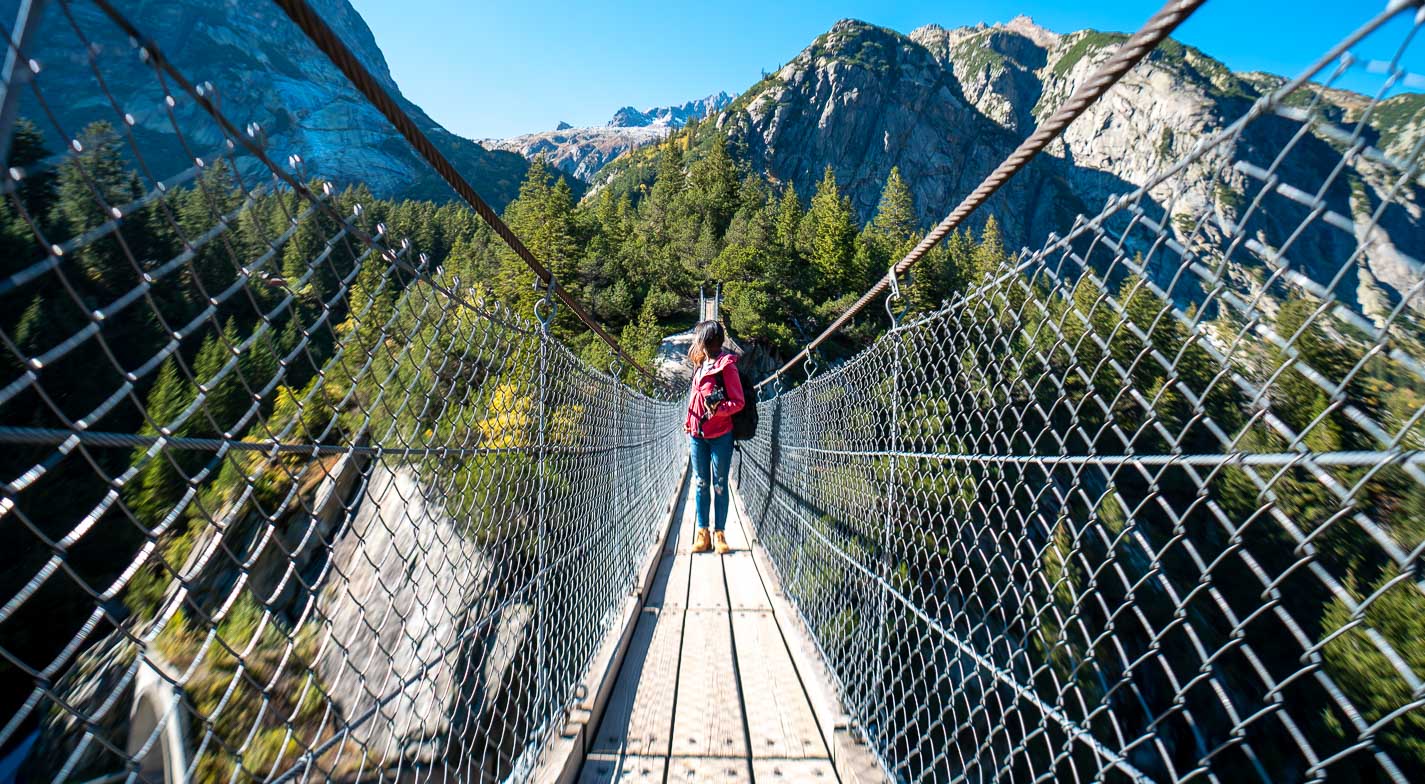
Get ready for the greatest two months of your life! From strolling through the posh streets in London and climbing the Swiss alps to gazing at the breathtaking ruins in Athens, this Europe itinerary travels to 10 countries, and all for under S$5k!
*Get 15% off your Eurail Pass when you pre-book it before 1 Aug 2022

Europe robbed my heart in ways no other place could. I was only there for a month under my 2016 university exchange programme, but I can never forget what I experienced. The smell of freshly-baked croissants in France, the breathtaking ruins in Greece, years of history in Prague’s narrow cobblestone streets — and that’s only scratching the surface.

I backpacked across 12 countries in 32 days, but I was burnt out by the end of the journey. My main regret was that I answered “where to go in Europe?” with “as many places as possible!” As a result, I didn’t get to know each country — it was just touch-and-go sightseeing for one day, then moving on to the next. Had I known better, I would have slowed down and taken my time in each place.
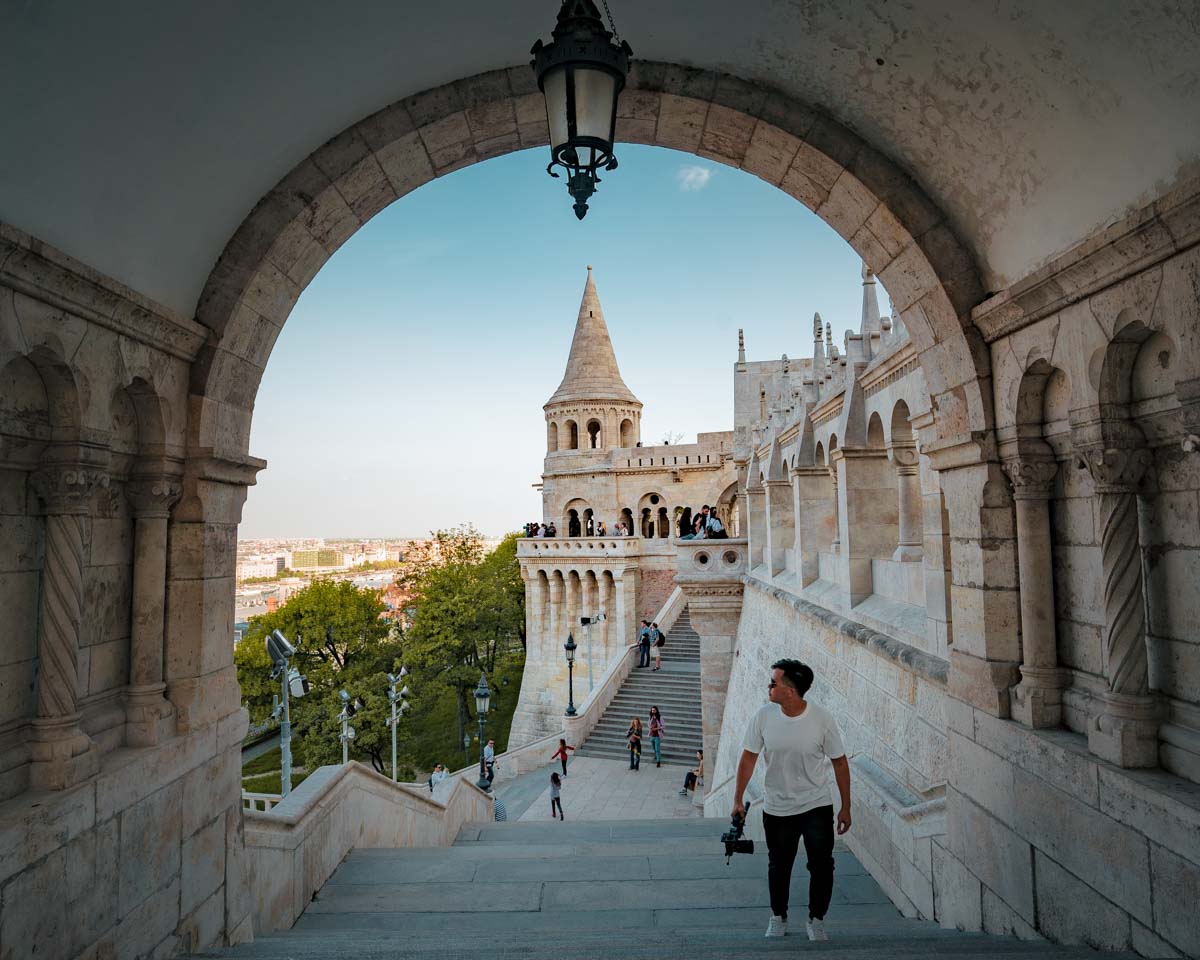
Now, it’s true that Europe is expensive. But, it’s also true that you don’t need to break the bank to travel there. After all, we’ve covered various parts of Europe on separate trips, all on a budget.
That said, we won’t deny that flights can be costly for a continent so far away. If we could, we’d make it worth our while and cover all these countries in one grand backpacking trip — like our very own “Europe graduation trip” of sorts. And if we did do the trip, our ideal Europe itinerary would explore 10 countries, and it’s possible to do so with a budget under S$5k!
Pre-trip Essentials
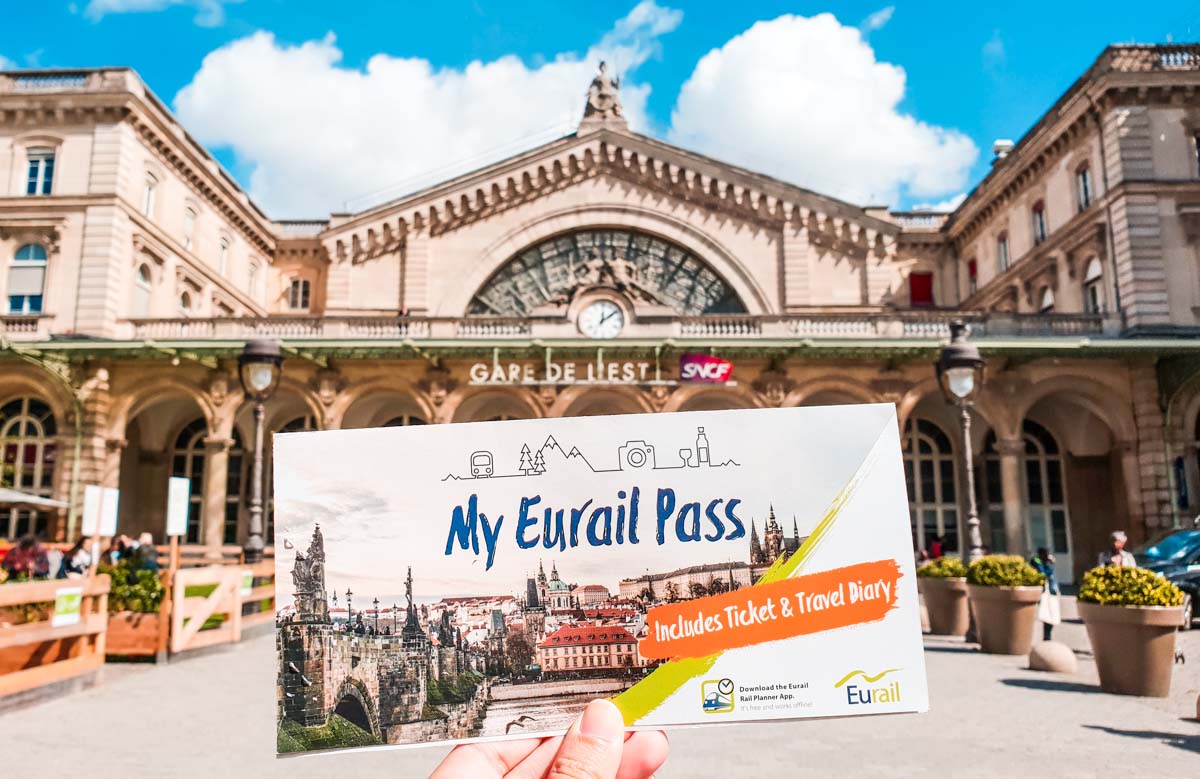
Rail Travel: For this itinerary, you’ll need the flexible 15-day Eurail Global Pass . Purchase your pass at least a week in advance, so that it’ll be delivered straight to your doorstep! If you’re unsure how to use it, check out our Eurail Pass guide for a fuss-free Europe journey.
Connectivity: Get a 60-day SIM card that can be used all over Europe. This card provides 12GB of data, and has free incoming calls too.
Flights: Start from London, and end at Athens. Flights are not included in this itinerary’s budget. However, you can always score cheap flights to Europe with Skyscanner , and by keeping a lookout for airline promotions and flash sales.
Budget Breakdown
Accommodation: S$1,477.76 Transport: S$1,541.19 (including Eurail Global Flexipass ) Food: S$1,388.83 Activities & Miscellaneous: S$507.20
Total: S$4,984.98
Read also: 18 Budget Tips to Travel Europe For a Month Under S$2,500
Check Flights to London
If you can’t see the widget above, check flights from Singapore to London here instead!
1) London, England (7 Days)
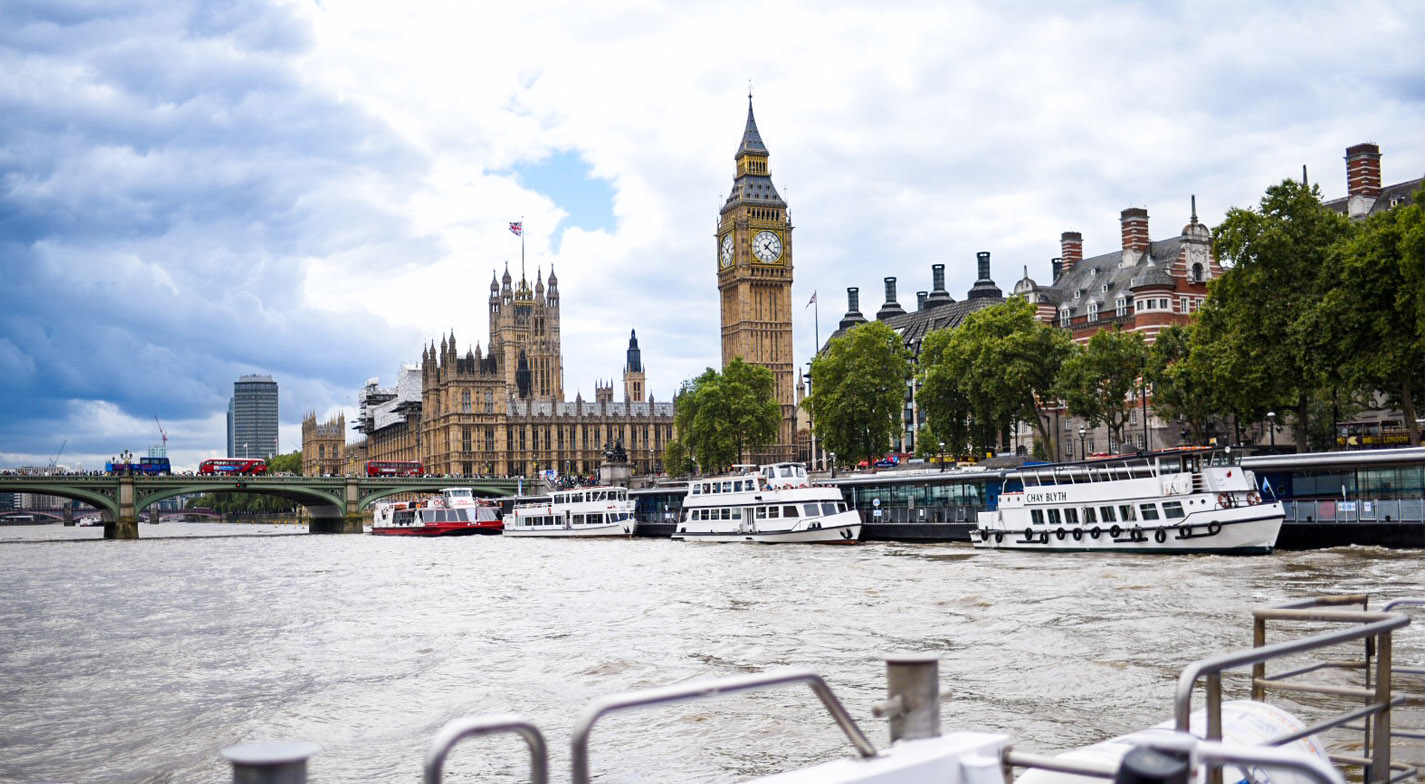
Kickstart your adventure in London! The city’s atmosphere is electrifying — you can easily spend a week exploring London’s numerous attractions. Think museums, markets, icons like the Big Ben and Buckingham Palace, and the quintessential Harry Potter Studios Tour .
Getting from London Heathrow Airport to the city: Take a coach transfer to Central London.
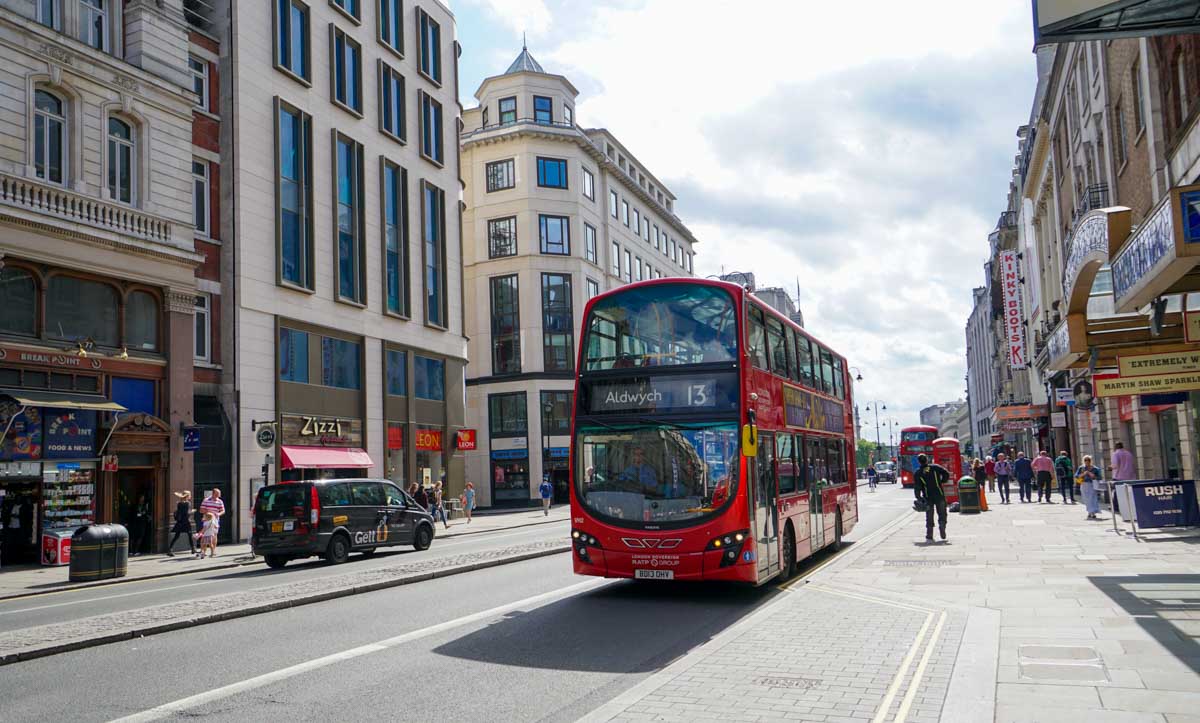
Keen to explore the rest of the UK? Check out our UK rail itinerary , which also covers Scotland and Wales.
Accommodation: SoHostel , ~S$34/bed in an 18-bed dorm room (includes free breakfast).
Getting around London: Walk, cycle , or take unlimited public transport with the London TravelCard .
Key Experiences: – Walk along River Thames and check out attractions like Big Ben, the London Eye, and the London Bridge – Go museum-hopping (some are free!) – Eat at local markets like Camden, Brick Lane and Borough Market. – Go on the Harry Potter Studios Tour (Heads-up Potterheads, check out our Harry Potter itinerary too!)
Food: ~£20/day, including cooking and eating out. Don’t miss must-eats like fish and chips, salt beef beigels, and Flat Iron ‘s famous steaks!
Read also: UK By Rail: 10D Scotland, Wales And London Itinerary Under S$1,400
Getting from London to Paris, France: Take the Eurostar from London St Pancras International Station to Paris Gare du Nord. Reservations are required.
2) Paris, France (3 Days)

Paris is the holy grail destination for anyone enthralled by French culture. It’s easy to fall in love with the beautiful architecture of the historic Notre-Dame, the modern Eiffel Tower, and the extravagant Palace of Versailles . For foodies, the palatable French cuisine will hook you right in.
Getting around Paris: Walk, or take unlimited public transport with the Paris TravelCard .

Accommodation: Le Village Montmartre , ~$49/bed in an 12-bed dorm room.
Key Experiences: – Visit French icons like the Notre-Dame Cathedral, Arc de Triomphe, and Eiffel Tower – Hunt for famous artworks like the Mona Lisa and Venus de Milo at the Louvre Museum ( free on Friday nights for anyone under 26) – Take a day trip to the Palace of Versailles (and try not to feel like a pauper there)
Food: ~€15/day, including cooking and eating out. Enjoy French classics like duck confit, freshly-baked breads and pastries, and macarons. Bon Appetit !
But France isn’t just about Paris — our France rail itinerary heads to other charming cities like Marseilles and Nice which are worth exploring too!
Getting from Paris to Interlaken, Switzerland: Take a TGV Lyria train from Paris Gare de Lyon to Basel SBB. Reservations are required for this train. Then, take a regional train from Basel SBB to Interlaken Ost.
3) Switzerland (6 Days)
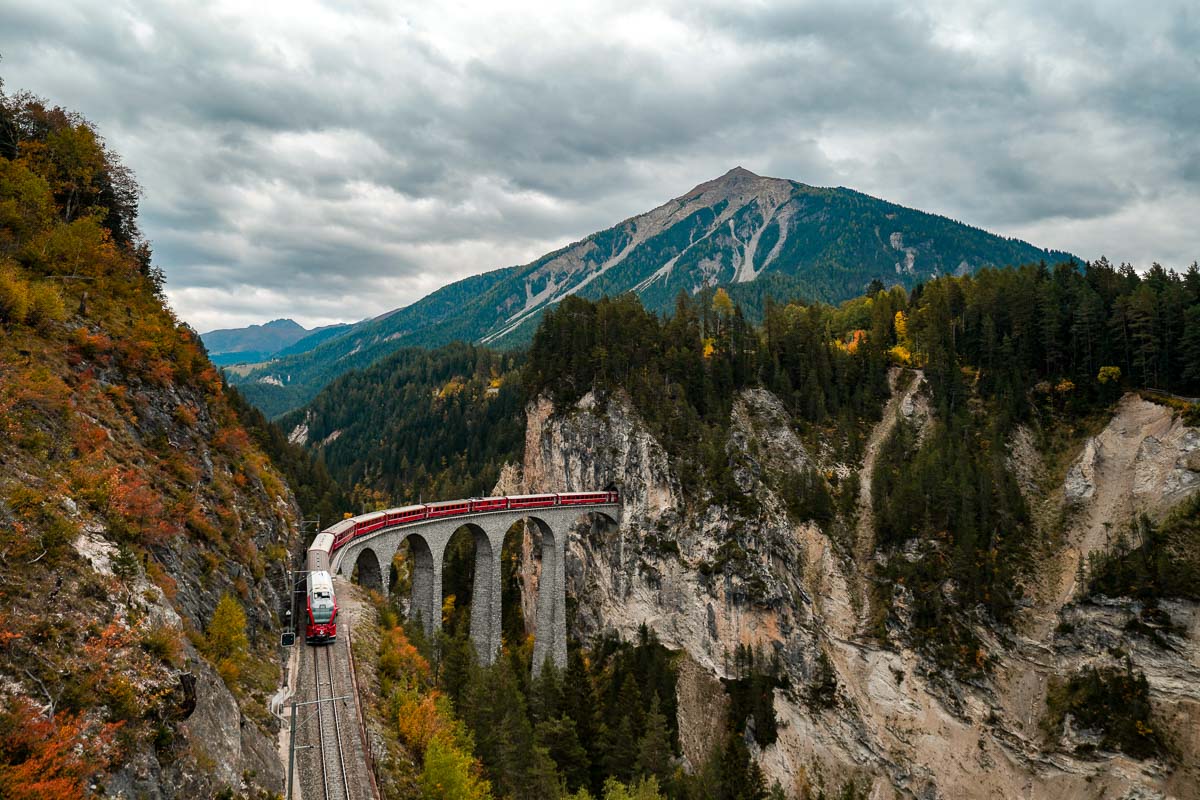
In one word, we’d say Switzerland is “unreal”. The breathtaking mountainous scenery, crisp, fresh air, and mouthwatering cheese-pulls from bubbling pots of fondue — few countries come close to such perfection. This itinerary explores the natural beauties of Interlaken, Lucerne, and Zurich in six days.
Getting around Switzerland: Take public transport or walk. The scenery is wondrous wherever you go.
To see more of Switzerland’s majestic sights like the Matterhorn (a.k.a. “Toblerone chocolate” mountain), check out our Switzerland rail itinerary .
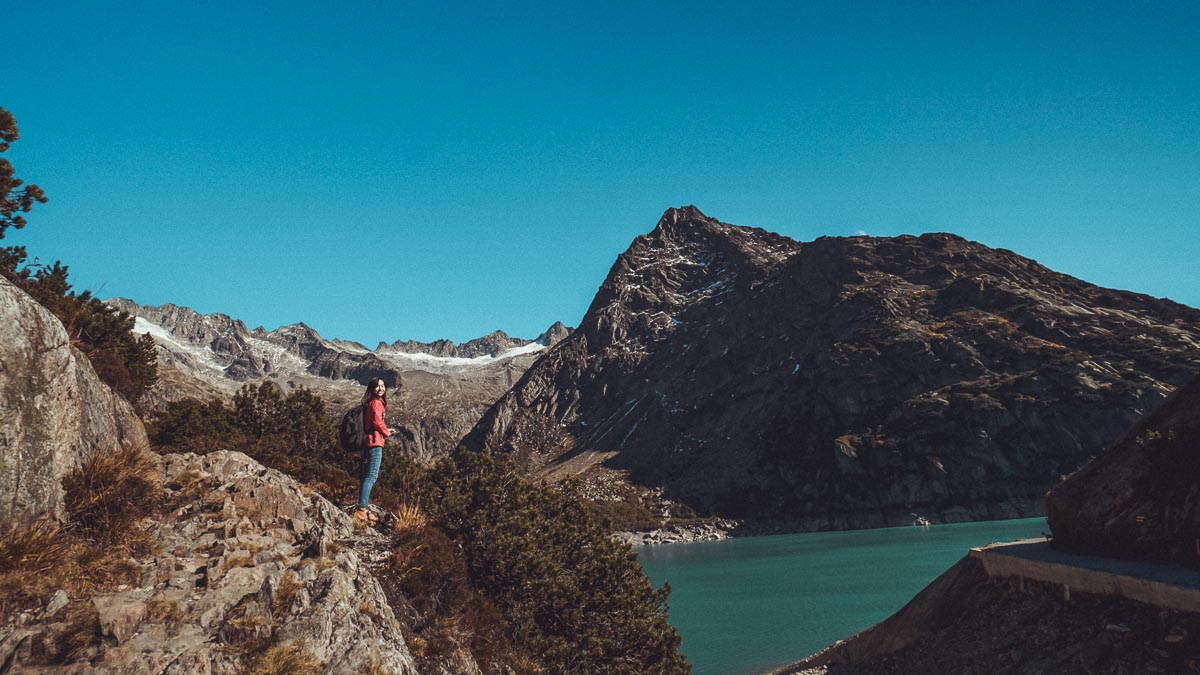
Accommodation: Hostel Interlaken , ~S$58.50/bed in a six-bed dorm room (includes free breakfast, and a free bus pass).
Key Experiences: – Ride the Gelmerbahn , Switzerland’s steepest open air Funicular. At the top, hike to the Handeck Bridge , and around Gelmer Lake – Hike up 1,322m to Interlaken’s local mountain, Harder Kulm – Trek to Iseltwald and awe at Seeburg château , a fairytale-esque castle on Lake Brienz
Food: ~CHF22/day, mostly groceries for cooking. Eating out in Switzerland is very expensive. But if you can splurge on one thing, go for a cheese fondue!
Travelling from Interlaken to Lucerne: Take a domestic train from Interlaken Ost to Bahnhof Luzern. Reservations are dependent on the train you take.

Accommodation: Bellpark Hostel , ~S$48/bed in a six-bed dorm room (includes free breakfast).
Key Experiences: – Walk around Lucerne Old Town , and visit historic attractions like the Kapellbrücke, Musegg Wall, and Löwendenkmal – Make your own Swiss Army Knife at the Victorinox Museum – Hike to the peak of Mount Pilatus , and go on a ride on the Fräkigaudi Toboggan (Switzerland’s longest Toboggan run)
Food: ~S$30/day, mostly groceries for cooking.
Travelling from Lucerne to Zurich: Take a domestic train from Bahnhof Luzern to Zürich Hauptbahnhof. Tour around the city’s sights, before continuing to Munich in Germany.

Key Experiences: – Explore Zurich Old Town and Lake Zurich – Try the famous Aelpli Milk, an alcoholic cocktail that looks deceptively like milk
Read also: 10-Day Switzerland Itinerary — 6 Cities Under S$2.3k with the Swiss Travel Pass
Travelling from Zurich to Munich, Germany: Take an Intercity train from Zürich Hauptbahnhof to München Hauptbahnhof. Reservations are required for this train.
Note: Trains from Zurich to Munich may not run every day, so check in advance whether they are available on the day you intend to travel.
4) Germany (7 Days)
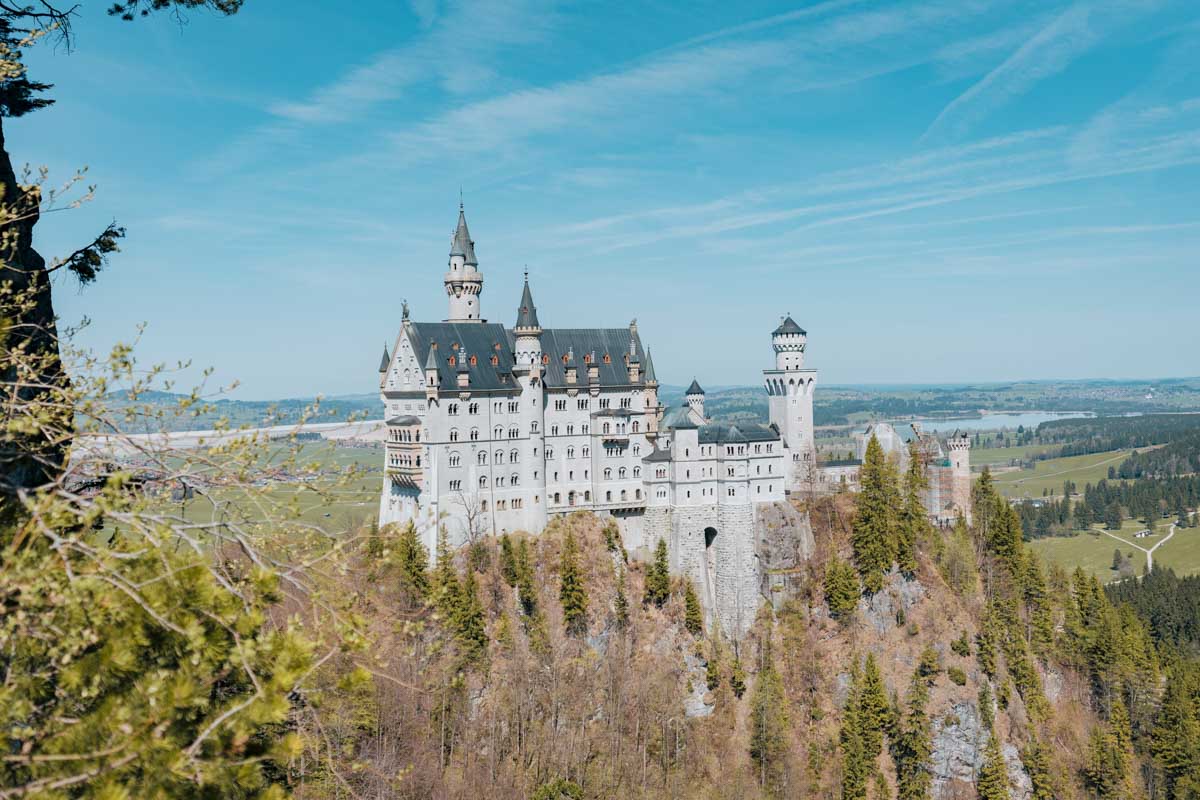
Germany is home to years of important history we’ve studied in school, and a lively culture of enjoying food, drinks, and merry cheer (Oktoberfest, anyone?). That’s what makes this country so fascinating! Spending a week in Berlin and Munich, you’ll explore sombre historical sites and buildings , but also vivacious beer halls where everyone’s got a pint in hand.
Getting around Germany: Take public transport , or walk.
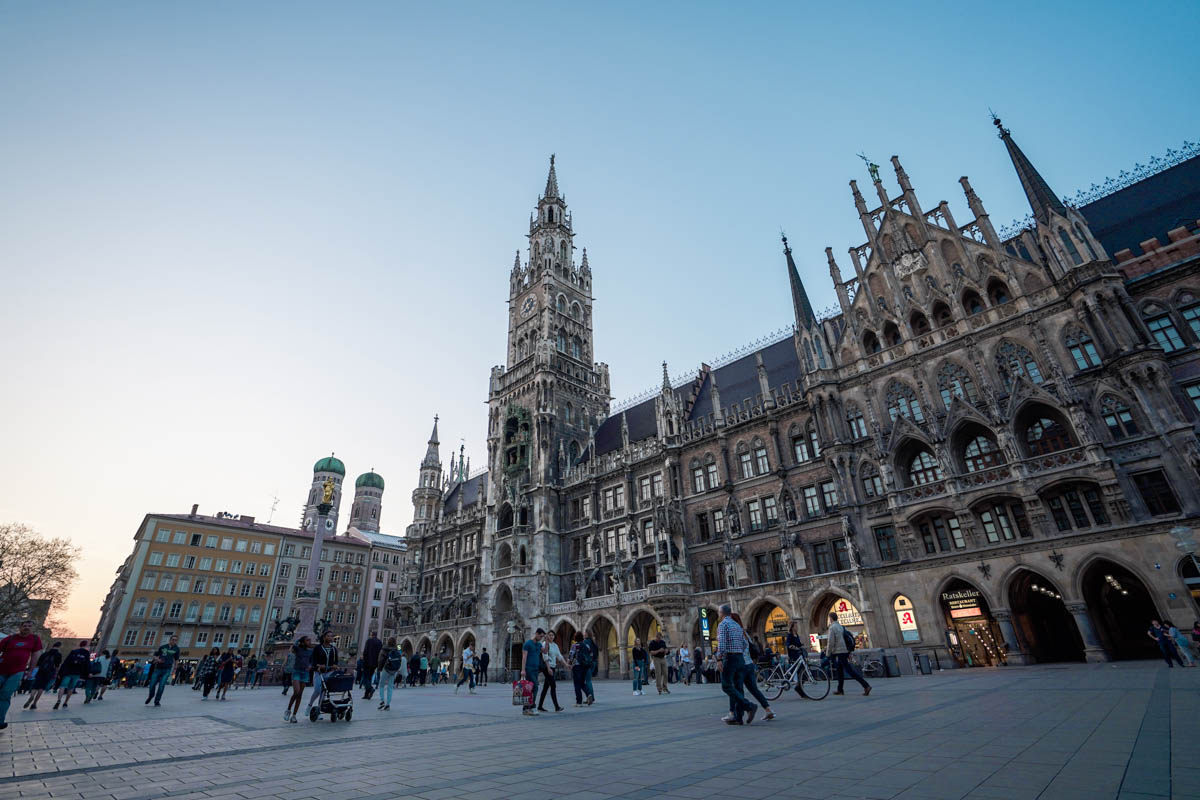
Accommodation: Jaeger’s Munich Hostel , ~S$43/bed in a 10-bed dorm room.
Key Experiences: – Catch street performers at the Marienplatz – Head to the Englischer Garten , and watch surfers in action at the Eisbach River – Kick back with drinks at Hofbräuhaus , a three-tier beer hall – Go on a day trip to Fussen, and explore Neuschwanstein Castle — the inspiration behind Disney’s Sleeping Beauty Castle
Food: ~€15/day, including cooking and eating out. Get your fill of German favourites like bratwursts and pork knuckles ( schweinshaxe ). Beer goes without saying. Cheers! 😉🍻
Travelling from Munich to Berlin: Take an ICE high-speed train from München Hauptbahnhof to Berlin Hauptbahnhof. Reservations are required for this train.

Accommodation: St Christopher’s Inn Berlin Mitte , ~S$33/bed in a 30-bed dorm room (includes free breakfast).
Key Experiences: – Take part in a walking tour around Berlin’s historical sites like the Reichstag Building, Brandenburg Gate, and Holocaust Memorial – Go on a Sachsenhausen Concentration Camp Memorial Tour – Admire the artworks at the East Side Gallery along the Berlin Wall – Shop at Mauerpark’s flea markets on Sundays
Food: ~€15/day, including cooking and eating out. Look out for cheap eats like döner kebabs, burgers, and other affordable munchies at market halls .
Read also: 5-Day Berlin Budget Guide under S$1.5k incl accommodation and flight from Singapore
Travelling from Berlin to Prague, Czech Republic: Take the EuroCity train from Berlin Hauptbahnhof to Praha Hlavní Nádraží Station. Reservations are optional.
5) Prague, Czech Republic (3 Days)
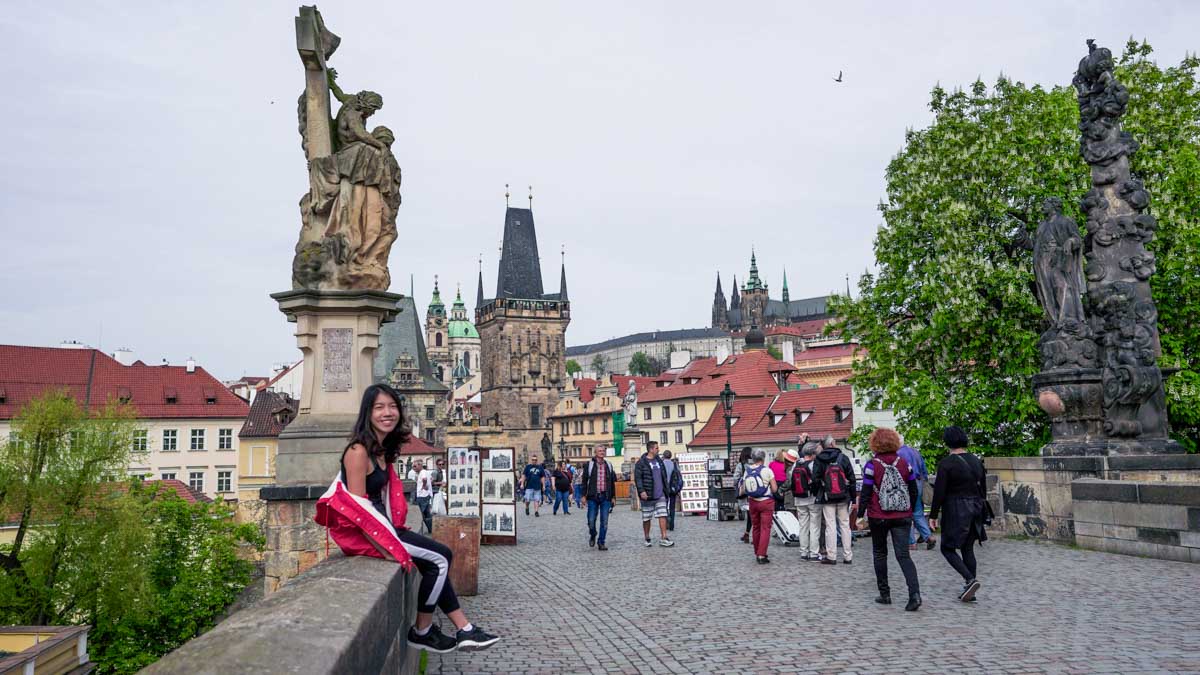
The capital city of the Czech Republic is just beautiful. Renaissance buildings and Gothic churches tower above as you wander through the maze-like, cobblestone streets of Prague Old Town . It’s a UNESCO World Heritage Site that gives off whimsical fairytale-vibe, but the best part is that the city is super wallet-friendly!
Getting around Prague: By walking, as all the attractions are near each other.
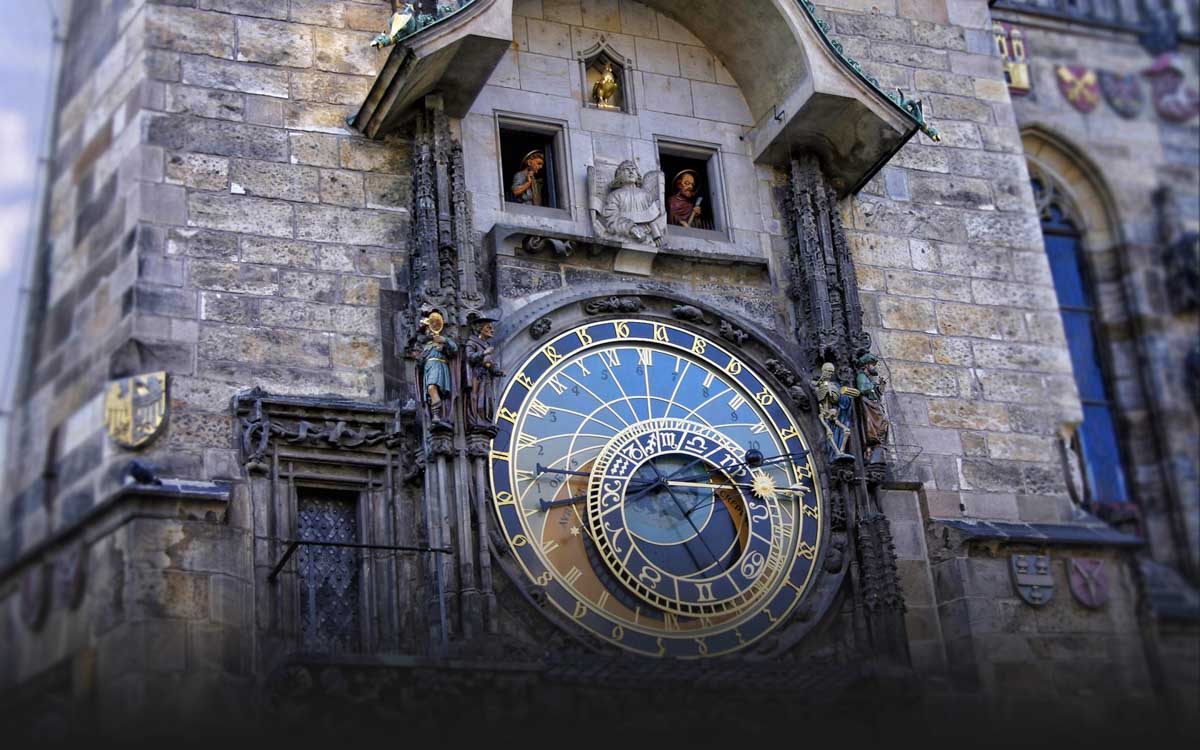
Accommodation: Hostel Rosemary , ~S$19/bed in a 12-bed dorm room.
Key Experiences: – Catch the hourly “puppet” show, performed by the Astronomical Clock at the Old Town Hall – Stroll down the Charles Bridge, and go people-watching – Visit the Prague Castle, the world’s largest castle complex – Have a beer at the Strahov Monastery Brewery
Food: ~€15/day, including cooking and eating out. Don’t miss Czech specialties like roasted duck, fried cheese ( smazeny syr ), and chimney cakes ( trdelnik ).
Travelling from Prague to Vienna, Austria: Take a regional train from Praha Hlavní Nádraží Station to Wien Hauptbahnhof.
Read also: 14-Day Europe Itinerary: 6 Countries under S$1.8k with the Eurail Pass
6) Vienna, Austria (3 Days)
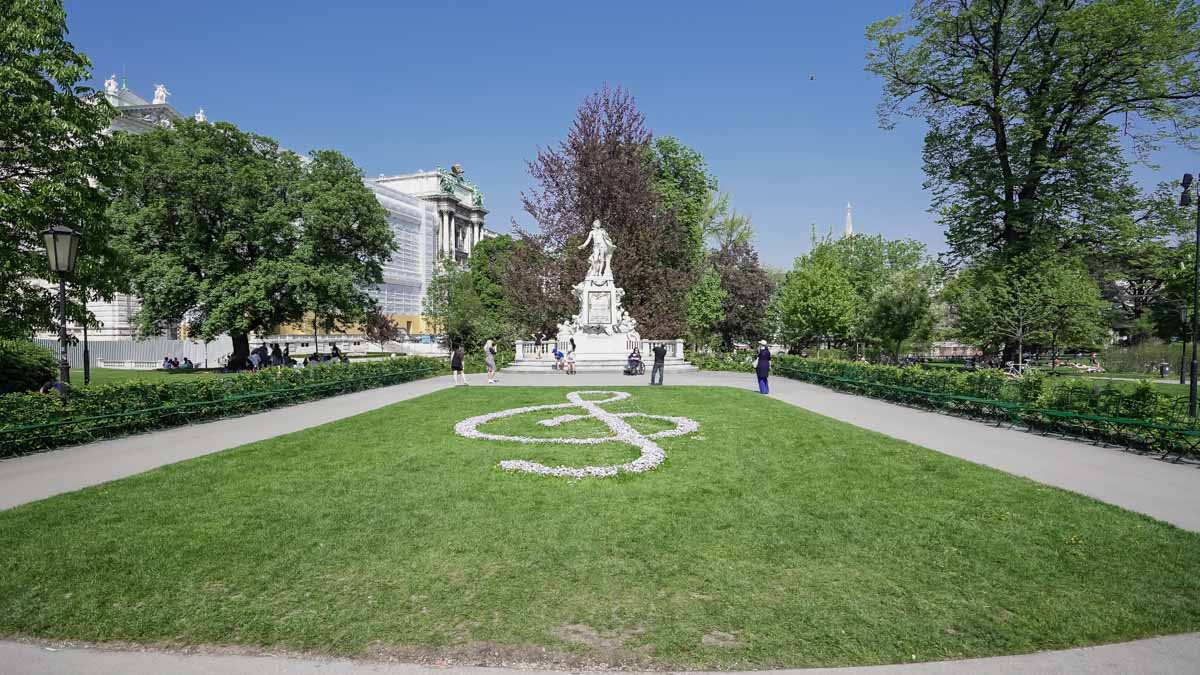
Vienna is hailed as the “City of Music” for good reason. It was the home of the legendary Beethoven and Mozart, but you don’t have to be a virtuoso yourself to enjoy Austria’s capital. The young-at-heart will also be thrilled by the much-raved-about Wurstelprater amusement park !
Getting around Vienna: Walk, or take public transport .
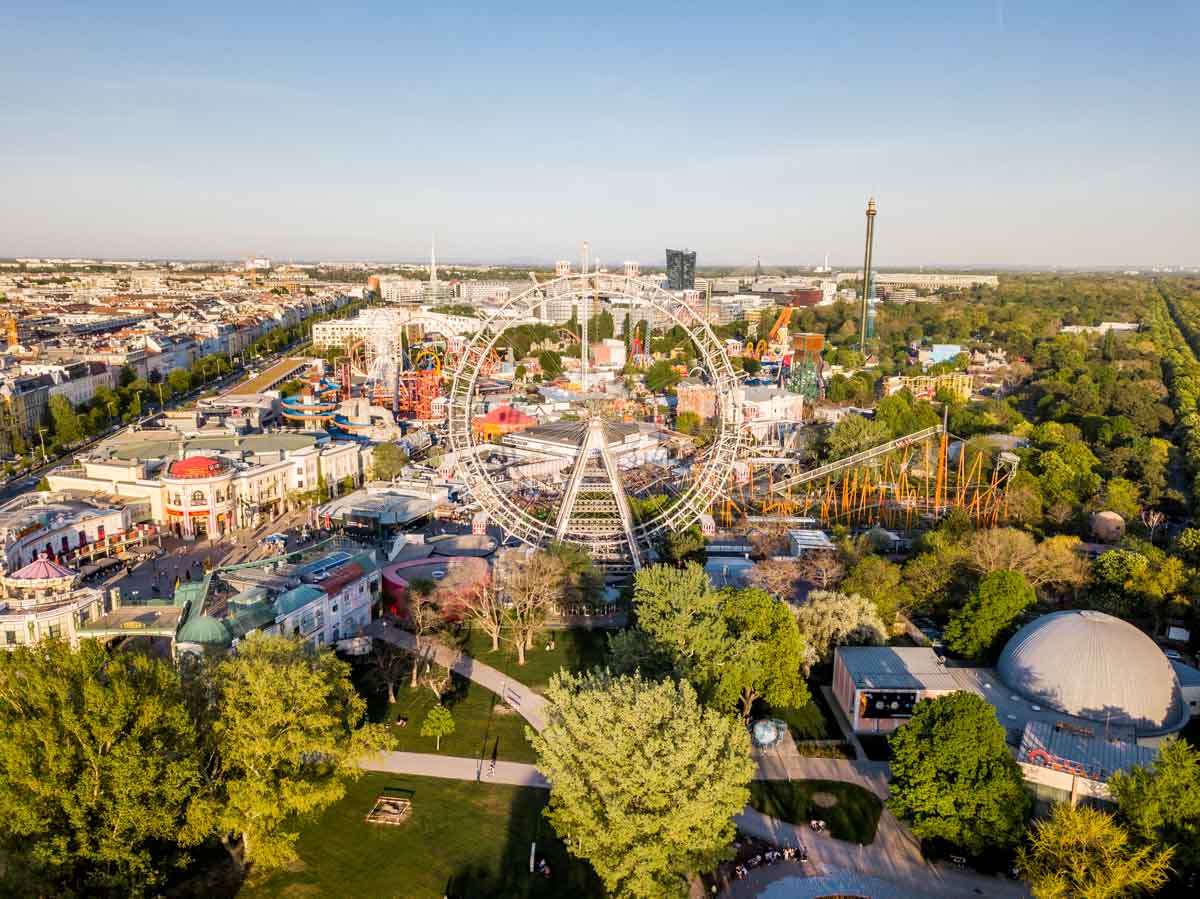
Accommodation: Best Location Hostel , ~$26/bed in a four-bed dorm room.
Key Experiences: – Grab brunch and groceries at the Karmelitermarkt – Visit Mozart’s statue in the Burggarten – See how Austrian royalty used to live like at the Schönbrunn Palace – Scream your lungs out at the Wurstelpratel Amusement
Food: ~€15/day, including cooking and eating out. Must-try eats include schnitzel and apple strudel, both Austrian originals.
Travelling from Vienna to Budapest, Hungary: Take a regional train from Wien Hauptbahnhof to Budapest Keleti Station.
7) Hungary (4 Days)
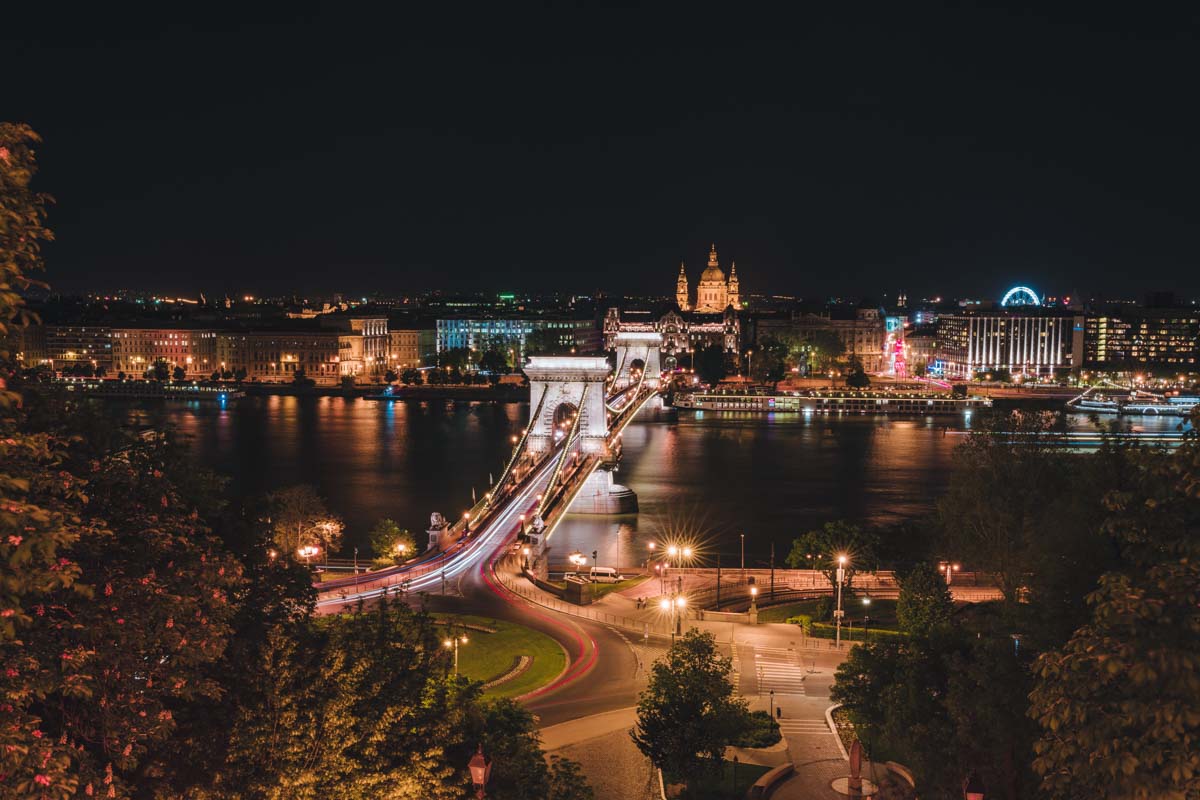
Budapest was my personal favourite. The Hungarian language is unique and mysterious, much like Budapest! Buda and Pest are polar opposites — Buda is where calmer daytime activities take place, while the nightlife rules in Pest. Either way, there are plenty of things to do to keep you entertained, like dipping in the Szechenyi thermal baths and enjoying live music events at Szimpla Kert , a famous ruin bar.
Getting around Hungary: Take public transport , or walk.
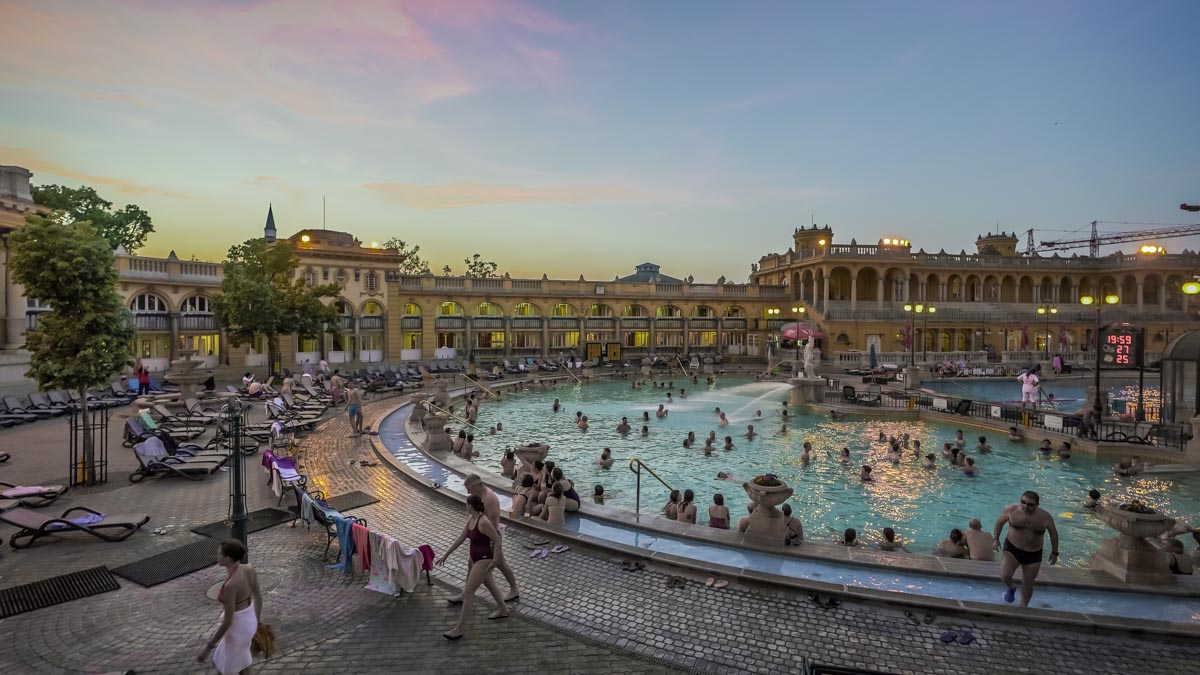
Accommodation: Airbnb , ~S$10/night for a private apartment with a kitchen and laundry facilities.
Key Experiences: – Stroll along the Danube Bank and see famous landmarks like the Shoes on the Danube Bank , the Hungarian Parliament, and the Buda Castle – Head up to Fisherman’s Bastion, an incredibly Insta-worthy photo spot – Soak in the Szechenyi thermal baths – Relax at Margitsziget (Margaret Island), a park in between Buda and Pest – Unwind with drinks at Szimpla Kert , and catch live music events
Food: ~€15/day, including cooking and eating out. Must-try Hungarian dishes include langos and goulash.
Travelling from Budapest to Ljubljana, Slovenia: Take a high-speed train from Budapest Deli Station to Ljubljana Station. Reservations are required.
Note: Trains from Budapest to Ljubljana may not run every day, so check in advance whether these trains are available on the day you intend to travel.
8) Slovenia (4 Days)
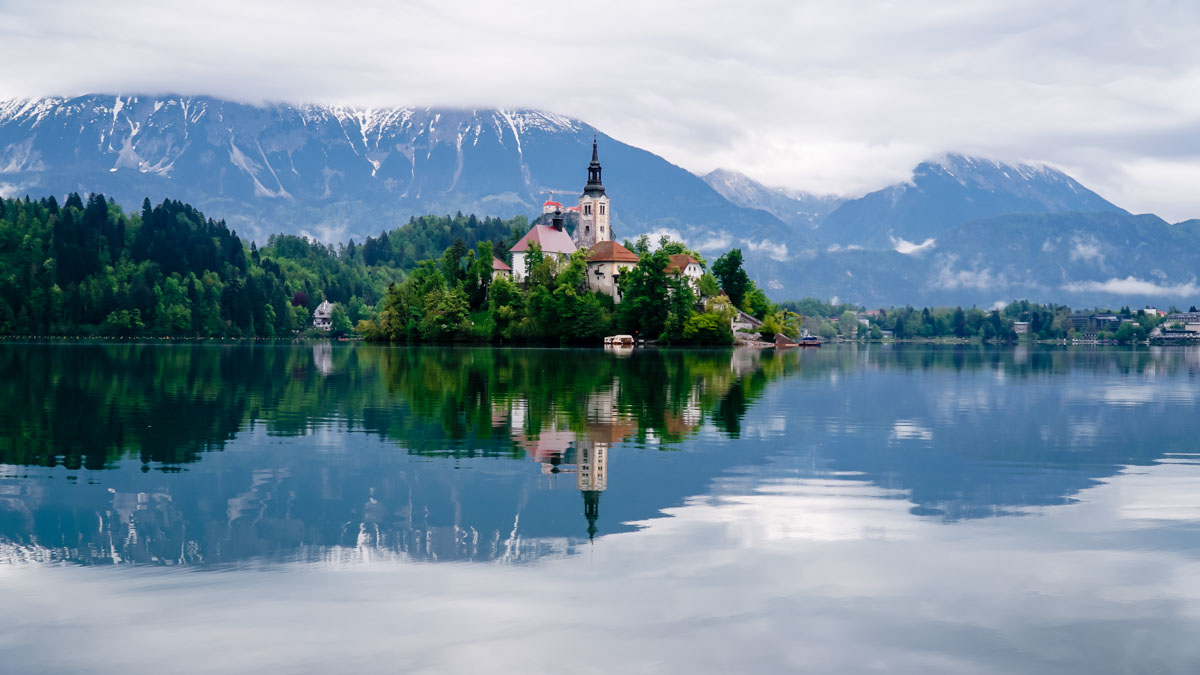
A hidden gem in Europe, Slovenia is a truly charming country. Ljubljana is packed with many bridges that line the river, as well as impressive greenery. The resort town of Bled is also a must-visit. Many travellers enjoy hiking up to Ojstrica Lookout Point to get a perfect shot of the picturesque Lake Bled below.
Getting around Slovenia: Walk, or cycle .
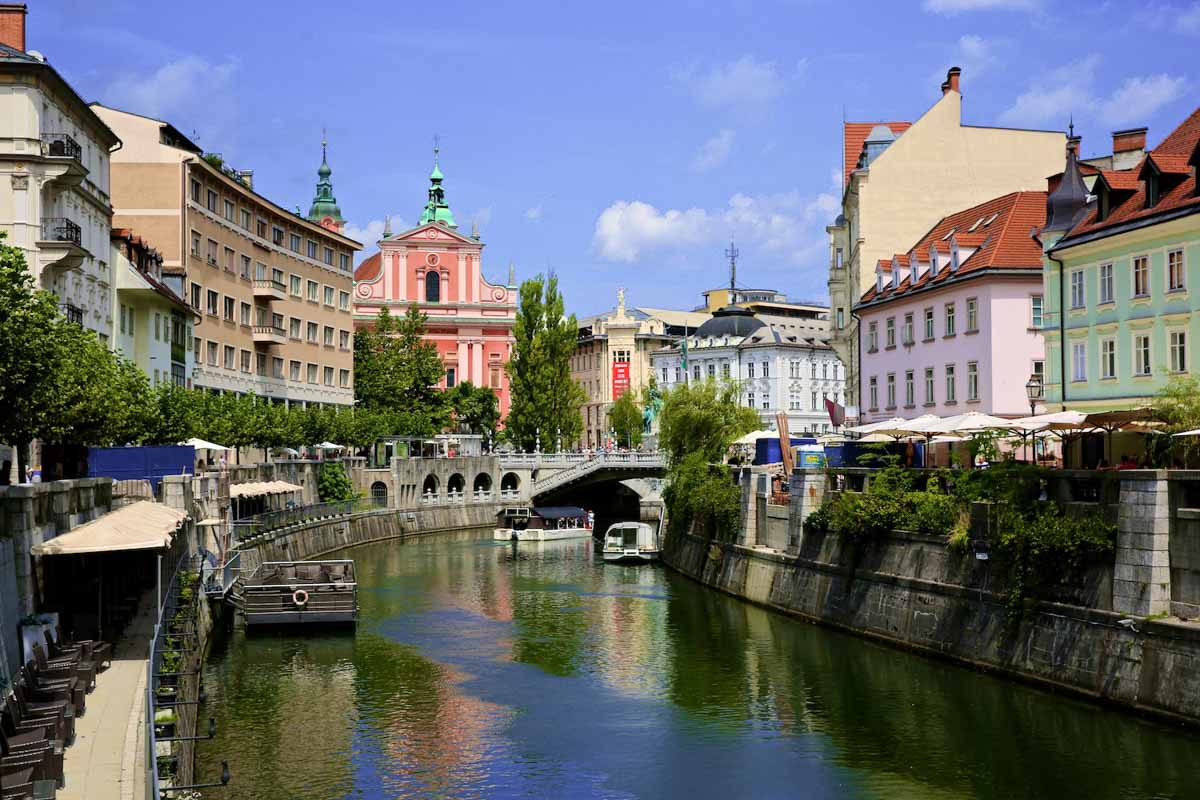
Accommodation: Hostel Most , ~S$26/bed in a mixed dorm room.
Key Experiences: – Cycle around the town, and check out the quirky Dragon Bridge – Chill out at Tivoli Park – Immerse yourself in the alternative culture at the Metelkova Art Centre , and catch live music performances at night – Shop for fresh produce and cheap eats at the Central Market – Go on a day trip to Bled
Food: ~€15/day, including cooking and eating out. For authentic Slovenian cuisine, have a meal at Druga Violina , an inexpensive gostilna -style restaurant.
Travelling from Ljubljana to Bled: Take a regional train from Ljubljana Station to Lesce Bled.
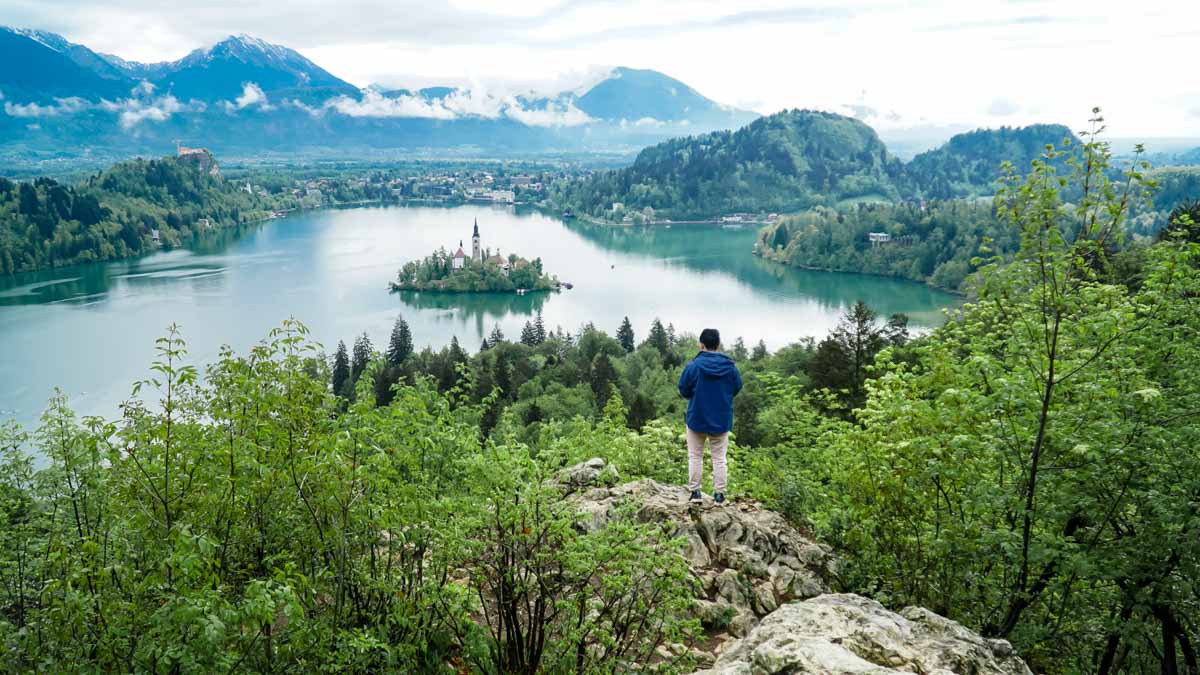
Key Experiences: – Hike up Ojstrica Lookout Point to get the best views of Lake Bled – Ride a Toboggan sled at Straža Bled (starts in April 2019)
Food: Don’t leave without trying the original Bled Cream Cake at Sava Hotel Bled !
Getting from Ljubljana to Venice, Italy: Take a bus from Ljubljana to Trieste Centrale Station in Italy. Afterwards, take a high-speed train to Venezia Mestre Station.
9) Italy (7 Days)
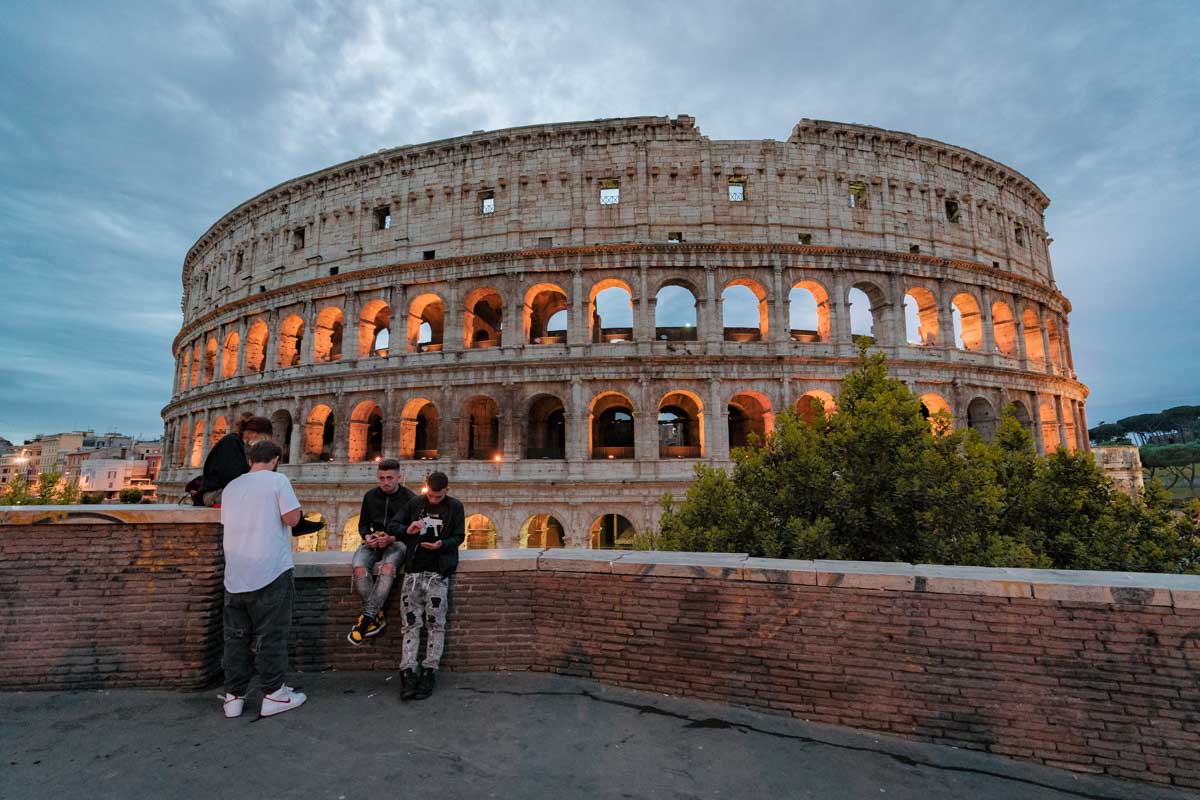
Mamma Mia! With iconic foods like pizza and pasta, jaw-dropping architecture like the Colosseum, and layers of interesting history, how can you skip Italy? This itinerary spends a week in Venice and Rome, exploring the maze of bridges and famous attractions like the Vatican City .
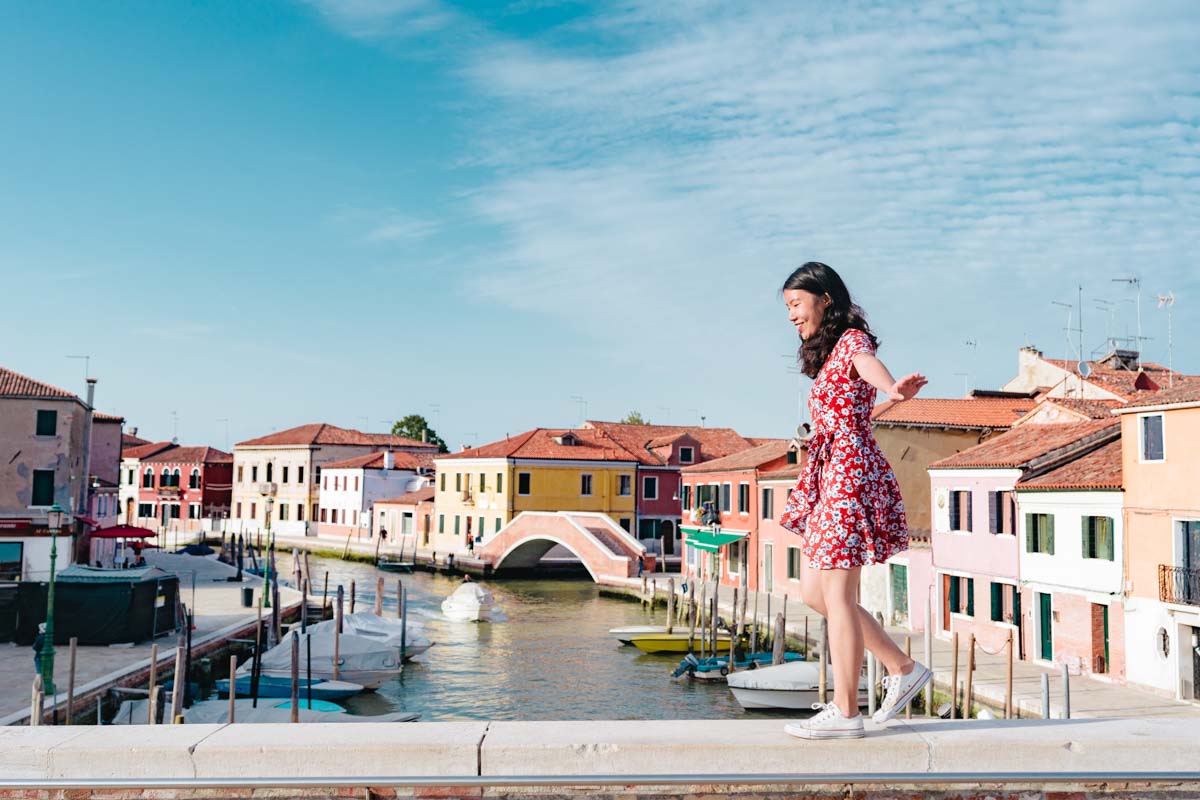
Accommodation: Camping Rialto Venezia , ~S$30/bed in a mini-chalet.
Getting around Venice: Purchase a travel card for unlimited water bus rides.
Key Experiences: – Get lost in Venice, cross its many bridges , and visit famous sites like St. Mark’s Square – Take a ferry to Murano (the glass islands) to see how glass is made – Stroll around the colourful island of Burano , and learn about lace-making
Food: ~€15/day, including cooking and eating out. Have your meals outside of Venice, as you can get higher quality dishes for cheaper.
Travelling from Venice to Rome: Take a high-speed train from Venezia Mestre Station to Roma Termini.
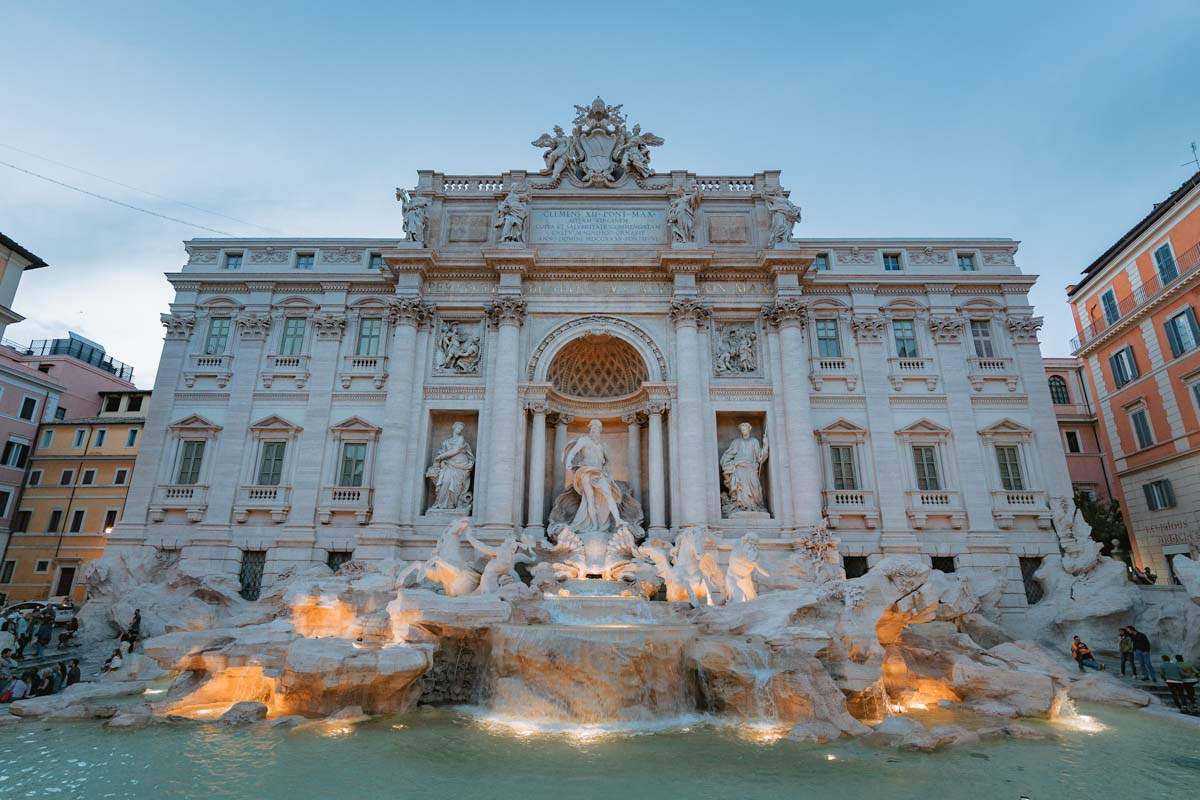
Accommodation: Funny Palace Hostel , ~S$31/bed in a 5-bed dorm room (includes free breakfast).
Getting around Rome: Walk, or take public transport .
Key Experiences: – Make a wish at the Trevi Fountain (like Lizzie McGuire!) – Roam around Rome, and check out attractions like the Spanish Steps and Altare della Patria – Learn more about the Roman gladiators at the Colosseum – Enter the Vatican City , where the Pope lives, and explore St. Peter’s Basilica
Food: ~€15/day, including cooking and eating out. Don’t forget to enjoy authentic Italian cuisine like pasta, pizzas and gelato!
Travelling from Rome to Athens, Greece: The fastest way to get from Italy to Greece is to take a direct flight from ~€40 . To get to Fiumincino Airport, take a one-way bus transfer from Rome Termini Station.
Alternatively, your Eurail pass allows you to take a ferry ride from Italy to Greece. The journey takes about 16.5 hours.
10) Greece (11 Days)
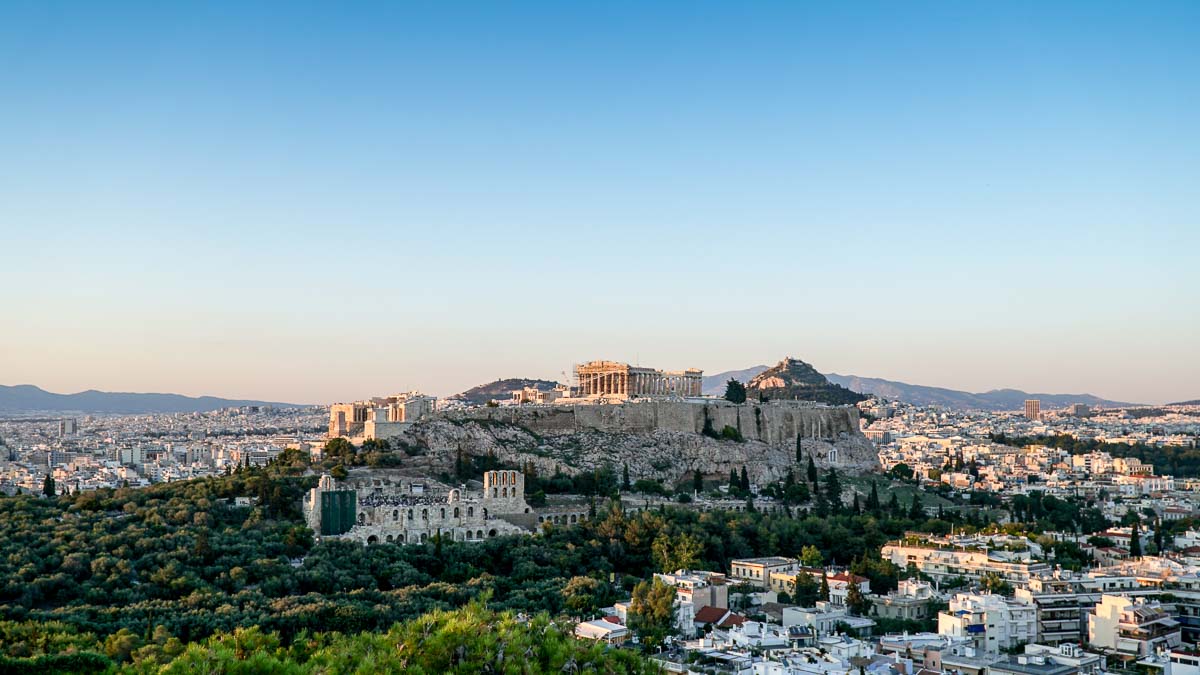
End your adventure in Greece, a curious country full of wonderment and intrigue. In this itinerary, you can explore Athens, Meteora and Santorini in 11 days. But believe us, with stunning scenery like ancient ruins , mountain monasteries , and turquoise waters, you’ll feel like you never want to leave.
To find out more about what each city offers, check out our Greece itinerary !
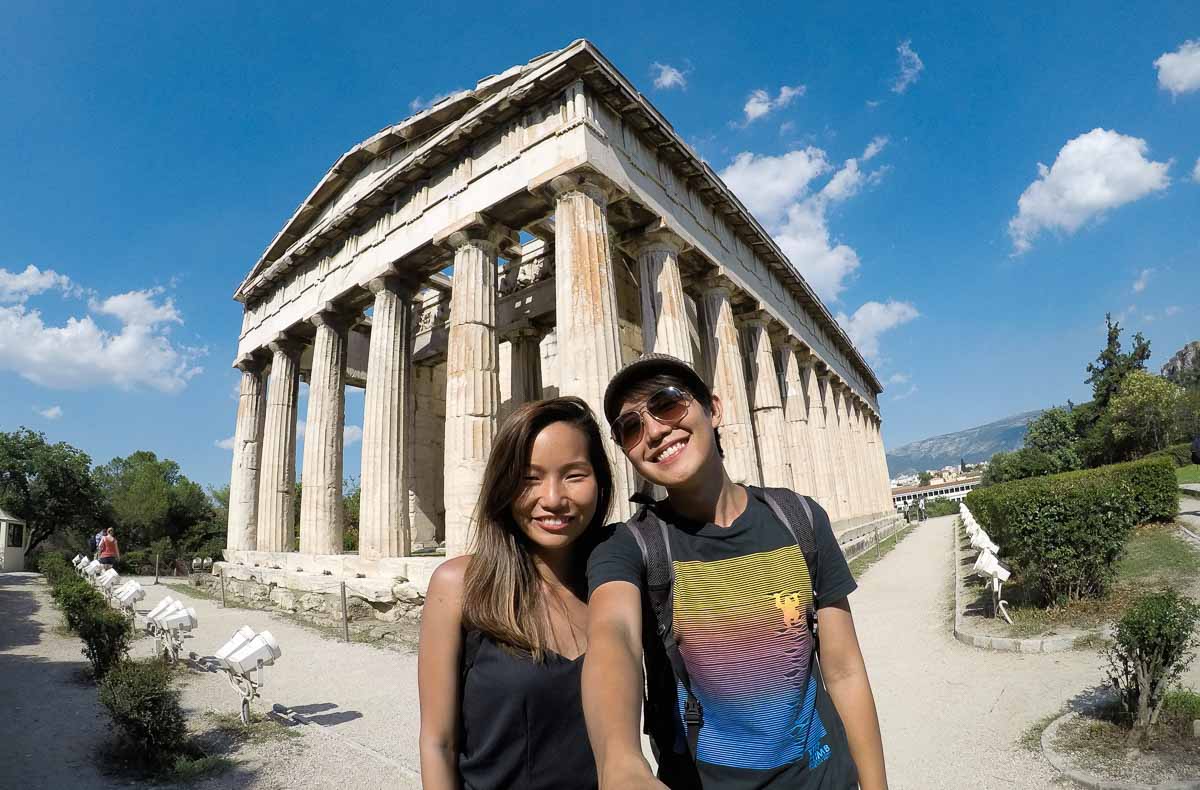
Accommodation: Pella Inn , ~S$25/bed in a 8-bed dorm room.
Getting around Athens: Walk, or take public transport .
Key Experiences: – Go on a free local tour with This is My Athens to discover more about the city – Satisfy your inner history buff and wander around Athens’ ancient ruins like the Acropolis , Ancient Agora , and Temple of Zeus – Hike up Lykavittos Hill to get panoramic views of Athens
Food: ~€15/day, including cooking and eating out. Don’t miss must-eats like Greek salad ( Horiatiki Salata ), moussaka, gyros, and Greek yogurt with honey and nuts.
Travelling from Athens to Meteora: Take a train from Athens Larissa Station to Kalambaka Station.
Note: Double check that there are no transport strikes during the time you plan to travel. Strikes happen frequently, but they are announced one to three days in advance. Check this site for updates.
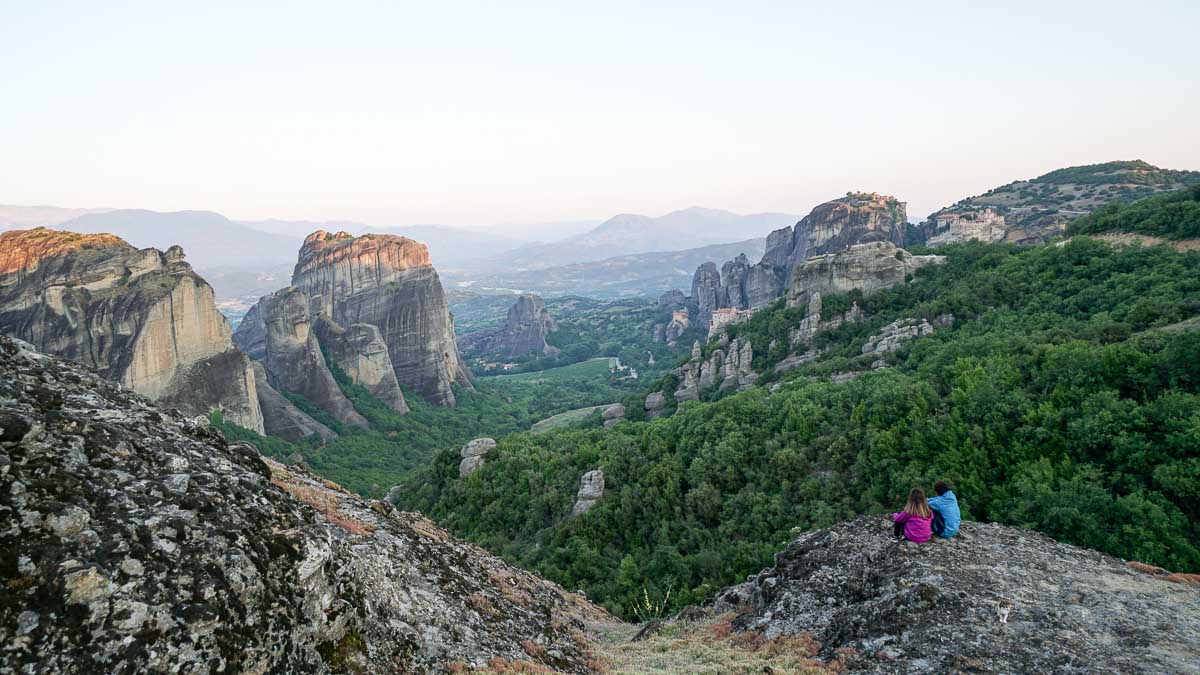
Accommodation: Meteora Central Hostel , ~S$27/bed in a six-bed dorm room.
Getting around Meteora: The best way to explore the city is by renting your own scooter . E-bikes are available for those without licenses.
Key Experiences: – Go on a rock scrambling tour to the Great Saint, the tallest rock in Meteora – Go on a sunset tour (both organised by Visit Meteora )
Food: ~€15/day. You can get cheap eats in the city like gyros.
Travelling from Meteora to Santorini: Take a train from Kalambaka Station back to Athens Larissa Station. From there, take the Metro to Piraeus port. Afterwards, take an overnight ferry to Santorini.
Alternatively, you can stay one more night in Athens. Then, take an afternoon ferry to Santorini the next day.
*Note: Overnight ferries from Piraeus to Santorini only operates on Tuesdays and Fridays. Do double check beforehand on the days you’re sailing to Santorini.
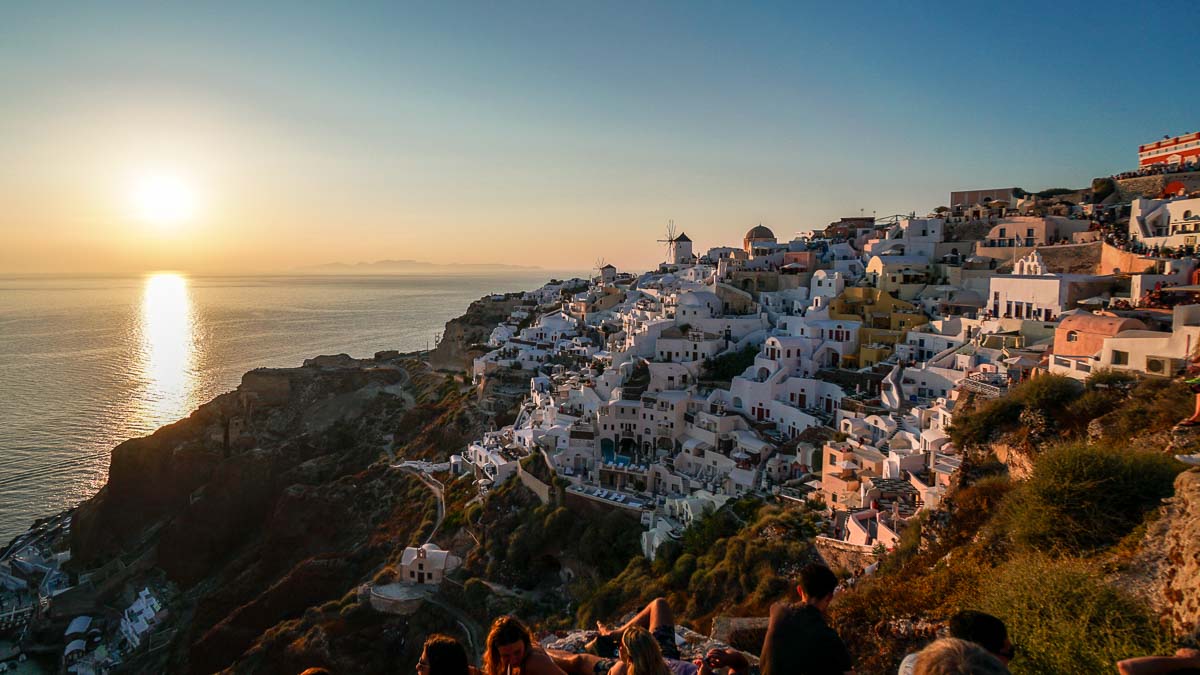
Accommodation: Youth Hostel Anna , ~S$28/bed in a 10-bed dorm room.
Getting around Santorini: The best way to explore the island is by renting a car, ATV or scooter .
Key Experiences: – Hike from Fira to Oia – Propose Have a mini-photoshoot at the Three Bells of Fira , a popular spot for wedding shoots 💍 – Get your tan on at Akrotiri Red Beach , and the Perissa Black Sand Beach – Cliff jump at Ammoudi bay – Catch the legendary Santorini sunset at the Byzantine Castle ruins , or at Skaros Rock
Food: ~€15/day.
Travelling from Santorini to Athens: You can take an daytime ferry or overnight ferry back to Athens. Overnight ferries operate on Thursdays and Mondays.
Read also: Greece Budget Itinerary — S$1.5k incl. flights & accom — Athens, Santorini, Meteora
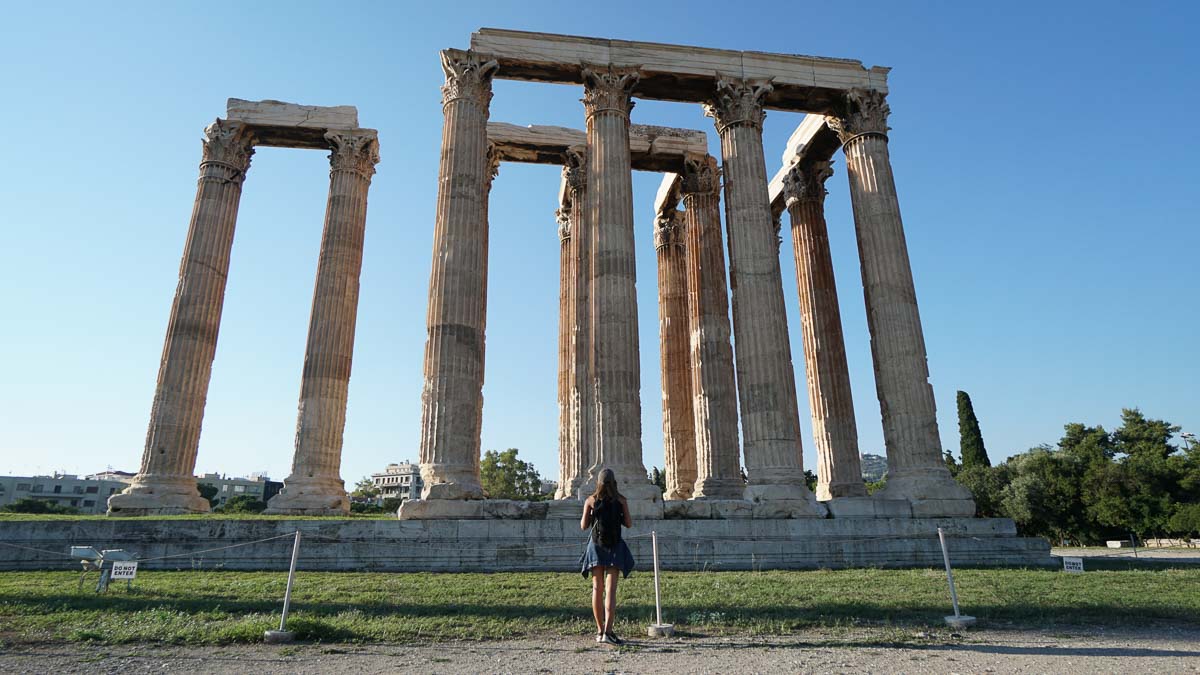
Getting from Athens to the International Airport: Take a bus from the city centre for your flight back home.
Getting Around Europe by Train
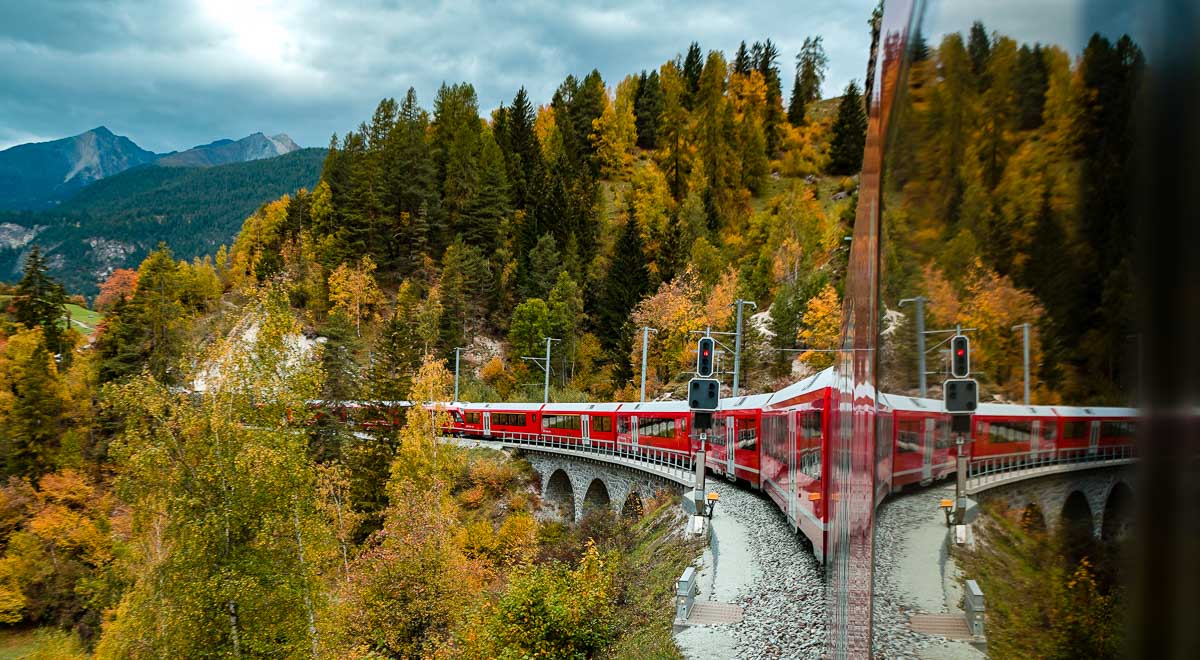
With an extensive railway network that connects all countries, taking the train is the best way to travel around Europe for budget backpackers. Compared to an MRT ride in Singapore, going across Europe by train is a far more scenic affair. You’ll find yourself passing by vastly different landscapes, like rolling hills and small towns.

What we love about the Eurail Global Pass is that it adds flexibility to all travel plans. Rather than purchase tickets for a set day and time, this pass gives users the convenience of choosing where and when to travel. It’s especially useful if you don’t have a confirmed itinerary, or when unexpected mishaps crop up!
With the 15 Days in 2 Months Eurail Global Pass , you only need to pay for reservation fees for trains that require it. Compared to buying non-flexible tickets months in advance, you’d also be saving about ~S$278 in this itinerary. This amount can easily score you a few more days in your favourite country. The only thing you need to do is make your reservations two weeks in advance, or once you arrive in Europe.

To save even more, you can take regional trains that don’t require reservations. Although the journey may be longer, take it as a time for you to catch up on some “me-time”. Otherwise, when else are you going to touch those books/Netflix shows you’ve been wanting to finish?
Your Eurail Pass will also be delivered straight to your doorstep when you book from Klook , provided you book at least one week before. The entire booking process is quick and hassle-free, and you can embark on your grand backpacking trip with a peace of mind.

Klook also offers a slew of products that will make your trip even more worthwhile, from interesting experiences like the Making of Harry Potter in London, to a tour to Sachsenhausen Concentration Camp in Berlin.
Like the Eurail Pass, getting around each city is also made easy with Klook. You can plan all your coach transfers in countries like Rome , and secure your travel cards in London and Paris that offer unlimited public transport before you hop on your flight.
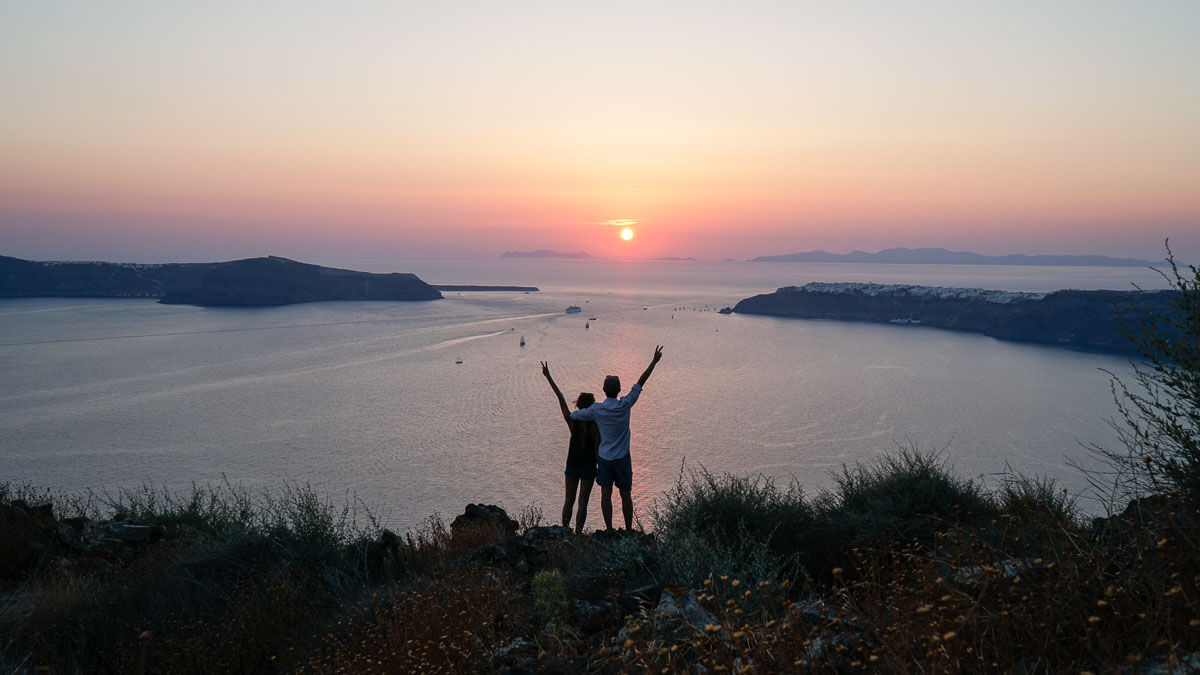
In all, travelling in Europe on a budget doesn’t have to be a bank-breaking adventure. With enough planning, backpacking Europe under S$5k can become a reality. While you may need to rough it out a bit, the entire experience will be one that’ll last. You can also proudly say you’ve seen and experienced some of the best places in Europe — now it’s just time to earn the money back. 😜
Check Flights to Europe
If you can’t see the widget above, click here to check flights from Singapore to London !
Have you backpacked around Europe? Which is your favourite country? Tell us in the comments below!
This post was brought to you by Klook .
For more travel inspiration, follow us on Facebook , Instagram , and YouTube .
A post shared by The Travel Intern (@thetravelintern) on Aug 14, 2018 at 3:08am PDT
RELATED ARTICLES MORE FROM AUTHOR

5D Singapore Itinerary Under ~S$150 — Things to Eat, See, & Do in Singapore on a Budget

7D6N Winter Norway Itinerary — All-in Under S$1.6k Incl. Internal Flights

Madeira Travel Guide — What to Eat, See, Do in The Most Beautiful Place on Earth

5 Europe Itineraries to Check Off While You’re Young — Perfect for First-Time Solo Travellers
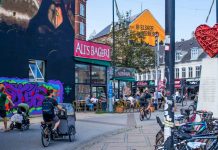
Nørrebro: Denmark’s Coolest District with an Unfortunate Bad Rep — Cultures Explained

7D Japan Itinerary For S$1.3k — A Tokyo and Mount Fuji Adventure
I have been using your website as a constant point of reference since the past two years and you guys give the best budget breakdown. Great job and thank you! I have stopped by to ask for an advise: I’m planning to travel to Greek-Spain-Germany during august. Any thoughts or would you guys suggest the best way around? I’m based in Singapore and will be flying out and in from here. Greece and Spain are my mandate.
Thanks in advance:)
Hi Pris, glad to be of help! 🙂
All 3 countries are pretty far apart! I would probably base them around flights costs. There are budget flights in and out of Berlin/Athens and budget flights between Germany and Spain.
You can consider flying in to Athens, explore Greece… take a ferry to Italy… explore Italy northwards till Germany… Do what ever you need there then take the train or fly to Spain depending on whether you want to check out France. Whether you fly back from Spain or Germany I would probably base it around the price of the tickets since time doesn’t seem to be too big a concern for you!
– Hendric
Hello, this is really an amazing two months people can enjoy and venture in Europe. Europe was always my dream to travel, still not fulfill that dream yet but I am sure it will be fulfilled soon. Thanks very much for all the information you provide and all the best with your next adventures.
What currency did you budget in? CAD, USD, Euros??? I am Canadian and trying to budget. should I budget in US dollars or Euros?
Hi Kayla, the currency reflected in our articles is Singapore dollars.
This budget-friendly Europe itinerary proves that exploring 10 countries in just two months is not only possible but also an incredible adventure that will leave you with unforgettable memories and the satisfaction of having accomplished an epic backpacking trip.
LEAVE A REPLY Cancel reply
Save my name, email, and website in this browser for the next time I comment.

7 Boutique Hotels in Singapore For an “Out of the Country”...

How to Pay in China Without WeChat or Alipay — New...

11 Things to do in Clark, Philippines — A Quiet Adventure...

20 Things to Eat-See-Do in Sabah’s Capital Besides Climbing Mount Kinabalu

Experience Macao Singapore Roadshow: Get Exclusive Deals, Experience the Macau Grand...

- Terms Of Use
- Privacy Policy
The Gallivanting Spoon
A Custom Travel Planning Service
The Ultimate 2-Month Europe Backpacking Trip

This post contains affiliate links. If you use these links to buy something I may earn a commission at no additional cost to you. Thank You and Happy Gallivanting!
Table of Contents
2-Month Europe Backpacking Itinerary & Tips
Europe is one of the most popular travel destinations in the world. It is made up of 44 countries, all connected with a system of trains making it one of the easiest places to travel. Whether you are backpacking through Europe on a budget or no budget at all, you will get to see the same stunning landmarks. We spent two months backpacking through Europe in the Fall of 2021. Planning a trip like this does take some time, but that’s where this guide comes in. This guide will give you tips on backpacking, what cities to visit, what to pack, transportation, and more!
Europe Trip Highlights
- Wandering the Charming Streets of Prague, Czechia
- Scirocco Restaurant Collaboration in Naxos
- Blue Caves Boat Tour in Zakynthos, Greece
- Eating Endless Authentic Cheap Greek Gyros
- Seeing Venice, Italy for the First Time
- Staying at a 5-Star Luxury Hotel in Florence
- Hiking the Amalfi Coast
- Relaxing by the beach in the Surf Town of Ericeira, Portugal
- Touring Barcelona for just One Day
Europe Backpacking Route
Backpacking Tips:
- Time of Year: I recommend visiting Europe in the Spring or Fall to avoid the crowds and cold weather.
- Main Forms of Transportation : Europe offers great transportation services that allows you to travel on a budget. We took advantage of the metro and public transportation services in each city. Planes, buses, and trains are a great way to travel long distances.
- Be Flexible: If you are a Type A Planner like me you will most likely have your entire trip planned out, before leaving. Not everything always goes to plan! If you are visiting Europe for an extended time, I recommend having a rough layout of where you want to visit and for how long. Some places you may love and want to extend your stay!
- Always have Extra Water and Snacks : You never know when hunger might strike, so pack some extra snacks and water. Protein bars are my go to. Many cities throughout Europe have FREE drinking water spouts, bring your reusable water bottle to fill up.
- Accomodation : We stayed in a variety of accomodations. Hostels are very budget friendly and a great place to meet people. Depending on how many people you travel with, Airbnb can be a great option with a full kitchen and extra living space. If you have the extra money, don’t be afraid to splurge on one luxury stay even if it is for just one night!
- International Drivers Liscense: Get your international driver’s license before heading to Europe. Rental shops will ask for it and if you are renting a scooter you may want to look into getting your motorcycle license as well.
- Currency: I highly recommend exchanging USD for a couple hundred Euros with your bank before crossing the pond. Europe is very credit card freindly but it is always a good idea to carry the local currency.
Europe Packing Guide
- Carry On Backpack
- Tripped Travel Gear Day Pack
- Walking Shoes
- Travel Sized Curling Iron/Straightener
- Compressable Packing Cubes
- Noise Cancelling Airpods
- Reusable Water Bottle
- Think! High Protein Bars
- USB Portable Charger
- Outlet Adapter
- Power Converter
Subscribe for my Full Packing List Free Download
Email address:
Paris, France
24-hours, 1 night.
Paris, France is one of my favorite European cities to visit. This charming city takes my breath away each and every time. Paris does a great job of making you feel like you are immersed in their culture with the numerous landmarks, stunning buildings, and delicious French cuisine. Paris was the beginning of our two-month Europe backpacking trip, and I couldn’t have been more excited.
Why only 24-hours?
We were not planning on visiting Paris at all during our two-month Europe trip because we had both spent some time in the city prior. We found cheap flights from New York to Paris that we could not pass up. Our plan was to head straight to Prague when we crossed the pound but there were not many flights to Prague until the next day. We thought we would make the best of our one night in Paris.
How Long to Spend in Paris : 5 Full Days
Must-Try Foods : French Dinner at Brasserie Dubillot , Warm Flakey Croissants, French Macarons, and Duck Confit

Prague, Czech Republic
3 days, 2 nights.
Prague is the capital of the Czech Republic and home to colorful baroque-styled buildings, the Vltava River, and the stunning Charles Bridge. Prague is very traditional with its rich and hearty cuisine. At most restaurants, you will find goulash, Svíčková (braised beef) with dumplings, Grilované klobásy (grilled sausages), and the sweet treat Trdelnik. This was our first time visiting Prague and I quickly fell in love with this romantic city, I cannot wait to return!
How Long to Spend in Prague : 4 Full Days
Must-Try Foods : Trdelnik, Tapas at Fortel , Staropramen Beer, and Svíčková (braised beef with dumplings)

Vienna, Austria
4 days, 3 nights.
Vienna is the capital of Austria and home to some of the most gorgeous buildings. You may also hear the city be called “Wien” this is the local’s way of saying Vienna. Being just south of Germany, the prominent language spoken here is German. Many people will speak English, making it easy to navigate and explore the city. There are numerous things to see in this historic and expensive city. If you are traveling on a budget but still want to get the full Vienna experience then this is the guide for you!
How Long to Spend in Vienna : 2 Full Days
Must-Try Foods : Goulash, Manner Wafers, Sachertorte, Viennese Coffee, Apple Strudel, Wiener Schnitzel

Budapest, Hungary
4 days , 3 nights.
Budapest is separated into two cities by the large winding Danube River. On the east side of the river is Pest which is known for a lively experience for tourists with bustling cafes and modern shops. Buda lies directly opposite of Pest and is home to the Buda Castle and Castle Hills. You may notice things are a little bit quieter and more relaxed here. I highly recommend visiting both sides, as they are just one mile apart with the famous Chain Bridge connecting the two.
How Long to Spend in Budapest : 4 Full Days
Must-Try Foods : Goulash, Drinks at the Ruins Bars, and Töltött káposzta (Stuffed Cabbage)

Zakynthos, Greece
6 days , 5 nights.
Zakynthos is a large northern Greek island known for its stunning Navagio beach and bright blue waters. This is a hidden gem that you may have not heard of but I highly encourage a visit! Zante (what the Greeks call it for short) is an exotic island with a natural landscape of olive trees, beaches, large cliffs, and rolling hills. We stayed in Zakynthos, Greece for one week and absolutely loved our time. If you love adventure as much as us I highly encourage a visit to this stunning Greek island.
How Long to Spend in Zakynthos : 4 Full Days
Must-Try Foods : Greek Salads, Portokalopita (Orange Cake), Lamb, and Olives

Athens, Greece
3 days , 2 nights.
Acropolis means the city at the top, Athens is home to one of the best Acropolis sites that still stands today. Millions of people visit Athens Acropolis each year, making it one of the top attractions in this large city. The Parthenon is the main building atop the Acropolis with over 60 marble columns built at a small angle. The symmetry and attention to detail is an incredible work of art that dates back to 447 BC. The Athens Acropolis is one place you should visit once in your lifetime!
How Long to Spend in Athens : 1 Full Day
Must-Try Foods : Gyros, Mousakka, Greek Dips with Homemade Bread, and Dolma

Naxos, Greece
4 days , 4 nights.
Naxos, Greece is one Greek island you need to add to your bucket list. This stunning island is home to white-sand beaches, the Temple of Apollo, and charming white stone narrow streets. The port city and capital of Naxos is Chora, Chora is a small touristy town where the ferry meets the island dropping off visitors from around the world. Keeping with the traditional Greek cuisine Naxos has some amazing restaurants, including one of my favorites in all of Europe!
How Long to Spend in Naxos : 3 Full Days
Must-Try Foods : Gyros, Saganaki, Orzo (Greek Pasta), and Naxos Cheese

Santorini, Greece
Santorini is one of the most visited and well-known Greek Islands. Its pristine white-painted buildings, blue domes, and cliff views have been posted all over the internet making this one of the top Greek islands to visit. I first thought Santorini was going to be a bit overrated and overly touristy but it ended up being one of my favorite Greek islands!
*Crete is also a stunning island I highly suggest visiting. It is great for solo travel and adventure.
How Long to Spend in Santorini : 4 Full Days
Must-Try Foods : Gyros, Saganaki, Greek Wine, and Spanakopita (spinach pie)

Venice, Italy
Venice is by far my most favorite city in Italy, with its winding canals, charming streets, and gothic palaces. This unique destination is also called “The Floating City” because it is made up of over 100 small islands. San Marco is the most popular island in Venice with historic landmarks, restaurants, and shops. This charming city will surely feel like a dream with delicious Venetian food and romantic gondola rides through the Grand Canal.
How Long to Spend in Venice : 3 Full Days
Must-Try Foods : Cicchetti, Aperol Spritz, Pasta E Fagioli, A full Italian Dining Experience, and Baccalà (local fish)

Florence, Italy
Florence is the capital of Italy’s Tuscany region and home to many museums and art galleries. Fiorenza is the birthplace of the Renaissance, the piano, and the famous frozen Italian dessert, the gelato. The famous red tin roofs and large Duomo have been photographed for years and have become a large tourist attraction with over 16 million visitors each year. This is one charming city that you will fall in love with!
How Long to Spend in Florence : 2 Full Days
Must-Try Foods : Gelato, Famous Italian Sandwiches from All’antico Vinaio, Florentine Steak Dinner, and a 5-Star Dinner at Mimesi Restaurant

Rome, Italy
We spent four days in Rome exploring all of the major landmarks. The Rome Collesuem was a highlight with the wealth of history and large presence it has. Besides eating the best Pasta Carbonaro of my life we also delved into some delicious Neopolitan and Roman food. Visit the charming Ristorante da Barbara for some classic Neopolitan and Roman dishes.
How Long to Spend in Rome : 4 Full Days
Must-Try Foods : Pizza, Pasta Carbonara, Cannolis, and Tiramisu

Positano, Italy
Positano is an Italian village located on the Amalfi Coast of Italy. This colorful city has become one large tourist destination with fancy restaurants and charming hotels overlooking the blue waters of the Tyrrhenian Sea. The city is built on a steep cliffside with winding narrow streets and lots of stairs. Positano is not the cheapest place to visit in Italy but with my top 10 budget-friendly things to do, you can enjoy all that Positano has to offer without breaking the bank.
How Long to Spend in Positano : 3 Full Days
Must-Try Foods : Pizza, Gelato, Anything Lemon, and Italian Charcuterie

Lisbon, Portugal
Lisbon (Lisboa) is Portugal’s capital and one of my favorite cities to visit in Europe. This large city is home to some of the best food with multiple Michelin Star restaurants, authentic pastel de natas, and the famous Time Out Market. Its rolling hills and yellow trams remind me of San Francisco, USA. The colorful tiled buildings and orange-painted city views will take your breath away! Lisbon is a wonderful place to visit with many things to do, famous landmarks, and great food.
How Long to Spend in Lisbon : 5 Full Days
Must-Try Foods : Pastel de Natas, Anything at Time Out Market, Salted Cod, Port Wine, and Ginja

Ericeira, Portugal
10 days , 9 nights.
Ericeira is a small surf town on the west coast of Portugal. This stunning place was added to the World Surf Reserve in 2011 making this a surfer’s paradise. Whether you surf or not you will find plenty to do here. The charming downtown offers fun shops and delicious restaurants. My favorite part was the warm ocean views and watching the waves crash in. Ericeira was a great place to regroup and relax after a lot of travel and sightseeing.
Tip: Book a long stay in a relaxing and low-cost area to take a moment and relax after traveling every 3-4 days!
How Long to Spend in Ericeira : 2-14 Days
Must-Try Foods : Seafood, Smoothie Bowls, and Pastel de Natas

Barcelona, Spain
1 day , 2 night s.
Barcelona is one of my favorite cities in Europe. The ease of living, stunning architecture, sandy beaches, and amazing food won me over after our quick visit. Antoni Gaudí paints this bustling city with architectural works of art. The grandest of them all is the La Sagrada Familia, it will take your breath away. I cannot wait to be back in Barcelona to explore more of this wonderful city!
How Long to Spend in Barcelona : 4 Full Days
Must-Try Foods : Croquetas, Seafood Paella, Patatas Bravas, and Jamon Iberico

Valencia, Spain
Valencia is Spain’s third-largest city. It is one of the country’s most beautiful places with charming warm colors, unique buildings, and large food markets. It is home to the first Paella, an authentic rice dish. The most famous attraction is the City of Arts and Sciences. Valencia is not a very popular city to visit but it will welcome you with delicious comfort food and fun activities.
How Long to Spend in Valencia : 3 Full Days
Must-Try Foods : Paella, Healthy Lunch at Salad Planet, and Fideuà Paella’s (seafood-and-noodles)

Madrid, Spain
3 days , 3 nights.
Madrid is the capital of Spain and is filled with a variety of things to do. It is home to the Royal Palace of Madrid which is the largest functioning palace in Europe. Madrid reminds me of a European New York City with a multitude of food types, large parks, and famous boulevards. The welcoming people, delicious foods, and easy transportation make this one of the top places to visit in Spain.
How Long to Spend in Madrid 3 Full Days
Must-Try Foods : Spanish Hot Chocolate with Churros, Sushi at Sakale, and Huevos Estrellados (fried eggs and potatoes)

Recommended Articles
The best italian restaurant in arizona – oregano’s italian restaurant review.

Fine Dining at Mimesi Restaurant in Florence, Italy

A Foodies Guide to St. Augustine, Florida


Europe Itinerary – Two Months in Europe
By: Author Alisha McDarris
Posted on Published: October 14, 2018 - Last updated: April 9, 2024
Sharing is caring!
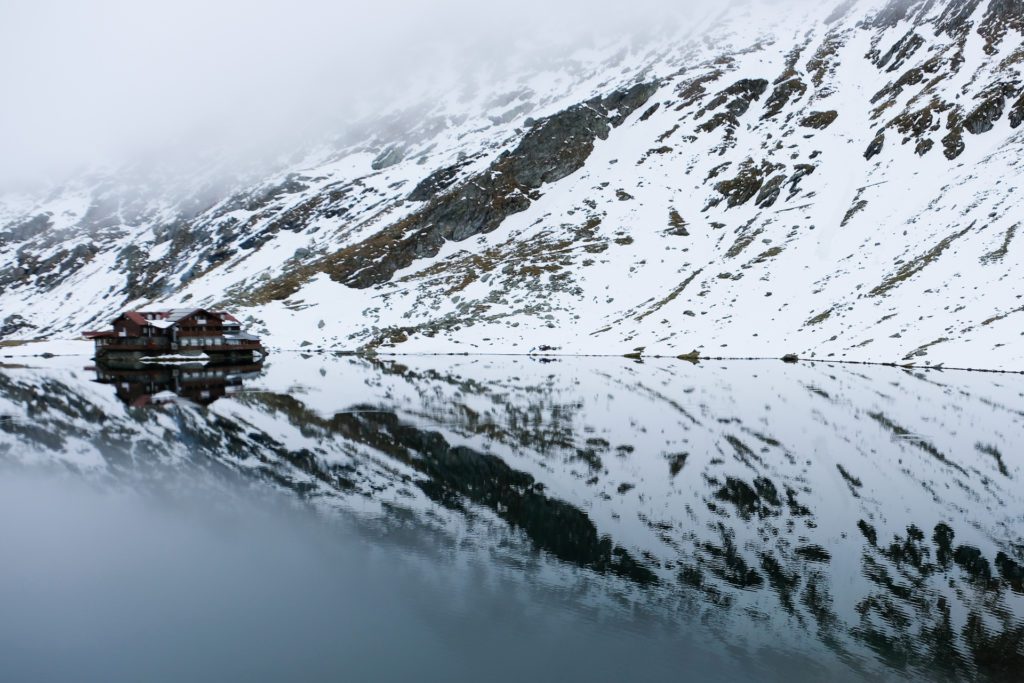
To some, two months traipsing around foreign countries seems like nothing, just another backpacking adventure around the world! To others, it seems practically inconceivable. I suppose this post is for the folks in between: the travelers who believe they can embark upon such an adventure but aren’t sure how. Well here’s our two month Europe itinerary to help get you started!
Right off the bat, you may notice several key countries are missing from the itinerary: France and Spain, for example. Here’s the thing: some countries, in our minds at least, are too big and diverse to try to squeeze into a few days, so we’re saving those for a separate trip. After all, you’d hardly scratch the surface if you tried to see the whole US in two months. The key? Pick the locations in Europe that interest YOU and go from there. But hopefully, this Europe itinerary will give you a solid jumping off point!
And we’re off!
We flew Wow Airlines from Boston to Brussels because it was only $189 per person each way with a 7-day stopover in Iceland. We were already in Massachusetts, so we left our car with a friend and hopped on a plane!
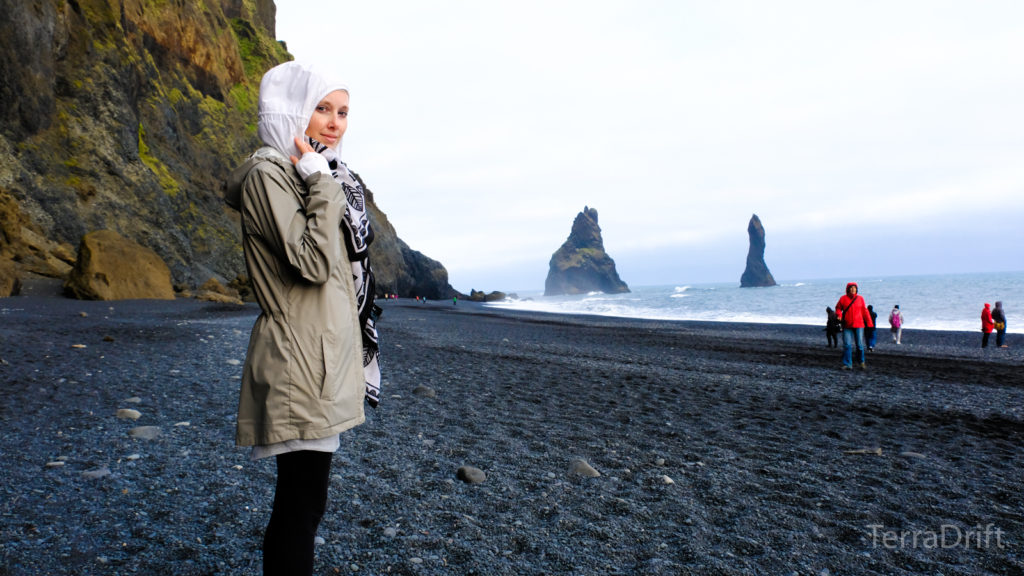
Day 1-7: Iceland
A note on Iceland: it’s freaking expensive. The third most expensive country in the world. We did not know this at the time we booked our stopover. My advice? Go for 3-4 days to check out Reykjavik and surrounds or a full 10 days and splurge on a campervan rental and drive around the whole island. It’s an amazing place, but $18 for a bowl of soup will wipe you out faster than a Maui wave.
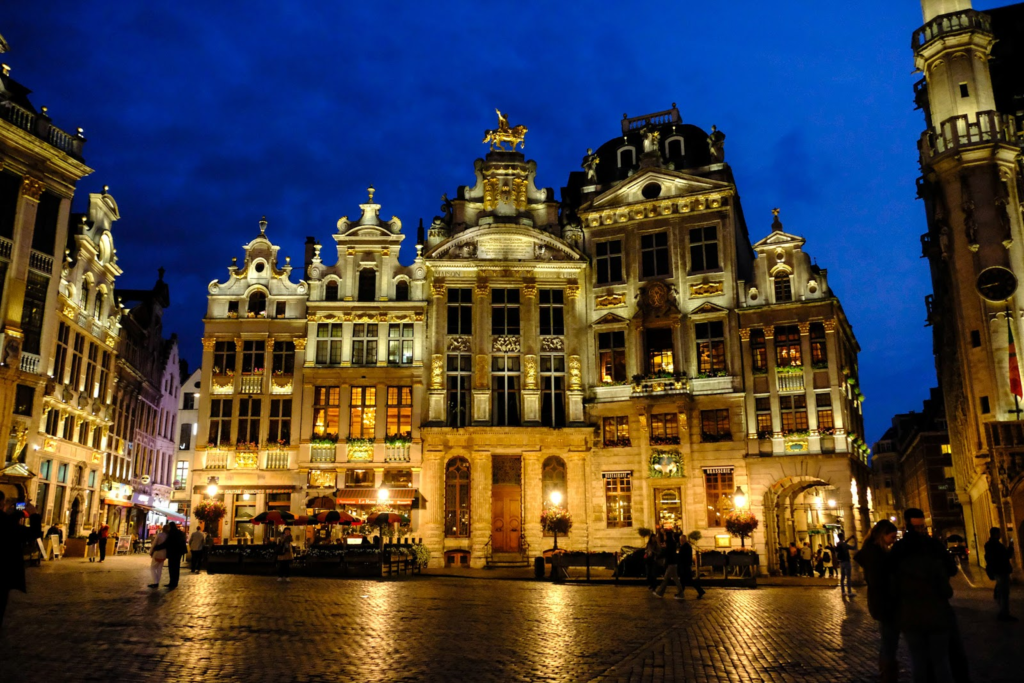
Day 8-11: Brussels, Belgium
Next, we flew Wow from Reykjavik to Brussels. Brussels has culture but is also quite touristy. There’s chocolate and crappy waffles everywhere. Do yourself a favor and don’t buy either unless you’re at a local farmers market. Do get a beer, though. Preferable at Delirium, which has literally thousands of beers available. And a killer vegan hot chocolate at Laurent Gerbaud Chocolatier is totally worth it.
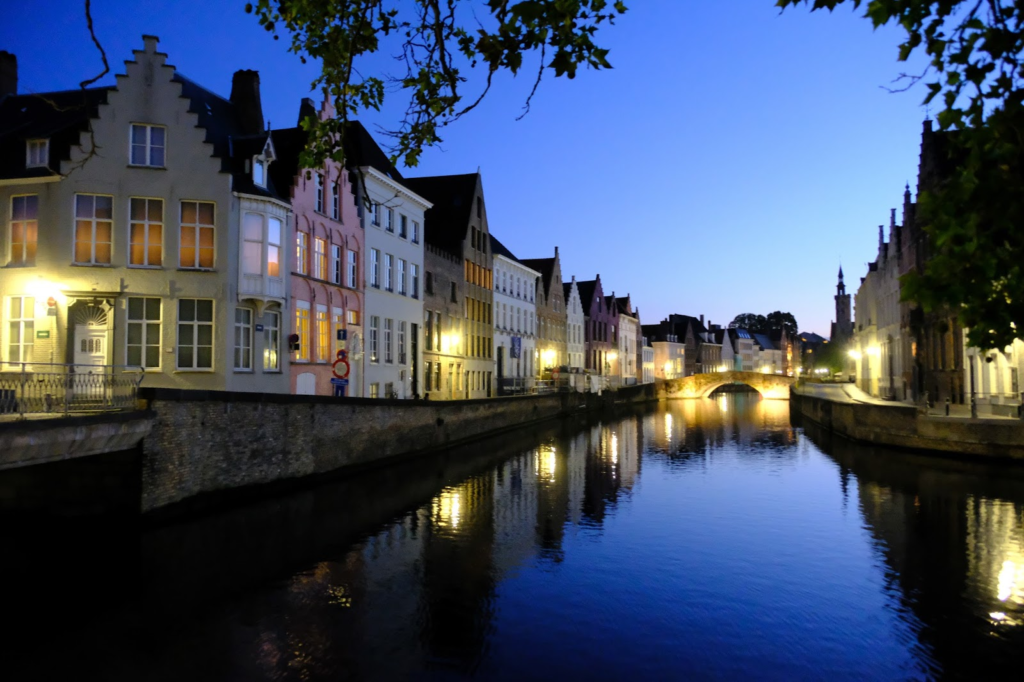
Day 12-14: Bruges, Belgium
From Brussels, we added an unexpected detour to Bruges. Locals highly recommended it so we used the rideshare app BlaBlaCar (which is like a beautiful cross between Uber and Craigslist) to hitch a ride. It was around $15 for both of us and we got to chat with a local during the hour drive. We stayed in a hostel in the gorgeous city of Bruges. It’s seriously stunning. Ever seen En Bruges? “It’s like an f***ing fairytale.”

Day 15-18: Amsterdam, Netherlands
We took a coach from Bruges to Amsterdam where we stayed with a friend we met in Iceland. This is the land of bicycles, but honestly, we were too afraid to rent some. Cycling here is seriously terrifying. If you’re not careful you might get taken out by a cyclist just walking! We survived, though, ate some of the best loaded fries I’ve ever tasted at Vegan Junk Food Bar, saw some sights, but as we’re neither pot smokers nor partiers the city lacked a certain appeal. Not as pretty as Bruges, but there’s certainly a lot going on! The red light district alone is a trip!

Day 19-23: Berlin, Germany
We took a coach back to Brussels in order to fly to Berlin, Germany for $16 per person. It was cheaper to pay for the bus and plane ticket than just to fly from Amsterdam. By quite a lot. So that’s what we did. We loved Berlin. It was the first time I felt like I fit in in Europe, what with my purple hair (what’s not shaved), and all. Plus, vegan food galore. There’s obviously tons of history in Berlin and even concentration camps within a short train ride, so history buffs would be in heaven. We’re not history buffs, but we had a pretty great time exploring anyway.

Day 24: Dresden, Germany
We left Berlin early via coach. We were headed toward Prague, but Dresden was on the way and, on the recommendation of some Germans we hitchhiked with in Reykjavik and my own desire to check it out after reading about it in a Vonnegut novel (Slaughterhouse Five, for those of you literary folks who are interested), and decided a few days earlier that a slight detour was in order. We explored what was left of the old city, wandered in the new part of the city, and enjoyed a lovely day.

Day 25-28: Prague, Czech Republic
In the evening we caught another coach the rest of the way from Dresden to Prague where we crashed on a friend’s couch for a few nights. Prague is also veeeeery touristy. It is a beautiful city, though, architecturally speaking. We had possibly the best gelato ever at Creme de la Creme, ate and ate, and wandered the winding streets, picking up cheap, tasty beer on the way.

Day 29-31: Vienna, Austria
I’ll say this about Vienna: it’s shiny and clean. We took a coach from Prague and got into our hostel in the afternoon. There are scads if old royal buildings and churches to explore, ridiculous fountains (mermen on merhorses, for example…), but the highlight for us was probably scoring ballet tickets at the TK theatre for $4 per person. The city also has a great bike share program.
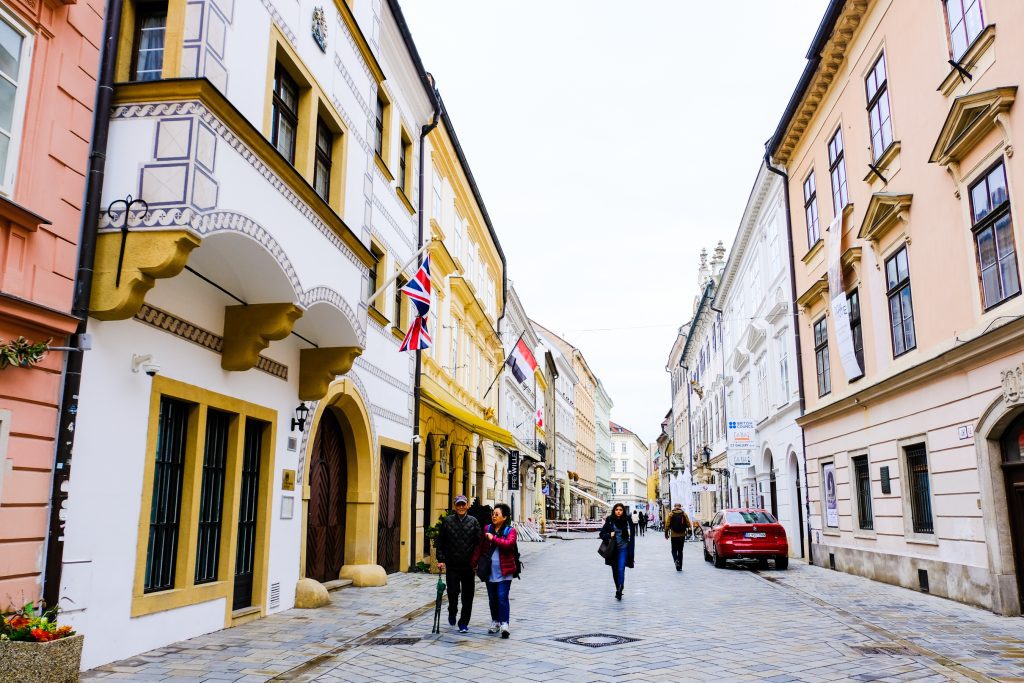
Day 32: Bratislava, Slovakia
Basically, Bratislava is practically on the way to Hungary from Vienna, so why wouldn’t we cross one more border? We only spent the morning and afternoon in this city, but the old section is plenty interesting and there are gardens and castles to keep you occupied for at least a few hours.

Day 33-35: Budapest, Hungary
Honestly, this is one city I wish we had stayed in longer. Unfortunately, it was also one of the few cities we were flying out of, so dates were pretty set. There were castles, plenty of green space, rooftop bars, cafes named for French authors, cheap vegan food and my favorite parliament building ever. A local friend showed us around one afternoon and we truly enjoyed this city split in half by a river.
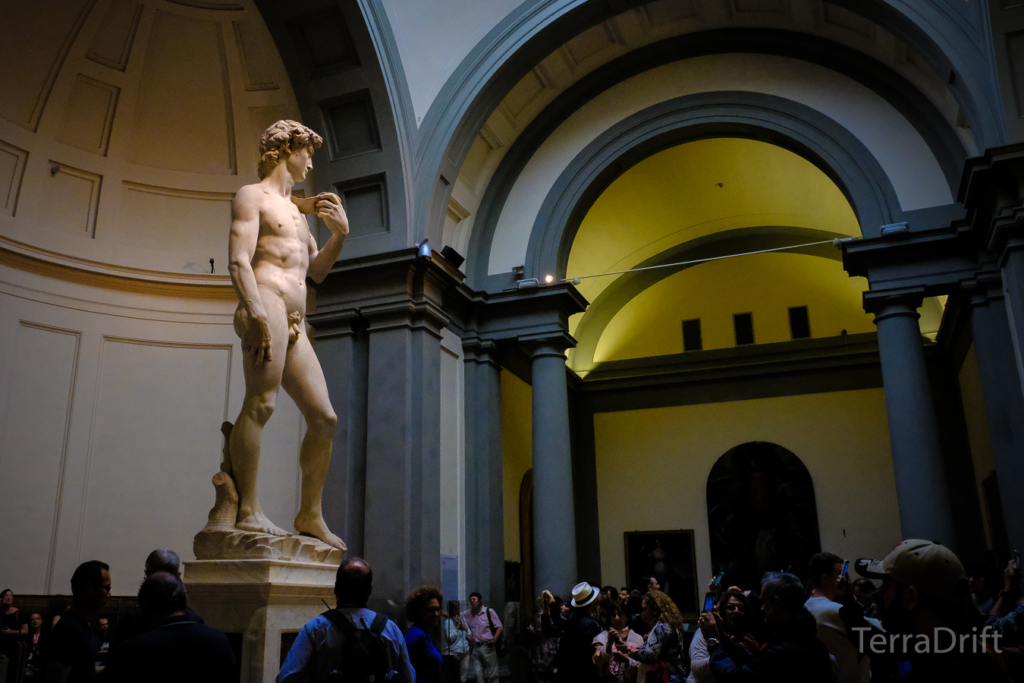
Day 36-42: Riccione, Florence , Rome , Italy
We flew from Budapest to Bologna, Italy, then took a train to Riccione where a friend lived. We stayed with her for a few days and mostly lounged in the beach and caught up on work. It was the off season so there weren’t many tourists. There was good vegan gelato at TK. After two days there, we took a train to Florence, which is brimming with art and history…and David…seriously the most amazing sculpture ever. There are also nice walks up hills, though gardens, around cemeteries, you name it. After two days there we took a train to Rome. We spent two days in Rome seeing the sights and learning about ancient history. It probably would have been even cooler had we known a bit more about it BEFORE we arrived, but what you gonna do? And we couldn’t pass up taking home a dual spout Moka pot from Bialetti before we left.
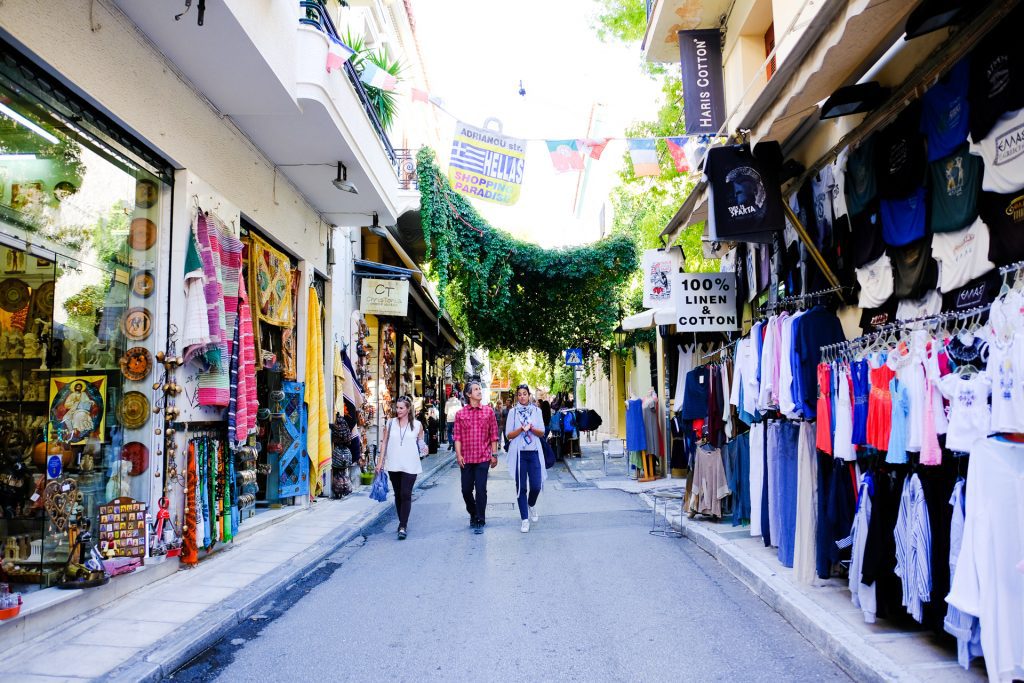
Day 43-50: Athens, Greece
This was another country we had little intention of visiting during our trip, but an Irish friend we met in Australia was going to be there so we decided to go too! Never regretted it! Cheap food, chill culture, coffee everywhere, beaches, what’s not to love? And since we did a work-stay at a hostel we got free lodging, too! Would go back to Greece in a heartbeat!
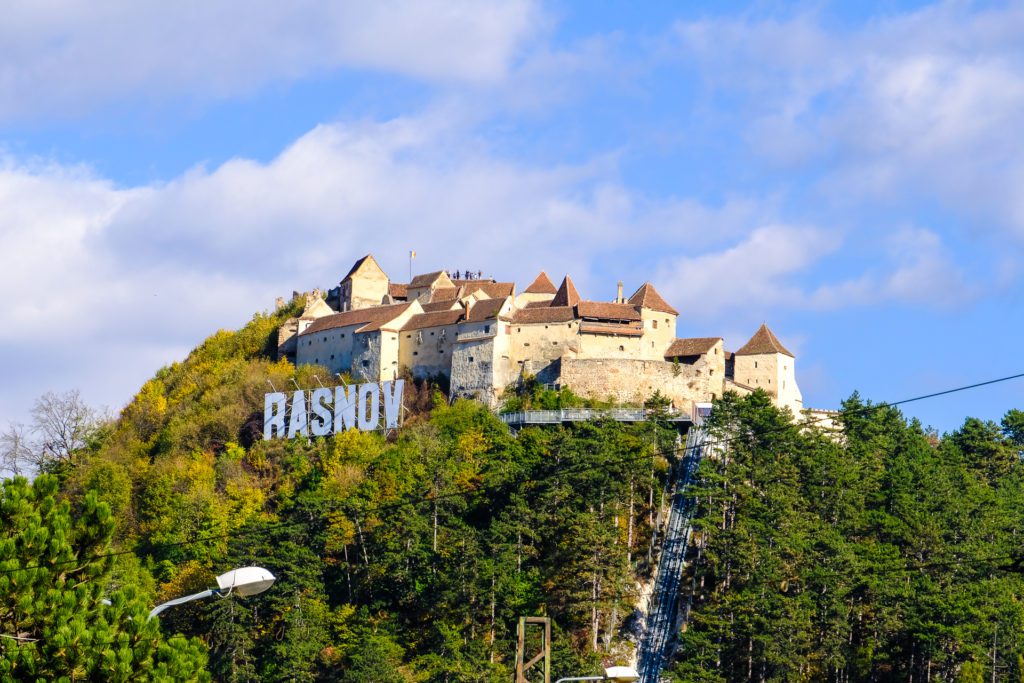
Day 51-58: Romania (Transylvania)
To clarify, Transylvania is a region of Romania. We flew into the capital of Romania, Bucharest, from Athens and met up with our Irish friend again who joined us on our 6-day road trip around the region. Castles, fortified churches, cheap food, terrible beer (from a 2-liter plastic bottle found in grocery stores), fall colors…It. Was. Amazing. We chose it because of its eerie and fictional history (Dracula, anyone?) and it turned out to be the highlight of our trip, despite the rocky start with the rental car. Moral of the story? Always choose destinations that are meaningful to you, not because an online list or guidebook (or blog post complete with itinerary) tells you to go.

Day 59-60: Going “home”
We were flying back to Boston from Bucharest, but not really. Our Wow Airlines flight was about half as expensive if we just flew the same route we traveled on the way to Europe (Boston to Brussels via Reykjavik). Plus, when we booked the flights we were thinking we’d be heading back north through France, so we’d be doing a big loop and flying out of Brussels would make sense. Well, our Europe itinerary obviously changed, so we had to fly from Romania to Belgium where we opted to sleep in the airport (the second time we did so on this trip) instead of dealing with the hassle of getting into the city, booking a hostel, and waking up at the crack of dawn to go back to the airport. Fortunately, Brussels is an exceeding comfy airport for sleeping. In the morning we hopped on a plane that had a brief layover in Reykjavik and were on our way back to the states (where we then had to drive halfway across the country back to Texas to make it home in time for Halloween). Success!
Our Europe itinerary was full of surprises, but mostly good ones. Maybe it helped you plan your own Europe itinerary. If so, let us know! Know of a few cool, off-the-beaten-path locales we should hit up next time? Share ’em! Wander on!
Alisha is a freelance outdoor journalist and photographer based in Ogden, UT. She loves backpacking, hiking, mountain biking, kayaking and snowboarding (even though she’s terrible at it). She’s also pretty sure she’s addicted to coffee. alishamcdarris.com
I'm Just A Girl
Affordable Luxury Travel
The Ultimate 2 Month Europe Interrail Itinerary & Route
This post about the ultimate 2 month Europe Interrail itinerary contains affiliate links and mentions of collaborative work with Interrail .

Are you planning to spend 2 months in Europe? Not sure where to start when it comes to creating the perfect interrail itinerary in Europe? This post is for you!
I’ve been lucky enough to experience numerous interrailing trips throughout Europe now, with our most recent trip taking us on a 2 month Europe interrailing adventure through countries such as Belgium, Germany, Italy, Switzerland, Denmark, Sweden and more!
My ultimate 2-month Europe interrail itinerary includes everything you need to know about planning the perfect trip to Europe! From spending time in popular cities such as Amsterdam , Berlin , Milan and Rome , to adventures in lesser frequented cities such as Cologne, Zürich and Ghent , I’ve compiled everything I know about interrailing in Europe into one huge itinerary and guide!
If you’re planning to spend two months in Europe, check out my ultimate Europe interrail itinerary, route and guide below!
✈️ COME TRAVEL WITH ME IN 2023/2024 ✈️
If you’ve been wanting to experience a bucket list trip, now is your chance to do it as I’m looking to host my very own group travel trips! 🤯
If you’re interested in joining, or just learning more about these trips, PLEASE fill this survey out to help me choose the destination, the dates, the activities and the cost! It only takes 2 minutes and it shows me where you might want to travel to! 👀
EUROPE TRAVEL ESSENTIALS Interrail Pass / Eurail Pass Flights: Kiwi.com Accommodation: Booking.com / Hostelworld Transport: Flixbus / Trainline Activities/tours: Get Your Guide / Viator Travel insurance: SafetyWing Reviews: TripAdvisor My backpacking essentials: Amazon
What is the Interrail Pass?
The Interrail Pass is an all-encompassing train ticket that allows you to travel on almost all available trains across Europe. With the Interrail Pass, you can choose from over 30,000 destinations in 33 European countries, with a choice of numerous different passes to suit your budget, trip length and itinerary.
How much does the Interrail Pass cost?
There are 10 different Interrail/Eurail Passes to choose from, including:
- 4 days within 1 month – £171 | £227
- 5 days within 1 month – £196 | £260
- 7 days within 1 month – £232 | £310
- 10 days within 2 months – £278 | £370
- 15 days within 2 months – £342 | £456
- 15 days (consecutive) – £307 | £409
- 22 days (consecutive) – £359 | £479
- 1 month (consecutive) – £465 | £620
- 2 months (consecutive) – £506 | £676
- 3 months (consecutive) – £626 | £833
Please note that the above prices are based on second-class Interrail Global Pass tickets. A youth ticket is for people aged 12-27, and an adult ticket is for people aged 28-60. The first price is for youths and the second price is for adult tickets.
Read more: The Ultimate 1 Month Europe Interrail Itinerary & Route
Read more: Interrail Budget For 6 Weeks – How Much Does Interrailing Cost?
Do I need a Eurail or an Interrail Pass?
A Eurail Pass is for non-European citizens and residents (such as the USA, Asia and Australia), whereas the Interrail Pass is for citizens and residents of Europe (including the UK – even after Brexit).
Both passes are exactly the same (and the same price) but you need a different pass depending on where you’re from in the world.
How to use an Interrail Pass

The best (and easiest) way to use your Interrail/Eurail Pass is by downloading the Rail Planner app. You can then add your Pass to the app using the details that would have been emailed to you when you purchased it. Check out the step-by-step guide below on how to use the Interrail Pass.
- Simply add your last name and Pass number to the app using the details on your confirmation email.
- Connect a new trip to the “My Pass” section of the Rail Planner App. You can name the trip anything you like; we named our most recent 2-month Europe interrail itinerary “Winterrailing” as we were travelling across Europe in the winter months!
- Before your trip starts, you’ll need to fill in relevant information such as your name and passport details.
- You can then choose a start date for your trip. If your trip is due to commence in the future, you can skip this part until you’re ready to travel, or you can add your intended start date when you decide on it.
- Once your trip begins, you can use the “planner” section of the Rail Planner app and add your journeys. You can do this one at a time if you’re not sure of the exact route you’ll be taking or you can choose the trains you want to take in advance and press “save journey”.
Read more: Interrail Planning Tips For Beginners – How To Plan An Interrail Trip
What are seat reservations?

While most of the trains in Europe are included in the Interrail Pass, there are some trains (such as overnight trains and high-speed trains) that require a seat reservation as they are often very busy, so a seat reservation guarantees that you can travel on a particular train. Seat reservations aren’t included in the Interrail Pass, so you will have to purchase these separately.
The cost of seat reservations depends on numerous factors, including the type of train, the type of seat (1st or 2nd class), the railway company and the country you’re travelling in/to. Some companies also charge a booking fee of €2 per seat reservation.
Countries such as Austria, Belgium, Germany, the Netherlands and Switzerland usually have the most train journeys without seat reservations, whereas countries such as France, Italy, Spain and Sweden usually require seat reservations on many of the journeys.
Read more: Is The Interrail Pass Worth It? An Honest Interrail Review
2 months in Europe itinerary map – interrail route

The map above shows the driving times for a 2-month Europe itinerary, so it’s not entirely accurate!
This route could also be adapted for a 1-month or a 3-month interrailing itinerary if you decide to purchase a shorter or longer length Interrail Pass.
You could also do the itinerary in reverse if you wanted to fly into Oslo and conclude the itinerary in Amsterdam (or London , by getting the Eurostar back to the UK from Amsterdam).
Read more: How Much Does Backpacking Europe Cost?
2 month Europe interrail itinerary summary
- Amsterdam (3 days)
- Bruges (2 days)
Ghent (3 days – with a day trip to Antwerp)
Brussels (2 days), cologne (3 days – with a day trip to düsseldorf).
- Zürich (3 days – with a day trip to Bern )
- Milan (3 days – with a day trip to Lake Como )
- Rome (4 days)
Venice (3 days – with a day trip to Burano/Murano)
- Munich (3 days)
Vienna (4 days – with a day trip to Bratislava)
- Prague (3 days)

Berlin (3 days)
Copenhagen (3 days).
- Stockholm (3 days)
- Oslo (3 days)
Many people also like to incorporate cities such as Barcelona , Paris , Madrid , Valencia , Kraków , Warsaw and more into their interrail routes, but for the purpose of this 2-month itinerary, I’ve stuck to the cities that we visited on our most recent interrail journeys.
The Ultimate 2 Month Europe Interrail Itinerary

Below, you’ll find my ultimate 2 month Europe interrail itinerary which includes the perfect route, which countries/cities to visit, how long you should spend in each place, the best day trips from each city, how to get to each place, how long it takes to travel by train to each city in Europe, the best things to do in each place and much more!
Please note that the savings below are based on my personal experience of using the Interrail Pass, prices are subject to change throughout the year.
Read more: Interrail Packing List Essentials – What To Pack For An Interrail Trip
Amsterdam (Days 1 – 4)

This 2 month Europe interrail itinerary begins in the beautiful city of Amsterdam . Known for its eclectic nightlife, intriguing culture, plentiful museums and an abundance of canals and bridges, Amsterdam is the perfect place to begin your 2 months in Europe.
Three or four days is the perfect amount of time to spend in Amsterdam. You could probably see most of the sights and attractions in just two days, but as Amsterdam is such an incredibly popular destination, many of the best sights and landmarks get super busy, so give yourself enough time to explore the wonderful city by spending a good few days there.
If you have time, you can even take a couple of day trips out of the city as well!
How to get to Amsterdam : You can fly into Amsterdam from most major airports in Europe (and beyond!). Alternatively, you can take the Eurostar from London (if you’re travelling from the UK) which is included in the price of your Interrail Pass, but you will need to purchase a seat reservation to board the train (prices start at €34). The Eurostar from London to Amsterdam takes less than four hours.
How much does the train cost without the Interrail Global Pass (15 days within 2 months): If you decide to get the train (Eurostar) to Amsterdam from London, prices start from around £51, but they can often cost upwards of £200 if you buy them last minute.
Best things to do in Amsterdam on a 2 month Europe interrail itinerary
- Visit the Rijksmuseum
- Stroll through one of Amsterdam’s most famous neighbourhoods, the Red Light District
- Check out the Heineken Experience
- Rent a bike and cycle around Amsterdam’s many canals and bridges
- Pay a visit to the Van Gogh Museum
- Visit the Anne Frank House & Museum to learn about the tragedies of the famed diarist
- Take a day trip to Keukenhof to see the beautiful gardens
Where to stay in Amsterdam
When we first stayed at City Hotel Amsterdam , it was one of the cheapest places to stay in the city, even though it’s less than a mile from the main attractions in the centre. While it’s a little pricier now, I would still recommend staying here during your 2 month Europe interrail itinerary as it has super comfortable rooms, great staff and it’s located so close to all the best sights in Amsterdam!
Read more: 3 Days In Amsterdam Itinerary – How To Spend 3 Days In Amsterdam
Bruges (Days 4 – 6) – 2 month Europe interrail itinerary

Bruges is a place that I’d had on my travel bucket list for many years, so I was super excited when we decide to visit on our most recent interrail trip.
It’s a relatively small city that can easily be explored in just one day, but there are so many beautiful sights and awesome places to eat, that I’d recommend spending two days there to ensure that you can see everything.
How to get from Amsterdam to Bruges : The train from Amsterdam Centraal to Bruges takes approximately four hours, with at least one or two changes (usually in Antwerp, Brussels or Ghent). Seat reservations are required for most journeys (prices start at €24).
How much does the train cost without the Interrail Global Pass (15 days within 2 months): This train can cost as much as €64.80 (2nd class) and €102.40 (1st class) if booked 2 days in advance or as little as €30 (2nd class) and €46 (1st class) if booked 2 months in advance. Therefore, it’s probably worth using your Interrail Pass to travel from Amsterdam to Bruges.
Best things to do in Bruges on a 2 month Europe interrail itinerary
- Visit the Frietmuseum
- Admire the stunning architecture in Market Square (Grote Markt)
- Indulge in an abundance of chocolate at the Choco-Story Chocolate Museum
- Visit the fascinating Basilica of the Holy Blood
- Take a romantic canal cruise to see the city from the water
- Eat at the House of Waffles
Where to stay in Bruges
Snuffel Youth Hostel is a great budget choice in the heart of Bruges that offers both dormitories and private rooms. Alternatively, I’d recommend Dukes’ Palace Brugge if you’re looking for something a little more luxurious, while still being located in the heart of the city.
Read more: How To See Bruges In One Day – The Perfect Day Trip Itinerary

Ghent is another Belgian destination I really wanted to visit and while I think I preferred Bruges to Ghent, I’m still so glad that we visited it because it’s so gorgeous.
There’s plenty of stunning architecture, wonderful market squares and so many great places to indulge in waffles, stews, fries, chocolate and more!
Two days give you enough time to see everything in Ghent, leaving you with the third day to take a day trip to Antwerp.
Antwerp is another great destination in Belgium that can easily be visited from Ghent and it’s less than an hour on the train. There isn’t quite as much to do in Antwerp as in the other Belgian cities featured in this itinerary, but I still think it’s worth the day trip.
Known for being the hub of the world’s diamond trade, its spectacular central train station and the beautiful Grote Markt square, Antwerp shouldn’t be missed while travelling through Europe.
How to get from Bruges to Ghent : The direct train from Bruges to Gent-Sint-Pieters (Ghent) takes approximately 25 minutes. No seat reservations are required.
How much does the train cost without the Interrail Global Pass (15 days within 2 months): This train costs €9.50 (2nd class) and €13.40 (1st class) no matter whether you book two hours before or two months before. Therefore, it’s probably not worth using your Interrail Pass to travel from Bruges to Ghent as the train tickets are so cheap.
Best things to do in Ghent on a 2 month Europe interrailing trip
- Pay a visit to Gravensteen Castle
- Climb to the top of the Belfry for stunning views of the city
- Take a guided tour of the city on a medieval boat trip
- Stroll around Korenmarkt and Vrijdagmarkt and enjoy the architecture
- Check out Saint Bavo’s Cathedral (Sint-Baafs Cathedral)
Where to stay in Ghent
If you’re looking for budget accommodation in Ghent, look no further than KaBa Hostel . Offering private rooms, as well as dormitory options, KaBa Hostel is less than half a mile from the city centre of Ghent. If you prefer something a bit more sophisticated, I’d recommend checking out B&B Achilles .
Read more: One Day In Ghent Itinerary – Is Ghent Worth Visiting?

Brussels was one of my favourite cities that we visited on our 2-week Europe interrailing trip in August 2022 and it’s definitely somewhere that I recommend visiting. While it might not be quite as charming as the likes of Bruges or Ghent, Brussels is home to some truly beautiful feats of architecture, plenty of chocolate-making workshops and intriguing museums.
You can see most of what Brussels has to offer in just two full days and as it’s located so close to Ghent, Bruges and Antwerp, it’s super easy to get to and from while you’re travelling across Belgium and beyond.
How to get from Ghent to Brussels : The direct train from Gent-Sint-Pieters (Ghent) to Bruxelles-Midi (Brussels) takes approximately 30 minutes. No seat reservations are required.
How much does the train cost without the Interrail Global Pass (15 days within 2 months): This train costs €12.20 (2nd class) and €18.60 (1st class) no matter whether you book two hours before or two months before. Therefore, it’s probably not worth using your Interrail Pass to travel from Ghent to Brussels as the train tickets are so cheap.
Best things to do in Brussels on a 2 month Europe interrailing trip
- Take a Belgian Chocolate Workshop
- Admire the magnificent Town Hall
- Visit the Atomium
- Wander through Parc du Cinquantenaire
- Spend a few hours at the Autoworld Museum
- Go window shopping at Galeries Royales Saint Hubert
Where to stay in Brussels
While it might not be the most glamourous place to stay on a 2 month Europe interrailing trip, our stay at Bedford Hotel & Congress Centre was so good. We had a huge, comfy bed, a very sizeable room and a bathroom complete with a giant bathtub (a very warm welcome after travelling across Europe by train!).
Read more: The Best 2 Days In Brussels Itinerary

The next stop on this epic two-month Europe interrail itinerary takes you to Germany, specifically to the 2000-year-old city of Cologne.
Cologne is a great place to base yourself for a few days as its convenient location in West Germany means that it’s not too far from other popular cities such as Düsseldorf, Duisburg, Essen and Dortmund.
Home to the breathtaking Cologne Cathedral, the incredibly cool and quirky Hohenzollern Bridge (known for the thousands of “love locks” that decorate the bridge), as well as plenty of museums and gardens, Cologne is a great city to add to your Europe interrailing itinerary.
I’d also recommend taking a day trip to Düsseldorf from Cologne as it’s less than half an hour on the train and while there’s plenty to see and do in Cologne, you probably don’t need three full days.
There isn’t a tonne of things to do in Düsseldorf so you can easily see everything within a couple of hours on a day trip from Cologne.
How to get from Brussels to Cologne : The direct train from Bruxelles-Midi (Brussels) to Cologne takes approximately 1 hour and 50 minutes. Please note that some trains require seat reservations of €29, but there are many direct routes available that don’t require reservations.
How much does the train cost without the Interrail Global Pass (15 days within 2 months): This train costs €72 (2nd class) and €82 (1st class) if booked 2 days in advance and as little as €31.90 (2nd class) and €47.90 (1st class) if booked 2 months in advance. Therefore, it might be worth using your Interrail Pass to travel from Brussels to Cologne.
Best things to do in Cologne on a 2 month Europe interrail itinerary
- Check out the beautiful Cologne Cathedral
- Go on a Brewery Tour and taste the local beer, Kölsch
- Spend a few hours at the Museum Ludwig
- Take a cruise down the Rhine River
- Go to the top of the Cologne Triangle Observation Deck
Where to stay in Cologne
Stadthotel am Römerturm is an excellent choice of accommodation in Cologne as it offers huge beds, and a daily breakfast buffet and it’s situated less than a 10-minute walk from the main train station (perfect for this 2-month Europe interrailing itinerary!).
Zürich (3 days – with a day trip to Bern)

After spending a few days in Cologne, take the train to the fourth European country on this itinerary; Switzerland.
Switzerland is a place that I wanted to visit for so long and after visiting numerous cities and ski resorts in the beautiful, mountainous country, I can safely say that it’s one of my favourite countries in the world.
Zürich is a great place to add to your 2 month Europe trip as it’s such a gorgeous city with plenty of things to see and do. I’d highly recommend visiting the Lindt Home of Chocolate Museum from Zürich as it’s literally a chocolate lover’s dream and the views of the Old Town from Lindenhof Hill cannot be missed!
It’s also possible to take a day trip to Switzerland’s capital city, Bern , from Zürich as it can take as little as an hour on the train (included in your Interrail/Eurail Pass!).
Bern is a very small capital city and can be explored in just one day from Zürich. Be sure to check out the Parliament Building (Bundeshaus) and Bundesplatz, the Zytglogge (Clock Tower) and the infamous bear pit next to the Aare River/Bridge to see one of the city’s oldest traditions!
Read more: 10 Best Things To Do In Bern In One Day – Perfect Bern Day Trip
How to get from Cologne to Zürich : The train from Cologne to Zürich Main Station takes between five and six hours, depending on the time of day. Most journeys have 1-3 changes, usually in Basel, Mannheim and Stuttgart. No seat reservations are required.
How much does the train cost without the Interrail Global Pass (15 days within 2 months): This train costs as much as €168.50 (2nd class) and €260.70 (1st class) if booked 2 days in advance or as little as €39.90 (2nd class) and €55.90 (1st class) if booked 2 months in advance. Therefore, it’s probably worth using your Interrail Pass for the journey from Cologne to Zürich.
Best things to do in Zürich on a 2 month Europe interrailing itinerary
- Head to the top of Lindenhof Hill for impressive views of the city
- Indulge in as much chocolate as possible at the Lindt Home of Chocolate Museum
- Wander through the Altstadt (Old Town)
- Go on a cruise on Lake Zürich
- See the beautiful Grossmunster Church , Fraumunster Church and St Peter’s Church
Where to stay in Zürich
When we first arrived at Gasthaus 210 in Zürich, I was very apprehensive as the accommodation is located directly above a 24-hour convenience store. However, our room was actually very lovely and the shower in the bathroom was perhaps one of the best we experienced during our entire 2 months in Europe!
Milan (3 days – with a day trip to Lake Como)

While many people favour the likes of Rome and Venice over Milan , I’m a firm believer that the Italian city deserves a place on this 2-month Europe itinerary as it’s super easy to visit on an interrail trip.
Milan is home to the world-famous Duomo, Da Vinci’s Last Supper, Galleria Vittorio Emanuele II and its close proximity to the wonderful Lake Como region makes it a great addition to any European interrail itinerary.
Of course, as with many of Europe’s best and biggest cities, Milan can be extremely crowded and overwhelming, but I think it’s worth battling the crowds to see the city’s top sights as it’s such a fun and energetic place!
I’ve allocated three days in Milan so you can spend two days in the main city centre and one day on a trip to Lake Como . Many people would argue that you need to spend much longer in Lake Como, but you can easily see the Golden Triangle – Bellagio, Menaggio and Varenna – in just one day!
How to get from Zürich to Milan : The train from Zürich Main Station to Milano Centrale takes between three and five hours, depending on the time of day. There are some direct routes that only take 3 hours and 15 minutes. Seat reservations are required for most journeys (prices start at €13).
How much does the train cost without the Interrail Global Pass (15 days within 2 months): This train costs as much as €96.31 (2nd class) and €157.56 (1st class) if booked 2 days in advance or as little as €40 (2nd class) and €71 (1st class) if booked 2 months in advance. Therefore, it’s probably worth using your Interrail Pass for the journey from Zürich to Milan.
Best things to do in Milan on a 2 month Europe interrailing itinerary
- Admire the spectacular Duomo di Milano and check out the views from the rooftop terraces
- Go window shopping at Galleria Vittorio Emanuele II
- Head inside The Church of Santa Maria delle Grazie and see Da Vinci’s infamous Last Supper
- Stroll through Parco Sempione and check out Castello Sforzesco
- Take a day trip to Lake Como to see the Golden Triangle
- Enjoy the designer stores in the Quadrilatero d’Oro (Fashion District)
- Embark on a guided tour of the San Siro Stadium
Where to stay in Milan
We stayed in this lovely Airbnb in Milan for three nights as part of our interrail trip through Europe and I would definitely recommend checking out Airbnb for places to stay in Milan, especially if you prefer somewhere with a kitchen. Alternatively, Booking.com has thousands of hotels, hostels and apartments all over the city.
Read more: 2 Days In Milan – The Ultimate Weekend Itinerary
Rome (4 days) – 2 month Europe interrail itinerary

Rome is a city that’s on most people’s European bucket lists and rightly so, it’s an absolutely dreamy place! Home to the world-renowned Colosseum, the Trevi Fountain, the Pantheon and of course, Vatican City and the Sistine Chapel, you could easily spend weeks in Rome and still not scratch the surface of what it has to offer!
During this two-month itinerary in Europe, I’d recommend spending four days in Rome. This should give you enough time to see many of the top sights and attractions without having to rush around the city too much. We once spent just six hours in Rome and while we saw so much during that time, we were absolutely exhausted by the end of the day!
How to get from Milan to Rome : The direct train from Milano Centrale to Rome usually takes three hours and 40 minutes. Seat reservations are required for most journeys (prices start at €12).
How much does the train cost without the Interrail Global Pass (15 days within 2 months): This train costs as much as €96 (2nd class) and €124.90 (1st class) if booked 2 days in advance or as little as €29.90 (2nd class) and €39.90 (1st class) if booked 2 months in advance. Therefore, it’s probably worth using your Interrail Pass for the journey from Milan to Rome.
Best things to do in Rome on a 2 month Europe interrailing itinerary
- Admire the marvellous Pantheon
- Visit the infamous Vatican Museums and Sistine Chapel
- Make a wish at the Trevi Fountain
- Take a tour of the world-famous Colosseum
- See St. Peter’s Basilica
Where to stay in Rome
There are over 6,000 listings in Rome on Booking.com so you shouldn’t struggle to find somewhere to stay! As with every city, the closer you are to the main sights and attractions, the more expensive hotels and hostels will be.
Read more: 6 Hours In Rome – The Best Things To Do In Rome In One Day

Three days in Venice gives you plenty of time to explore the many bridges and canals, see the breathtaking St Mark’s Basilica and Doge’s Palace, ride a Gondola along the waterways and also take a day trip to nearby Burano and Murano.
Venice is yet another Italian city that gets incredibly crowded, especially during the busy summer months, and while some people would argue that it’s a bit too overwhelming, I personally think it’s worth adding to your two-month Eurail itinerary as it’s such a unique place.
How to get from Rome to Venice : The direct train from Rome to Venice takes between four and four and a half hours (there is sometimes a change in Bologna). Seat reservations are required for most journeys (prices start at €12).
How much does the train cost without the Interrail Global Pass (15 days within 2 months): This train costs as much as €101 (2nd class) and €126 (1st class) if booked 2 days in advance or as little as €27.90 (2nd class) and €72.90 (1st class) if booked 2 months in advance. Therefore, it’s probably worth using your Interrail Pass for the journey from Rome to Venice.
Best things to do in Venice on a 2 month Europe interrailing trip
- Explore Doge’s Palace and St Mark’s Basilica
- Take a Gondola Ride along the famous canals
- Go on a day trip to Burano and Murano
- See the Rialto Bridge and the Bridge of Sighs
- Head on a street food tour to sample local Italian cuisine
Where to stay in Venice
We stayed at Hotel Castello during our time in Venice which is an adorable hotel just minutes from the Piazza San Marco. The rooms and hotel itself aren’t overly fancy, but they do the job of hosting you on your interrailing trip and I’d definitely recommend booking a stay there.
Read more: 3 Days In Venice Itinerary – How To Spend 3 Days In Venice, Italy
Munich (3 days – with a day trip to Neuschwanstein Castle )

Bavaria’s capital city of Munich is my favourite city in Germany and I would happily return there time and again. It’s a great place to visit all year round, so regardless of whether you’re planning to explore Europe by train in the summer or winter months, Munich always has something to offer.
The English Garden and Hofbräukeller Biergarten cannot be missed in the summer, whereas the Neues Rathaus and the Altes Rathaus in Marienplatz can be enjoyed all year round.
If you have time during your three days in Munich, I’d recommend taking a day trip to Neuschwanstein Castle as it looks like something straight out of a fairytale!
How to get from Venice to Munich : The train from Venice to Munich takes approximately seven to eight hours, usually with a change in Verona. Seat reservations are recommended, but not always required, for some journeys (prices start at €12).
How much does the train cost without the Interrail Global Pass (15 days within 2 months): This train costs as much as €148.90 (2nd class) and €179.10 (1st class) if booked 2 days in advance or as little as €44.90 (2nd class) and €71.90 (1st class) if booked 2 months in advance. Therefore, it’s probably worth using your Interrail Pass for the journey from Venice to Munich.
Best things to do in Munich on a 2 month Europe interrailing itinerary
- See the Neues Rathaus and the Altes Rathaus in Marienplatz
- Climb to the top of the Rathausturm (New Town Hall Tower) for views of the Old Town
- Spend an afternoon in The English Garden
- Take a day trip to Neuschwanstein & Linderhof Castle
- Admire the glorious Frauenkirche (The Church of Our Lady Munich)
- Eat and drink in Hofbräukeller Biergarten
- Enjoy Bavarian beer at Hofbräuhaus München
Where to stay in Munich
We spent three nights at the 25hours Hotel The Royal Bavarian during our first interrailing trip in 2022 and it was one of the coolest and quirkiest places I’ve ever stayed! The rooms are so uniquely decorated, the breakfast and dinner menus are utterly fantastic and it’s situated just next to Munich Hauptbahnhof (Main Station) so it’s very conveniently located.
Read more: 25hours Hotel Munich – Best Place To Stay In Munich, Germany
Read more: 3 Days In Munich Itinerary – The Ultimate Weekend Guide

Austria’s capital city, Vienna , is a must-visit on your 2 month Europe trip itinerary as it’s another city that can be enjoyed at any time of the year.
The Hofburg Palace cannot be missed, especially at sunset, and the magnificent Belvedere Palace is well worth a visit, especially during the summer months when you can explore the stunning gardens as well.
The food in Vienna is also some of my favourite in Europe and while it’s not quite as cheap as the likes of Prague, Budapest and Cologne, for example, Vienna definitely needs to be on your Europe itinerary.
How to get from Munich to Vienna : The train from Munich to Vienna Centrale takes between four and four and a half hours; there is sometimes a change in Salzburg. No seat reservations are required.
How much does the train cost without the Interrail Global Pass (15 days within 2 months): This train costs as much as €100.70 (2nd class) and €185 (1st class) if booked 2 days in advance or as little as €19.90 (2nd class) and €33.90 (1st class) if booked 2 months in advance. Therefore, it’s probably worth using your Interrail Pass for the journey from Munich to Venice.
Best things to do in Vienna during 2 months in Europe
- Admire the breathtaking Hofburg Palace
- Marvel at the Belvedere Palace
- Check out the Vienna Rathaus (City Hall)
- Visit the Schönbrunn Palace and Gardens
- See the Kunsthistorisches Museum and the Naturhistorisches Museum (Natural History)
- Ride the Giant Ferris Wheel at Prater (amusement park)
Where to stay in Vienna
If you’re looking for somewhere super fun, quirky and incredibly conveniently located, look no further than the 25hours Hotel beim MuseumsQuartier in Vienna.
This was our second stay at a 25hours Hotel (after staying at Munich’s offering) and I really couldn’t fault it at all. The rooms are so fun and individually decorated, they have a great breakfast selection, the staff are so wonderful and it’s situated right in the heart of the Museum Quarter, so you couldn’t really ask for a better location!
Read more: 2 Days In Vienna Itinerary For First-Time Visitors
Prague (3 days) – 2 month Europe interrail itinerary

Prague has been one of my favourite cities in Europe ever since Matt and I first visited in 2018 and it’s now a place that I recommend to everyone if they’re planning a Europe trip .
It might not be quite as cheap as it once was thanks to its dramatic increase in popularity in recent years, but it’s still one of the best and cheapest cities in Europe that cannot be missed.
The Old Town Hall and Astronomical Clock are must-sees while you’re in the Old Town and if you venture over the river to Prague Castle, you’ll be greeted with one of the largest castle complexes in the world.
How to get from Vienna to Prague : The direct train from Vienna Centrale to Prague Hlavni Nadrazi takes four and a half hours. No seat reservations are required.
How much does the train cost without the Interrail Global Pass (15 days within 2 months): This train costs as much as €78.30 (2nd class) and €125.20 (1st class) if booked 2 days in advance or as little as €14.30 (2nd class) and €24 (1st class) if booked 2 months in advance. Therefore, it’s probably worth using your Interrail Pass for the journey from Vienna to Prague.
Best things to do in Prague on a 2 month Europe interrailing trip
- See the Old Town Hall and Astronomical Clock
- Walk across the Charles Bridge
- Cruise along the Vltava River at night
- Pay your respects at the John Lennon Wall
- Take a guided tour of Prague Castle
Where to stay in Prague
We stayed at the Empirent Karlin Apartments in Prague which is probably one of the most beautiful places I’ve ever stayed. It’s not the cheapest accommodation in the city, but it is probably one of the most beautiful and these fully furnished apartments offer a great base for 3 days in Prague during your Europe interrailing adventure.
Read more: Empirent Karlín Residence Apartments Prague Review
Read more: 3 Days In Prague Itinerary – The Best Things To See & Do In Prague

The capital city of Germany often divides many people as some seem to love it, while others would happily never return, but after spending two days in Berlin , I can safely say that I’m in the former camp; I absolutely loved it!
The abundance of beautiful architecture throughout the city really surprised me and I was also pleasantly shocked to discover that food and drink can be remarkably cheap in some places!
Two or three days gives you enough time to see the highlights of the city, including the Berlin Wall, Checkpoint Charlie, the Berlin TV Tower, the Topography of Terror Museum and much more!
How to get from Prague to Berlin : The direct train from Prague Hlavni Nadrazi to Berlin Hauptbahnhof (Central Station) takes four hours and 15 minutes. No seat reservations are required.
How much does the train cost without the Interrail Global Pass (15 days within 2 months): This train costs as much as €273.70 (2nd class) and €365.10 (1st class) if booked 2 days in advance or as little as €29.90 (2nd class) and €43.90 (1st class) if booked 2 months in advance. Therefore, it’s definitely worth using your Interrail Pass for the journey from Prague to Berlin.
Best things to do in Berlin on a 2 month Europe interrailing trip
- See Checkpoint Charlie and the Berlin Wall
- Go to the top of the Berlin TV Tower (Berliner Fernsehturm) for views of the city
- Visit the Topography of Terror Museum
- Check out the Reichstag Building and the Brandenburg Gate
- Explore Museum Island
- Take a cruise along the river
- Wander through Tiergarten
Where to stay in Berlin
We stayed at Safestay Berlin Kurfurstendamm which was the perfect place to base ourselves for three days. Our room was pretty sizeable, complete with a double bed, desk and chair and a lovely bathroom. The hotel is also conveniently located just a couple of minutes walk from a metro station, so we could easily explore the city.
Read more: 2 Days In Berlin – The Perfect Weekend Itinerary

While the journey from Berlin to Copenhagen is incredibly long, it is 100% worth doing, especially if you have the Interrail Pass as you only need to pay an additional €6 in seat reservations for some journeys, compared to the €200+ cost of buying a ticket without the pass!
Copenhagen itself is also such a beautiful city that’s famous for sights such as the Tivoli Gardens, Nyhavn and Rosenborg Castle. It’s one of the more unique city breaks in Europe, but definitely one that’s worth experiencing!
How to get from Berlin to Copenhagen : The train from Berlin Hauptbahnhof to Copenhagen takes between eight and 13 hours depending on the time of day you travel. I’d recommend getting the earliest possible train so that you’re only travelling for eight hours. There are usually changes in Hamburg , Padborg and Fredericia. You could always spend the night in Hamburg to break up the journey as well (which is what we did). Seat reservations are recommended for most journeys, but not always required (reservations start at €6).
How much does the train cost without the Interrail Global Pass (15 days within 2 months): This train costs as much as €139.90 (2nd class) and €287.60 (1st class) if booked 2 days in advance or as little as €41.90 (2nd class) and €262.30 (1st class) if booked 2 months in advance. Therefore, it’s probably worth using your Interrail Pass for the journey from Berlin to Copenhagen.
Best things to do in Copenhagen on a 2 month Europe interrailing itinerary
- See the Little Mermaid Statue
- Embark on a canal cruise from Nyhavn
- Go to the top of the oldest observatory in Europe – Rundetaarn (Round Tower)
- Enjoy all the rides at Tivoli Gardens
- Check out Freetown Christiania
Where to stay in Copenhagen
We stayed at SleepCph in Copenhagen which is such an awesome hostel/co-living/digital nomad space just outside of the city centre!
They have dorm rooms as well as private double and twin rooms available, plus multiple lounge/work areas, a giant communal kitchen, a laundry room with plenty of washing machines/driers and awesome shower/bathroom facilities.
It’s a little out of the centre, but that only made it much cheaper than some of the more central accommodation options and it was also super easy to get to and from the city centre via public transport.
Stockholm (3 days) – 2 month Europe interrail itinerary

Unfortunately, I was incredibly unwell when we spent three days in Stockholm as part of our 2 month Europe interrail itinerary, so I didn’t get to enjoy quite as many things as I would have liked.
We did, however, manage to check out the Parliament House (Riksdagshuset), the Kungliga Slottet (Royal Palace), and the Vasa Museum and of course, we also indulged in a hearty portion of traditional Swedish meatballs!
How to get from Copenhagen to Stockholm : The train from Copenhagen to Stockholm Central takes approximately five and a half hours, with direct routes available. Seat reservations are required for most journeys (prices start at €9).
How much does the train cost without the Interrail Global Pass (15 days within 2 months): This train costs as much as €89 (2nd class) and €139 (1st class) if booked 2 days in advance or as little as €48 (2nd class) and €73 (1st class) if booked 2 months in advance. Therefore, it’s probably worth using your Interrail Pass for the journey from Copenhagen to Stockholm.
Best things to do in Stockholm on a 2 month Europe interrailing trip
- Explore the Parliament House (Riksdagshuset)
- Pay a visit to the Vasa Museum
- See the Kungliga Slottet (Royal Palace)
- Head on a local food tour to eat traditional Swedish cuisine
- Check out the Abba Museum
Where to stay in Stockholm
During our three nights in Stockholm as part of our Europe interrail itinerary, we stayed at the super cheap Stockholm Hostel .
We expected accommodation in Stockholm to be really expensive and while there certainly are many expensive hotels in the city, we loved our stay at Stockholm Hostel as it was so cheap, very comfy and very centrally located.
Oslo (3 days) – 2 month Europe interrail itinerary

The final stop on this two month Europe interrailing itinerary (should you follow this exact route!) is the Norwegian capital of Oslo .
I first visited Oslo during the winter months in 2019 and ever since, it’s been a place that I highly recommend everyone to visit. With its stunning Parliament Building, gorgeous Royal Palace and ample opportunities to take a sightseeing cruise through the many fjords, Oslo is the perfect place to conclude your 2 months in Europe!
How to get from Stockholm to Oslo : The train from Stockholm Central to Oslo S takes between six and 13 hours depending on the time of day you travel. I’d recommend getting the earliest possible train so that you’re only travelling for 6-7 hours. Direct trains are available, but there are some routes with changes in Gothenburg. Seat reservations are required for most journeys (prices start at €9).
How much does the train cost without the Interrail Global Pass (15 days within 2 months): This train costs as much as €224 (2nd class) and €249 (1st class) if booked 2 days in advance or as little as €58 (2nd class) and €86 (1st class) if booked 2 months in advance. Therefore, it’s probably worth using your Interrail Pass for the journey from Stockholm to Oslo.
Best things to do in Oslo on a 2 month Europe interrailing itinerary
- Check out the Stortinget Parliament Building
- Wander around Akershus Fortress
- Enjoy an Oslo Fjord sightseeing cruise
- See the Royal Palace & Park
- Explore the wonderful Aker Brygge area
Where to stay in Oslo
Unfortunately, the apartment that we stayed in during our 3 days in Oslo is no longer available to book, but there are plenty of excellent hotels, apartments and hostels available on Booking.com .
Read more: 3 Days In Oslo Itinerary – The Ultimate Guide To Visiting Oslo
I hope you found this ultimate 2 month Europe interrail itinerary, route and guide useful and I hope it helps you to plan an epic interrailing trip through Europe !
Related posts:
- The Best 2-Week Europe Interrailing Route
- 26+ Best European City Breaks To Take All Year Round
- 3 Days In Prague Itinerary – The Best Things To See & Do In Prague
- Interrail Budget For 6 Weeks – How Much Does Interrailing Cost?
- The Ultimate 1 Month Europe Interrail Itinerary & Route
Pin for later – 2 month Europe interrail itinerary

Are there any more cities or countries you’d add to this 2 month Europe trip itinerary? Have you ever considered using an Interrail Pass? Let me know in the comments or on Instagram at @imjustagirl_16 .

1 Month Europe Itinerary By Train – The Ultimate Interrail Route

The Ultimate Lake Como Golden Triangle Itinerary

Is The Interrail Pass Worth It In 2024? An Honest Interrail Review

2 Days In Vienna Itinerary For First Time Visitors
Leave a comment cancel reply.
Your email address will not be published. Required fields are marked *
Notify me of follow-up comments by email.
Notify me of new posts by email.

Get our Rail Planner app
Plan your trip, get extra discounts, and show your Pass as you go.

Our favourite spring routes
Celebrate spring with these 7 off-the-beaten-path train routes

All about seat reservations
Everything you need to know about booking your seats

Alternatives to Busy Routes
Travel between popular European cities without seat reservations

Through our Chatbot in the bottom right corner.

Ask the Community
Browse questions from fellow Interrail travellers, or ask your own!
- Plan your trip
Interrail Gap Year
- Order overview
- Reservations overview
- My Trips & Travelers
- {{translatedTraveler}} {{#promotional}} {{currencySign}} {{standardPrice}} {{/promotional}} {{quantity}}x {{currencySign}} {{finalPrice}}
- Child {{childPasses}}x FREE
- {{translatedPassType}}
- {{translatedValidityPeriodDescription}}
- {{translatedClass}}
- Remove Pass(es)
- {{variant.localizedTravelPackDescription}} {{quantity}}x Free
- {{variant.localizedPassUpgradeDescription}} {{quantity}}x {{currency}} {{price}}
- Your order will arrive by {{expectedDeliveryDate}} 1 x {{currency}} {{price}}
Your cart is empty
Routes for 1 month or longer by train

Madrid to Rome
Travel along the Mediterranean coast with this sunny and laidback itinerary.
- Includes Madrid, Barcelona, Nice, Genoa, Florence, Rome and more
- Travel time: 1 month or longer
Follow the sun →

Europe in 60 days
Enjoy a 2-month rail adventure through 8 different European countries.
- Includes London, Glasgow, Paris, Milan, Lucerne, Amsterdam and more
- Travel time: 2 months or longer
Take a long trip →

New and Exciting
See another side of Europe with this cool trip through 10 different countries.
- Includes Ghent, Leipzig, Bologna, Budapest, Lyon and more
See more of Europe →
1, 2 or 3 month Passes
For ultimate flexibility on a longer trip, the best Interrail Pass is a 1, 2 or 3 months Continuous Global Pass! Offering unlimited train travel, a Continuous Pass lets you use any day as a travel day, so you can add as many stops and day trips as you like.

London to Athens
Get inspired by fellow traveller Vicky as she travels all across Europe.
- Includes London, Paris, Berlin, Munich, Salzburg, Venice, Athens and more
Start exploring →
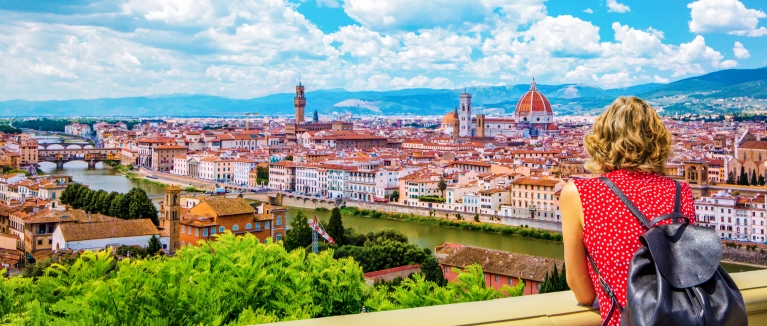
The road to Florence
Travel from Amsterdam to Florence with this beautiful route through 5 countries.
- Includes Amsterdam, Brussels, Paris, Bern and Florence
Discover this route →
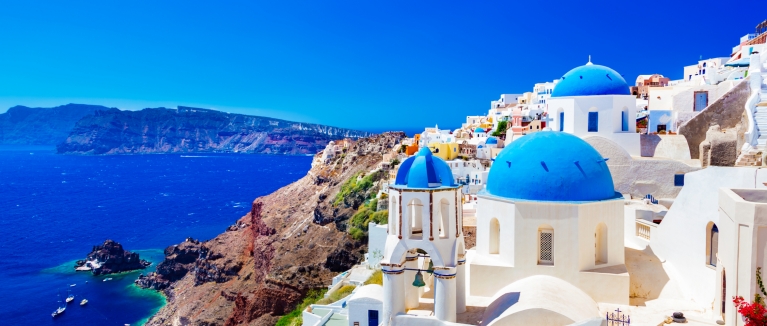
The Greek Islands
Choose which of 53 islands you want to explore with our Greek Islands Pass.
- Includes Crete, Mykonos, Santorini and 50 more islands to choose from
- Travel time: up to 1 month
Go island hopping in Greece →
2 months summer itinerary by Heather
This itinerary was sent to us by Heather , who travelled from Finland to 17 countries with her Interrail Pass! Her route took her to many of Europe's biggest attractions, as well as some secret spots.
2 months Summer itinerary →
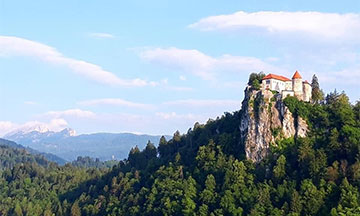
Other routes and destinations
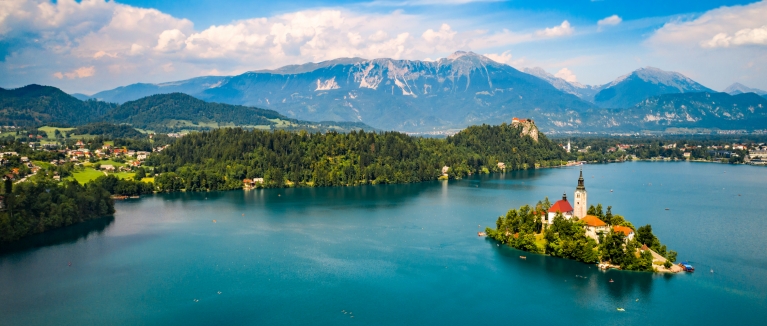
Change of currency
You cannot change the currency once you have a Pass in your cart. Remove the Pass, and then change the currency on the website header.
An EPIC Two-Month Eastern Europe Itinerary for Backpackers

Planning an Eastern Europe itinerary can be daunting. When you’re still sitting at home, it can feel impossible to figure out buses and trains, to know which destinations are really worth visiting (and for how long!) and whether or not it’s safe to be a solo traveler in Eastern Europe. That’s how I felt before I began my own two-month trip across Eastern Europe as a solo female traveler… but once I arrived and got my bearings, it was smooth sailing all the way from Albania to Estonia!
My EPIC Eastern Europe Itinerary Background
I personally followed this exact epic Eastern Europe itinerary on my own solo trip across Eastern Europe, from south or north. The trip to took me eight weeks and I usually stayed at least two nights in each destination, but aimed for three or four where possible. If you don’t have two months, you can do any section of this itinerary with the amount of time you have. For example, you could just spend ten days in the Baltics, or a week in Albania and North Macedonia. Do what works for you!
I took this trip as a solo female traveler on a backpacker budget. That meant that I used public transportation to move around and between cities, I stayed in hostels and I kept an eye on unnecessary expenses (like taxis, drinking and partying). I followed this Eastern Europe itinerary in July and August. Things were definitely busy, but I didn’t ever have to plan hostels or transportation more than a few days in advance. I carried The Lonely Planet Eastern Europe , which I highly recommend you pack and read on the bus or train between destinations.
It’s not super-relevant, but I think it’s also worth nothing that I’m a vegetarian, and I didn’t have any problems finding delicious food at any of the places I visited in Eastern Europe. From the beautiful fresh salads of the Balkans to the hearty potato pancakes and buckwheat of the Baltics, the vegetarian options were interesting, affordable and tasty.
Also, because I know I’ll get some comments, I need to point out that there is no official definition of “Eastern Europe”. There are no official boundaries between Western Europe, Central Europe and Eastern Europe; instead, it’s a matter of perception, both from the people who live in a place and the people who experience it as a visitor. I am confident that people who follow my epic Eastern Europe itinerary will end their trip feeling as though they experienced Eastern Europe.
If you’re interested in Eastern Europe but would prefer to explore one country in more depth, I have a new four-week Romania itinerary 🇷🇴 with optional extensions to Moldova and/or Hungary.
1. Corfu, Greece (2 Days)

Speaking of the divide between West and East, I began my Eastern Europe itinerary in Corfu, Greece. I don’t think anyone would say that Greece is part of Eastern Europe, but I was flying on airline points and it was the furthest east I could go before the airline reclassified my destination as Eastern Europe and made me use more points for the flight. If you’re coming from North America, you might want to look at flying into Corfu as well, since flights to Greece are often much cheaper than flights to the Balkans.
I spent two days on Corfu. First, I went into Corfu Town, did a little exploring and bought a ticket for the ferry to Albania. Then, I visited a few nearby beaches and slept off my jet lag. On the second day I signed up for a boat tour, which took us to some beaches that were further afield, a few nearby islands, and even a cave where we could swim in the darkness with bats flying overhead. I’m from Western Canada, and I liked how lush and green the Corfu landscape was, especially compared to the stereotypical images you see of other Greek islands that are all white stone everything.
Hostel Recommendation: Local Hostel & Suites
Affordable Hotel Recommendation: Pension Elena
2. Sarande, Albania (1 Night)

From Corfu, I took the ferry to Albania. The ferry costs about €25 and takes 30 minutes on a fast hydrofoil, or 90 minutes on a slower boat. I knew I’d officially arrived in “Eastern Europe” when I stepped off the ferry, walked across the parking lot to the road, and was immediately passed by a pick-up truck with a bear in the back. That wasn’t the only bear I spotted in Sarande, as some local families seemed to keep them chained in their front yard instead of a guard dog.
Sarande is a burgeoning beach town, and since I’d just come off two beach days on Corfu I didn’t feel like I needed to stay in town long. Instead, I spent a day jumping into the cool, clear sea with the local men (in retrospect I was the only female, although I don’t think I noticed at the time!), eating huge salads with fresh veggies and feta cheese, and planning my onward travel. If I was going to return to the city I would definitely stay longer and do some day trips, like to Butrint (archeological ruins) and The Blue Eye (a natural spring pool).
Hostel Recommendation: Hostel Hasta La Vista or Saranda Backpackers
Affordable Hotel Recommendation: Armar Hotel
3. Gjirokaster, Albania (1 Night)

An hour outside Sarande by bus, Gjirkaster (also spelled Gjirokastra) is a well-preserved traditional Ottoman town. Like the next destination on this Eastern Europe itinerary, Berat, Gjirokaster’s historical center is a UNESCO World Heritage Site, celebrated for its thirteenth-century castle, churches, mosques and houses.
Gjirokaster is a small town, so you only need to stay one night to see its highlights. Visit the hilltop castle (with its American spy plane monument) early or late in the day, as the afternoon sun can be scorching. Former dictator Enver Hoxha’s house has been converted into an ethnographic museum, and several other traditional houses have reopened as house museums that give you a glimpse into Ottoman life.
Depending on your travel style, you may be tempted to visit the nearby village of Lazarat, which used to be one of the largest marijuana-producing regions in all of Europe and whose underground economy made up half of Albania’s GDP (according to the Pulitzer Center ). Police stings shut down most of the industry a few years ago, so I don’t think there’s much to see or do (or buy…) today.
Hostel Recommendation: Stone City Hostel
Affordable Hotel Recommendation: Hotel Bebej Tradicional
4. Berat, Albania (2 Nights)

If you’re pressed for time, I would recommend skipping Gjirokaster and heading straight from Sarande to Berat, another beautiful, traditional Ottoman city. Located on the banks of the Osum River,
I spent two full days in Berat. On my first day, I explored the town itself. I got an early start and walked up to the citadel (Kala), then wandered downhill and checked out the different stone houses, churches and mosques. Along the riverfront there is is a pedestrian promenade that is especially nice in the evening, when the temperature drops. On my second day in Berat, I joined an organized day trip through my hostel. We took a short bus trip, then hiked through the forest to the Bogove Waterfall and spent the afternoon relaxing in the cool water (which was much appreciated, as it was over 40° Celsius at the time of my visit!).
Hostel Recommendation: Berat Backpackers Hostel
Affordable Hotel Recommendation: Hani i Xheblatit
5. Ohrid, North Macedonia (3 Nights)

Since this is an epic Eastern Europe itinerary, I think I have to mention my most epic travel fail here. I departed from Berat on the bus to Ohrid, North Macedonia… but completely missed my stop and ended up back in Greece! Well, technically speaking I realized my error at the Greek border, and thanks to the kindness of strangers I somehow made it back to Lake Ohrid, if a few hours later than expected. This is one of the few bus trips on this itinerary that may require changing buses, so ask at your accommodation in Berat about current transportation options (you’ll probably have to change in Elbasan, and maybe in Struga too).
Lake Ohrid straddles the border of both Albania and North Macedonia. I stayed on the North Macedonian side, in the waterfront town of Ohrid. I spent about a day and a half just wandering around Ohrid, including its Old Town area and the path that runs along the river. An easy walking trail takes you up to Samuel’s Fortress, a fourth-century fortress that was the capital of the first Bulgarian Empire. From here, it’s an easy walk to Saint John at Kaneo (shown above), a stunning Macedonian Orthodox church perched high above the lake. It’s easy to take picture-perfect photos from the church from the path above.
For my last day in Ohrid I took a boat over to Sveti Naum, on the opposite side of the lake. Here, there is a beautiful Orthodox monastery (occupied by both monks and peacocks), situated between the lakefront and the nearby springs and forests. I highly recommend taking a boat ride out into the springs, which are so beautiful that it feels magical.
Hostel Recommendation: Old Town Hostel
Affordable Hotel Recommendation: Villa Amfora
6. Skopje, North Macedonia (2 Nights)

Although Skopje is the capital of North Macedonia, it is relatively small, with just over 500,000 citizens. So, you can easily take in the highlights of this city with a simple two-night stay. The easiest way to get here from Ohrid is by bus, as they operate almost hourly during the high season.
My favorite thing to do in Skopje was to explore the Old Bazaar (shown above), the largest in the Balkans. More of a neighborhood than a traditional market, the streets here are full of shops, street vendors, artisans, cafes and restaurants. There are also some charming old hotels right inside the bazaar. I also liked exploring the more modern center, especially around Macedonia Square where a huge statue of Alexander the Great is the center of an evening light and fountain show.
Hostel Recommendation: Mickitos Hostel & Apartments
Affordable Hotel Recommendation: Bushi Resort & Spa (a tiny splurge with a great spa!)
7. Pristina, Kosovo (2 Nights)

Kosovo is the second-newest country on the planet (after South Sudan), and visiting Pristina is an opportunity to learn about how a country creates itself. Try to stay at a family-run hostel, like GOT Prishtina Hostel (linked below) because you can learn the most about this new nation by talking to the people who call Kosovo home.
The most famous landmark in Pristina is the National Library of Kosovo, a bizarre building with 99 domes and an exterior that seems to be entirely covered in some kind of mesh. You can enter the library and look around, although you may have to provide a passport to the security staff. Next door, an unfinished Serbian-Orthodox church stands in ruins, still unfinished, as a reminder of Kosovo’s fight for independence.
Kosovo also has other important landmarks, including an iconic NEWBORN sign celebrating its status as one of the newest countries, a statue of Bill Clinton (located on none other than Bill Clinton Boulevard) and a Catholic church dedicated to Mother Teresa (she was actually born in Skopje, but was ethnically Albanian).
Hostel Recommendation: GOT Prishtina Hostel
Affordable Hotel Recommendation: Emery Hotel
8. Podgorica, Montenegro (1 Night)

I know someone will argue with me in the comments, but I’m going to be blunt. The only reason to come to Podgorica, Montenegro is to say you’ve visited the least-visited capital city in Europe. Again, if you have to cut something from your Eastern Europe itinerary, cut Podgorica.
According to my notes I stayed here two nights, but according to my memory time stood still while I sat in 40° heat doing absolutely nothing. To be fair, I ran into another traveler who I’d met in Ohrid and the two of us did have an enjoyable afternoon visiting Ostrog Monastery, just outside the city. The drive up to this monastery, which is carved into a vertical rock face, is not for the faint of heart. Inside, the bones of Saint Basil are wrapped in silk, and local pilgrims make the journey to the monastery on foot to pay their respects.
(Want to know how to connect with other travelers during your trip? Check out my guide to making friends while traveling !)
Aside from Ostrog Monastery, or trips by car to other surrounding monasteries, there aren’t many things to do in Podgorica. I wandered around the city and checked out the Soviet-style architecture, random monuments and colorful graffiti, and from reading other bloggers’ accounts of their stays it seems that I didn’t miss out on anything more exciting.
Hostel Recommendation: Hostel Q (* not in the center!)
Affordable Hotel Recommendation: Hotel Aurel
9. Kotor, Montenegro (3 Nights)

Note: I actually recommend that you choose either Kotor or Dubrovnik, rather than staying overnight in both. Choose Kotor for a quiet, affordable stay in a place with beautiful views. Choose Dubrovnik if you’re looking for more tourist attractions, activities and parties (or if you’re a Game of Thrones fan).
Kotor is something of a hidden gem: although it gets its fair share of day-trippers (many coming on tours from Dubrovnik), the town quiets down at night and you really get the chance to take in the moody, mysterious vibe of its ancient stone center.
On my first day in Kotor I explored the historic city center by joining a walking tour. Once I had the lay of the land I took some time to retrace parts of the tour’s path and visit the interior of the Cathedral of Saint Tryphon and some of the surrounding churches. As the temperature cooled a bit I started my hike up to the Kotor Fortress, which took about an hour (to be fair, I stopped and took a lot of photos!). When I did the hike here was nobody at the entrance to collect my admission fee, but I believe it usually costs €8.
The next day I joined a full-day tour of the highlights of North Montenegro . We departed from Kotor and drove to Durmitor National Park for an easy, four-kilometer hike around the Black Lake. On the way back, we stopped at the Tara Bridge and the Ostrog Monastery (I wouldn’t have gone there from Podgorica if I’d known it was included in the tour). The national park is at a high altitude and it can be chilly under the dense tree coverage, so I recommend that you bring a jacket and long pants for the hike.
On your third day, take a day trip to Dubrovnik or simply relax and enjoy some more waterfront stolls, and maybe a few museum visits, in Kotor.
Hostel Recommendation: Montenegro Hostel 4U Party (because you need at least one party hostel on your itinerary!)
Affordable Hotel Recommendation: Guesthouse Nikoleta
10. Dubrovnik, Croatia (3 Nights)

Note: As I said above, I suggest choosing either Kotor or Dubrovnik, rather than staying overnight in both. Kotor offers a more quiet, budget-friendly stay in a place with beautiful views. Dubrovnik has more tourist attractions, activities and parties (and, I’ve been told, some landmarks you may recognize from Game of Thrones).
As I mentioned above, I opted to stay in Kotor rather than Dubrovnik, so I can’t give any personal recommendations. If you’re doing things the opposite of me, this full-day Montenegro day trip from Dubrovnik will take you to Kotor, along with the nearby towns of Perast and Budva.
With your other two days, there is lots to see and do in Dubrovnik. You’ll definitely want to spend an hour walking along the old stone walls, and for even better views you’ll want to ride the cable car up to Mount Srd (you could also hike up in about an hour, but I love cable cars!). Back down at town level, Dubrovnik’s Stari Grad , or Old Town, is full of pretty stone buildings, monuments plazas and churches.
Make your final day a beach day by renting a chair and umbrella at Banje Beach (next to the Old Town) or Sveti Jakov Beach (a bit further down the coast, but known for its soft sand and clear water). If that sounds boring to you, consider a quick boat trip to Kolocep Island, where you can hike around the island and swim at the beaches you find along the way.
Hostel Recommendation: Hostel 365 4U
Affordable Hotel Recommendation: Art Hotel Dubrovnik
11. Mostar, Bosnia and Herzegovina (2 Nights)
Mostar was one of my favorite stops on my own Eastern Europe itinerary. Named for its iconic Old Bridge, Mostar rebuilt itself, with the support of UNESCO, following mass destruction during the Bosnian War in the 1990s. The bridge you see today is a careful reconstruction of the original, which dated back to the 1560s.
In the summer months, local divers plunge off the top of the bridge into the freezing, shallow waters below. They train for years to do the dive safely, which is why I would never recommend that my readers pay the €25-50 or that they charge tourists to jump off the bridge.
There are lots of other things to see in Mostar, including the historic old bazaar district, several smaller bridges, numerous mosques and the impactful Museum Of War And Genocide Victims. The restaurants along the river were all very vegetarian-friendly at the time of my visit, so I was also able to linger over leisurely lunches and dinners with lots of grilled vegetables, fresh breads and local cheeses.
From here, your next stop will be Sarajevo. This is a spectacular train journey, and it’s highly recommended that you take the morning train and sit on the right side of the train for the best river views. (If you’re following this itinerary in reverse, and going from Sarajevo to Mostar, then you’d want to sit on the left.)
Hostel Recommendation: Hostel Mirror
Affordable Hotel Recommendation: Hotel Pasha
Looking for more budget travel tips?
Follow Fearless Female Travels on Facebook for actually-useful tips on traveling on a budget, solo female travel, and more! (No annoying emails – I promise!)
12. Sarajevo, Bosnia and Herzegovina (3 Nights)

Sarajevo was one of my favorite destinations in Eastern Europe. After Mostar, I already knew that Bosnia and Herzegovina had captured my heart, and Sarajevo only made me more sure that this was a country I’d need to explore further. I’m recommending that you stay for three nights, but I actually ended up sticking around for five nights because I was enjoying my time in the city so much!
I think the first thing you need to do in Sarajevo is a walking tour that explains the city’s old and new history. My top recommendations are:
- Old Town Walking Tour – This 2.5-hour tour starts in Bascarsija Square and delves into the city’s Ottoman history, as well as its role in the events that led up to World War 1.
- Bosnian War & Fall of Yugoslavia Tour – This three-hour tour is partially by van, as you’ll ascend up to the hills outside Sarajevo to learn more about the years the city was under siege, see the iconic Olympic bobsled tracks that were later adopted as cover by snipers, and visit the Tunnel of Hope that was used to smuggle food and medications into the city during the siege.
I did both tours during my stay in Sarajevo and don’t think my visit would have been complete without the knowledge I learned from the local guides.
I spent the rest of my time exploring the city center, visiting some of its landmarks, shopping in the markets and taking in the city’s cafe culture. Sarajevo also has some important museums, including the new War Childhood Museum, which tells the story of the Bosnian War from the perspective of local children, and Galerija 11/07/95, which memorializes the Srebrenica genocide. This is heavy stuff, but hopefully by remembering what happened we can avoid such atrocities in the future.
Hostel Recommendation: The Good Place Hostel
Affordable Hotel Recommendation: Hotel Story
13. Zagreb, Croatia (1 Night)

I never planned to visit Zagreb. Rather, it was supposed to be a quick change of trains between Sarajevo and Vienna. Unfortunately, trains in Eastern Europe aren’t the most reliable, and I ended up missing my connection, leaving me with a full day (but not an overnight) in Zagreb. I arrived around 6:00 am and had about ten hours in the city until the next train to Vienna, so I checked my backpack at the station and made it a full day of exploring.
I don’t actually think you need more than one day to see Zagreb, as with the little time (and energy) I had, I was still able to see all of the city’s highlights. From the train station I walked through the park to Ban Jelacic Square, and arrived just as some market vendors were setting up. Then, I took a funicular (apparently it’s the shortest in the world!) to the Upper Town area, with the colorful St. Mark’s Church and the eight-hundred-year-old Cathedral. On my way back down to the station I had enough time to visit the Museum of Broken Relationships, where artifacts tell the personal stories of people who fell out of love.
I’m sure I could have spent another day in Zagreb, but I was on a mission and had to get to Vienna!
Hostel Recommendation: Swanky Mint Hostel
Affordable Hotel Recommendation: Hotel Jägerhorn
14. Vienna, Austria (2 Nights)

I also didn’t plan to visit Vienna… and my prior missed train connection meant that I had even less time than expected in the Austrian capital. I arrived in Vienna just after dinner, grabbed some falafel from a street vendor, and immediately went to bed at the Wombat’s Hostel (which I really liked, and would have enjoyed staying at longer!).
I have family near Vienna, so the next morning I took a series of buses out to the village where they live and spent a few days with them. From there, I continued directly to Bratislava, so I didn’t have much opportunity to explore Vienna itself. However, most of my friends and family members have included it on their own Eastern Europe trips, so I’m sure you can find lots of good information about the city without me!
Hostel Recommendation: Wombat’s Vienna Naschmarkt
Affordable(ish) Hotel Recommendation: Hotel Domizil
15. Bratislava, Slovakia (2 Nights)

Vienna and Bratislava are super-close, and hourly trains make the trip between the two cities in just sixty minutes. Tickets cost about €10 and you don’t need to reserve them in advance. If you don’t feel like spending the night in Bratislava, it’s also a very easy day trip from Vienna.
For me, two days in Bratislava was perfect. I started by doing a walking tour with my hostel, which included stops at Bratislava’s most famous sites, including The Blue Church, Michael’s Gate, the Opera House and Primate’s Palace. After the tour, a few of us went over to Bratislava Castle and then went out for dinner and (a lot of) drinks.
The next day, I went to the medieval Devin Castle, about ten kilometers outside the city center. You can explore the old castle grounds, see where the Danube River meets the Morava River, and learn the legend of the Maiden Tower (I won’t spoil it for you!). After spending one day in the city and one day just outside, I felt like I’d spent ample time in Bratislava and was ready to move on.
(Technically, from here I detoured to another village where a childhood friend was living, but I wouldn’t recommend that you do the same!)
Hostel Recommendation: Hostel Folks
Affordable Hotel Recommendation: Beigli Hotel & Garden
16. Krakow, Poland (3 Nights)

Krakow was my introduction to Poland, and of the three cities I stayed in, it was my least favorite. To be fair, that’s only because Krakow has a lot of tourists, and there’s a reason for that – there’s lots to see and do here!
You could easily spend a day in Krakow’s Old Town, checking out the market area, listening to the trumpeter call from St. Mary’s Church, and following the Royal Road. It’s also worthwhile to visit Kazimierz , Krakow’s historic Jewish quarter, which is now a bohemian district popular with artists and designers. No matter what, don’t miss a visit to Schindler’s Factory, where you can learn how this industrialist saved more than 1,000 Jews during the Holocaust.
Of course, many people use Krakow as a base for day trips to World War 2 concentration camps. As this is something that affected my family, and since I was traveling alone, I simply didn’t feel up to visiting a concentration camp while I was in Krakow. However, for those who are prepared to take on that emotional burden, these are two highly-rated tours that include pick-up in Krakow:
- 7-hour tour of the Auschwitz Museum and Birkenau Camp to a symbol of the Holocaust and memorial to the victims of the Nazis.
- Learn the tragic story of the Holocaust on a guided tour of the Auschwitz-Birkenau Memorial and Museum.
- Visit Auschwitz-Birkenau concentration camps with a professional educator who will tell you about its history.
Hostel Recommendation: Greg & Tom’s Beer House Hostel 😉
Affordable Hotel Recommendation: Liebeskind Boutique Hotel
17. Torun, Poland (2 Nights)

For me, Torun was welcome respite from the crowds in Krakow. Everything felt a lot calmer here, and I was happy to stay in the city for a day an a half.
The most random “popular” thing to do in Torun is to visit Nicolas Copernicus’ house, which is now a house museum. Room on the ground and upper floors showcased how Polish people lived during the Renaissance, with furnishings, antiques and artworks, and also showcased some of Copernicus’ discoveries. Randomly, in the basement, there is a separate exhibit dedicated to gingerbread cookies, where you can even bake your own souvenir cookie (the staff told me they weren’t edible though?).
Torun also has a beautiful historic center with colorful row houses, towering brick churches and lots of statues and monuments. Hotel and restaurants prices here are much lower than in Krakow, making it a preferable stop for budget travelers.
Hostel Recommendation: Hostel Freedom
Affordable Hotel Recommendation: Hotel Eter
18. Gdansk, Poland (3 Nights)

Of the three cities I visited on this Eastern Europe itinerary, Gdansk ended up being my favorite. Popular with domestic tourists but not as well known to foreign travelers, Gdansk was the perfect place for me to spend three days.
Gdansk was where I felt like my high school history classes came to life. A huge highlight for me was taking the Black Pearl “pirate ship” to Westerplatte, where the first battle in World War 2 occurred. After I explored the peninsula and caught the return sailing to town, I ascended the old crane in the National Maritime Museum, which was surprisingly cool. I also spent half a day immersed in the European Solidarity Center, which tells the story of the Polish trade union and civil resistance movement under Lech Walesa (another person I’d learned about in school!).
Unfortunately, the most direct route between Gdansk and Lithuania would pass through Kaliningrad, which is part of Russia (and thus requires a Russian visa). At the time of my visit, buses that didn’t pass through Kaliningrad were only operating every other night, and were selling out quickly, so I had to wait in Gdansk an extra day until I could get a ticket. I believe this route is still operational. With this extra day I took a trip to Malbork Castle, but they had already sold of interior tickets by the time I arrived, so I recommend booking a castle tour in advance .
Hostel Recommendation: Hostel Mamas & Papas (highly recommended – it’s not in the center but it’s awesome!)
Affordable Hotel Recommendation: Qubus Hotel Gdasnk
19. Kaunas, Lithuania (2 Nights)

The overnight bus from Gdansk to Kaunas usually arrives between 4:30 and 5:00 am, so it might be worthwhile to book the previous night in a hostel if you want to be able to freshen up and rest a bit upon arrival (otherwise, definitely ask about early check-in!).
Kaunas has a small, walkable city center with some interesting attractions, like a funny little Devil Museum and the Art Deco, hilltop Christ’s Resurrection Chuch (also known as the Church on the Hill). For me, though, the most interesting thing to do in Kaunas was my visit to the Ninth Fort (shown above), a Soviet fortress that the occupying Nazis turned into a concentration camp in 1941. Where I had been uncomfortable with the idea of visiting Auschwitz, the Ninth Fort sees very few visitors and allows for a more quiet, introspective experience.
Once I arrived in the Baltics, I used Lux Express buses for all of my intercity travel. These comfortable coaches have reclining seats with footrests and seatback TVs, and if you’re feeling fancy you can pay a small surcharge for a single seat with nobody beside you.
Hostel Recommendation: The Monk’s Bunk
Affordable Hotel Recommendation: Moxy Kaunas Center
20. Vilnius, Lithuania (2 Nights)

I actually preferred Kaunas over Vilnius (again, mostly because there were so few tourists in Kaunas!) but Vilnius is definitely worth a day or two on your Eastern Europe itinerary.
Besides its historic center, the big draw in Vilnius for many backpackers is the chance to visit the self-declared “republic” of Užupis, an artsy riverside neighborhood where I ate the single worst meal of my life (seriously, go back to the historic center to eat!). As you cross the pedestrian bridge into Užupis you can stop at the information center and get a passport stamp from this “republic”.
Hostel Recommendation: 25 Hours Hostel
Affordable Hotel Recommendation: Artagonist Art Hotel
Affordable Luxury Hotel Recommendation: Relais & Chateaux Stikliai Hotel
21. Riga, Latvia (3 Nights)

My favorite city in the Baltics was definitely Riga. As a solo female traveler in Eastern Europe this was one of the easiest cities to connect with other travelers for sightseeing, adventuring and even partying.
I stayed at the Naughty Squirrel and signed up for all of the activities offered by the hostel, from walking tours of the Old Town to an excursion where we went to an underground bunker and shot AK47s (spoiler: I’m not the best sharpshooter). I got last-minute gallery tickets to the ballet, wandered through the amazing Art Nouveau district, shopped at the covered food markets and generally had so much fun. Give yourself three days here so that you can connect with other travelers and do some of those cool things you might not be able to do on your own.
Because I’m kind of obsessed with spas, I also took a day trip to Jurmala from Riga by train. Jurmala used to be a glorious Baltic spa town, though it’s a bit run-down today. Still, some of the hotels offer spa services for a very affordable price, and I was able to book in for a last-minute body scrub, Vichy shower (which was better than the actual one in Vichy, France!) and salt room session.
Hostel Recommendation: Naughty Squirrel Backpackers Hostel
Affordable Hotel Recommendation: Radisson Blu Elizabete Hotel
22. Tartu, Estonia (1 Night)

If you have to cut something from your Baltic itinerary, you can skip over Tartu. One day is ample time to explore this university town (which is extremely quiet in the summer, when the students have gone back home).
I had two days in Tartu, but I definitely only needed one. That’s enough time to see the Old Town (including the famous statue of two kissing students), the ruins of the Tartu Cathedral, and the botanical gardens. Tartu also has a few popular breweries, so when you run out of things to do you can start drinking the local craft beer from Puhaste Brewery or A. Le Coq Brewery.
Hostel Recommendation: Hektor Design Hostel
Affordable Hotel Recommendation: Villa Margaretha Boutique Hotell
23. Tallinn, Estonia (3 Nights)

And here we are at the last stop on our Eastern Europe itinerary – Tallinn, Estonia! Needless to say, by the time I reached Tallinn I had been on the road for almost two full months and I was having a lot of feelings – I was dreading the thought of being back at work in a few days, excited to keep in touch with all the new friends I’d met, and wondering if I’d ever be able to get rid of all the blisters I’d developed walking 20,000 steps a day in flip-flops (don’t worry, I’ve since switched to Birkenstocks!).
As with many of the other cities on this tour, I started my time in Tallinn with a free walking tour (I did the one recommended by my hostel). Most walking tours will take you to all the main attractions in the historic center, including Town Hall Square, the gates to the city and Alexander Nevski Cathedral. I met a guy on the walking tour and we fell in love and had babies went to the Patarei Prison, an abandoned Communist prison where the staff and inmates had just left… leaving all of their stuff inside in varying states of disarray. Unfortunately the prison is currently closed until 2026, but keep it in mind if you’re planning a future trip to Tallinn.
If I’d had one more day I would have gone to the Estonian Open Air Museum, an ethnographic museum just outside the city center. Here, they have reconstructed typical Estonian villages of the 18th and 19th centuries, so you can get a sense of what rural life would have been like.
Hostel Recommendation: Fat Margaret’s
Affordable Hotel Recommendation: Citybox Tallinn Center
Eastern Europe Itinerary Summary

This was the exact two-month Eastern Europe itinerary that I followed one summer, all the way from Corfu, Greece to Tallinn, Estonia. I did the entire trip by bus and train on a backpacker budget, usually staying in hostels but occasionally splurging on a great-value private hotel room (especially in hotels that had saunas!).
As a solo female traveler, I felt very safe in Eastern Europe. Locals treated me very kindly and the other travelers who are drawn to this route tend to be curious, social and confident (the type of people I like to travel with!).
Despite being on the road for two months, I never got bored when I was traveling in Eastern Europe. From the day I arrived in Albania and was greeted by a bear in the back of a pickup truck, to the day I flew out of Tallinn with a newly-acquired vintage leather jacket I’d bought at the market, every destination offered something different and unique. I wouldn’t hesitate to follow the same itinerary again (maybe in reverse though, just to change things up!).
Do you have questions about my Eastern Europe itinerary? Let me know in the comments and I’ll reply ASAP.
Before you go, check out my guide to saving money on travel (it’s kind of important on a long trip like this!) and my tips for making friends along the way .
Planning a trip to Eastern Europe? Pin this post for later!
The best hotels in avignon (hotels, apartments & even a castle), 7 easy ways to have fun when it rains on your vacation, you may also like, the best things to do in cascais (a..., where to stay in calgary, canada – the..., is madrid worth visiting an honest traveler’s perspective, one day in barcelona, spain – an easy-to-follow..., what is the best time to visit the..., barcelona to paris train – tips for traveling..., visiting the alcazar of segovia – 10 things..., how to use the calgary transit app, the best places to visit in mumbai in..., a 7-day kerala itinerary (solo female traveler approved).

How to Plan an Epic 2 Week Europe Trip (+ Europe Itinerary Ideas!)
Ready to plan a 2 week Europe trip but not quite sure where to start?
We want to help!
Whether it’s your first trip to Europe or your tenth, there’s something simultaneously overwhelming and exhilarating about planning a trip through multiple countries that–for us and most of the readers of this blog post–lie across an ocean from home.
I’ll never forget planning our first 2 week Europe itinerary: I pored over flight schedules, bucket lists, budgets, and maps for months, desperate to pull together the ultimate Europe trip.
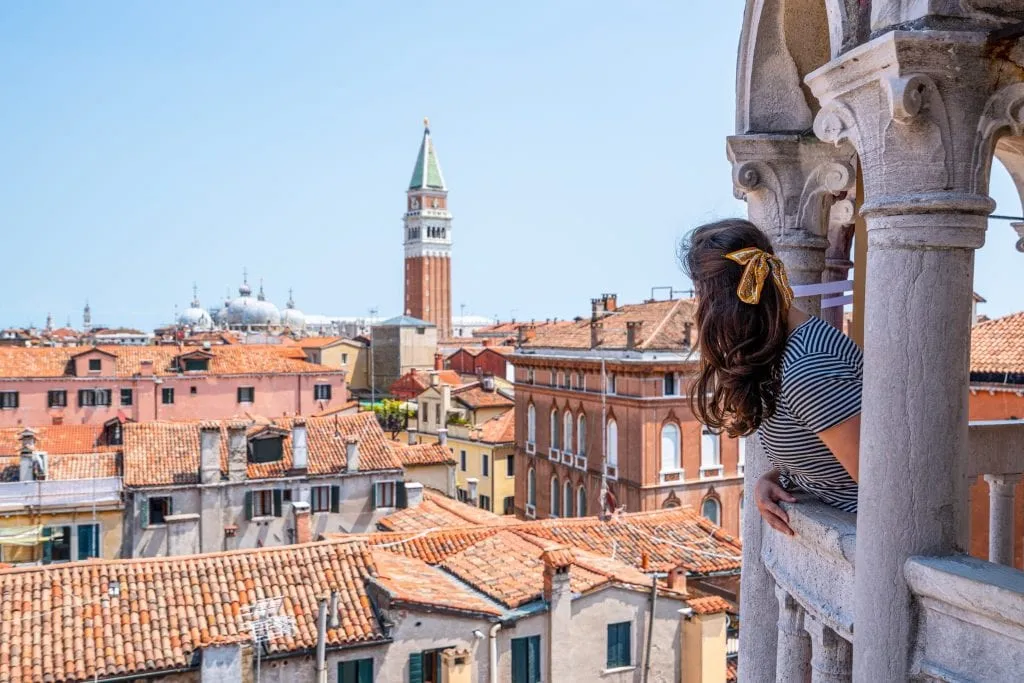
Some links in this post may be affiliate links. If you make a purchase through one of these links, we may earn a small commission at no extra cost to you. Please see our disclosure policy for more detail.
There were many, many lists involved in planning that first trip, and after months of planning, I emerged with an eclectic but incredible itinerary that kicked our love of travel into high gear.
In the summer of 2015, Jeremy and I spent a little over 2 weeks in Europe exploring Krakow , Budapest , Plitvice Lakes National Park , Zadar , Dublin , and the Cliffs of Moher (I told you it was eclectic!).
We’ve now cumulatively spent years of our lives traveling in Europe, falling in love with world-famous cities and less iconic locations alike, and there’s absolutely nothing we like better than helping people plan their own unforgettable adventures.
Over the years, we’ve explored the continent in almost every way possible, from backpacking Europe on a budget for 2 weeks to checking into luxury hotels to playing tour guide for family and friends to finally spending more than a year living in Lisbon, Portugal !
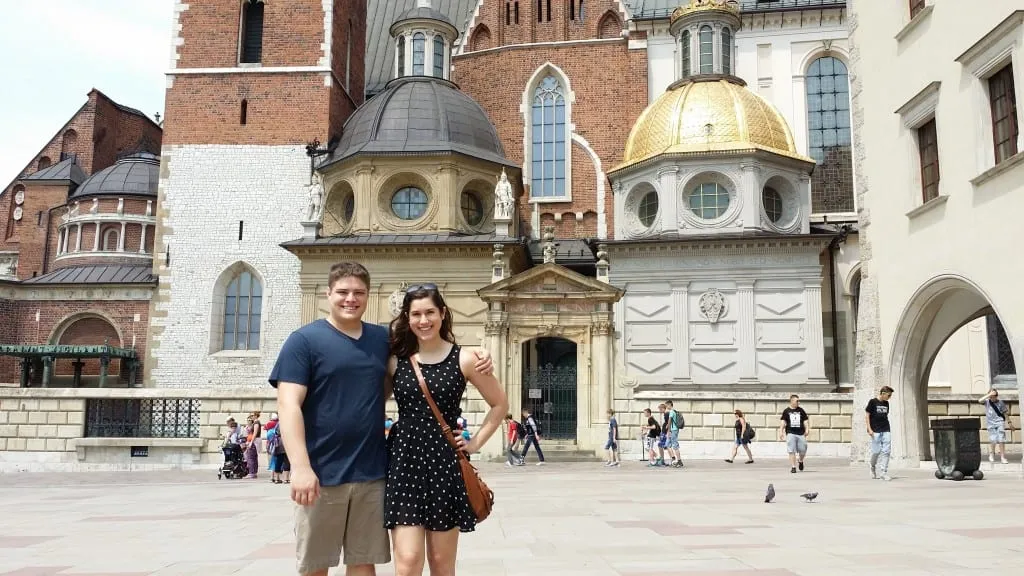
We’ve put together this 2 week Europe itinerary guide to help you plan your trip–here’s what you need to know before you go.
(Also, yes–this is an incredibly long blog post! We recommend using the table of contents right below this paragraph to help you navigate to different sections depending on what you’re hoping to read first.)
Table of Contents
How to Use This 2 Week Europe Trip Guide
Exciting 2 week europe itinerary ideas, how to get around during 2 weeks in europe, important tips for planning a 2 week europe trip, faq for spending 2 weeks in europe, what to pack for 2 weeks in europe, read more about visiting europe.
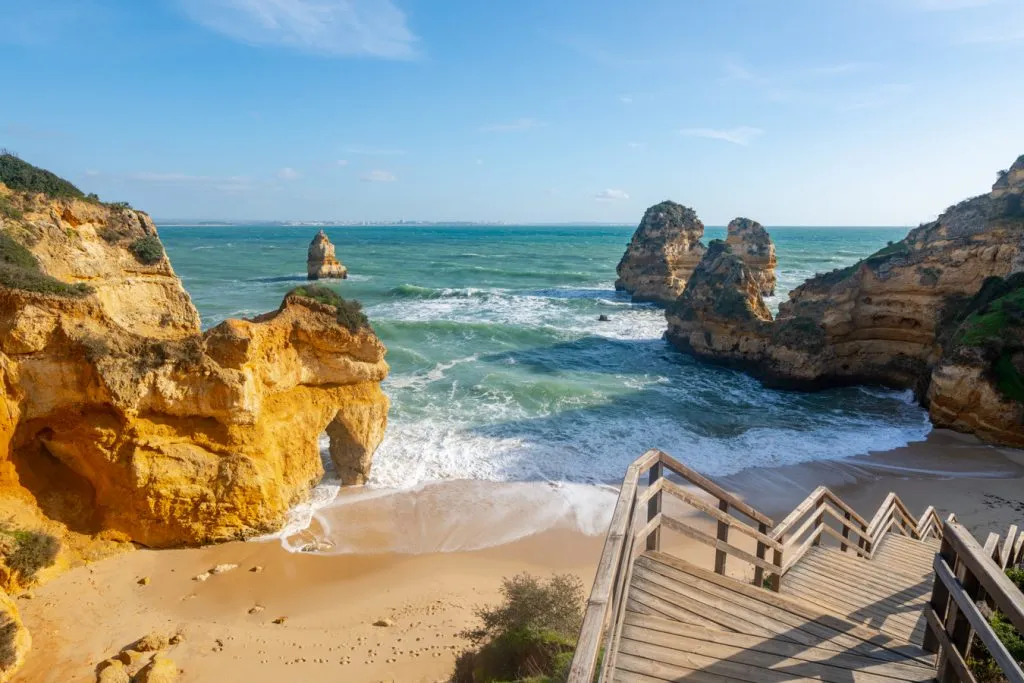
This 2 week Europe trip guide is designed for someone hoping to see the highlights of a few different European destinations, spread across multiple countries, in only a couple of weeks.
We’ve primarily written it for someone planning their first trip to Europe, but if this is your second trip, third trip, or beyond, hopefully, we have some interesting ideas and tips for you, too!
And, of course, given that Europe is home to more than 50 countries and is roughly the same size as the USA, no 2 weeks in Europe could hope to cover the entire continent or all of its numerous and distinct cultures, languages, and histories.
For ease of communication, we’ll talk in general terms about traveling in Europe here, but once you pick your itinerary, of course, you’ll want to follow up with further research on the specific locations you’ll be visiting.

And, once you’re further along in your planning process, we’d love to help you with some of that planning here on Our Escape Clause, too!
We’ll link to relevant blog posts throughout this travel guide, but given the hundreds of posts we have on the site, we won’t be able to link them all.
You can use our destinations page or the search bar on the top right of the page (on desktop) or at the top of the pop-out menu (on mobile) to find our content about various specific destinations across Europe or general travel tips.
For example, a few of our most popular guides that might come in handy next include our guide to traveling Europe by train , our 75 best Europe travel tips , and our (biased) guide to the best cities in Europe .
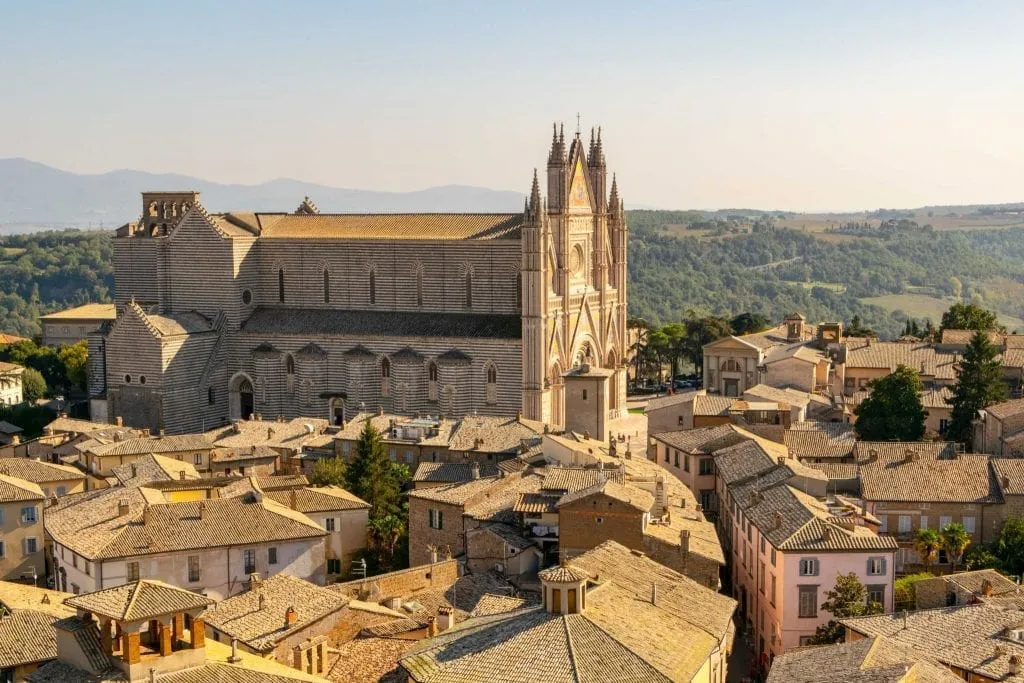
The number of possible 2 week Europe itinerary ideas is truly infinite–just look at the odd itinerary that I cobbled together for us in 2015 as an example !
However, the sample itineraries for Europe outlined below should give you a good idea of what you can accomplish with around 14 days in Europe .
I truly struggled to narrow down these ideas–I could name 10 more excellent 2 week Europe trips in an instant, and still feel like I was leaving so much on the table.
I aimed to keep these mostly focused on destinations that are popular for first-time visitors to Europe, with just a couple of slight curve balls thrown in.

The Classic: London, Paris, Rome
As three of the world’s most beloved and celebrated cities, you can’t go wrong with splitting your 2 weeks in Europe between London, Paris, and Rome.
As the capital of an English-speaking country and home to an enormous airport hub, London makes logistical sense for a first trip to Europe hailing from North America–and, of course, it’s a truly fascinating city.
Visit Buckingham Palace and Hyde Park, stroll through Notting Hill, snap photos of Big Ben, check out the Tower Bridge and the Tower of London , visit the Wizarding World of Harry Potter, stop by Piccadilly Circus, ride the London Eye , and tour the British Museum.
… And that’s just to get you started !
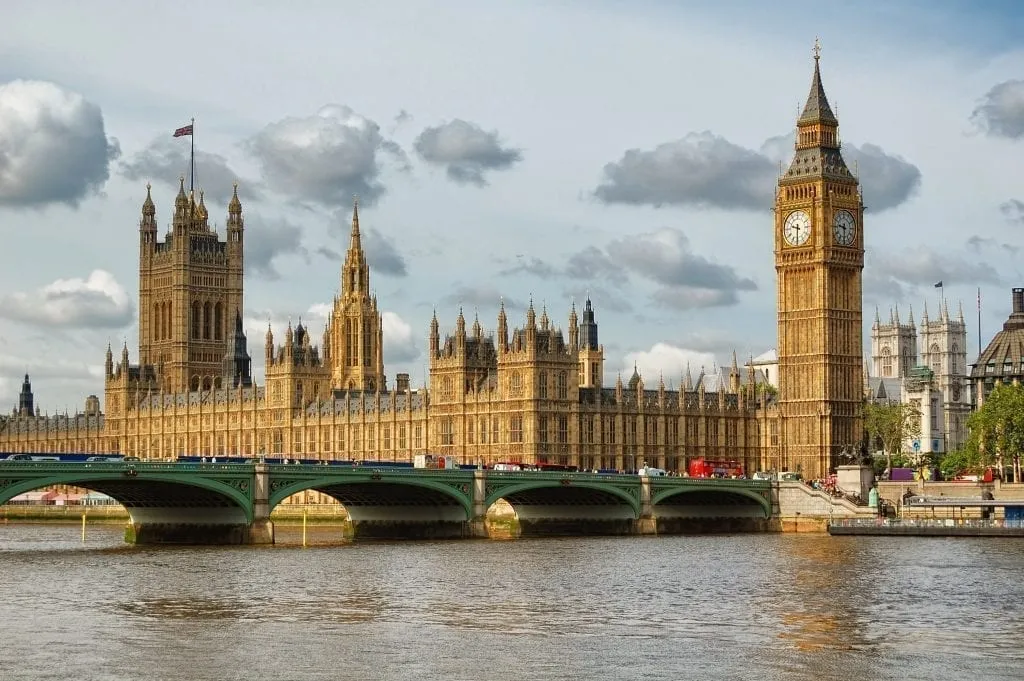
The City of Lights is one of our favorite cities in the world and was also the first place we visited on our very first trip to Europe (we spent a week there and then planned our 2 week Europe trip outlined in the introduction of this blog post the following year).
Since then, we haven’t been able to stop going back, and believe that it’s an excellent addition to any 2 week Europe itinerary!
While you’re in Paris , visit the Eiffel Tower, marvel at the beauty of Sainte-Chapelle, tour the Louvre and the Musee d’Orsay, stroll the picturesque streets of Montmartre and the Latin Quarter, visit the Palais Garnier, discover hidden passages and tiny cafes, and soak up every minute of that Parisian charm.
Our full guide to planning your first trip to Paris can help you get started!

Ah, Rome –if Paris is the first European city we fell in love with, Rome is probably our deepest love on the continent.
From wonders of Ancient Rome like the Colosseum, Roman Forum, and Pantheon to more recent additions like the Vatican Museums , Trevi Fountain, and winding cobblestone streets of Trastevere , exploring Rome is a captivating, engaging experience that we can’t recommend highly enough.
And, of course, you couldn’t ask for a better cuisine to savor during your 2 weeks in Europe: Rome is home to some of the best pasta in all of Italy!

Southern Europe Charm: Madrid, Rome, Amalfi Coast
Want your 2 weeks in Europe to focus on a delightful combination of history, food, and sunshine?
Head directly to Spain and Italy!
While Barcelona gets all the love (and a lot of the crowds), we’re personally smitten with the Spanish capital of Madrid… and excellent flight deals from North America make it almost irresistible on a 2 week Europe itinerary.
With a few days in Madrid , you can admire world-class art in the Prado, soak in Spanish culture with a stroll through Retiro Park, eat all the tapas and churros con chocolate you can get your hands on, tour the Royal Palace , check out an Egyptian temple, and take day trips to fairytale towns like Toledo and Segovia.
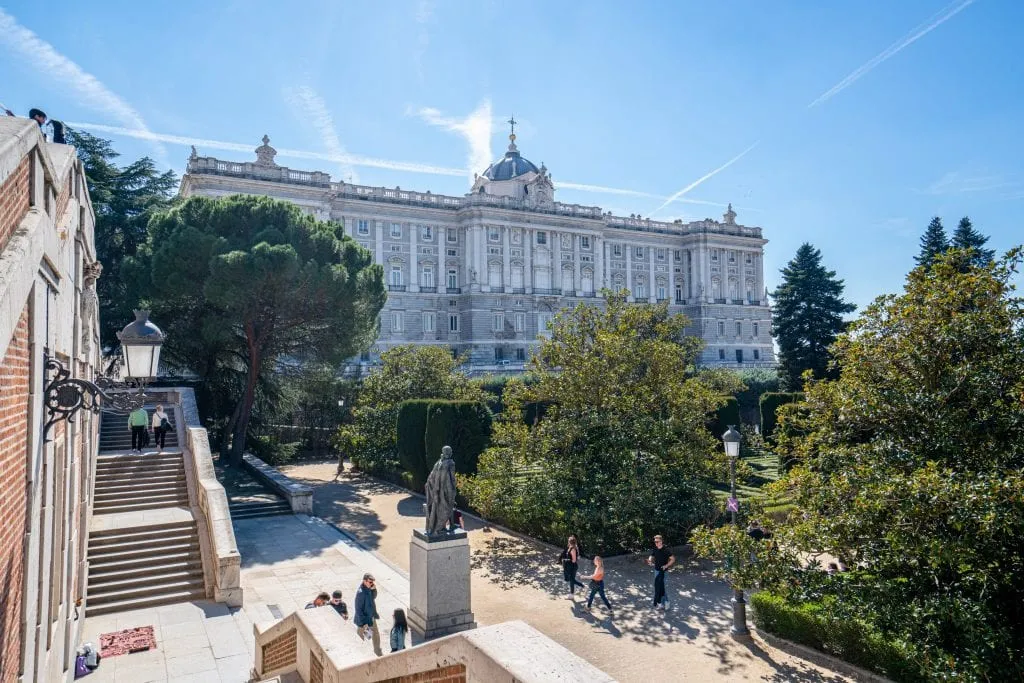
I described Rome in the first Europe itinerary on this list, so I won’t repeat myself here, but as I sit typing this Europe travel blog post out in a Rome apartment while dreaming of the carbonara I’ll eat for dinner tonight, all I can say is: you won’t regret coming to Rome (and scroll up for more details).
And, while I detailed some of Rome’s highlights above, let me also say… don’t forget to get off the beaten path in the Eternal City , either!
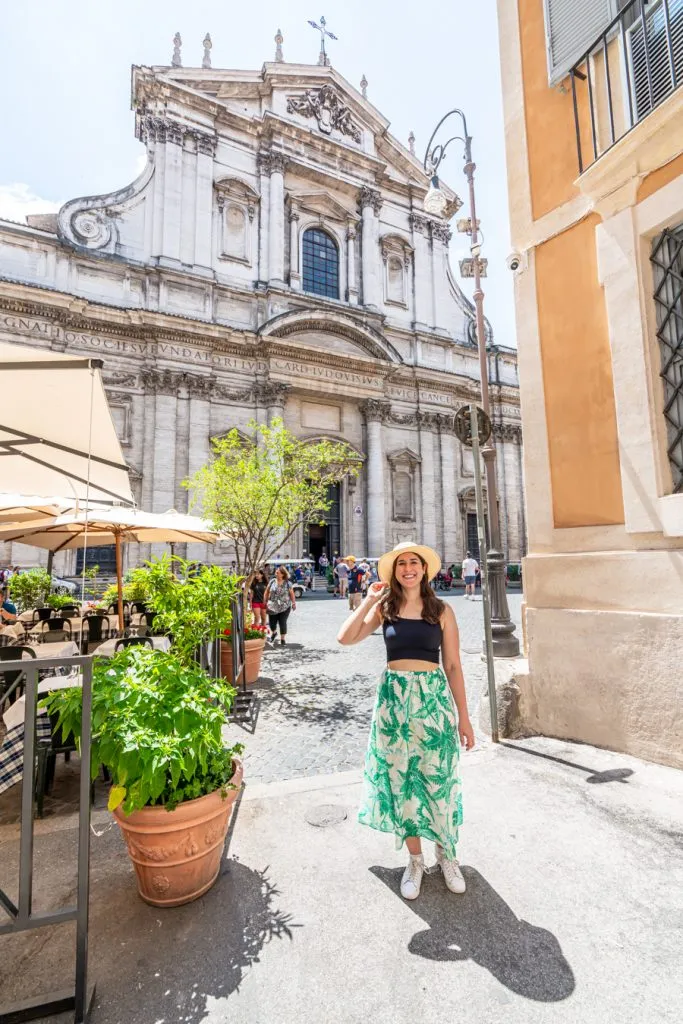
Amalfi Coast
The famed Amalfi Coast , with its dramatic cliffs, chic villages like Positano, delicious lemons, and jaw-droppingly beautiful hikes like the Path of the Gods, is a fabulous conclusion to any 2 week Europe trip–where better to relax than one of the most beautiful coastlines in the world?
While you’re there, be sure to make room for plenty of day trips!
Iconic locations like Capri and Pompeii , as well as less-popular but equally amazing spots like Ischia, Herculaneum , and Procida, are all at your fingertips when staying on the Amalfi Coast.
(Also, if you like page-turning novels about friendship and Italy, I highly recommend reading Elena Ferrante’s My Brilliant Friend series before coming or while visiting Europe).
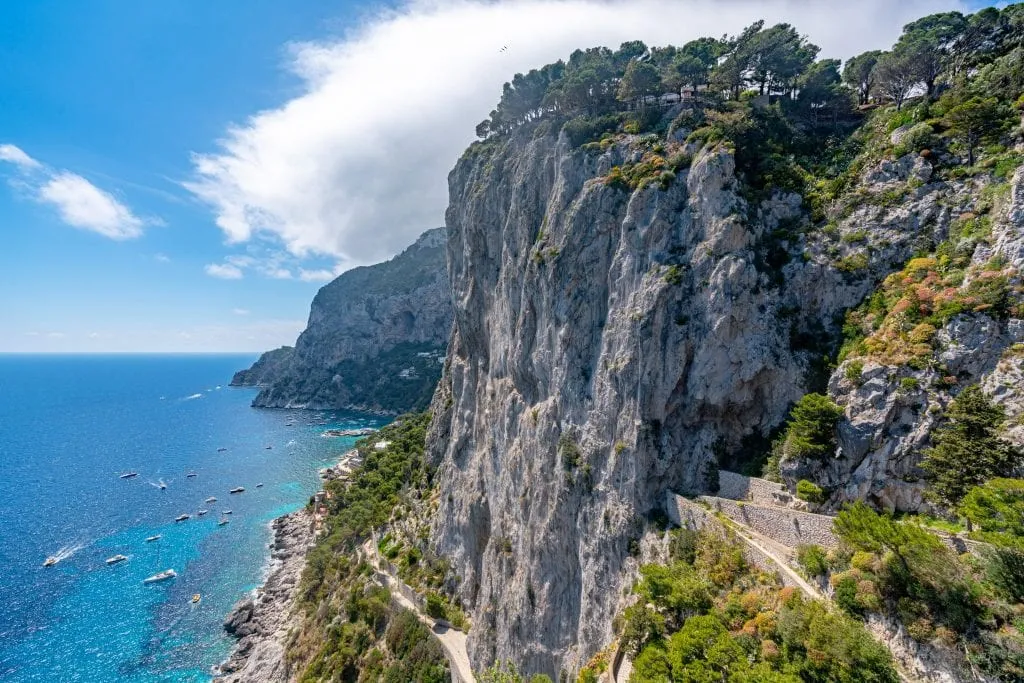
Regal Central Europe: Prague, Vienna, Budapest
Sweeping boulevards, dramatic architecture, beautiful coffeehouses, and tasty comfort food: a trip to Central Europe is an absolute delight.
In my opinion, this region truly shines during the winter months when Christmas markets are in full swing and the hearty cuisine keeps you warm from the inside out.
I’ll try to keep this section quite brief, as I’ve already written a detailed Central Europe itinerary here , but suffice it to say, we love it.
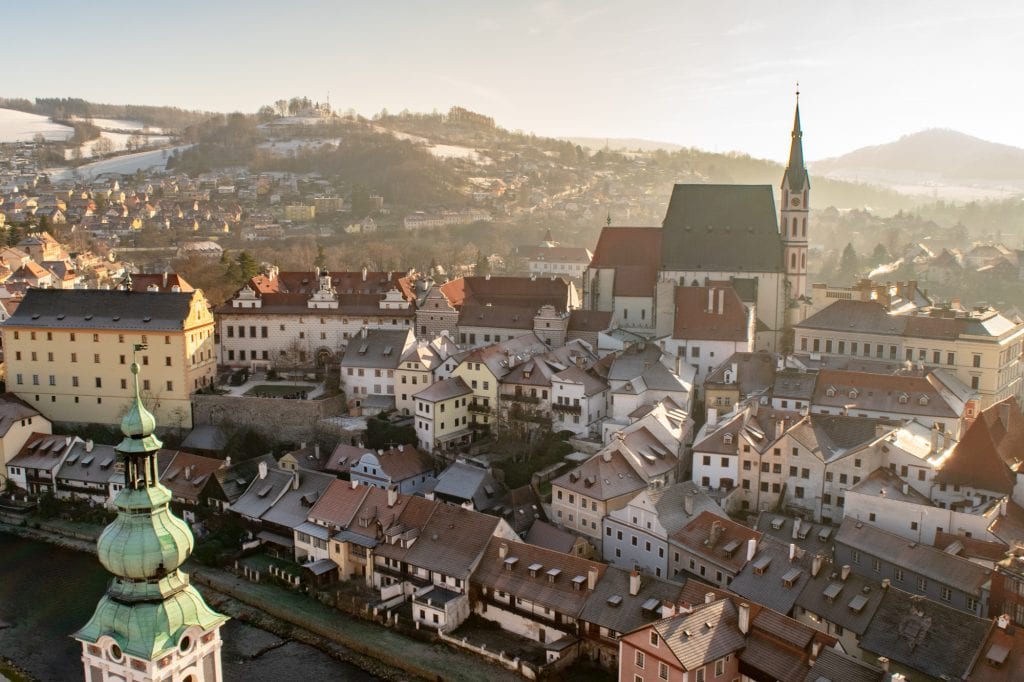
Known as the City of a Hundred Spires (and also for the fact that beer is cheaper than water here–true story, at least when it comes to pricey bottled water at restaurants), Prague is easily in the running for the most beautiful city in Europe.
The beauty of Prague Castle, St. Vitus Cathedral, the famed Charles Bridge, and Prague’s well-known astronomical clock will all draw you in.
If you have enough time, consider adding a day trip to a smaller Czech town like gorgeous Český Krumlov as well!
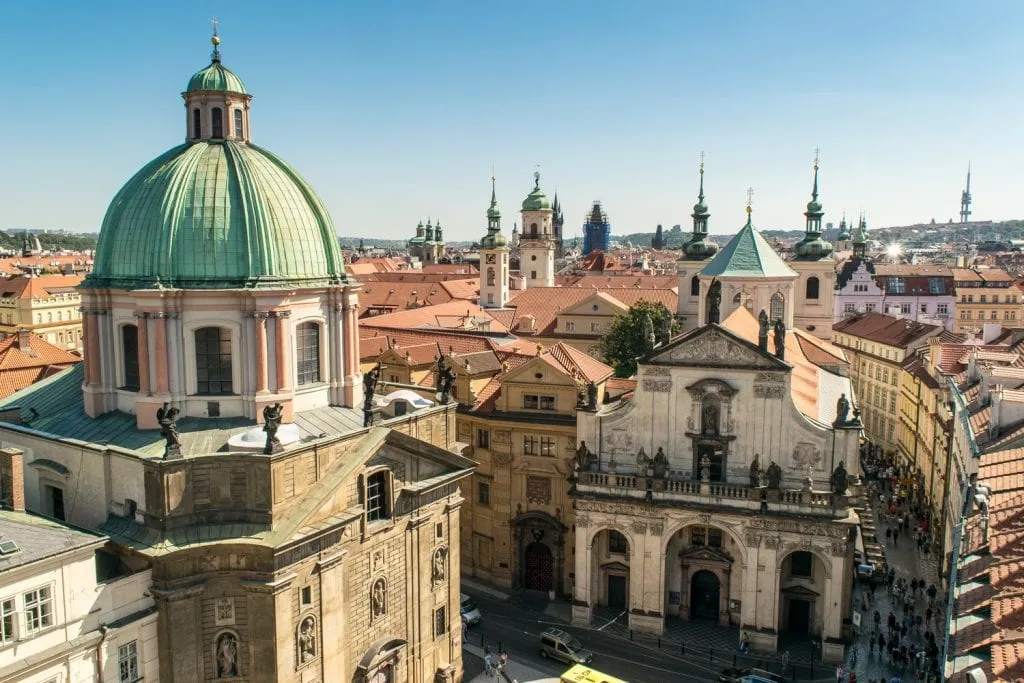
Regal and beautiful, full of spacious, wide avenues and ornate buildings, Austria’s capital city is the perfect place to come to tour grand palaces ( Schonbrunn is one of the most popular), see a show in one of the world’s premier opera houses, and to enjoy European cafe culture at its finest.
We absolutely adore Vienna’s coffee houses–be sure to try a slice (or several) of Esterhazy Cake while there, as well as Viennese hot chocolate.
The city’s famed Spanish riding school and striking St. Stephen’s Cathedral are also worth adding to your list!
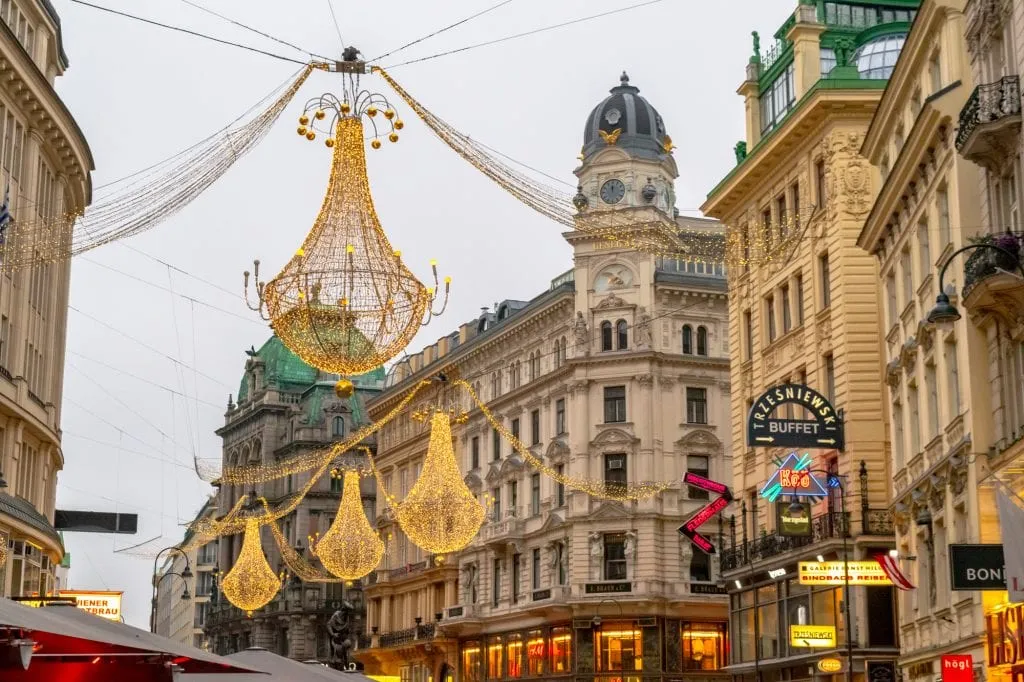
As our favorite city in central Europe and one of our top 10 cities in Europe overall, I really can’t say enough about how beautiful Budapest is!
The city is somehow, simultaneously, both grand and down-to-earth , absolutely gorgeous while also remaining accessible, affordable, and fairly simple to visit and explore.
While in Budapest, go for a soak in the famous thermal baths, tour one of the most beautiful houses of Parliament in Europe, check out a castle, visit grand basilicas, take a boat ride down the Danube, and, if you’re up for a bit of adventure, even go on a cave tour!
Be sure not to miss the great food , either–Budapest’s hearty cuisine is a delight, and one of our all-time favorite wine tastings took place there!
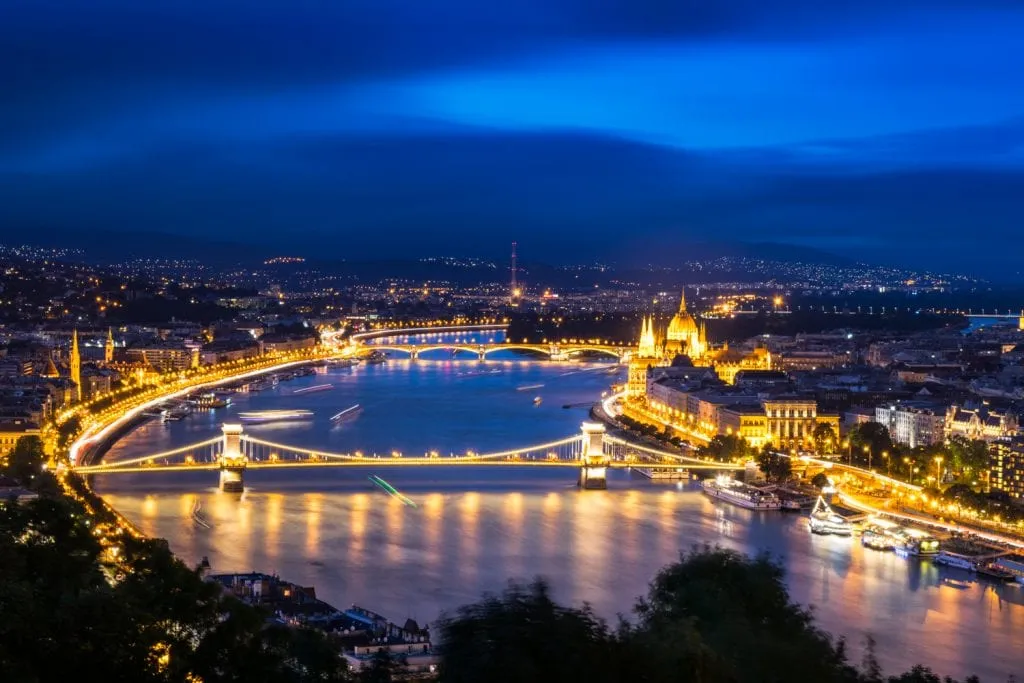
Europe for Art Lovers: Paris, Florence, Venice
If you’re an art buff at heart, you can’t ask for a better sampling of some of the continent’s most beloved artistic cities than the trifecta of Paris, Florence, and Venice (and it certainly helps that each city is practically an art museum in and of itself).
From the Louvre to the Musee d’Orsay to the Orangerie to the Musee Rodin to the Centre Pompidou to the Cluny Museum, it would probably take a lifetime to enjoy all the art museums in Paris alone.
And of course, the city has so much more to offer once you need a break!

Nicknamed the Cradle of the Renaissance, Florence boasts the finest collection of Renaissance art on the planet–and claims many of its most famous artists as locals.
Michelangelo, DaVinci, Botticelli, and more all originally hailed from Florence, and their works are scattered about the city.
Perhaps most famously, Michelangelo’s David is in the Galleria dell’Accademia and Botticelli’s The Birth of Venus is in the Uffizi Gallery .
And of course, no art-focused trip to the Cradle of the Renaissance can overlook Florence’s iconic Duomo , a masterpiece of the era!

Located an easy train ride away from Florence, Venice may be slightly less well-known for its art than the first two cities on this 2 week Europe itinerary, but there’s no doubt that there’s plenty to find!
From the utter masterpiece of St. Mark’s Basilica (don’t miss a chance to go in!) to the incredible Doge’s Palace to the famous Galleria dell’Accademia (not to be confused with the one in Florence!) that focuses mostly on Venetian artists, Venice is an art lover’s dream.
Mix it up by adding a visit to the Peggy Guggenheim Collection, which holds modern art, and a gondola ride .
A fter all, Venice itself is no doubt one of the best artistic masterpieces in the city, and it deserves to be seen from all its best angles.
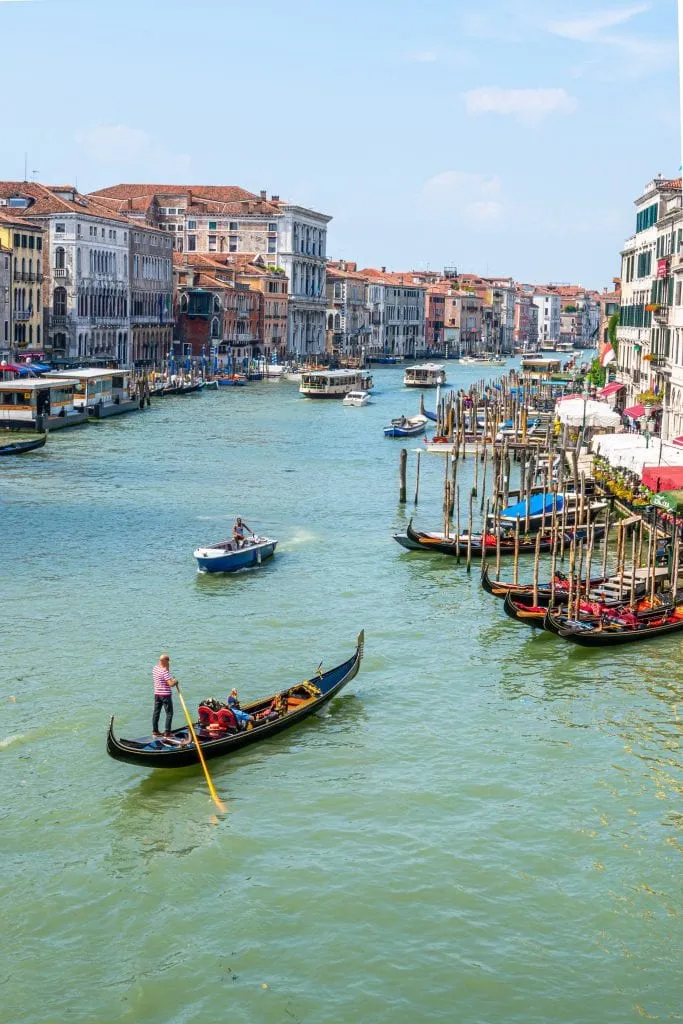
The Incredible Iberian Peninsula: Lisbon, The Algarve, Andalucia
The Iberian Peninsula is dominated by Spain and Portugal , and while I might be biased after spending more than a year living in Lisbon, it makes for an unforgettable Eurotrip!
(The fact that there are often flight deals from the US to Lisbon and Madrid doesn’t hurt, either).
There are infinite ways to craft southern Europe itineraries out of these two countries, but here’s one great option…
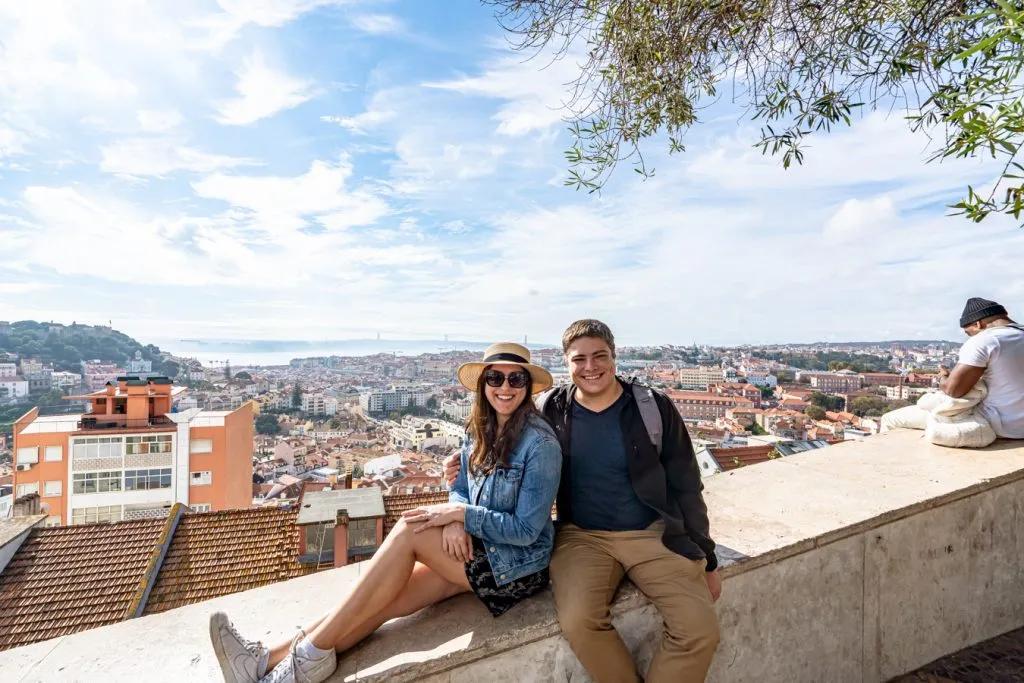
Start your trip with a few days in Lisbon , Portugal’s trendy capital city, soaking up beautiful views from its many miradouros , sampling Portuguese food (starting with pastéis de nata ), touring the incredible Jerónimos Monastery, and taking day trips from Lisbon to nearby gems like the palaces of Sintra and/or the beach resort town of Cascais .
Be prepared to head up and down a lot of hills while you’re there–but Lisbon is worth the climb.
If you’re looking for neighborhoods to wander through, Alfama, Castelo, Chiado, and Bairro Alto are particularly picturesque–keep an eye out for trams, azulejos, and peacocks as you explore!
And, while Lisbon’s top attractions are definitely worth a visit, seeking out some of the many hidden gems in Lisbon will add extra beauty to your trip.
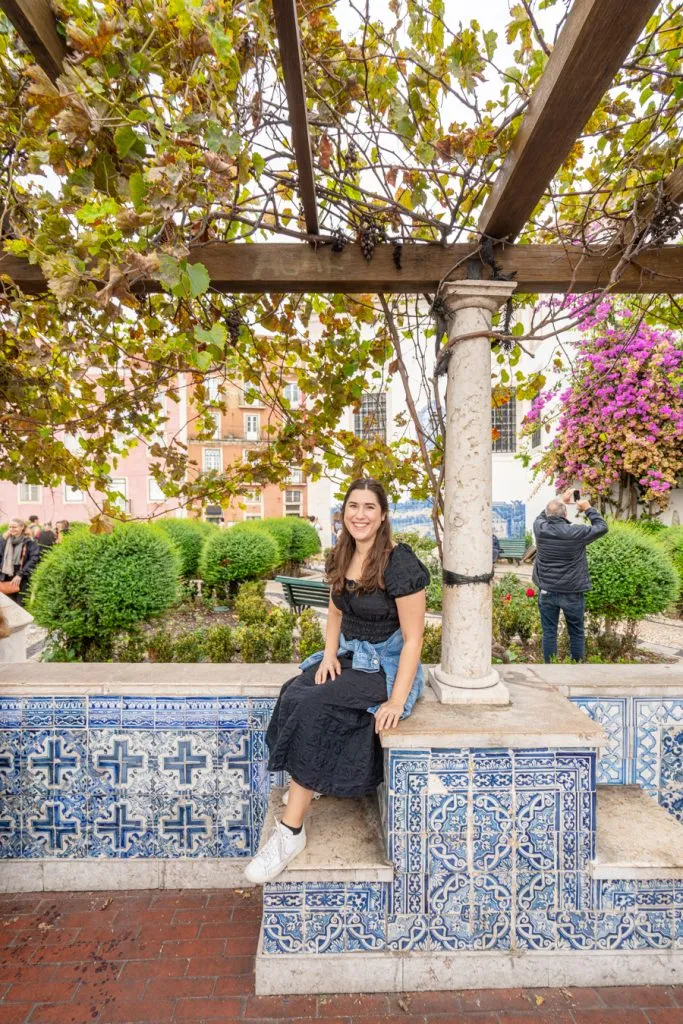
The Algarve
After saying goodbye to Lisbon, head south of Portugal’s Algarve for a dizzying array of whitewashed villages (you’ll find many of the best beach towns in Portugal here) and a picturesque coastline.
Lagos is one of the most popular places to stay, and we can highly recommend it–don’t miss the famous Ponta da Piedade, which photos can’t do justice to.
Nearby attractions (ideally, you’ll want to rent a car in the Algarve) include the famous Benagil Cave and the unmissable Seven Hanging Valleys Trail!
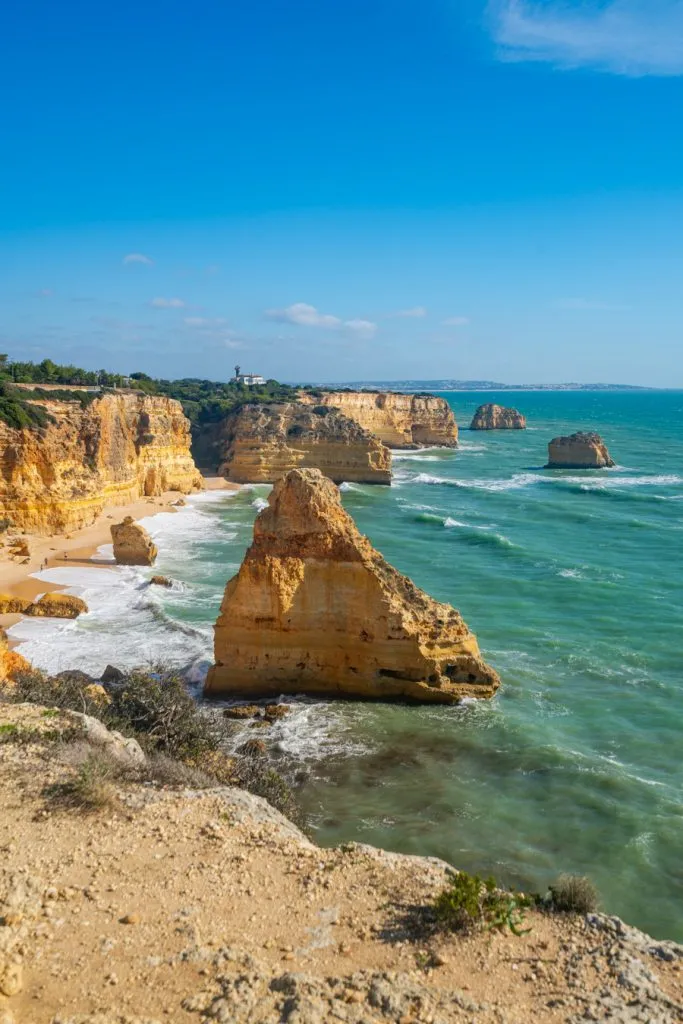
For the second week of your trip in Europe, cross the border into southern Spain (note: there’s no direct train access for this journey, but there are buses).
Split your time between any two of Andalucia’s incredible cities, taking nearby day trips from there.
Seville (with its Alcazar and famous Plaza de Espana), Granada (home of the Alhambra ), and Cordoba (home of the Mosque-Cathedral , one of the most unique houses of worship in the world) are all wonderful inland options.
On the coast, options include Cadiz, Malaga, Marbella, Tarifa, and many more.
With a bit more than 2 weeks in Europe or an ambitious schedule, you may be able to squeeze in a day trip to Gibraltar and/or Tangier, Morocco while here!

Food + History: Athens, Santorini, Istanbul
Feel like heading further east–as far east as you can get during a Europe vacation?
Greece and Turkey pair very well for a 14 day European itinerary–here’s what that might look like.
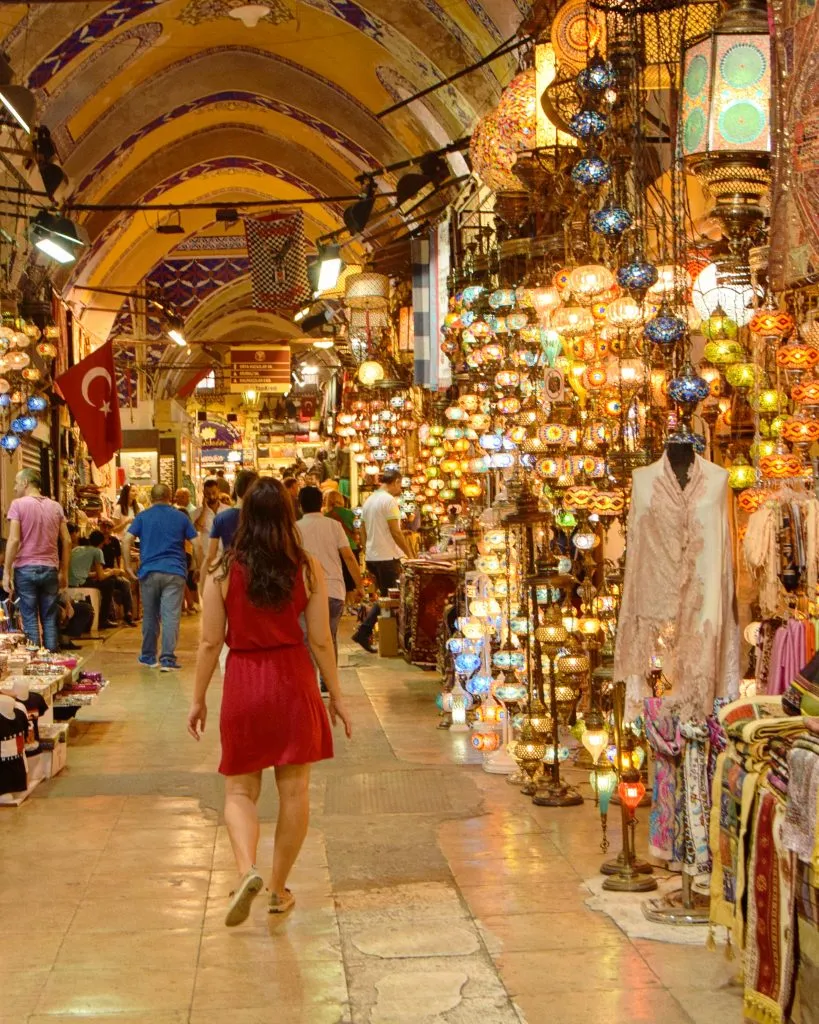
Start your trip in Athens, marveling at some of the world’s most remarkable ruins, including the famous Acropolis complex and museum.
Be sure to make time to explore non-ancient aspects of Athens as well, including the trendy Plaka neighborhood, Monastiraki Square (and nearby flea market!), and Syntagma Square.
And of course, one of the absolute best things to do after you touch down in Athens is to dive into plate after plate of phenomenal Greek food –that alone is worth traveling to Greece for ( our Athens food tour remains one of my favorites that we’ve taken in Europe).

Truly, any one of Greece’s amazing islands would fit nicely into this 2 week Europe itinerary, but where better to choose than Santorini , with its iconic blue-and-white color scheme, fantastic caldera views, and excellent flight connections?
While Santorini isn’t best known for its beaches–you’re better off heading to Crete for those–you sure can’t beat the charming villages or stunning nature.

The city of two continents, where thousands of years of history blend seamlessly with modern life, and where you can eat one of the best breakfasts you’ll ever experience in your life: Istanbul tops bucket lists around the world, and there is simply nowhere on the planet quite like it.
Marvel at the Blue Mosque, step inside the Hagia Sophia, eat your weight in Turkish breakfast (seriously, I can’t emphasize enough how tasty it is), admire the views of the Bosphorus, climb the Galata Tower, and shop your way through the Grand Bazaar.
Since this Europe travel blog post focuses on, well, Europe, I won’t sketch out any other possibilities further east in Turkey in detail…
But, if you have time, you could easily add a visit to Cappadocia , complete with a sunrise hot air balloon ride, to your trip, or even a visit to the ruins of Ephesus.

Architecture + Culture: Cologne, Amsterdam, Belgium
With this small triangle of destinations, you can easily visit separate countries via train, with very little travel time between them!
And, if you were particularly motivated to add another, you could even squeeze in a day trip to Luxembourg.
If you’re looking for a winter itinerary for Europe that focuses on cities, this is a fantastic option.

Home to a stunning cathedral and what may just be the best Christmas markets on the planet, Cologne is a gorgeous German city that is a delight to explore on foot.
Don’t miss its soaring Gothic Cathedral while you’re there!
… Though honestly, that would be hard to do, considering you can see it right as you step outside the train station.
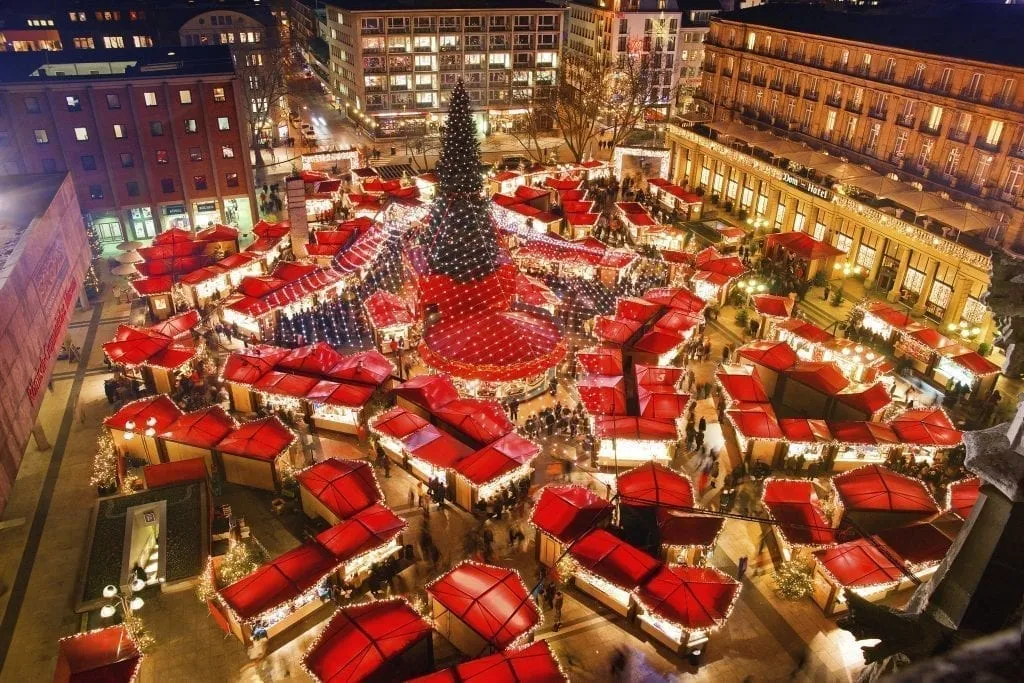
As one of the most popular cities to visit in Europe, Amsterdam requires no introduction.
The city of canals, biking, and revelry is somehow even more beautiful in person than in the billions of photos of it.
While you’re there, be sure to take a canal cruise, stroll the 9 Streets, and visit at least a couple of the city’s museums (the Anne Frank House is incredibly moving).
If you visit Amsterdam in winter , you’ll no doubt need to bundle up–but the lack of crowds in this often-packed city is also a treat to experience.
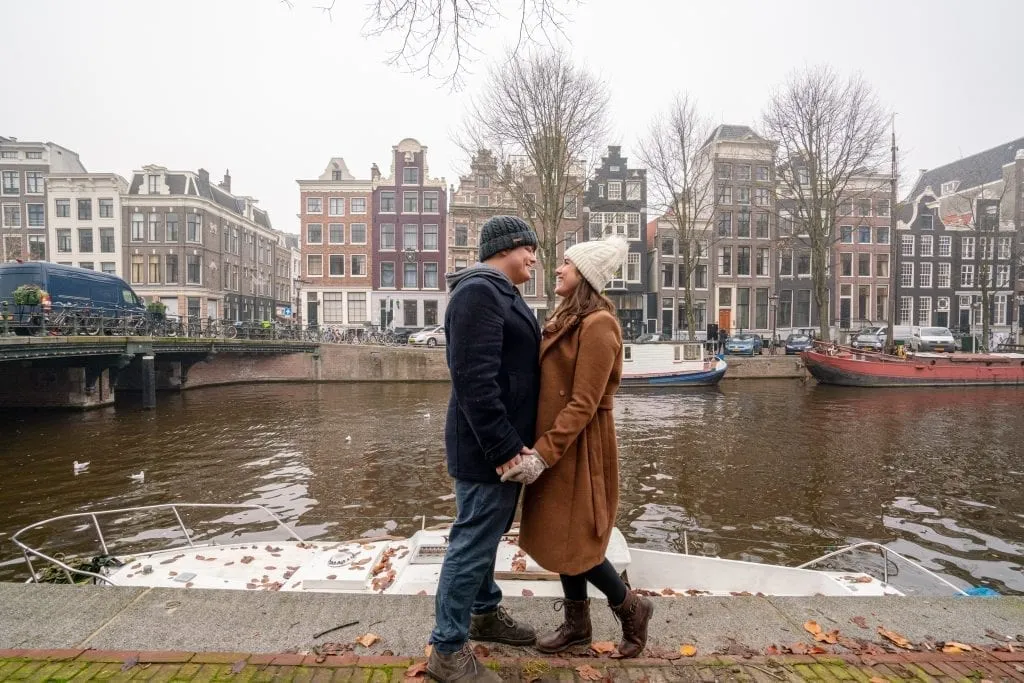
Perhaps it may be slightly unfair to list Belgium entirely while the other destinations are split into cities… but considering Belgium’s two most popular cities, Bruges and Ghent , are located less than an hour apart by train, you can cover quite a bit of the country in a few days !
With stunning architecture, canals, and carbs (bring on the waffles and frites), it’s easy to have a blast in Belgium.
Winter in Belgium brings a lack of crowds and plenty of festivities during the Christmas season!
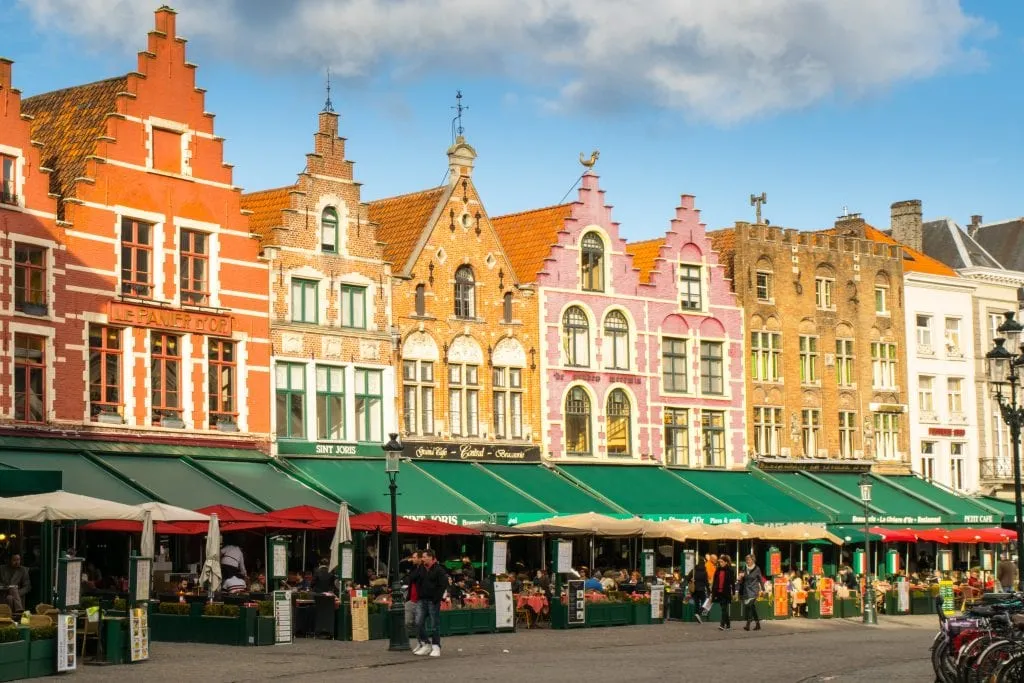
Alpine Escape: Bavaria, Switzerland’s Jungfrau Region, Milan, and Lake Como
If your dream Europe trip involves plenty of Alpine views with a side of cities, this is the itinerary for Europe in 2 weeks for you.
Start your trip in Bavaria, the land of castles, beer, and outdoor delights.
City lovers will enjoy being based in Munich (don’t miss the opulent Munich Residenz or view from St. Peter’s Church and/or the Town Hall Tower while there).
From Munich, you can easily day trip to more mountainous areas, starting with Fussen, home to Germany’s famous Neuschwanstein Castle .
If you get good weather and want to see as many mountains as possible, a day trip to the Zugspite–the highest point in Germany–is also an option.
Really, though, if there’s one thing to prioritize in Munich, it’s to eat and drink all the sausage, pretzels, beer, and beyond you can get your hands on!
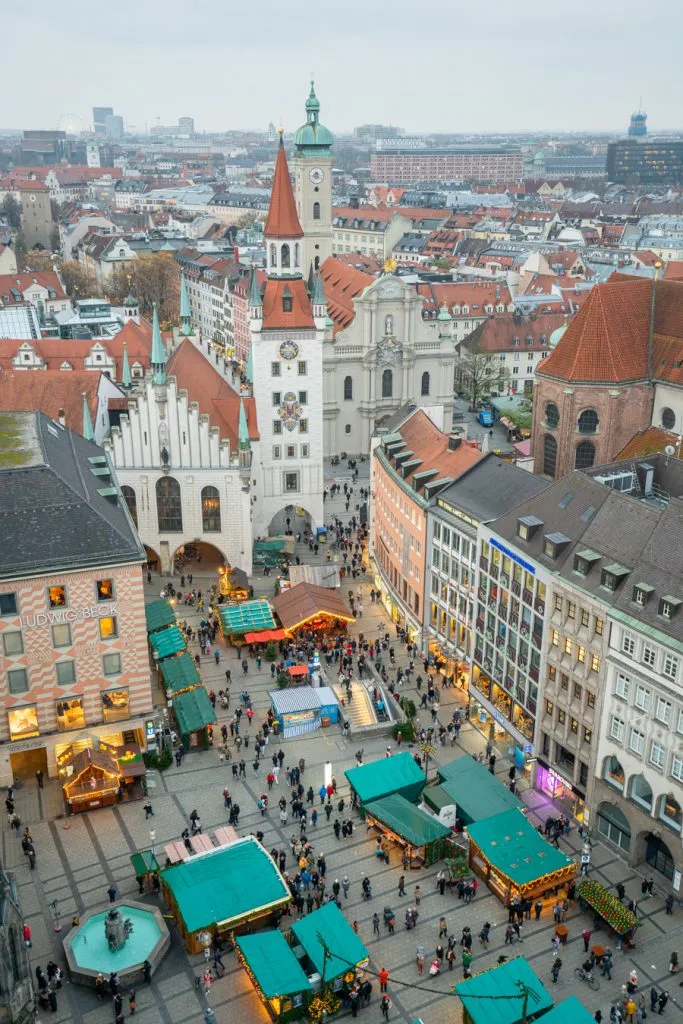
Switzerland’s Jungfrau Region
I am convinced that Switzerland’s Jungfrau region–located around (literally, above) Interlaken–is paradise on earth in the summer.
If you’re dreaming of the Alps, check into a hotel in Wengen, Murren, or Grindelwald (for the best views) or Interlaken (for a bit more selection) or Lauterbrunnen (to be in the literal center of the action) and have the trip of your dreams.
Switzerland’s legendarily efficient trains and gondolas mean that wherever you stay, the region is at your fingertips.
Hiking from Mannlichen to Kleine Scheidigg, riding the highest train in Europe to Jungfraujoch (aka the “Top of Europe”), eating daily fondue, walking from Murren to Gimmelwald , and riding a historic cogwheel train to Schynige Platte are just a few of the unforgettable experiences you’ll find here.
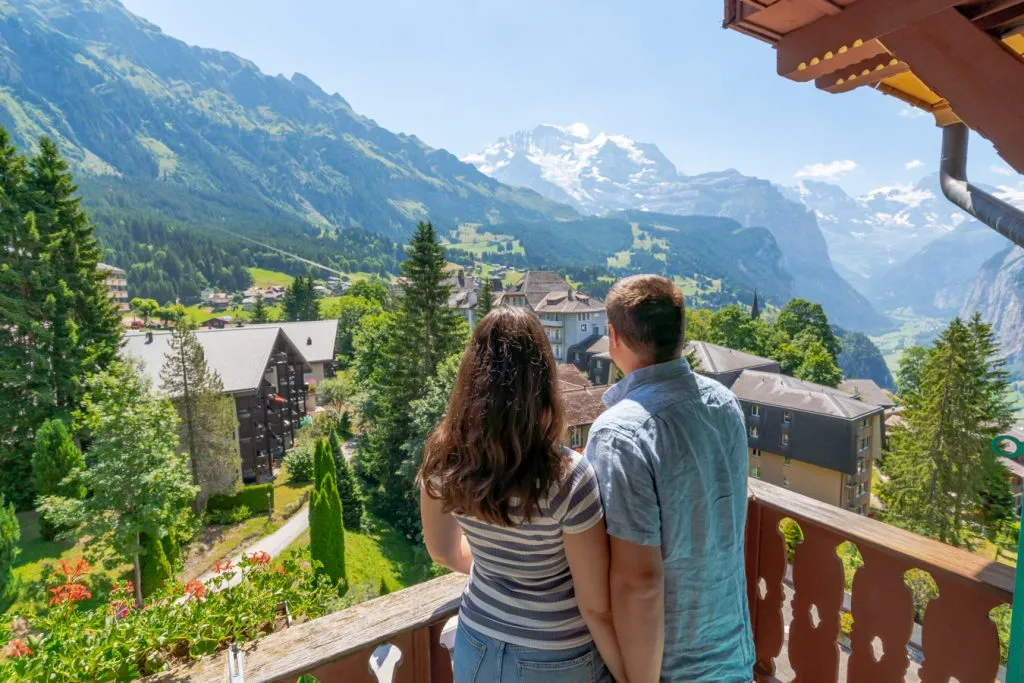
Milan + Lake Como
End your trip to Milan and Lake Como , two of the most popular destinations in northern Italy!
In Milan , be sure to visit its legendary Duomo, stroll through the Galleria Vittorio Emanuele II, visit Sforzesco Castle, and, if you can get tickets (plan ahead!) see Da Vinci’s The Last Supper .
At Lake Como (just an hour north of Milan by train), take a boat tour around the lake and visit delightfully charming towns like Varenna and Bellagio while admiring magnificent Alpine views.

Getting around in each city on your 2 week Europe itinerary is a question better suited to blog posts on that particular city, so this section is designed to address getting in between each destination during your 14 days in Europe.
We recommend checking several solutions for each destination, as you never know what will crop up!
Personally, our first 2 week Europe trip involved an overnight train, a budget plane ride, and a couple of rental cars.

Train travel is our absolute favorite way to travel in Europe!
I t’s much less stressful than traveling by plane, especially once you get the hang of it, far more comfortable, and for those of us hailing from North America, it’s a travel experience in its own right!
We recommend using services like Omio to compare train prices across multiple countries.
It works more or less exactly like a car rental aggregate does, searching multiple companies and generating the best routes and prices for your dates.
Keep in mind that train travel is most useful in western and central Europe–once you head into eastern Europe and especially the Balkans, train travel becomes more limited and bus travel more common (for example, popular Dubrovnik, Croatia doesn’t have a train station).
Shop train routes and tickets prices in Europe today!

For those traveling on a budget or between two smaller destinations where rail travel isn’t an option, buses can be a very affordable choice.
In addition to standard local buses, companies like Flixbus provide an easy-to-use service, and you can check their prices and availability directly or through Omio as well (that way you can compare train tickets at the same time).
Browse bus routes in Europe today!
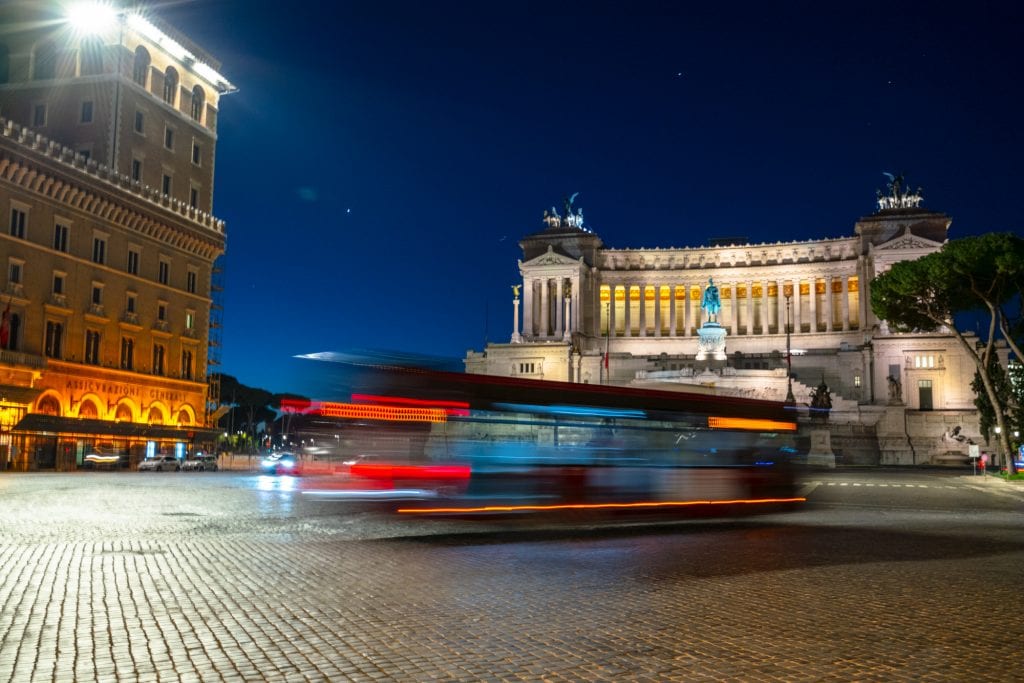
With plenty of budget airlines and plenty of airports to choose from, if you plan wisely, it’s possible to take flights in Europe that are so inexpensive you wonder how the company pays for the fuel.
S eriously: 10 Euro flights are possible, though we’ve never actually managed to pay that since we prefer to check our bags !
When looking for flights within Europe, we recommend using Google Flights in order to search the whole continent at once (you can simply put “Europe” in as the destination, and it’ll pull up a map of prices).
With a little flexibility on destination (for example, maybe flying into nearby Bologna is cheaper than flying into Florence ?) and even on dates if possible, you just might end up with an excellent flight deal or two during your trip to Europe.
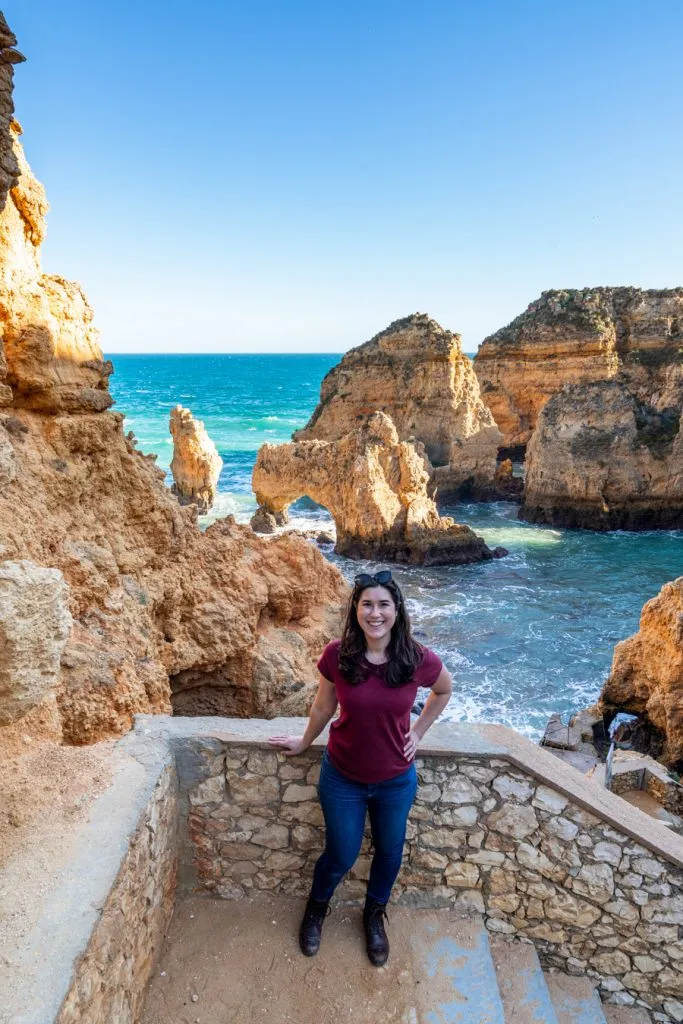
Personally, we recommend avoiding a car rental when possible during your 2 weeks in Europe, especially if you’re following anything resembling a Europe itinerary like the ones I outlined above.
In large cities, rental cars are a hindrance and a liability, not an asset, and they add quite a bit to your bottom line.
That being said, if you’re planning on visiting any rural areas or small towns, road trips in Europe can be a delight!
Y ou could consider renting a car for a couple of days in Tuscany , for example, or to visit the villages of Provence.
If you do choose to rent a car, we recommend searching for the best prices through Discover Cars , which will allow you to search multiple companies at once and come up with a great option.
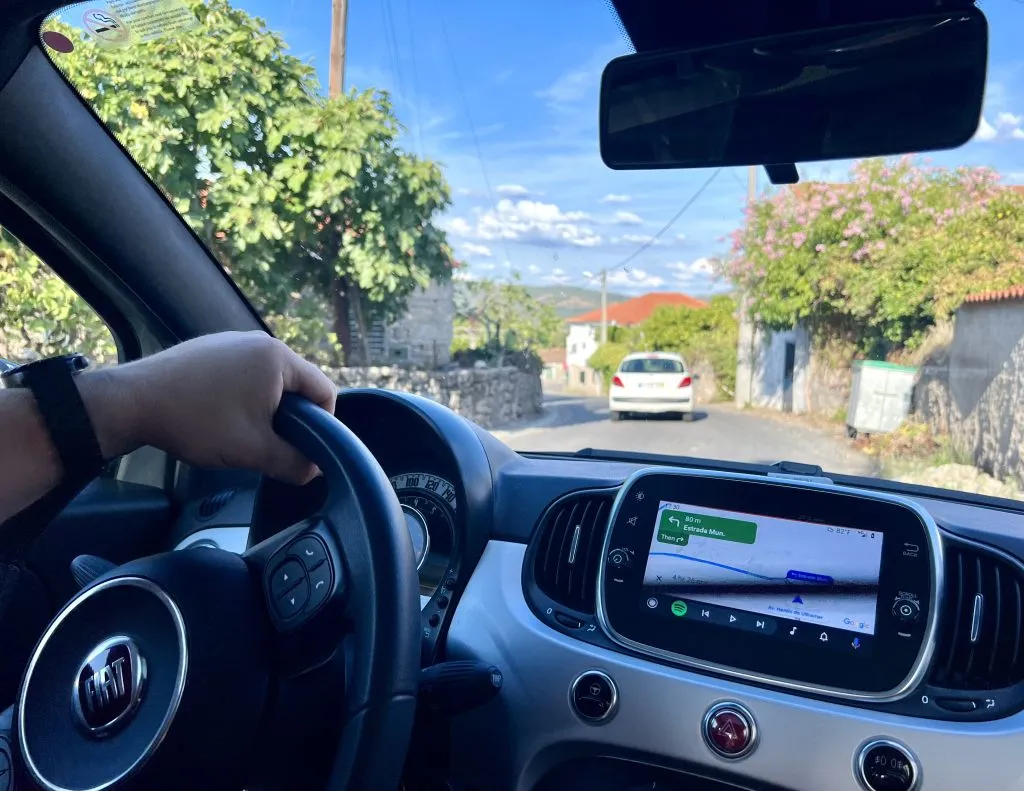
While major international carriers like Hertz and Enterprise are available in Europe, they’re not always the best deal, and searching for a combination of local and international companies is best.
Personally, we have no loyalty to any one rental car company, and book with whoever is most affordable (and we always buy the extra insurance).
As a result, we’ve rented cars through easily more than 15 or 20 agencies over the years (I’d be hard-pressed even to estimate it), and we’ve never had any issues with surprise charges.
Price out rental cars with Discover Cars now!
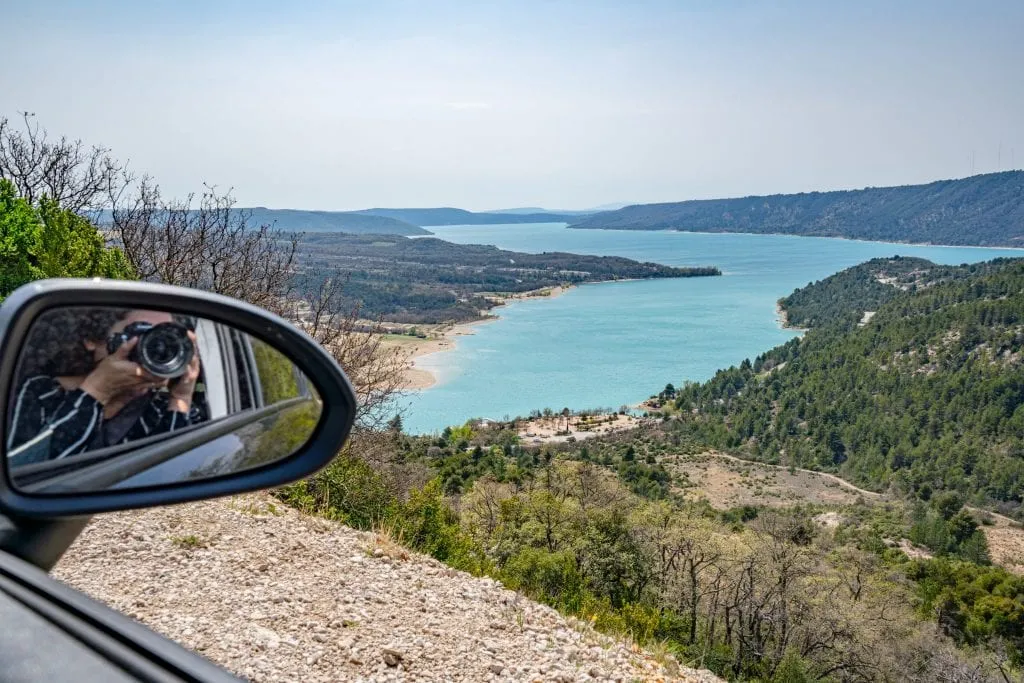
Don’t forget boats when it comes to planning a 2 week Europe itinerary, especially over the summer!
While ferries between or to/from islands are obviously the most popular ( Dubrovnik to Hvar , for example, or Barcelona to Mallorca), there are longer ferry options as well!
Last summer, we took a ferry from Barcelona to Rome and loved the experience of drifting along the Mediterranean Sea for 24 hours!
Many ferry routes are seasonal, but not all.

Don’t plan to visit too many destinations.
With only around 14 days in Europe, I know it can be incredibly tempting to squeeze in as many destinations as possible (and I have many fevered outlines of ridiculously ambitious trips I planned in my college days to prove it), but your trip will go so much more smoothly if you can resist that temptation.
In most cases, we recommend an absolute minimum of two full days per major city.
By full days, I mean with limited exceptions (like a red-eye flight that lands at 8:00 AM), the day you arrive and the day you depart don’t count as a “day” in a given city–just as a travel day.
Three or four days per city is even better and will allow you to potentially squeeze in a day trip from that city to a smaller city or village if you want to mix things up.
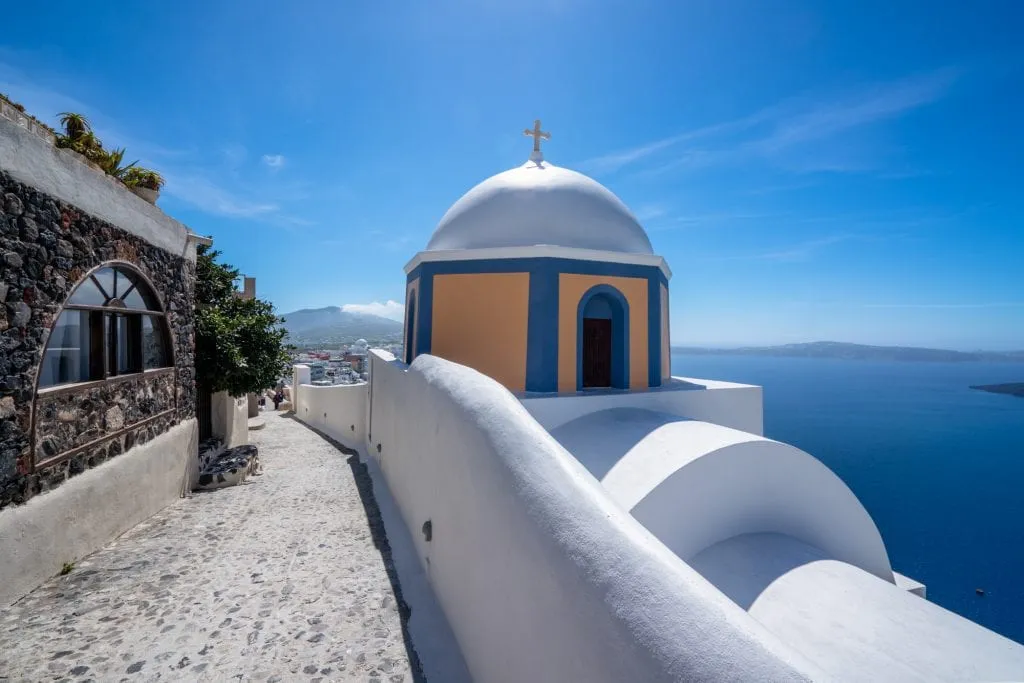
Start and end in a major airport hub.
It doesn’t necessarily have to be the same hub–more on that below–but there are definitely airports that are cheaper to fly into and out of for intercontinental flights than others.
Budapest may be affordable once you’re there, for example, but flying from the US directly to Budapest can hurt the wallet!
For those of you coming from the USA, London, Dublin , Madrid , Paris , Lisbon , Frankfurt, Amsterdam , and Milan are a few places to check ticket prices for.
That’s not an exhaustive list by any means, but there are often flight deals to and from these cities.
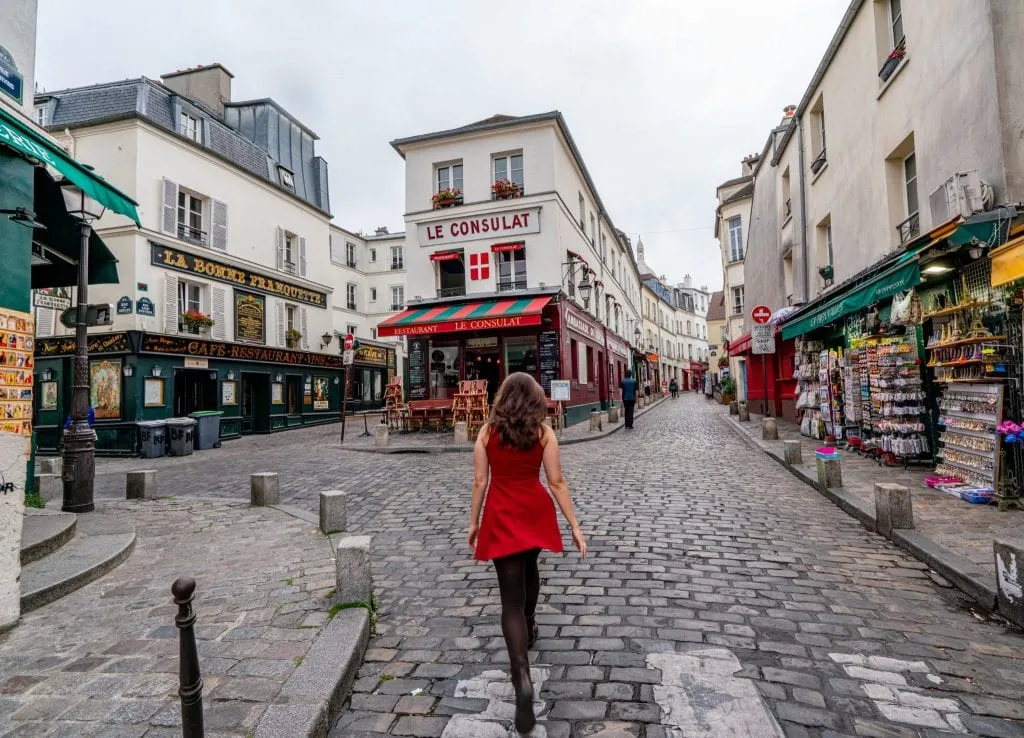
If you can, use an open-jaw ticket rather than a return ticket.
This will allow you to begin and end your 2 weeks in Europe in entirely different destinations, and let you avoid doubling back!
While one-way tickets can be pricier than round-trip ones, if you’re flexible on your dates and destinations (so deciding which cities to start and end in partially based on price), you can usually find excellent deals
This is exactly how we ended up flying into Krakow and out of Dublin for our first 2 week Europe trip!

You will be exhausted at some point. Plan for it.
Two weeks in Europe may not seem like a ton, but if you’re anything like us or virtually all of the travelers we have talked to, exhaustion will set in during your trip.
Sightseeing in Europe is fabulous, but it’s also tiring.
Add in navigating cultural differences, language barriers, and moving countries every few days, and you’re bound to need a break at some point.
We recommend planning a couple of laid-back days without museum visits, tours, or day trips so that you can catch your breath and avoid burnout.
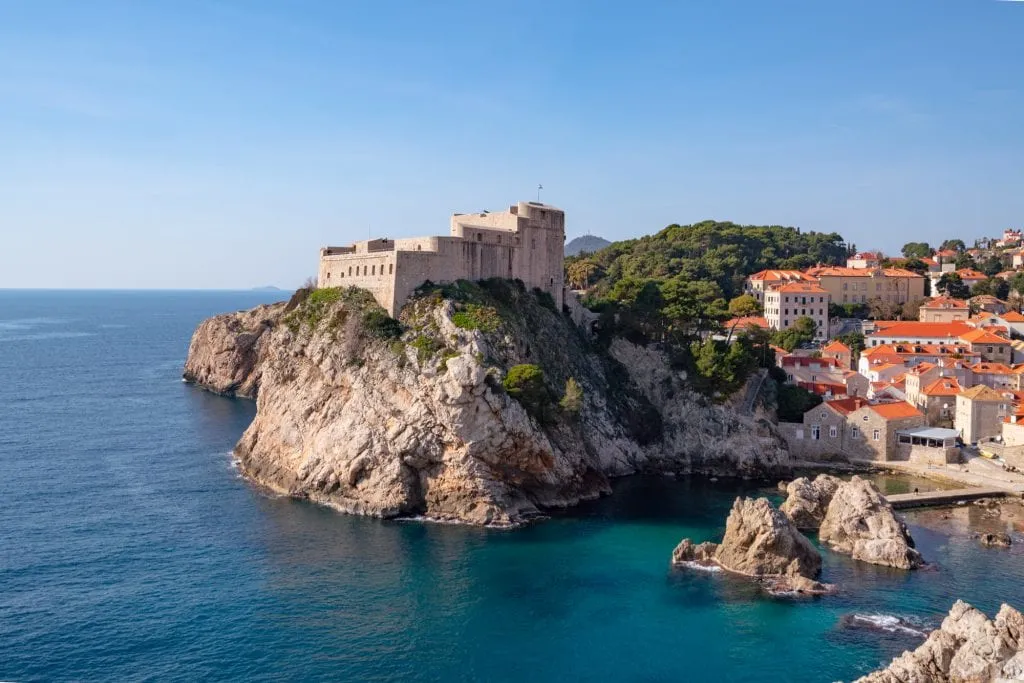
Try to be flexible with where you go.
As you start pricing train, plane, and bus tickets for your trip to Europe, you’ll likely notice dramatic shifts–for example, is it 4x the money to get to London instead of Amsterdam?
Does traveling to Prague require a long flight and 2 layovers but Rome is a quick hop away?
If you can, be flexible when you come upon these challenges: we recommend having 1-2 “must visit” destinations and filling in the rest of your trip based on a combination of logistics and desire.
After all, there’s no way you can see it all on a 2 week Europe trip anyway!
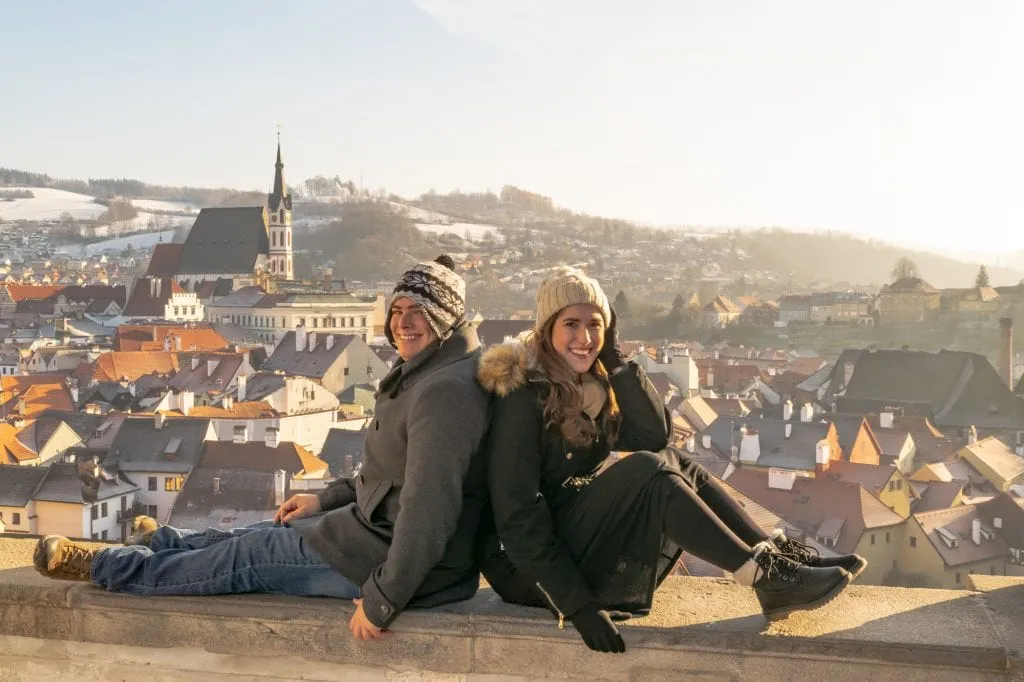
Don’t underestimate the time and energy it takes to change destinations.
“Oh, it’s only a 3-hour train ride away! That’s nothing!”
I think we’ve all said that at some point when planning a multi-country trip, but be cautious.
Three hours on the train doesn’t account for packing and unpacking, getting to and from the train station, checking out of and into a hotel… you get the picture.
If you’re looking at a high-level schedule without picking a specific date or time, you may also come to find that sure, there’s one direct 3-hour train between two cities… but it leaves at 10:00 PM or 6:00 AM, and the rest of the trains require layovers.

Or perhaps the direct train only runs 3 days a week.
Or maybe you’re looking at a plane, in which case, be sure to add at least 4 hours to your transit time: getting to and from the airport and security/check-in beforehand.
Long story short, travel days between countries are virtually always more tiring and time-consuming than they look at first glance, so don’t overcommit on those days when planning your ultimate Europe trip!
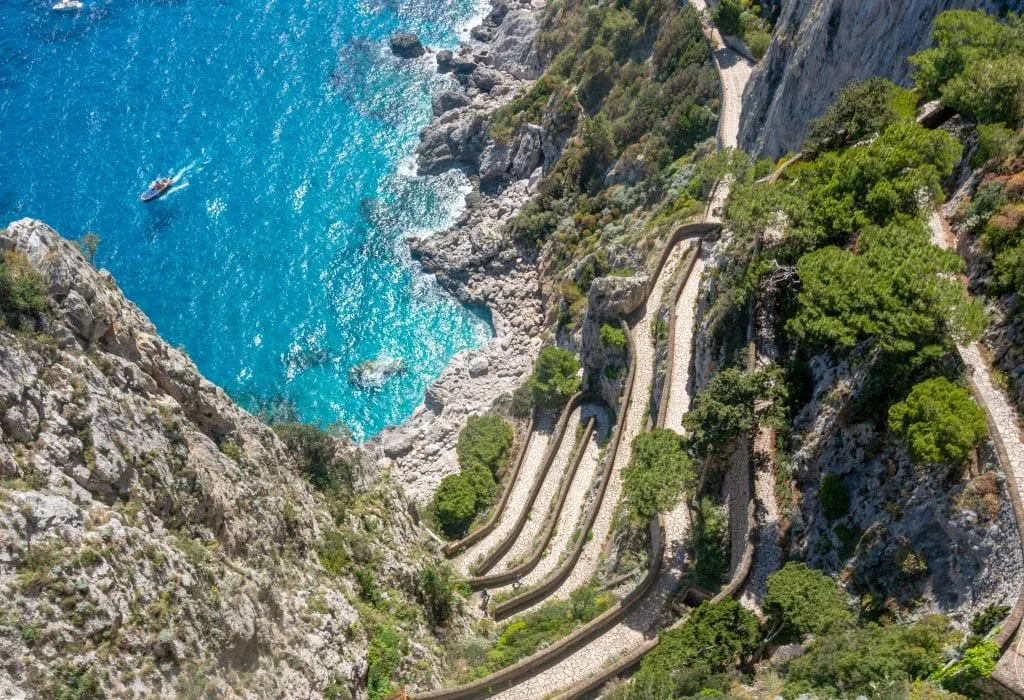
Big cities are more accessible than small towns and nature areas.
For the first trip to Europe especially, big cities are absolutely the easiest to plan your itinerary for Europe around.
They’re generally easier and cheaper to get into and out of, and there’s far more information available about them online to help plan your trips.
That’s no reason not to visit other places too, of course–but keep in mind that the more rural the area, the more logistically challenging your trip will be.
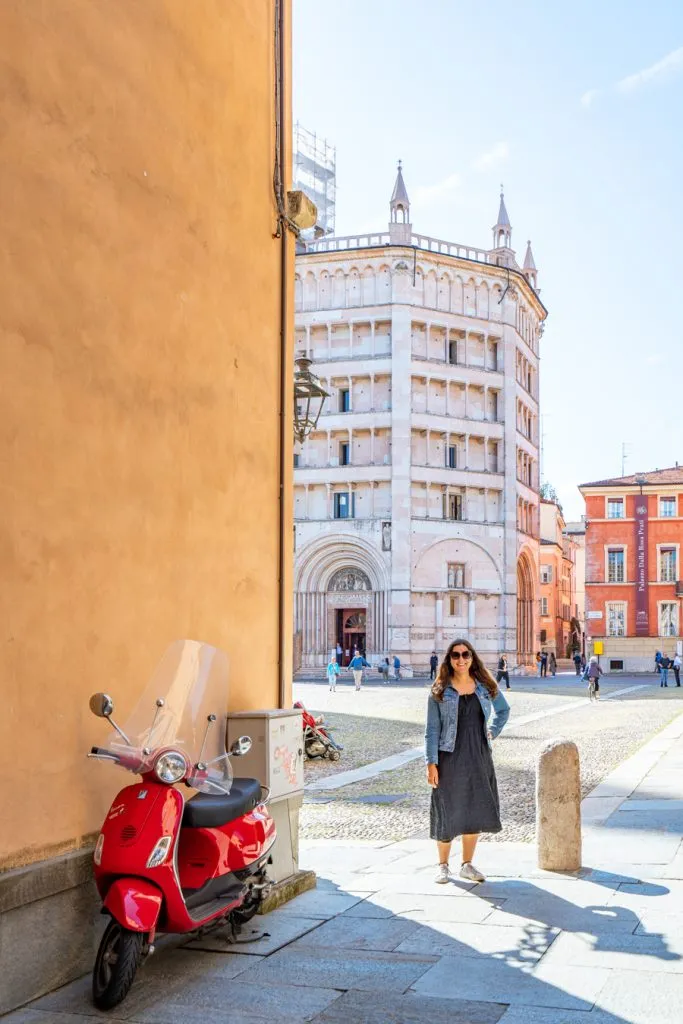
Skip-the-line tickets are incredibly useful.
I’m sure it comes as absolutely no surprise that the world’s most iconic monuments and museums tend to get a bit crowded… and that makes skip-the-line tickets invaluable, especially with only 2 weeks in Europe to squeeze in as much sightseeing as possible.
In some places (like the Arc de Triomphe ) they’re available without any additional fee, and in other places (like the Colosseum) they cost a bit extra.
Either way, though, it’s 1000% worth the price and effort to get tickets online beforehand for popular spots, especially if you’re traveling during the high season.

And, in 2024, it’s worth pointing out that given ever-changing capacity limits, it’s a better idea than ever to book in advance–and for some attractions, it’s even required!
When 2020 shook the travel industry to its core, many of the most popular museums and monuments in Europe found that life was easier with reservations and online bookings, and have continued prioritizing that system over traditional lines and ticket booths even as crowds returned to “normal”.
We use skip-the-line tickets all over the continent and book them through Get Your Guide .
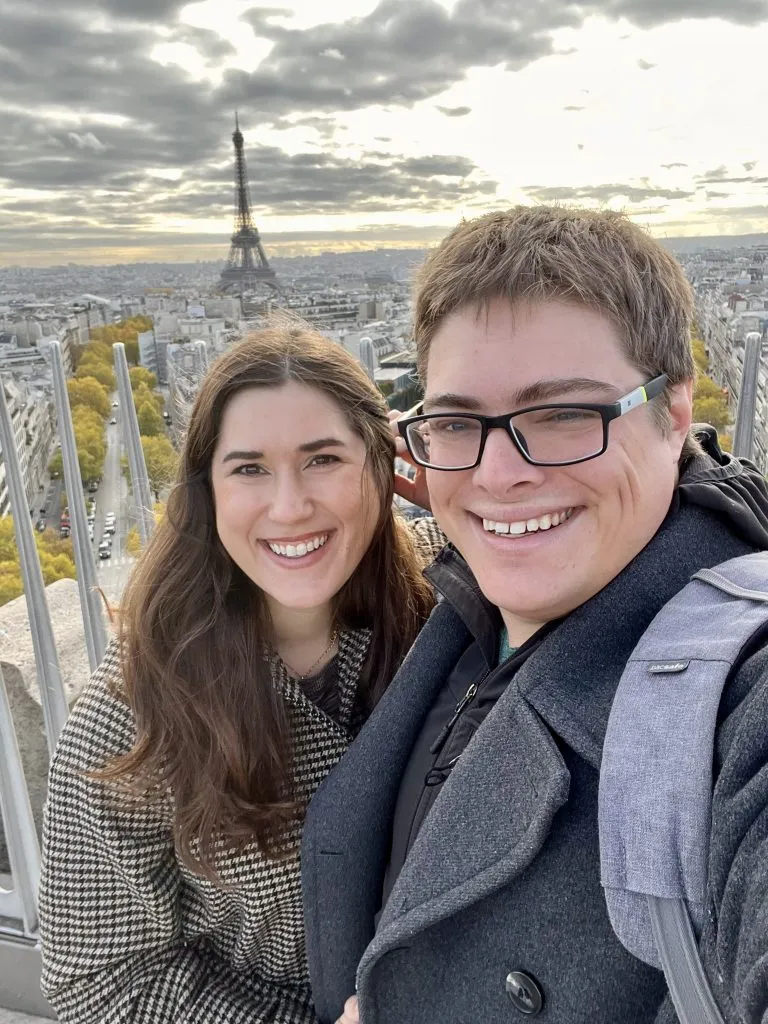
Book your hotels and major transportation in advance.
Before kicking off your 2 week Europe itinerary, we recommend having all of your hotels and major transportation (so travel between destinations) booked and ready to go.
This dramatically cuts down on stress levels, makes it easier to budget and plan out your days, and generally helps your trip run more smoothly.
These days, we book virtually all of our lodging (including apartments, farm stays, houses, and more) through Booking.com .
Smaller things, like metro passes or tickets for getting around cities, can be handled once you arrive.
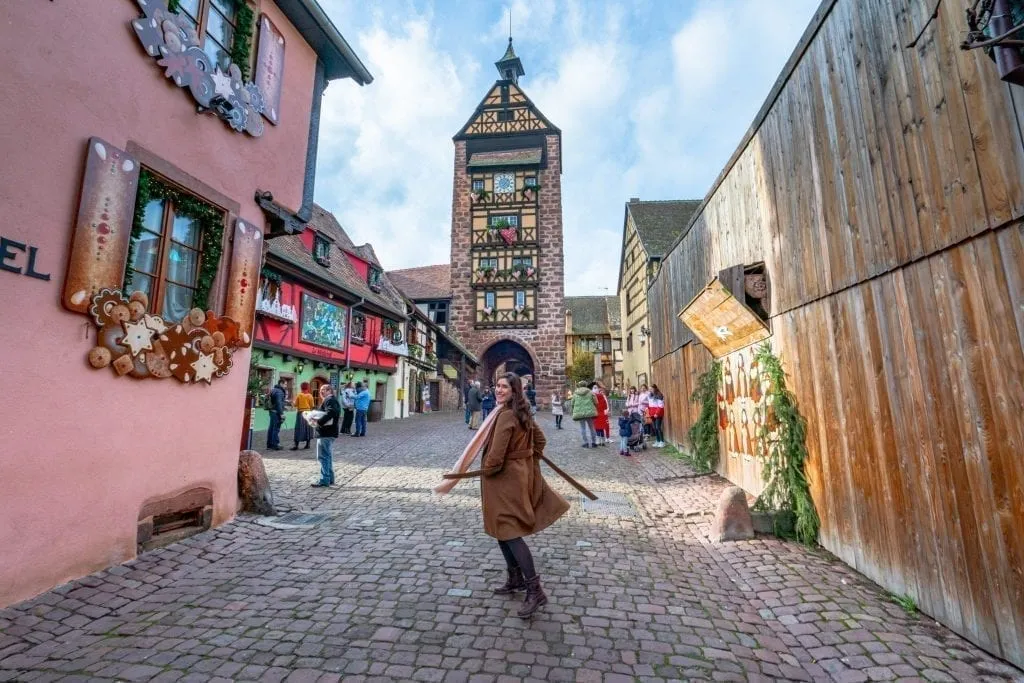
If you can, we recommend taking at least one food tour during your 2 weeks in Europe.
Food tours are one of our favorite ways to get our bearings in a new city while learning about the culture, history, and neighborhood through something we can all appreciate: a tasty meal.
We’ve taken food tours in several countries around the world, including many in Europe, and have never walked away unsatisfied!
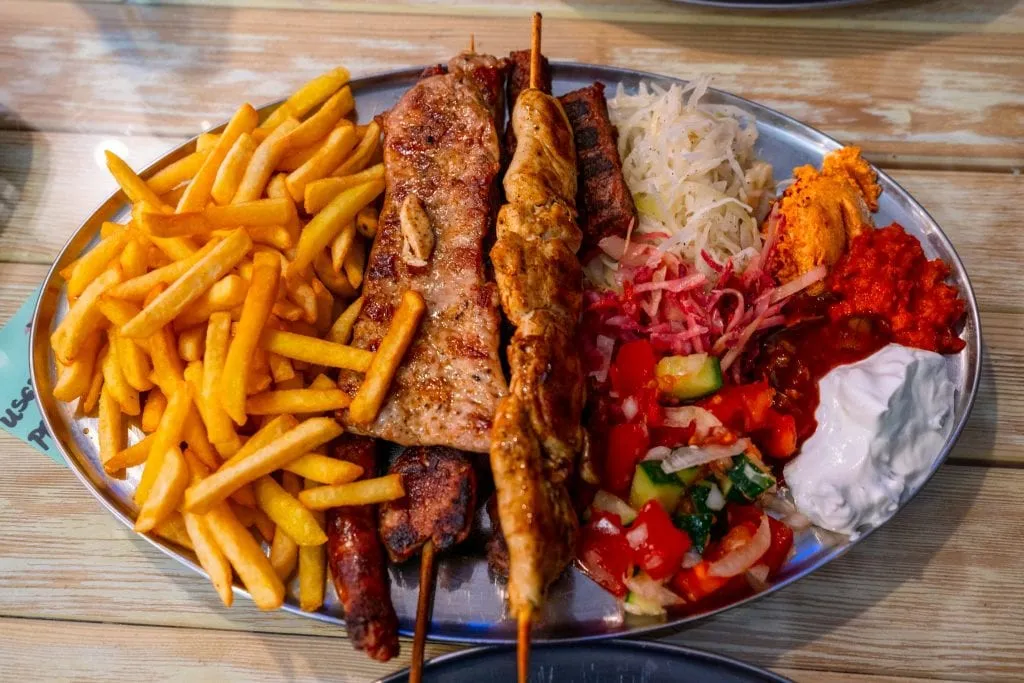
You do need to pay to use the restroom… sometimes.
Throughout Europe, public restrooms are generally available for a fee (typically either half a Euro or a Euro).
If you’d like to avoid those costs, be sure to take advantage of available restrooms in restaurants and museums as you sightsee !
Also, toilet paper is far from guaranteed in public toilets on the street.
We recommend carrying a small pack of tissues with you just in case.
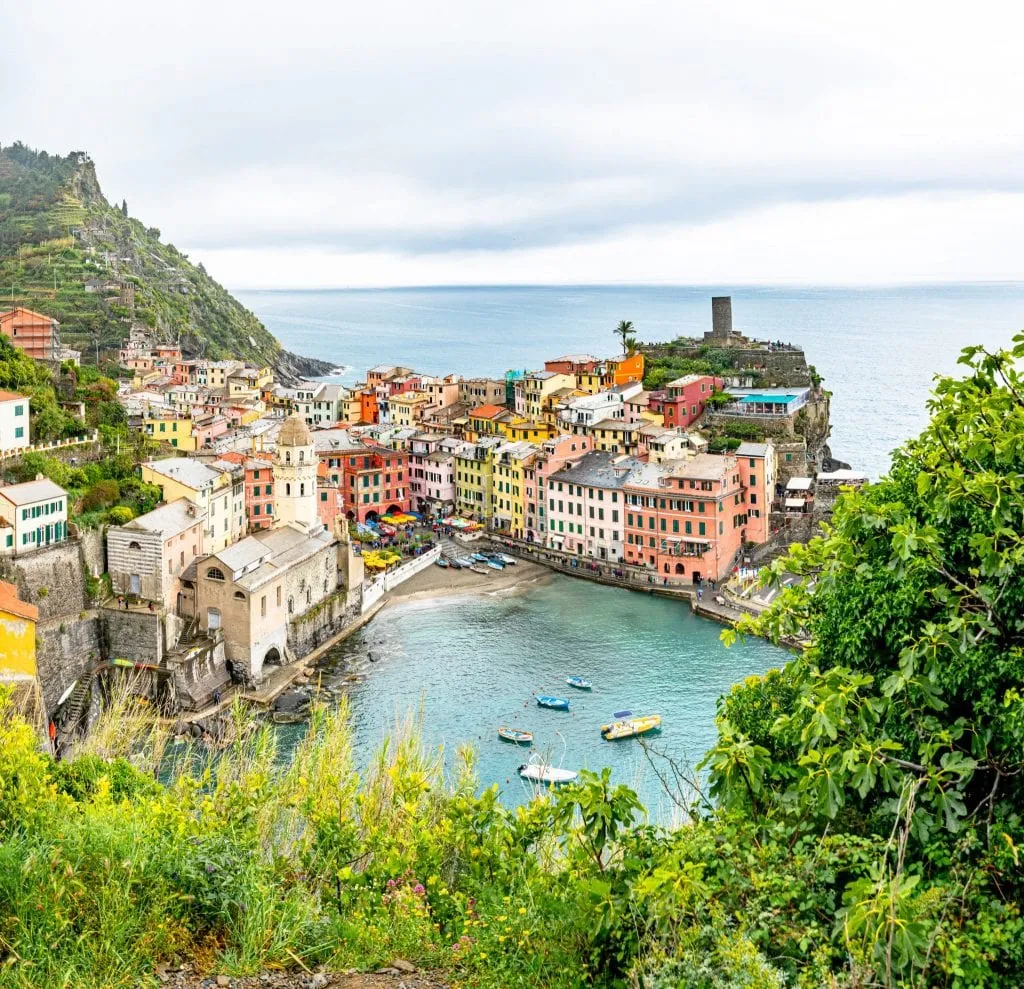
Will I need an adapter?
Most likely, yes!
Luckily, adapters are cheap to buy and easy to carry–we recommend picking these up before you go.
Keep in mind that the UK and a few other countries ( Ireland , Malta ) use a separate plug from the bulk of the continent.
If you’re heading to a place that uses UK plugs, you’ll want these adapters as well.
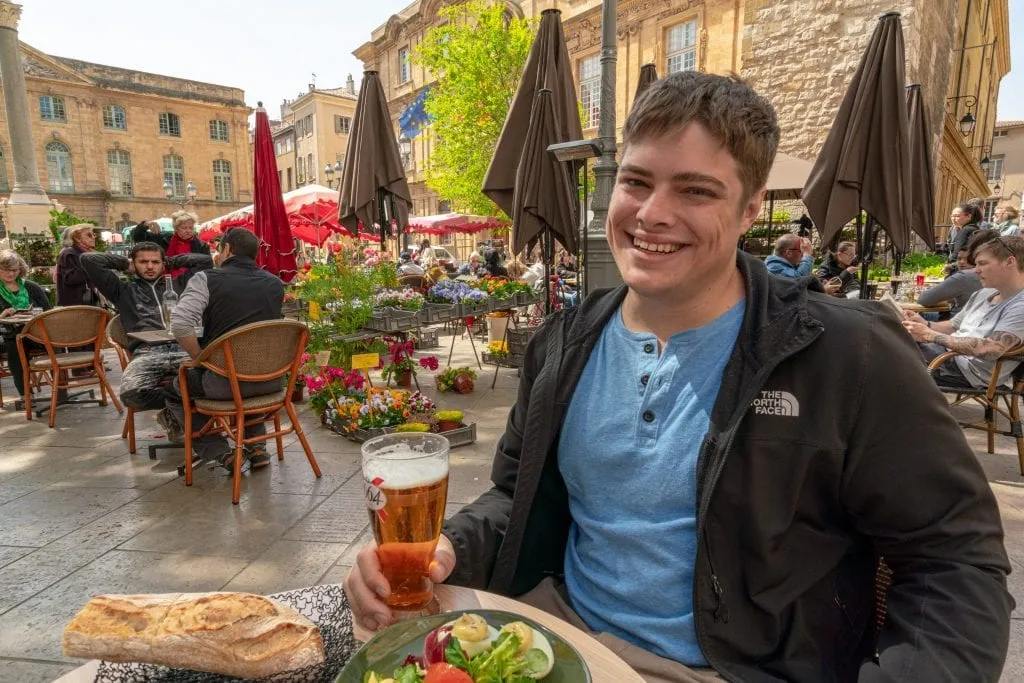
Is a money belt a good idea?
It depends, honestly.
We used a money belt for our first trip to Europe and for a couple after that.
Back then, we weren’t used to life in bustling big cities, and though we knew that thieves knew about them (because they definitely do), Jeremy found them comfortable enough to wear and it was an easy way to keep our belongings a bit more secure.
If you’re not used to traveling in a big city or watching for pickpockets, I don’t think it’s a terrible idea to use one– this is the one we used and we had no complaints–but I also don’t think it’s necessary, especially if you’re comfortable in large cities.
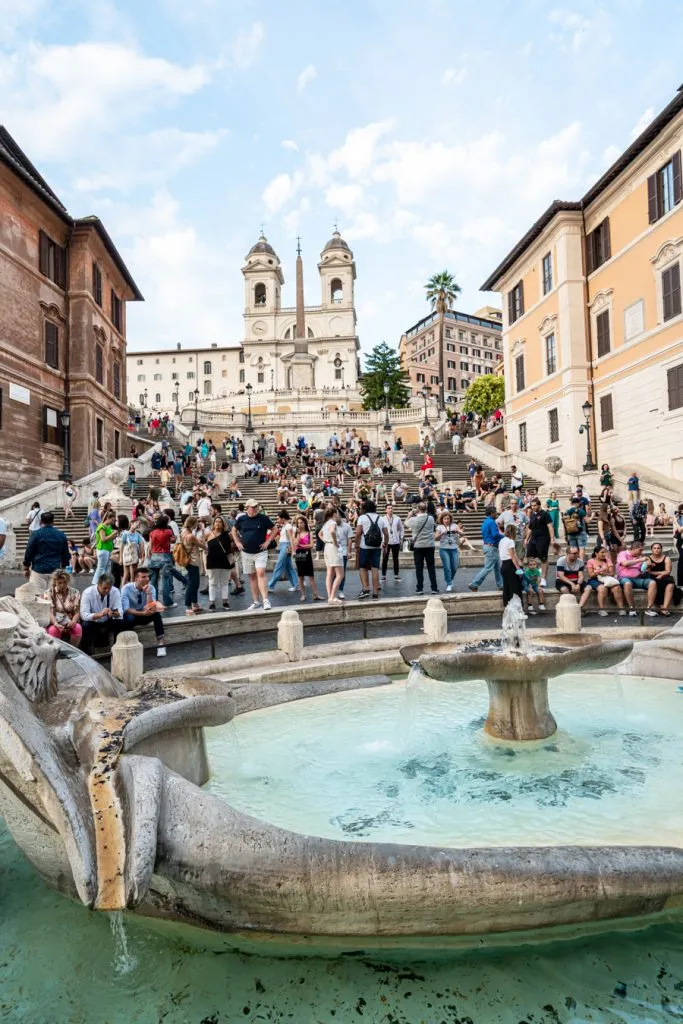
Is the water safe to drink?
Usually, yes.
We drink out of the tap just about anywhere in Europe.
In rare cases where the water is not safe to drink (usually in remote areas of southern and eastern Europe, or in very old buildings with iffy pipes), there will generally be large and obvious signs stating so.
If you’re worried about it, though, you can always ask your hotel concierge or host about it!
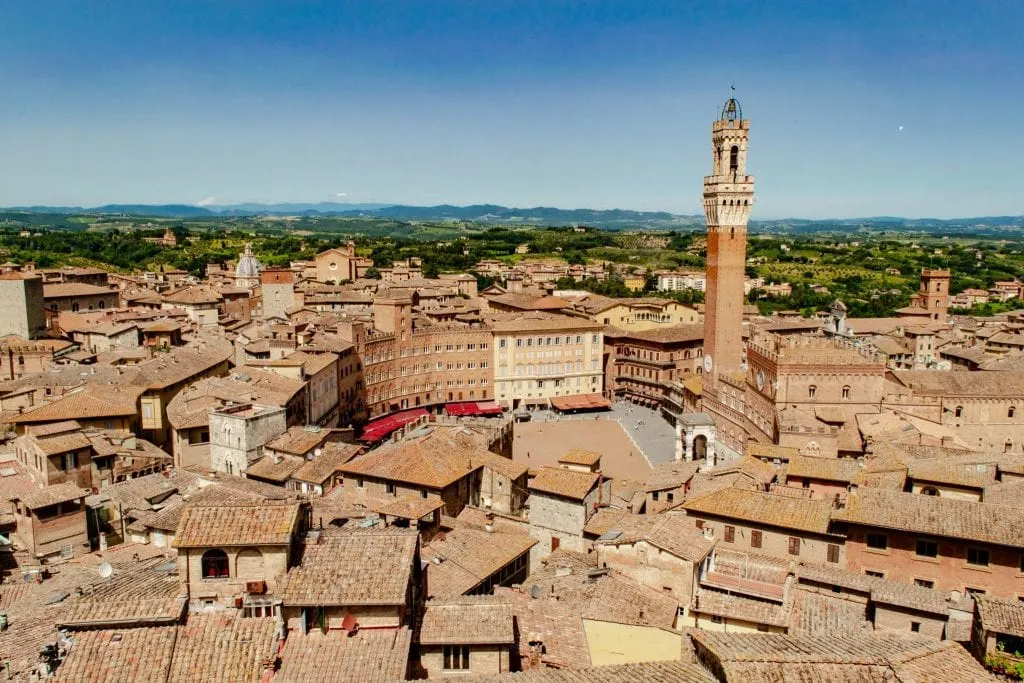
Is it worth going to Europe for 2 weeks?
This is a pretty common question, and honestly, I get it: with long and expensive flights, it’s easy to wonder if flying to Europe for “only” 2 weeks is worth it.
But yes, it absolutely is!
Two weeks in Europe is long enough that you’ll have plenty of time to get past jetlag, visit several destinations, and have a wonderful trip packed with memories.
Now whether or not it’s worth flying to Europe for just one week is a bit more controversial… but we love to travel Europe so much that we still say yes (for some people).

How extreme is the language barrier?
It varies significantly, of course, but generally, it’s not nearly as difficult as first-time visitors to Europe worry before they arrive (ourselves included).
We recommend learning basic phrases in the language of the countries you are visiting during your 2 week Europe itinerary, but this is usually more for good manners than out of necessity.
While you can absolutely find monolingual Europeans in virtually any country, especially in smaller cities and towns, the people employed in customer service roles and in the tourism industry in major cities–in other words, where most or all of your 2 weeks in Europe will likely take place–generally speak some English.

How many European countries should you visit in 2 weeks?
For most travelers, we recommend roughly 3 “base” destinations for a 2 week Europe trip, plus a couple of day trips from there to mix things up.
These can all be in one country (for example, here’s how we recommend spending 2 weeks in Italy ), or they can be in 3 separate countries!
There are plenty of exceptions to this standard layout, of course, but it’s a doable but exciting number of destinations to work with for most 14 day Europe itineraries.

When should I tip?
While this is very country and industry-dependent, generally speaking, tipping is not nearly as prominent in Europe as it is in the USA, and you’ll virtually never need to tip over 10%.
In some countries, you may also tip 5-10% at restaurants, while in others, you might round up the bill or leave nothing at all.
Frequently, a “service charge” will be automatically supplied to the bill which serves the purpose of a tip.
For tour guides, a 10% tip is common.
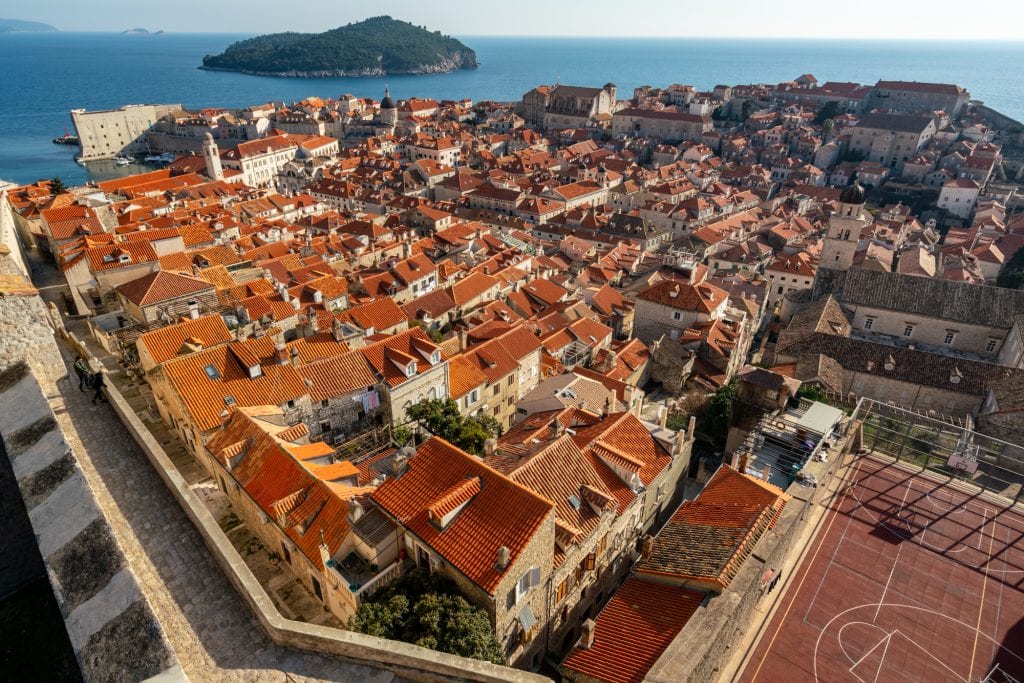
What’s the best month to visit Europe?
All of them, except August.
I kid–somewhat–but honestly, every single month in Europe has its perks!
For a concise answer, the late spring (April-May) and early fall (September-October) are considered ideal by most travelers.
August is specifically difficult because it’s not only very hot in many of Europe’s most popular destinations, but most Europeans take vacations then, so many places (especially in the mountains and on the coast) are at their priciest.
If we absolutely had to visit Europe only during one month for the rest of our lives, we’d pick September, though October is a very close second.

What’s the cheapest month to visit Europe?
It depends–trying to spot the northern lights in Tromso would be one exception to this, for example–but for standard first time Europe itineraries like the ones I outlined in this blog post, January and February are often the cheapest months to visit.
When the Christmas markets are over and the gray weather settles in, you can score great deals on vacations in Europe (and have plenty of room to stretch out at iconic monuments).
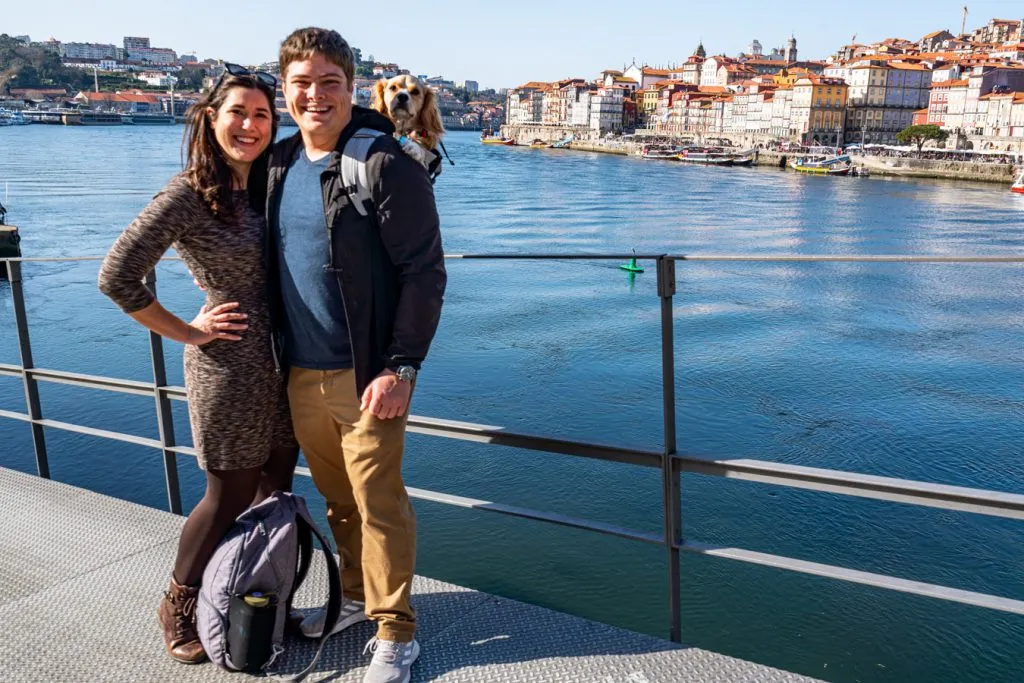
How far in advance should I book my trip?
For plane tickets, as soon as you can commit to dates!
Not only will this allow you to have more time to plan and budget with a bit of structure, but it will also spread out your costs a bit more.
During peak seasons, like coastal locations in the summer or popular destinations during the Christmas season in Europe , you’ll want to book your hotels as far in advance as you can commit to them as well.
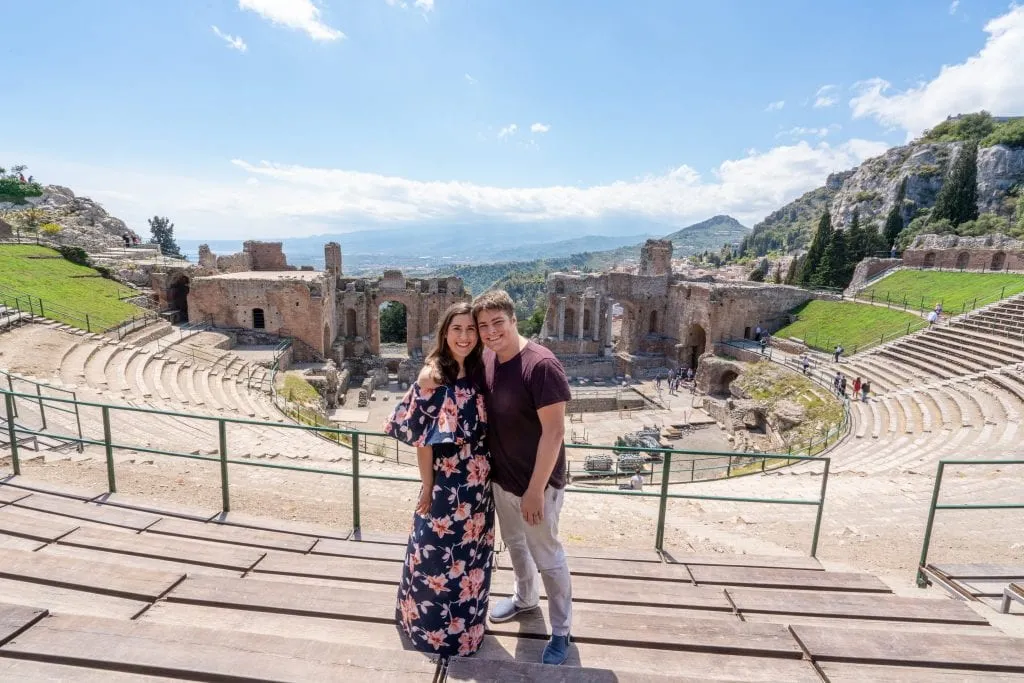
Can you do Europe for $100/day?
This depends a lot on the traveler, group size, etc, but my initial, instinctive answer is:
If you don’t include plane tickets to and from Europe, yes, absolutely, without a doubt–we’ve done it many, many, many times (as a couple).
The key is to shop for deals, visit during the off-season, not shy away from less common destinations (especially in Eastern Europe and the Balkans), and travel slowly.
The fewer destinations you visit, the cheaper a trip generally is!
If you want to stick to Western Europe, southern Spain , southern Portugal, and southern Italy can all be bargains (as compared to places like Paris and London) as well.
Here’s how we manage our travel budget.
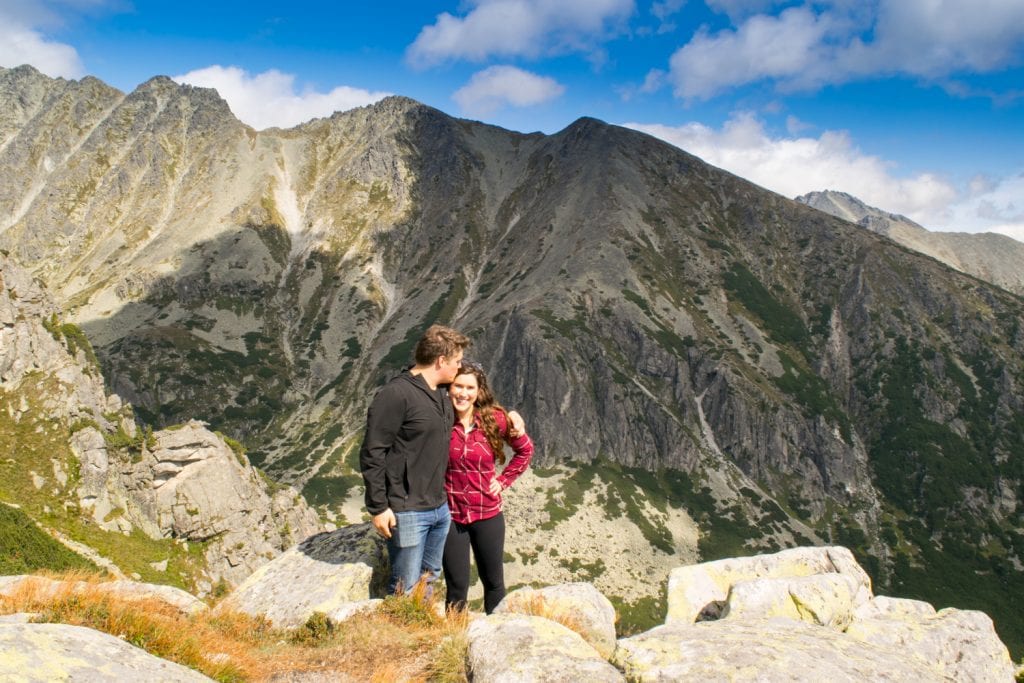
We’ve put together detailed packing lists for various seasons in Europe, so be sure to check out our complete suggestions for spring , summer , fall , and winter before you head off on your 2 weeks in Europe.
We go into far more detail on what to wear in Europe there !
To get you started, though, here are a few essentials that should definitely be at the top of your list .
Travel Insurance — We don’t ever suggest traveling without travel insurance–anything can happen, and it’s better to be safe than sorry during your 2 weeks in Europe.
Check travel insurance policy inclusions and prices for your trip here.
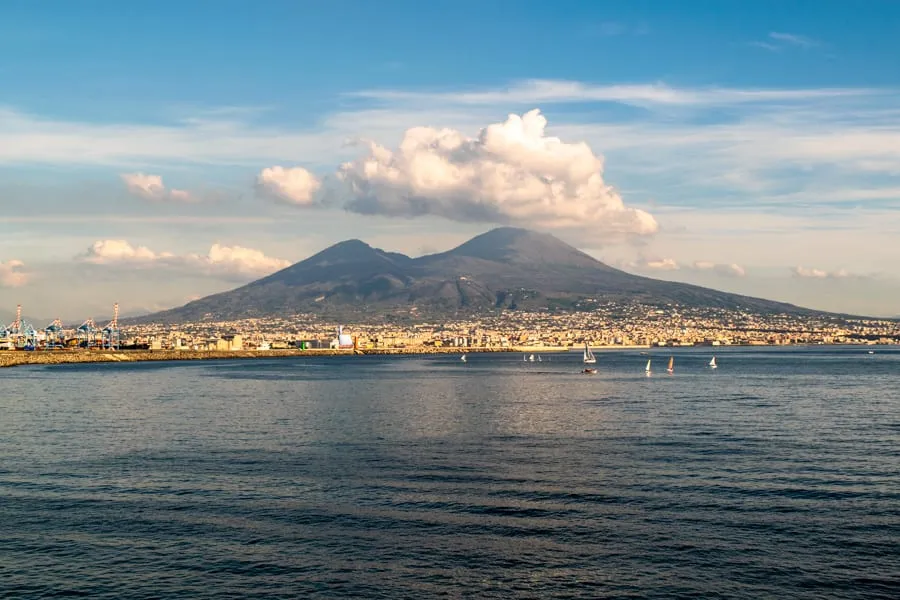
Pacsafe — We can’t recommend our Pacsafe enough!
This travel safe is affordable, sturdy, easy to pack, and will help keep your valuables safe in your hotel room (not that you should need to worry much about theft from your hotel room during your trip to Europe, but it’s better to be safe than sorry!).
Comfortable Day Bag — We currently use Pacsafe’s sleek anti-theft backpack and love it, but if you don’t want to shell out the cash for this trip, that’s totally understandable.
Just aim for something comfortable to wear, not flashy, and medium-sized–we used a Northface Jester backpack for years and loved it as well.

Travel Adapters for Europe — If you’re coming from outside of Europe, you’ll definitely need adapters for your electronics.
Be sure to check the requirements for any particular countries you visit–the United Kingdom, for example, is well-known for using different plugs than most of the continent.
Portable USB Charger — Don’t stress about your phone dying while you’re sightseeing!
Add a portable charger to your 2 weeks in Europe packing list.
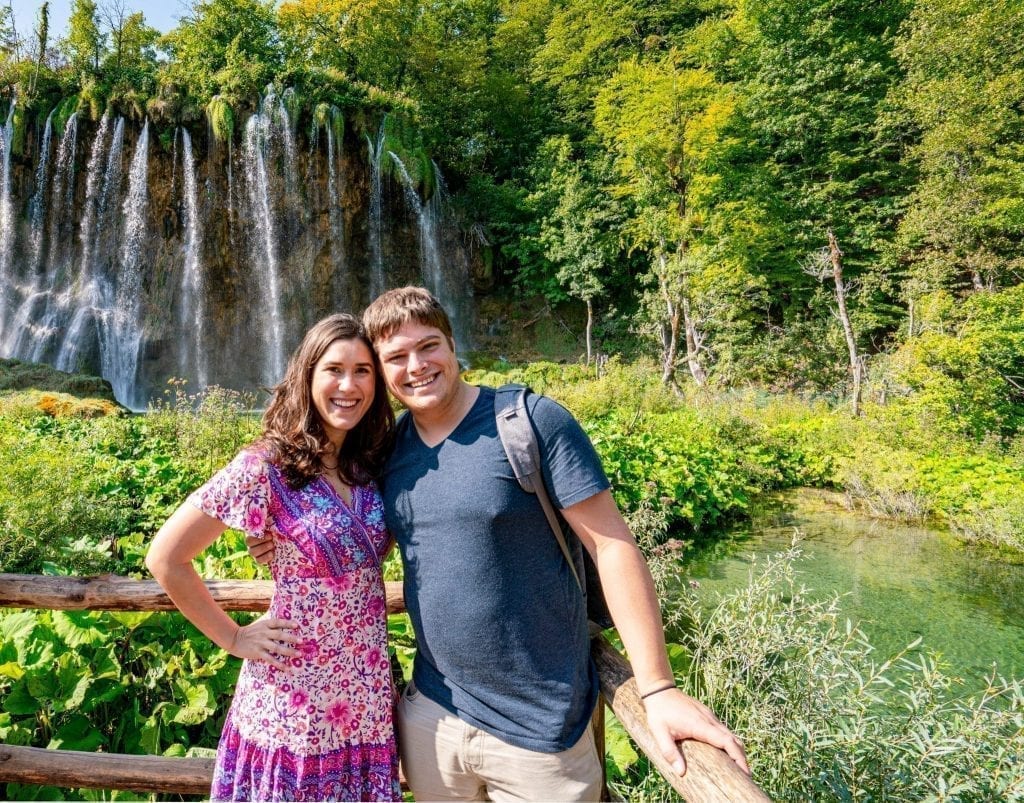
Hand Sanitizer — We carry this everywhere, and never been sorry to have it floating around in our day bag.
Travel Journal — If you want to keep a travel journal during your 2 week Europe trip but can’t commit to a huge amount of writing each night, I can’t recommend the One Line a Day Journal enough.
I’ve been using it for more than 5 years now (I’m on my second volume!) and I absolutely love it.

In the process of booking your Europe trip and eager to keep planning?
We’d love to help!
You can browse all of our general Europe blog posts here , find articles about specific places through our destinations page , or check out these guides:
- Your 13-Step Guide to Traveling to Europe for the First Time
- The Perfect 2 Week Spain and Portugal Itinerary (+ Essential Tips!)
- How to Travel Europe By Train: The Ultimate Guide (+ Tips!)
- 11 Quick Tips for Finding + Using Toilets in Europe
- Prague, Vienna, Budapest, Beyond: Epic Central Europe Itinerary
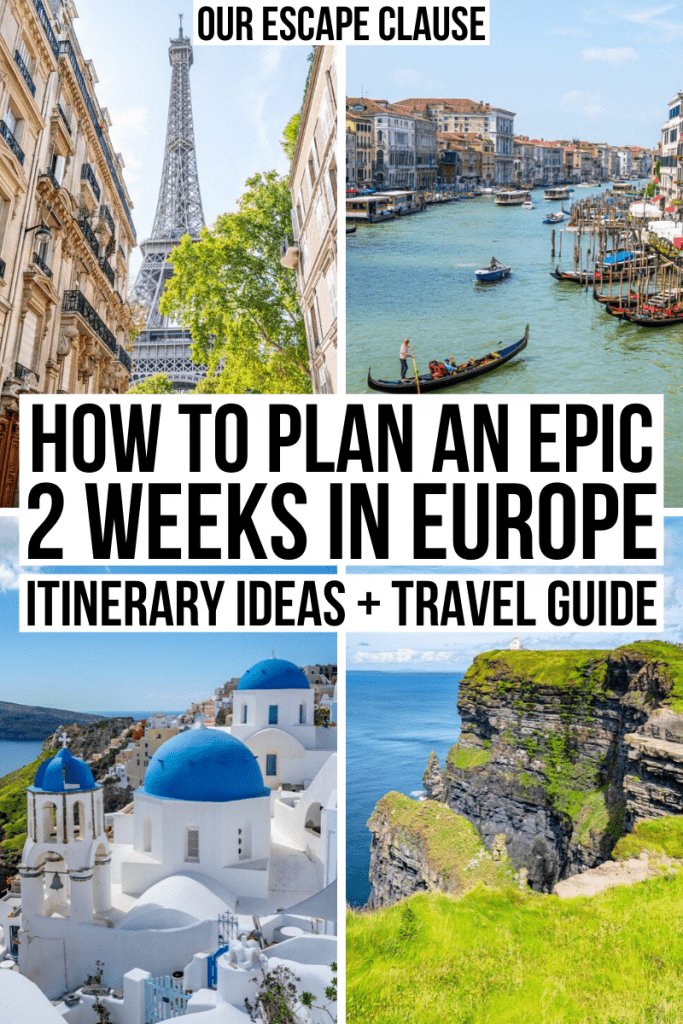
About Kate Storm

In May 2016, I left my suburban life in the USA and became a full-time traveler. Since then, I have visited 50+ countries on 5 continents and lived in Portugal, developing a special love of traveling in Europe (especially Italy) along the way. Today, along with my husband Jeremy and dog Ranger, I’m working toward my eventual goal of splitting my life between Europe and the USA.
58 thoughts on “How to Plan an Epic 2 Week Europe Trip (+ Europe Itinerary Ideas!)”
Great post! I’m actually working on my own 2 week itineraries through Europe post, but I might wait to publish until next year, when I’ve visited a few more spots. I totally agree that the key is to slow down and not switch cities every day or two. Three nights is perfect and sometimes more for the big cities. And yes, multi-city flights are so helpful so you don’t have to backtrack!
Thanks, Riana! We definitely love to slow down whenever we can. 🙂
Hi Kate! This is the BEST post related to Europe Itinerary out of the 1000 other posts that I have checked.
I am from India and I am planning for a trip in February end.
I definitely want to visit FINLAND (so that’s definitely in my list). From there, I am planning for Bupadest,Croatia OR Budapest, Prague OR Budapest/ Vienna.
Do you think this will be good for 2 weeks?
Waiting for your reply. And thanks a ton for such a beautiful detailed post.
Thank you so much, Akshay, that’s wonderful to hear!
That sounds like a wonderful itinerary. Croatia is a bit further out of the way than the other places, but it’s peaceful and beautiful during the winter and fairly simple to get to via a budget flight.
Hope you have an incredible trip to Europe!
Oh my goodness Kate, thank you so much for this post! This is exactly what I needed for my boyfriend and I to plan our trip to Europe in 2020. We want to visit Italy, Spain, France, and England but Greece and Croatia look amazing too! It’s so hard to decide.
Thank you, Jessica! So glad you found our blog helpful.
It is SO hard to decide, and honestly, it never gets any easier in my experience! All of those places are absolutely amazing, so no matter what you decide I’m sure you guys will have an incredible trip.
Italy, France, and Spain are really easy to pair together if you want to keep logistics simple, but really any combination of those would work.
What about panning around the seasons? Isn’t the Amalfi coast and Italy in general super hot during August?
It’s always nice to plan around the seasons when you can, but it depends on your availability!
Italy can be hot in August but it depends very much on where you go. It averages around 85 F / 30 C on the Amalfi Coast in August, which I have to admit isn’t enough to bother us, but it depends on where you’re coming from. It is high season there, though–very, very generally speaking, August is an expensive and crowded time to visit beaches in Europe because it’s when many Europeans tend to take their vacations and head to the coast!
Planning a trip in 2023-24 for my daughter’s graduation present. I was thinking maybe 2-3 weeks. On this trip, how much did you spend in total? I might end up being more because I usually pay for more luxurious than most, but will help with a little expectation of costs plus COLA increases obviously over the years. I figured I should start planning and saving now. lol
Hi Steven! We put this together based on years of traveling in Europe, so unfortunately I don’t have a specific figure to offer. So much varies, and can be impacted by where you go, how fast you travel (ie, how many times you change destinations), of course luxury as you mentioned, etc, etc. Generally speaking, for two people, I would say that $100/person/day is a good lower-midrange figure to calculate (excluding airfare), $200/person/day starts edging toward luxury territory, and of course, the sky is the limit.
That’s INCREDIBLY general, though. You’d be better off narrowing down which countries you plan to visit and calculating based on how long you plan to spend in each of them.
A few things to look at to give you an idea: price of hotels, price of day tours, projected cost of moving between destinations, and average cost of a meal. Those figures should give you a backbone to estimate a budget from.
What brand are the boots you are wearing in the photo “Comfortable Day Bag.” My wife loves them. Gift idea for when we go to Europe 🙂
Those are Ugg Kesey Motorcycle boots, and I love them too! Just got them out again for fall last week. 🙂
Hi kate I am planning to visit europe sometime in 2023(may/june) with my wife and son. Could you please guide me with an itinerary for 15 days Or so?? Swiss, italy, France, spain. After that we will go to a friend in England. If possible, the expenses involved as well. Thanks
Hi Abhijit! I’m not a travel agent, so that’s a bit beyond my scope. 🙂 Generally speaking, though, I’d recommend parring your itinerary down to 2 countries, or 3 at the absolute maximum. 4 countries in 15 days is a lot of travel! Luckily, all of those destinations pair well together, so you can mix and match fairly easily. Also very generally speaking, Italy and Spain will be the most affordable, and Switzerland by far the most expensive–but that depends a lot on where you go and what you do!
Hey Kate, All your pictures are amazing! What kind of cameras do you bring with you? And do you edit your photos? If so what do you use for that, they are all really bright, great pictures.
Hi Stefanie! Thank you so much! We’ve used different cameras over the years, but our main camera these days is a Sony A7 rIII. We love it, and yes, all the photos taken with it are edited in Lightroom. 🙂
Hi Kate, THANK YOU for the great article! I have booked my flights for a 2 week trip next spring, into London and out of Paris. I’ve been to both cities before, but do hope to get a few days in paris again. It’s stolen my heart.
What do you recommend in terms of getting from London to Rome, fairly quickly, and cheaply? I arrive into London mid-day and had hoped to just figure it out at the airport (Gatwick). Do you think that’s possible?
Thank you so much, Sarah! Your trip sounds fantastic.
I’d definitely plan on flying between London and Rome–it’ll be fastest and most likely cheapest, too. Check budget carriers like Ryanair, etc.
If you’re planning on flying out to Rome the same day you arrive in Gatwick, I’d absolutely recommend booking before you arrive. Be sure to double-check and make sure you’re flying out of Gatwick, too, or have time to change airports.
Hope you have an amazing time!
Oh wow I’m doing the same trip with my 3 sons. And unfortunately is the month that she said it’s the worst to go ..in August…oh well🤷🏽♀️ can’t do anything about it how but I am worried about the expense tho..
Love your information. I’m planning a trip to Italy and then we want to go to Salzburg as well in the summer of 2023. Our first time to Europe. We will be 60 in 2023 and we think we can plan this without going through a company. After reading your information, I feel comfortable. Two questions about hotels and transportation. What would you recommend for safe places for hotels in those two countries? We don’t need luxury but just comfort and clean. Would you recommend using rail between cities in Italy and it looks like you can travel from Venice to Salzburg by rail? Thoughts?
That’s great to hear, glad we could help!
Venice to Salzburg by rail is very doable in a day and a scenic journey. You’ll probably have to make a change, but that’s workable. Personally, we’d opt for it over flying in a heartbeat.
For hotels, I have several recommendations in our specific Venice and Salzburg posts (you can use the search bar to pull up everything we have on both cities). The centers of both places are quite safe, I wouldn’t worry much about that in a well-reviewed hotel.
Hope you guys have an unforgettable trip!
AWESOME Post!!!!
Please let me know if you have posted anything similar in 2020 or 2021. My wife and I are bringing our three teenagers and we will likely choose the Food & History trip. We both would like to speak with you if possible as we are planning our trip for December.
Hi guys! We don’t run tours ourselves, just provide information for independent travelers, but we’re always happy to answer a few questions about possible itineraries!
Hi Kate, THANK YOU for the amazing Pic ,for now i’m in South Africa Cape Town I’m planning a trip to Italy , France & Austria next year 2022 for 2weeks , Would you recommend using rail or Via Road way .
Thank you in advance & best Regards En vous remerciant d’avance et cordialement
Sounds like a fabulous trip!
Rail vs car depends entirely on where you’re going. If you’re sticking to cities, I’d recommend going by train. If you want to enjoy the countryside, a car could be helpful.
You can also mix-and-match, and rent a car for only part of your trip if you’re going to be in the countryside only part of the time.
Thank you for this awesome post, Kate! My husband and I are wanting to take our first international trip to Central Europe early spring 2022 and have reviewed your Central Europe post. What type of difficulties have you faced with international travel during COVID-19? Any issues with a country on your itinerary going into lock-down or no longer allowing tourists from the US?
We haven’t personally run into any issues with lockdowns interrupting our plans but of course, it’s always possible and things are changing constantly.
Most, if not all, countries in Europe are accepting vaccinated and/or tested US visitors now and haven’t shut their borders to US citizens again since the initial reopening. All of the countries included on our Central Europe itinerary are currently among them.
In addition to entry, some countries are requiring proof of vaccination in order to do certain things like eat in restaurants or check into hotels. Portugal, where we are now, is among them. It’s a very simple process as long as you have the paperwork in order!
Generally, if you plan to visit Europe from the US in 2022, we recommend arriving with proof of vaccination, a negative COVID test (check regularly for specifications as your flight gets closer), flexibility, and the expectation that you’ll wear a mask indoors and potentially in crowded outdoor areas.
I am not a public health expert, of course, and European countries all set their own restrictions, but in the early stages of planning, that’s what I’d keep in mind!
The reaction that we’ve seen from readers who visited in the second half of 2022 has generally been that it’s easier than they expected, but as we’ve all learned way too much in the last 2 years, none of us can predict the future!
Thanks so much, Kate! It definitely seems like flexibility is key as well as continuously monitoring each country’s individual rules for a multi-country trip. I think right now Hungary isn’t accepting tourists but fingers crossed that will change soon so we can replicate your trip. 🙂 Cheers to more adventures for you in 2022!
Hi Kate, my family is in the beginning phase of planning our first international trip and have decided on Europe! I really liked your recommendation of arriving and departing from different airports and I think departing from London would make sense (we’ll probably want to spend the most time there). All we’ve decided is to vacation for somewhere between 2-3 weeks, and we want to see London and Ireland (oh and I want to stay at least one night in a castle hotel!). Would you have any recommendations on destinations or experiences to share? Thanks!
How exciting–nothing like your first trip abroad. 🙂
We actually still haven’t been to London, which is a huge shame! Fingers crossed that 2022 is the year.
Ireland, on the other hand, is one of our absolute favorites! If you search “Ireland” on the top right corner of the blog (or on the pop out menu on mobile), all of our blog posts will come up, but this is a great one to start with: https://www.ourescapeclause.com/10-day-ireland-itinerary-ireland-road-trip/
We spent a night in this castle (slash manor house) and had a fantastic time: https://www.ourescapeclause.com/belleek-castle-county-mayo-ireland/
Ireland is one of our favorite places for road trips on the planet. You’ll love it!
Great post, thanks!
Need your advice here 🙂 We will be landing in London, staying there 3 days, then train to Paris (staying in Paris for 3 days). We fly back home from Lisbon and have 3 options: night train to Nice (spend some time there and then a few days in Lisbon), fly to Napoli (spend some time there and then fly to Lisbon) or fly to Lisbon and discover a bit more of Portugal… What would you recommend?
Oh and we are travelling with two teens who have never been to Europe… I’m trying to pack as much stuff, but wonder what would be too much :/
That’s a lot of hard choices! Each and every one of those destinations is a delight (and we’re living in Lisbon right now).
I’d opt for Nice if you’re looking for coastal views, picturesque villages, and something logistically simple. Nice is a delightful city and the day trips to nearby villages like Eze as well as Monaco are phenomenal. It is the most formal and pricey of the 3 cities and will have a resort feel near the coast in the summer.
Naples is a much less manicured city, it’s a love-it-or-hate-it place (we love it). I’d argue that it has the best food of the 3 options, but those are fighting words and many would disagree. The day trips are equally stunning but very different. If you or your family has an interest in ancient ruins, Pompeii and Herculaneum are unmatched. Visiting the Amalfi Coast or nearby islands is also doable, but it’s a trek if you’re staying in the city center. Keep in mind that there’s no train service to the Amalfi Coast proper, you will need a bus, car, or ferry to get beyond Sorrento.
Lisbon is delightful but honestly, our favorite parts of Portugal lie outside the city. Porto, in the north, has a much more regal feel while Lisbon is fairly spread out. The Duoro Valley (also in the north) is magnificent for port tastings and views, Sintra’s palaces located just outside of Lisbon are must-sees, and if you want to head to the south, the Algarve is incredibly striking.
Logistically speaking, I’d make sure you have at least 2-3 days in Portugal at the end of your trip before flying out, regardless. With 3 full days, you can spend 2 in Lisbon and take one day trip (probably to Sintra but the coastal town of Cascais is also easy and lovely).
If you have time to do that and add another stop for 3 full days, I would check detailed flight and train schedules and let that guide you–the logistics alone may make the choice for you.
That got a bit long, but I hope it helps! 🙂
Thanks a lot for the precious information!
Hi Kate! I know you said you are not a travel agent but are open to a few itinerary questions! We have recently done a European Cruise which hit almost all of Italy! We are wanting to go back independently. I am highly interested in Ireland, but would also like to see Paris. My husband is interested in Netherlands, Germany, Switzerland. With a 14 day trip wanted, what areas do you think we should do (based on best places to see, with allotted time?)
& Austria! 🙂
That is a lot of very different places, but you’ll definitely be able to pull together a great trip! I’d recommend narrowing it down to around 3 destinations, 4 if you’re comfortable moving quite fast and two of them are close together.
Ireland is definitely the odd one out geographically, but if you use two one-way tickets instead of flying in and out of the same airport, it can work (it’s what we did on our first multi-country Europe trip many years ago).
Since you’ll likely have 1-2 flights in this itinerary regardless, which destinations you pick can come down to a combination of your absolute favorites and what makes logistical sense. Paris is a very popular place to fly in and out of, so it’ll likely be easy to work in.
I’m not sure which parts of Germany your husband is interested in, but parts of western Germany have simple train access to The Netherlands and/or France.
As far as what places I’d personally visit, Ireland and Paris are two of my favorite places on the planet, so I’m biased! Switzerland’s mountain landscapes are truly beyond belief, so if you’re looking for nature (and aren’t concerned about the budget), it’s a winner.
Germany is also gorgeous, both its nature and many of its cities, though it’s quite big and varied–with a big trip like this, you’ll want to choose one small corner of it (Bavaria is a popular first stop, but you can also look at places along the Rhine, which makes more sense if you’re hoping to visit Paris or The Netherlands by train before or after).
The only part of The Netherlands we’ve had a chance to visit so far is Amsterdam, which is visually stunning but will be extremely crowded–probably more so than anywhere else you’ve listed, as there’s less room to spread out there than in, say, Paris.
When it comes to your itinerary, I’d recommend that each of you pick one place that is your absolute first choice, plan on a trip to those, and then fill in the 3rd and possible 4th destination based on what makes logistical sense as far as what planes/trains/buses are available to the spots on your shortlist.
Also, if you do need to book high-speed train tickets, book them ASAP, as prices increase as your trip gets closer.
What a wonderful blog, just when I feel like I’ve read them all I find another really helpful article. Heading to Europe for 1 month in May. Keen on Spain, definitely Italy, and probably 2 days in London and Paris respectively (arrival and departure). Feel like we have space for one more place and can’t figure out which is the better option (Portugal, Croatia or Greece) for potentially 5 days? Any recommendations?
Thank you for sharing all your wonderful insights.
That’s tough, because all 3 are fantastic but very different!
I’d probably recommend (if I had to choose), Greece for beaches/swimming and small towns, Portugal for cities, and Croatia for a combination of all. But we adore each and every one of them, so hard to go wrong!
Portugal fits nicely into your Spain section geographically, so there is that to consider.
Hi, Kate! Super love your blog. I just booked a trip to Europe for August, was thinking of going to France, Spain, and Italy in 2 weeks. Or should I cut it down to 2 countries? Hope to hear from you!
Less relevant than the countries are the destinations within them–I wouldn’t go more than 4 places in 2 weeks, max.
So if you’re hitting up Paris, Barcelona, and Rome, for example, your plan is fine. If you want to go to 2-3 places within each country, it’s time to cut it down. 🙂
HI! Thanks for the fantastic blog! My husband and I are planning our first trip to Europe from Canada and are feeling quite overwhelmed by all the choices! His family is from Holland, so we are spending one week touring with them for the first week of May, and then will stay an additional 2 weeks after that. What would you recommend? We are not keen on France but everything else looks so great, and it was good to read that you don’t recommend trying to fit everything else in, which is what we might otherwise be trying to do. Any suggestions for the 2 weeks after Holland?
Hi Michele,
That’s so exciting! You guys are going to have an amazing time.
Without knowing your tastes or the season you’re traveling, the sky is truly the limit when planning your itinerary! Anywhere that sounds exciting to you is going to be worth it. With 2 weeks, I’d opt for 1-2 countries and no more than 4 base destinations (3 would be even better).
I started trying to make a list of some of our favorite countries in Europe for you, but just backspaced the sentence because I was ending up just listing every country, LOL. But Italy is one of our special favorites that we would recommend to just about anyone!
We will be in Holland for the first week of May so we could do the other two weeks either before or after that (or split one before and one after). The suggestion to cut down to less rather than more is helpful – it’s our first time to Europe and everything looks like something we should see! We are 50 and really like most things – some scenery, some castles, etc. Do you think it would be do-able to do Germany and Italy on top of Holland? Any specifics on what you love in Italy? I am really NOT a crowd person, so we’re really going to try and avoid huge crowds or I’ll lose my mind 😉
A week in Germany followed by a week in Italy is definitely doable!
Personally I’d opt for either southwest Germany (Black Forest, Heidelberg, Burg Eltz) or Bavaria.
We love virtually all of Italy, but if you want something somewhat more offbeat that’s in the top half of the country (for geography reasons), I’d recommend looking into Emilia-Romagna.
It’s the region east of Tuscany, and has similar appeal with far fewer tourists. It’s also gorgeous and a culinary dream–Emilia-Romagna is the origin of many iconic foods like parmigiano-reggiano and traditional balsamic vinegar.
A few destinations in the region to poke into as you research: Bologna, Parma, Ravenna, Ferrara, Modena. The micronationa of San Marino is also accessible from there!
Kate-what a remarkably comprehensive, detailed and resourceful blog! I love the considerations offered from different perspectives. My family of 4 (including 2 kids ages 10 and 6) will be traveling to Paris for the second half of August for 2 weeks to visit family. We have already been to Paris a few times so this time around, I would like us to explore more of Europe for some of the time, ideally via trains. I am thinking of staying in Air B&B’s as we have been enjoying that accommodation when we travel locally within the US but would love your perspective on this (vs hotels) considering the cultural and language differences in certain destinations as well as any recommendations for either you may have. Based on some research, some destinations I came cross purely based on travel distance via train from Paris are Switzerland (3 hrs), Barcelona (6.5 hours! would probably have to be an overnight train for the kids), London (2 hrs, have family we can see), and Greece (2 hours), Belgium (1.5 hrs, also some family we can see). My goal is to show my kids/family different cultures, ways of living and experience foods, interesting architecture, beautiful cafe’s etc. Also curios if any of these can be “day trips”. I do not have specific destinations yet to see at these locations and would love your input. From your article, it sounds like limiting to 2 destinations maybe best (outside of Paris) and your thoughts may help me narrow down where to focus. Thanks so much and look forward to reading your insights on this.
So glad you found it helpful, Tez! Sounds like you guys have an amazing trip planned.
I’m sure you already know this, but August is the height of peak season for European travelers visiting the coast and mountains, so some destinations will be quite crowded and expensive (book your hotels and train tickets ASAP, especially in a group of four).
I’m assuming Greece is a typo, so I’ll pass over that one–pretty sure it’s much further than 2 hours even by plane. 🙂
Luckily Paris is a huge train hub for getting across Europe, so you have plenty of options! Most of them will take longer than it looks on the map once you navigate connections, train times, etc. We highly recommend using Omio to search exact routes and dates, and keep in mind tickets will increase in price as you get closer. With kids, you’ll probably want to search by the fastest available routes.
London, Belgium, and Switzerland all jump out at me from your list–simple to access and incredible. The Jungfrau region in Switzerland is pure paradise, though a bit further away.
You may also want to look into Amsterdam, it’s only 3.5 hours from Paris by train.
With the right schedule, you can get as far as Venice in a day from Paris (we’ve done this), so Italy is an option for you as well, as is Germany.
Essentially, the more you stick to major cities, the easier it will be to navigate solely by train. Smaller towns and cities are often connected, but you’ll virtually always need to pass back through the main city of a region to make your way back to Paris.
You may want to take a look at this post as well, we talk a lot more about train travel here: https://www.ourescapeclause.com/travel-europe-by-train/
Hi Kate Love your blog, lots of useful information. My husband and I are planning a 10 day trip to Europe end of April to early May. At the moment we are looking at flying from the US RT to Paris. We’re thinking of possibly going to Amsterdam and Belgium as well. this will be our second trip to Paris. We are open to other suggestions. Do you have any other recommendations?
Happy to be able to help, Daisy!
Paris + Amsterdam + Belgium is an excellent itinerary and doable in 10 days. It’s actually a route we recommend ourselves. We have posts on all those places, but here are our suggestions on spending 3 days in Belgium to give you an idea of what you can cover in a short time frame: https://www.ourescapeclause.com/3-days-in-belgium-itinerary/
Paris is extremely well-connected by rail (you can be in Venice in 9 hours or Munich in under 6, for example), so as far as ideas for other destinations go, the sky is the limit!
If you choose to extend your original itinerary, a few additional places that you might consider along that route are Strasbourg/Alsace, Heidelberg, and Cologne.
Thank you for your blog.. We are travelling to Europe for 14 days the end of May. Flying Calgary to Dublin, doing a couple days at the Isle of Man races then hopefully, London, Paris, Rome. Your blog shares what to pack for clothing in Summer, Fall and Winter, what would you recommend for spring? We are trying to decide if we take the trains or flights from London, Paris and Rome. We aren’t planning any beach time. Also, what do you recommend for luggage? I’m leaning towards a rolly carryon but have every size hard shell case and multiple back country camping packs.
So happy you find it helpful!
Funny you mention spring packing ideas–I’m actually working on a post for that right now. It will hopefully be up next week. But off the top of my head, you’ll definitely want a travel umbrella and to pack in layers. The end of May is a beautiful time to be in much of Europe but the weather could be unpredictable–you may want sundresses on some days and light jackets on some evenings!
As far as luggage, either is completely fine. There are advantages to both backpacks and suitcases, but as long as you’re comfortable carrying your bag up and down staircases, carrying (or rolling) it down the street for 10+ minutes, and loading it into and out of trains and/or cars, you’re good.
As far as trains vs planes–London to Paris can definitely be a train, but do a time and cost-benefit analysis between that and a plane (depending on the dates, your travel style, etc, you may choose either). Paris to Rome is better done as a flight!
Thank you very much for sharing your wisdom. We are really excited.
Hi Kate, Thank you so very much. You have provided an AMAZING amount of helpful information. Can you pretty please help me with the best location to travel to 1st, 2nd, 3rd & 4th and the best way to get to the locations? (We will NOT be doing any driving).I’m a 55 years old woman. I live in USA. I’m planning the 1st International trip for me and my husband for either the 1st or 2nd week of September 2023. My biggest challenge is knowing where to start and end the trip, based on logistically traveling to the different destinations, as well as, the best way to get to each destination.Here are the the things I have planned. I know you mentioned you’ve never been to London but i’m hoping you can assist based on me providing the area I want to be in. *LONDON-7 NIGHTS I’m a theatre/adrenaline junkie person so Theatreland West End of London near (North of the River Thames. 3-Plays (evening events) 2-Hour Sherlock Holmes museum (near West End) 1-Hour Ghost Bus tour (nearest tube stations are Embankment and Charing Cross) 4-Hours-day walking tasting tour (near London Bridge Station) 1-day Harry Potter Studio Tour (Leavesden London) 2 -Nights Theme park “Alton Towers” located Alton, Staffordshire near Manchester and Birmingham. (stay onsite at the parks resort)*PARIS-3 NIGHTS Moulin Rouge (BD de Clichy area) L’ATELIER DES LUMINERES -DIGITAL ART MUSEUM I would like to visit just one of the haunted castles in Paris (depending on recommendation) Château de Puymartin Château de Brissac Château Lagorce Château de Chambord Château de Versailles* GERMANY 3 NIGHTS-Phantasialand Theme park (located Bruhl Germany) Stay onsite at the parks resortThank you for any advice or suggestions you can provide.
Hi Melvina,
I definitely can’t speak to getting around London in detail, though a combination of the tube and buses will likely be doable! You can add cabs as needed as well.
In Paris, the metro is so dense you should have no issue getting around. Assuming you are planning to do the usual Paris sights (Eiffel Tower, Louvre, etc), our Paris itinerary might be able to help you out (and has hotel recommendations): https://www.ourescapeclause.com/3-days-in-paris-itinerary/
For the chateaus, Versailles is by far the closest to Paris and you can get there by RER train. Château de Chambord in the Loire Valley is doable via an organized day trip like this: https://www.getyourguide.com/paris-l16/loire-valley-castles-wines-day-trip-from-paris-t70389/?partner_id=1OI4D21&utm_medium=online_publisher&placement=content-middle
The others are way too far from Paris for day trips, so I’d focus on Versailles and/or Chambord this time.
Hope you have a wonderful time! 🙂
Thank you so very much.
Hi, thank you for this comprehensive post! We are planning a trip this summer and will be going to Paris, Rome, Florence and Amsterdam. My question is about changing money. We were in Iceland last year and used Apple Pay or credit card everywhere, never needed cash and didn’t get any. Is that possible in either France, Italy or Netherlands? Should I plan on getting cash for taxis, tips, etc?
Happy to help!
I’d definitely recommend having some cash with you as you travel, especially for small purchases like coffee, gelato, etc. Most hotels in Italy will require the city’s tourist tax in cash, too. Some taxis and tips will be best done in cash as well, and occasionally very small, offbeat tourist attractions.
While cash-only restaurants definitely aren’t the norm in any of those cities, they’re not unheard of, either.
Overall, I’d say you’re most likely to avoid cash entirely in Amsterdam and most likely to use some of it in Rome and Florence, but that’s not a hard and fast rule by any means (I used some cash on my trip to the Netherlands last spring, for example).
We find that the easiest way to get cash, by far, is to withdraw Euros from any bank’s ATM once you’re already in Europe (avoid Euronet–use an ATM branded by an actual bank). Luckily, since all the places you’re visiting use the Euro, you won’t need to worry about changing currency beyond that. 🙂
Hi Kate, thank you for this great, and helpful post! We’re are planning a trip to Europe for the first time in September for next year in 2024. My plan is to visit Spain, Italy and I’m still undecided on the third country to visit. What country would you suggest or advised that we can visit that has beautiful scenery, mountains, lakes, etc. We like the city, but we also want something where we can hike out in nature like Iceland maybe, Switzerland. Any tips on that? Also, is it cheaper to stay in hotels, Airbnb’s? Thank you!
Spain and Italy–two of our favorites! You guys are going to have a great time. 🙂
The hardest part about picking a third country with your criteria will be narrowing it down between many excellent choices–you really can’t go wrong.
Switzerland is absolutely spectacular, if the Alps are what you’re looking for, it’s iconic and hard to beat in every category except the price tag.
Germany and Austria also offer beautiful mountains and lakes and are a more budget-friendly than Switzerland.
The French Alps are also wonderful–towns like Chamonix and Annecy offer plenty of mountains, lakes, etc.
And, for a a wild card, you don’t necessarily need a third country at all: the Dolomites in Italy have everything you’re looking for.
Any of those that appeal to you and fit your budget will be a great addition to your trip. They’re well-connected to Italy and each other by train, the travel times aren’t too far, and they’re all phenomenal places to visit.
One small thing to keep in mind if you’re planning to travel by train a bunch is that Spain isn’t very well connected to the rest of the places you’re considering by rail–you may want to consider flying in and out of there.
Iceland is definitely far out of the way, but assuming you’re traveling to and from North America, look into the Icelandair stopover program if you want to add it on! I will say that while it does offer mountains, lakes, and beautiful scenery, it’s a very different vibe than Switzerland or any of the surrounding Alpine countries, so take a close look at the specific destinations and see if it’s what you’re looking for. It’s a stunning place, just very different than the others. Here’s one of our Iceland posts if you want to get a feel for it: https://www.ourescapeclause.com/10-day-iceland-ring-road-itinerary/
Leave a Comment Cancel reply

Get our Rail Planner app
Plan your trip, get extra discounts, and show your Pass as you go.

Our favorite spring routes
Celebrate spring with these 7 off-the-beaten-path train routes

All about seat reservations
Everything you need to know about booking your seats

Alternatives to Busy Routes
Travel between popular European cities without seat reservations

Through our Chatbot in the bottom right corner.

Ask the Community
Browse questions from fellow Eurail travellers, or ask your own!
- Plan your trip
- Travel tips from our Community
2 month summer itinerary
- Order overview
- Reservations overview
- My Trips & Travelers
- {{translatedTraveler}} {{#promotional}} {{currencySign}} {{standardPrice}} {{/promotional}} {{quantity}}x {{currencySign}} {{finalPrice}}
- Child {{childPasses}}x FREE
- {{translatedPassType}}
- {{translatedValidityPeriodDescription}}
- {{translatedClass}}
- Remove Pass(es)
- {{variant.localizedTravelPackDescription}} {{quantity}}x Free
- {{variant.localizedPassUpgradeDescription}} {{quantity}}x {{currency}} {{price}}
- Your order will arrive by {{expectedDeliveryDate}} 1 x {{currency}} {{price}}
Your cart is empty
A community itinerary from Heather
As you get ready to travel again you may be wondering where a Eurail Global Pass can take you... The answer is, wherever you choose! Every trip follows a unique itinerary , so some of the best sources of inspiration are the maps and photos sent in by Eurail travelers like you.
This itinerary was sent to us by Heather , who traveled from Finland to 17 countries last summer! Her photos from 10 of those countries showcase some of Europe's biggest attractions. We've also added some travel tips to send you on your way.
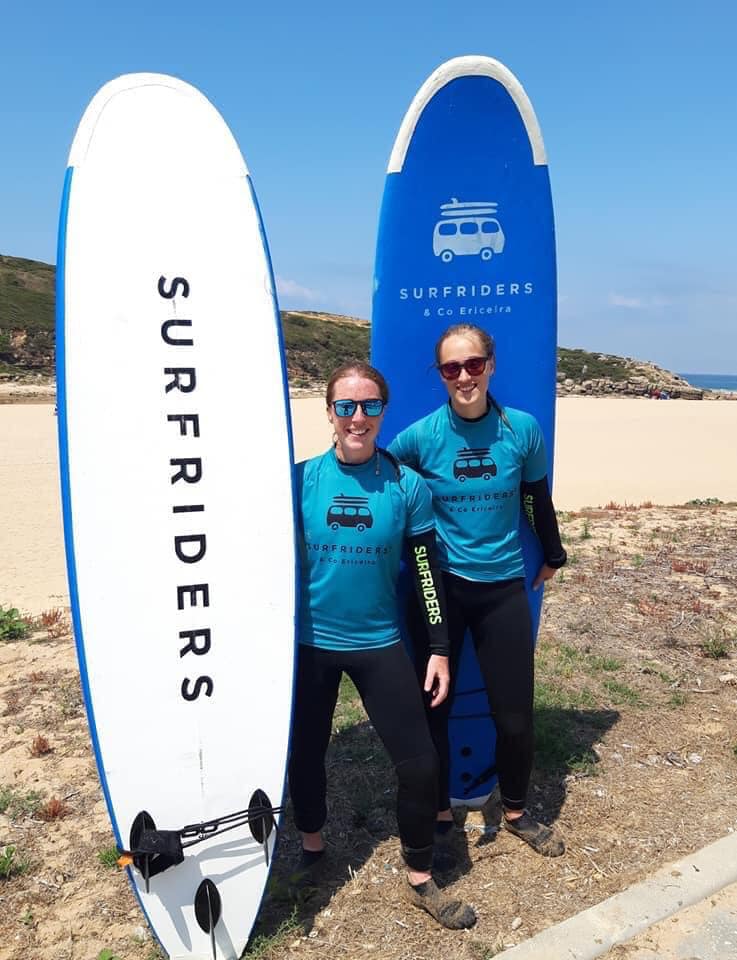
Heather's itinerary
''At this uncertain time I thought I’d share the highlights from my amazing 2-month-long trip around Europe last summer with Eurail... we did 17 different countries on the 2 month Global Pass and it was the best experience of my life ❤️.'' - Heather
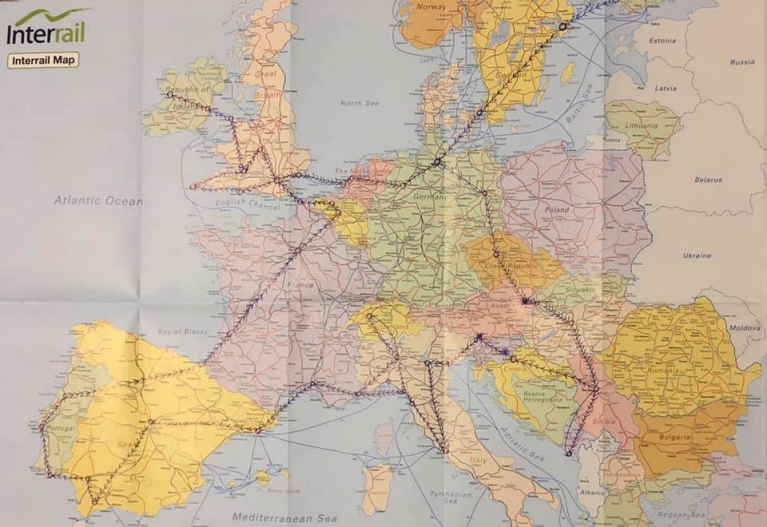
A historic trading town that forms the rail gateway to Denmark and the rest of Scandinavia. Its most known attraction also happens to be a gate - the red-brick Holstentor city gate (pictured above).
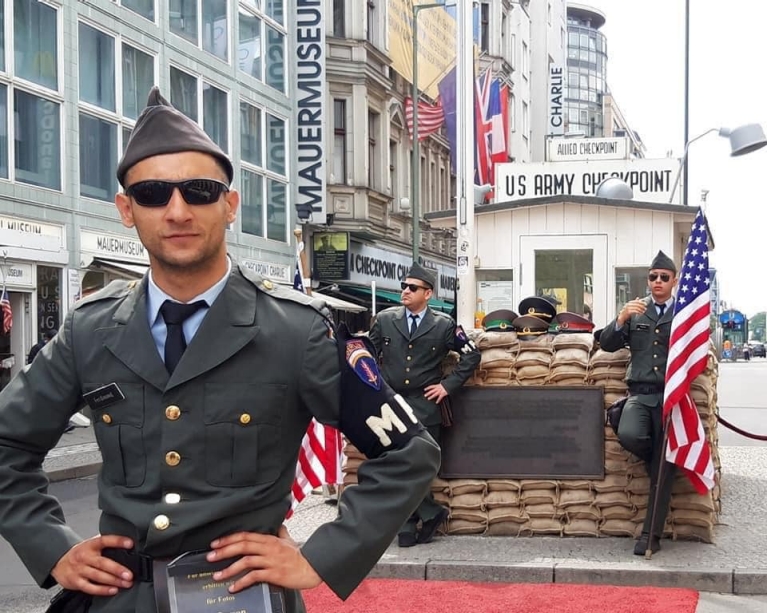
Checkpoint Charlie, Berlin
A 2h 40m journey, including a stop in Hamburg, will bring you to Germany's capital, Berlin. You'll want to stay in the city as long as you can, to discover its history, landmarks and nightlife.
Travel time:
Reservation needed:
Berlin, Germany
Berlin Südkreuz
Reservation optional
Prague, Czech Republic
Prague Hlavni Nadrazi
2. Czech Republic
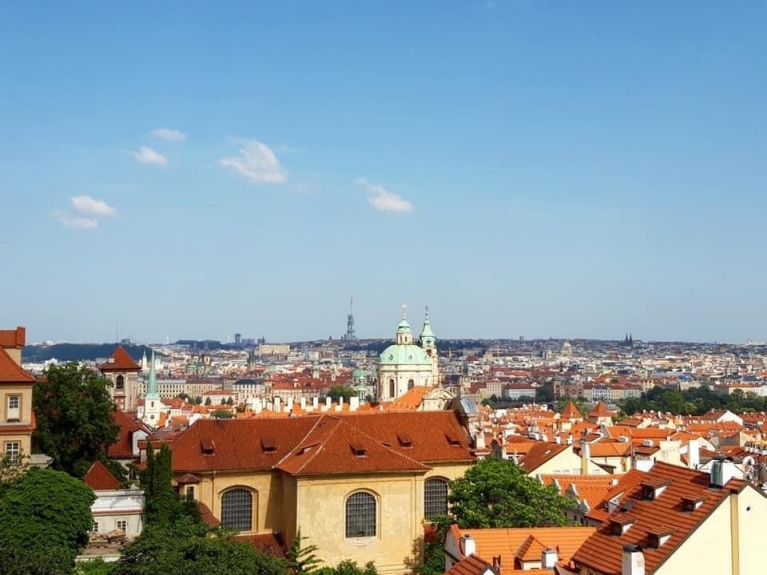
Prague's incredible skyline can be a lot to take in. Thankfully it has enough high places to see it all from different angles. Try Letna Hill to see the Vltava River and its many bridges; Petrín Tower to view the old center and castle complex; or the Klementinum for a view like this, amongst the orange rooftops.
Linz, Austria
Salzburg, austria.
Salzburg Hbf
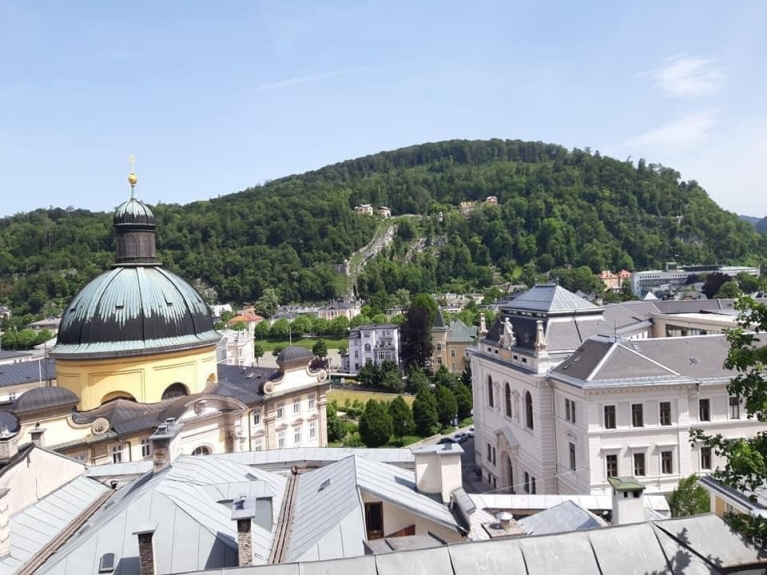
There's no direct route from Prague to Salzburg, so why not stop off in some of central Europe's smaller cities... Discover characterful Český Krumlov in Bohemia, or Austria's thrid-largest city Linz, all before you enjoy Mozart's birthplace .
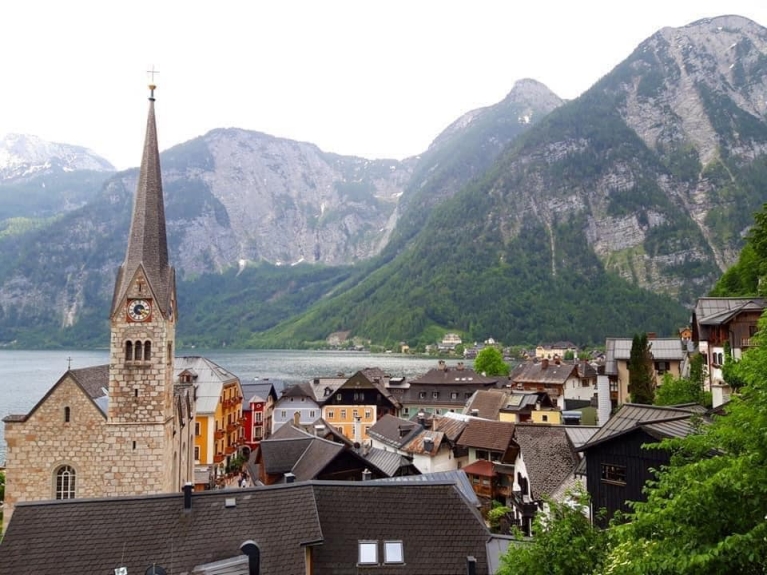
2 hours 30 minutes from Salzburg (via Attnang-Puchheim) is a view that is definitely worth the journey! Hallstatt is the most magical town of the Upper Austria lake district.
Hallstatt, Austria
Vienna, austria, bratislava, slovakia.
Bratislava-Petrzalka
4. Slovakia
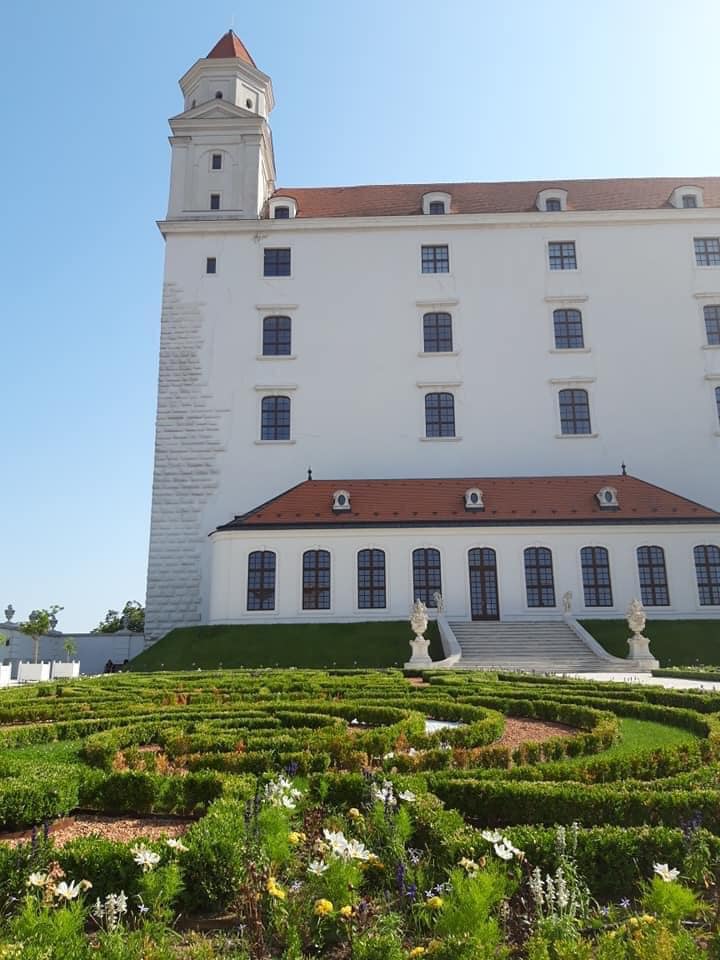
Bratislava Castle, Bratislava
You may want to break your journey in Austria's capital, Vienna, as you head east to the capital of Slovakia. Picturesque Bratislava has a lively historic center and a grand castle (pictured above) overlooking both the city and the Danube river.
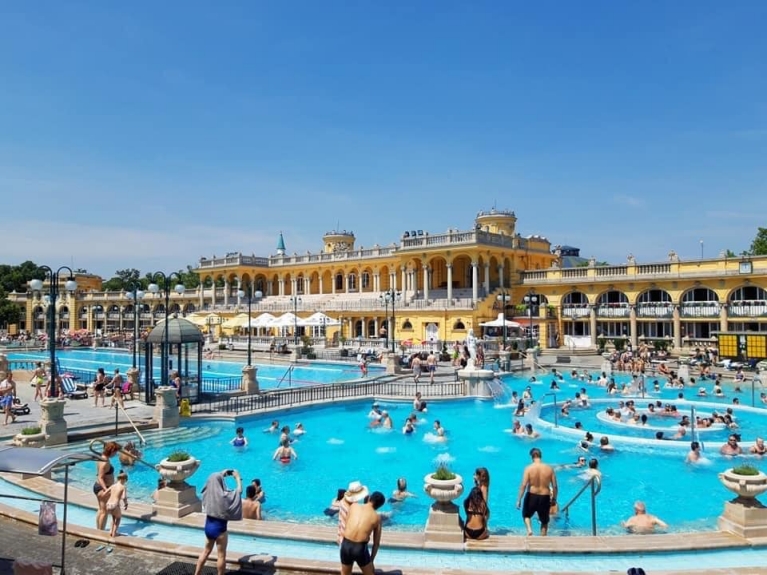
Széchenyi Thermal Bath, Budapest
A journey of 3h 47m via Vienna will drop you into Budapest without needing to make reservations. Once there you can enjoy the Széchenyi thermal baths or a cruise on the Danube.
6. Slovenia
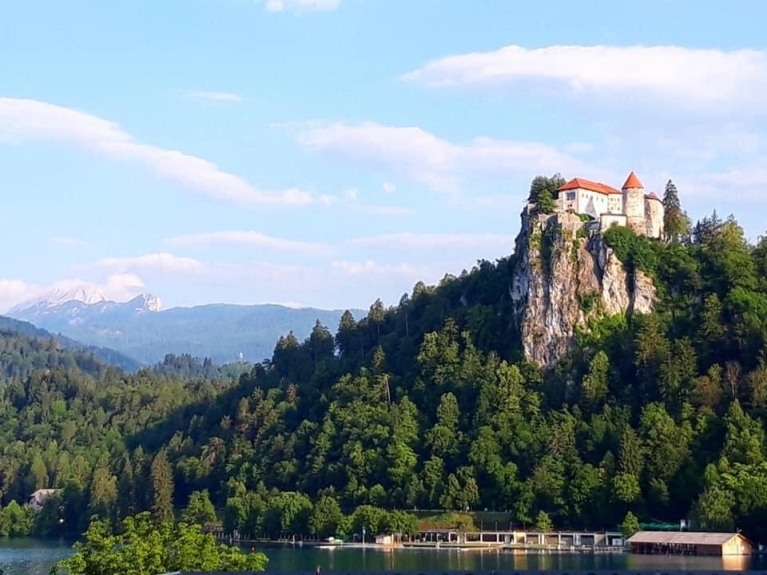
Bled Castle, Lake Bled
An overnight journey, taking the daily EuroNight from Vienna at 1:40am, will bring you to Slovenia's most-famous spot in time for a lakeside sunrise. Lake Bled, with its iconic island and castle, is a perfect backdrop for outdoor summer activities, including swimming, hiking and SUP-ing.
A once daily night train, leaving Bled at 12:36am, will take you to Italy via Austria.
Bled, Slovenia
Reservation required
Villach, Austria
Villach Hbf
Venice, Italy
Venezia S. Lucia
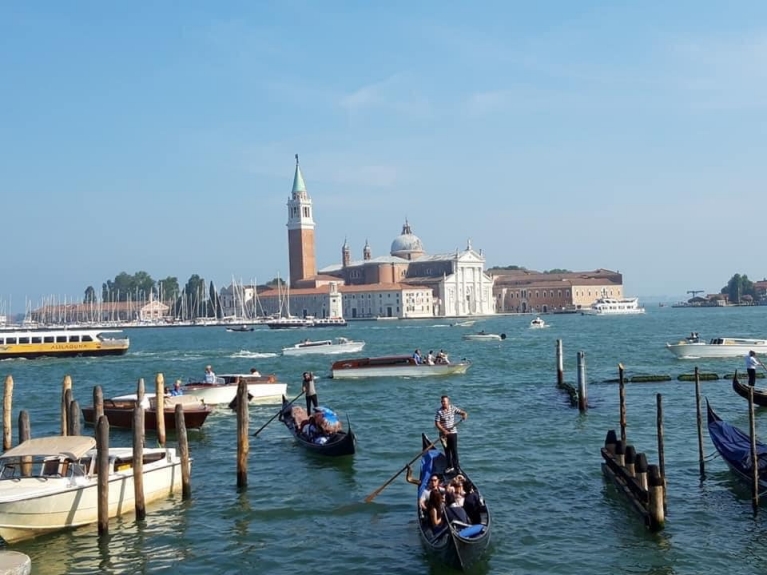
The famous city of canals is built across more than 100 small islands.

Colosseum, Rome
A 3h 48m direct train from Venice (with reservation) will bring you to the geographic, political and cultural center of Italy.
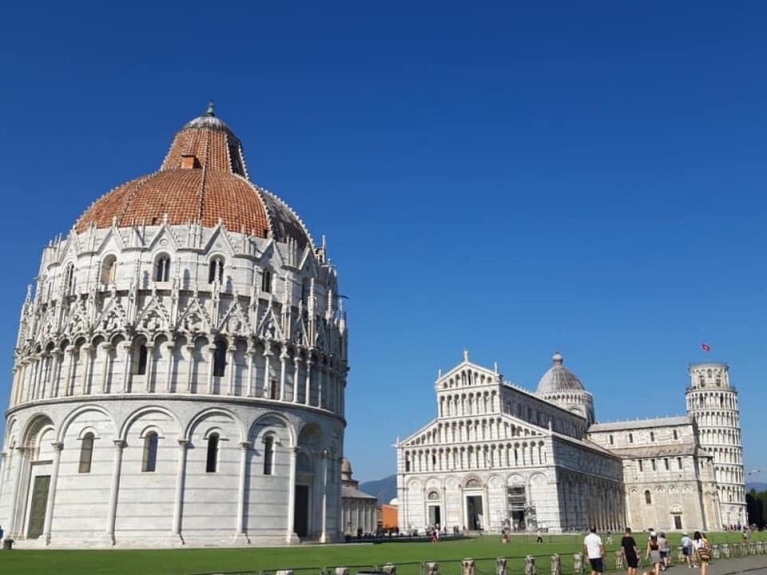
Just under 3 hours from Rome is the famous Leaning Tower. It's just a 20 minute walk from the central train station.
Cinque Terre
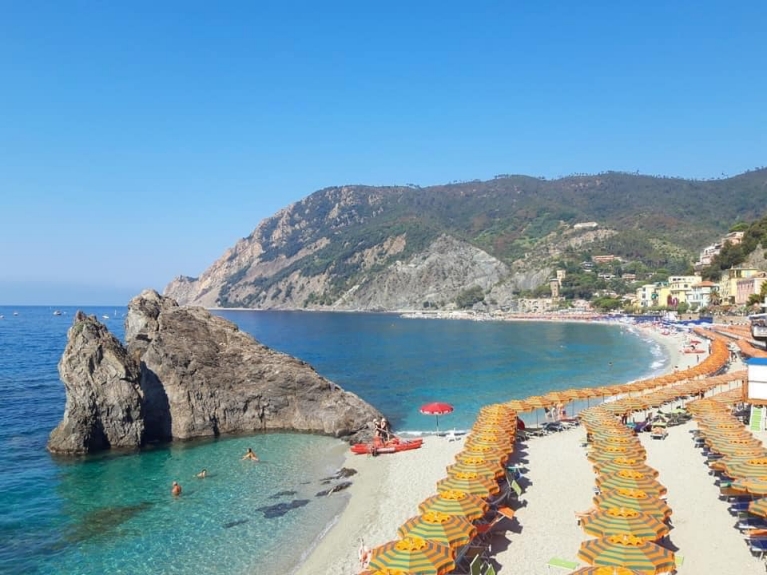
The Cinque Terre is a stretch of five historic seaside villages along the Ligurian coastline: Riomaggiore, Manarola, Monterosso, Vernazza and Corniglia . A Eurail Pass is perfect for exploring them... Arrive at La Spezia central station (about an hour from Pisa), then take the Cinque Terre train . It connects each of the 5 villages and is covered by the Eurail Pass!
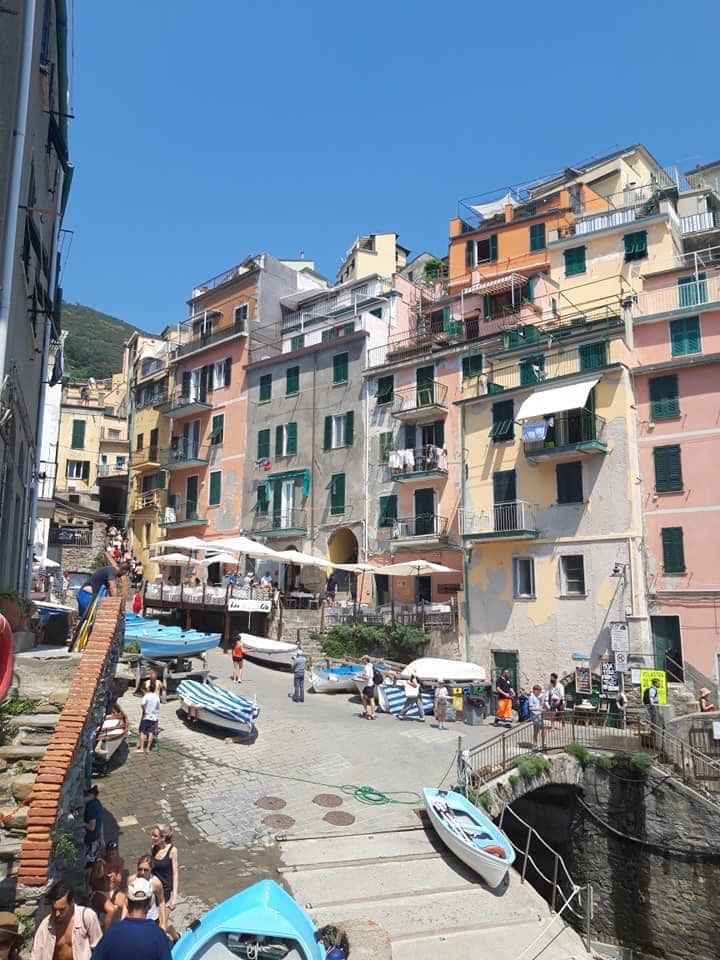
La Spezia, Italy
La Spezia Centrale
Genova, Italy
Genova Brignole
Ventimiglia, Italy
Ventimiglia
Monaco Monte Carlo
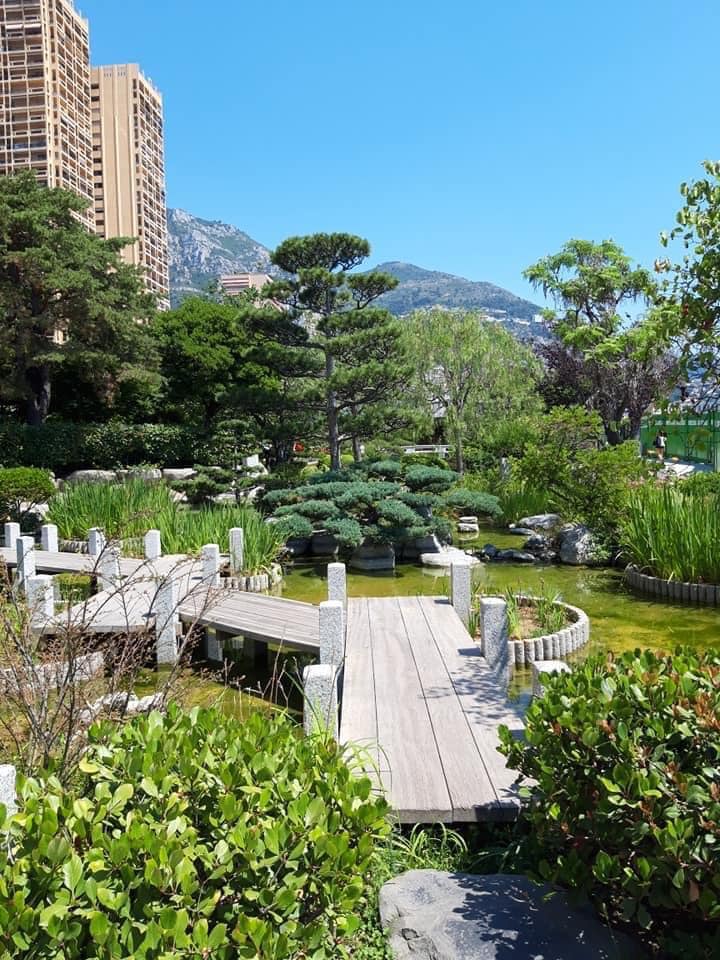
The Japanese Garden, Monte Carlo
The tiny but wealthy principality of Monaco may not be included in our list of 33 Eurail Pass countries, but a Pass is still valid for travel there! Stop off for sun, sea and luxury.

Sagrada Família, Barcelona
To avoid a long journey, it's best to stop off in one of the seaside towns of the southern coastline of France. Then take a direct train from Nîmes (France) to Barcelona in 3h 40m (reservation required). In the capital of Catalonia, you can enjoy Gaudí's fantastical architecture and relax at La Rambla or the beach.
Barcelona, Spain
Barcelona-Sants
Madrid, Spain
Madrid-Puerta De Atocha
Transfer between stations in Madrid, then take the Renfe Trenhotel night train to Lisbon. It leaves at 21:50 daily and arrives in Lisbon at 7:20. You must reserve a seat or sleeper cabin in advance.
Madrid Chamartin
Lisbon, Portugal
Lisbon Oriente
10. Portugal
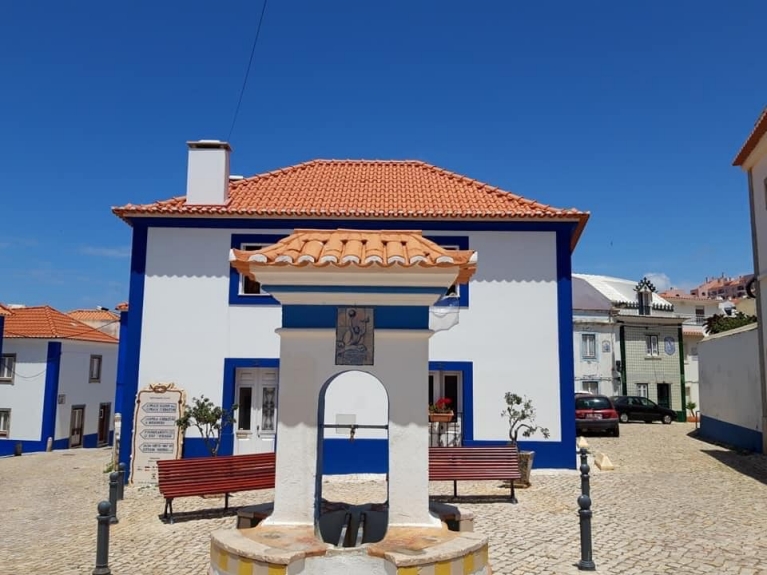
Our snapshot of Heather's 2 month itinerary concludes at the Atlantic coast in Ericeira, considered the surfing capital of Europe. It lies outside of Portugal's rail network, but can be reached in an hour by bus from Lisbon.
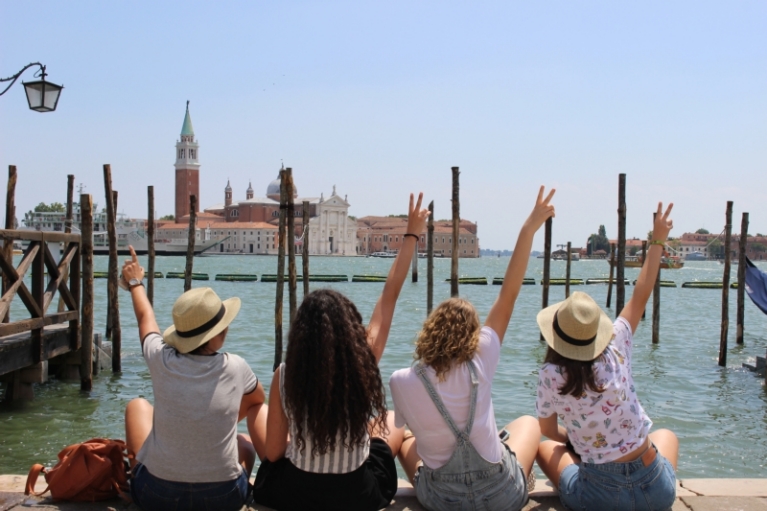
Join our community to keep up-to-date with even more itineraries, tips and Q&As from travelers just like you.
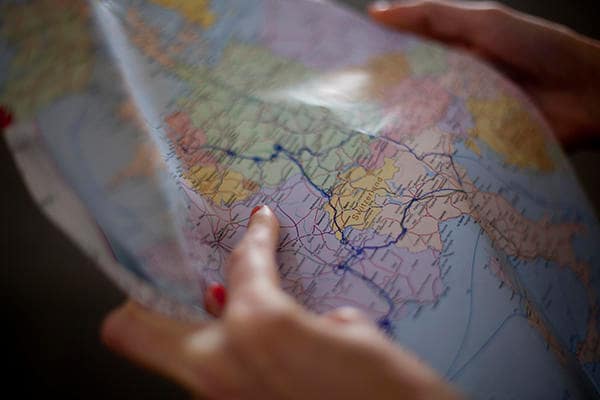
For more itinerary inspiration you can find routes of all sizes, ranging from 2-months across Europe to in-depth single country tours, on our suggested itineraries page.
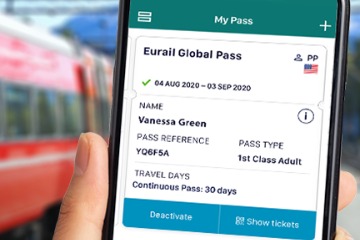
To follow Heather's itinerary, or to add even more countries, then there is only one Pass for you - the Eurail Global Pass, with access to the rail networks of 33 countries in Europe.
Change of currency
You cannot change the currency once you have a Pass in your cart. Remove the Pass, and then change the currency on the website header.

- Meet the Team
- Work With Us
- Itineraries
- Italy Travel Guide
- Hawaii Travel Guide
- Travel Tips
How to Plan a Trip to Europe (2-Week Europe Itinerary)
If you’ve been wanting to visit Europe for a while, you’re probably super excited to begin planning your trip and building your Europe itinerary. In this post, we’re going to show you how to plan a trip to Europe that you’ll never forget!
We know from experience that planning a trip to Europe can be quite overwhelming because there are so many places to go and things to see. You want to make sure you add everything possible to your Europe itinerary. Believe me, we understand how important travel planning is!

We’ve been traveling around Europe for more than 10 years. We now spend at least 2 weekends per month traveling in Europe. That’s why we’ve prepared this Europe trip planner for you.
If you have at least 10 days to spend in Europe, this itinerary will cover all the top spots you must see. Do keep in mind that traveling in Europe can be expensive. You also have to be very wise in your planning to make everything fit together perfectly.
You can fly between cities cheaply if you plan it right. Or you can plan to travel with the Eurail Pass, though this option will take longer.
Let’s get your dream European vacation started. Here’s how to plan a trip to Europe, and see as much as humanly possible in 10-14 days.
Quick. Check these necessities off your prep list!
- Travel insurance : Travelex has reliable coverage at a reasonable price. You can search for the insurance you need on their website, and filing a claim is easy.
- The right luggage can make or break your trip. These hard-sided suitcases come in all different sizes, with spinner wheels and TSA-approved lock.
- Renting a car? Discover Cars helps you search and compare offers from all the top companies. Don’t forget to check if you need an International Drivers License.
Table of Contents
Where to Go in Europe
Europe is full of history, bustling cities, incredible sights, unique places to stay , and – my favorite – amazing food! There are a good number of tourist destinations that just about anyone planning a trip to Europe would want to include in the itinerary.
But, obviously, with just 10-14 days in Europe, there’s no way you can cover them all. We’ve chosen the top destinations that we feel you can fit comfortably into 10+ days.
Planning for Europe? Here’s more…
- How to Plan a 2-Week Trip to Europe
Ultimate Summer Europe Packing Guide
- 11 Charming Small Towns & Cities in Europe
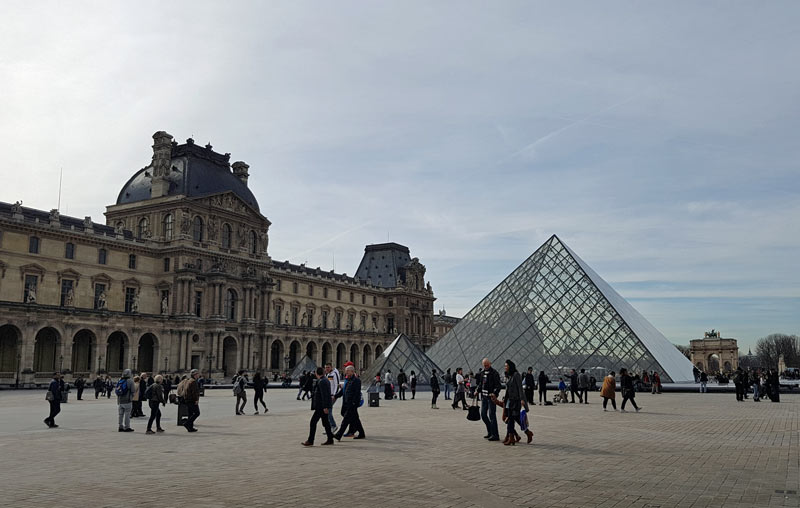
Here are the top destinations we recommend visiting in 10+ days in Western Europe: London (I’m still considering this Europe even if it’s no longer in the EU), Paris , Venice , Rome , Berlin , and Amsterdam .
We love all of these cities for different reasons as you’ll see below, but if you can’t fit them all in, you might need to decide between them. For instance, if you’re wondering if should I visit Paris or Rome , consider aspects like cost, activities, and your own personal interest in those activities.
If you have additional time, you could add Munich , Barcelona , Dublin , and/or Edinburgh . We also suggest checking out some of the more charming and small towns in Europe . Or maybe you’re into history – there are so many great medieval towns to visit .
You might want to take a look at this post with 50 of the best street food destinations in Europe before you decide where to go. There are quite a few that would persuade me.
How to Spend 2 Weeks in Western Europe
There are really two perfectly acceptable ways to take a vacation in Europe. Either way can be quite rewarding, but it depends greatly on your travel style how much time you want to put into planning, and what trips you are looking to book for.
Option 1: Book a pre-planned guided tour
A guided tour is the easiest option, by far. While Europe is very easy to get around for travelers, it can be difficult to figure out how to get from place to place, and very tedious trying to decide what to do in each location.
A pre-planned tour won’t give you the same freedom to do what you want, but it is completely planned out for you and you will always have a guide along to help you with anything you need.
Option 2: Plan your own trip
Planning your own self-guided tour of Europe gives you ultimate freedom to choose what you want to do and when. You can go to the places you want, without a group to tag along with.
The drawbacks are that you have to plan it all out yourself, which can be daunting. Check out these additional Europe travel tips to help with your planning.
We will give you the options for both below, including a pre-planned tour we highly recommend and a 14-day self-guided itinerary to follow.
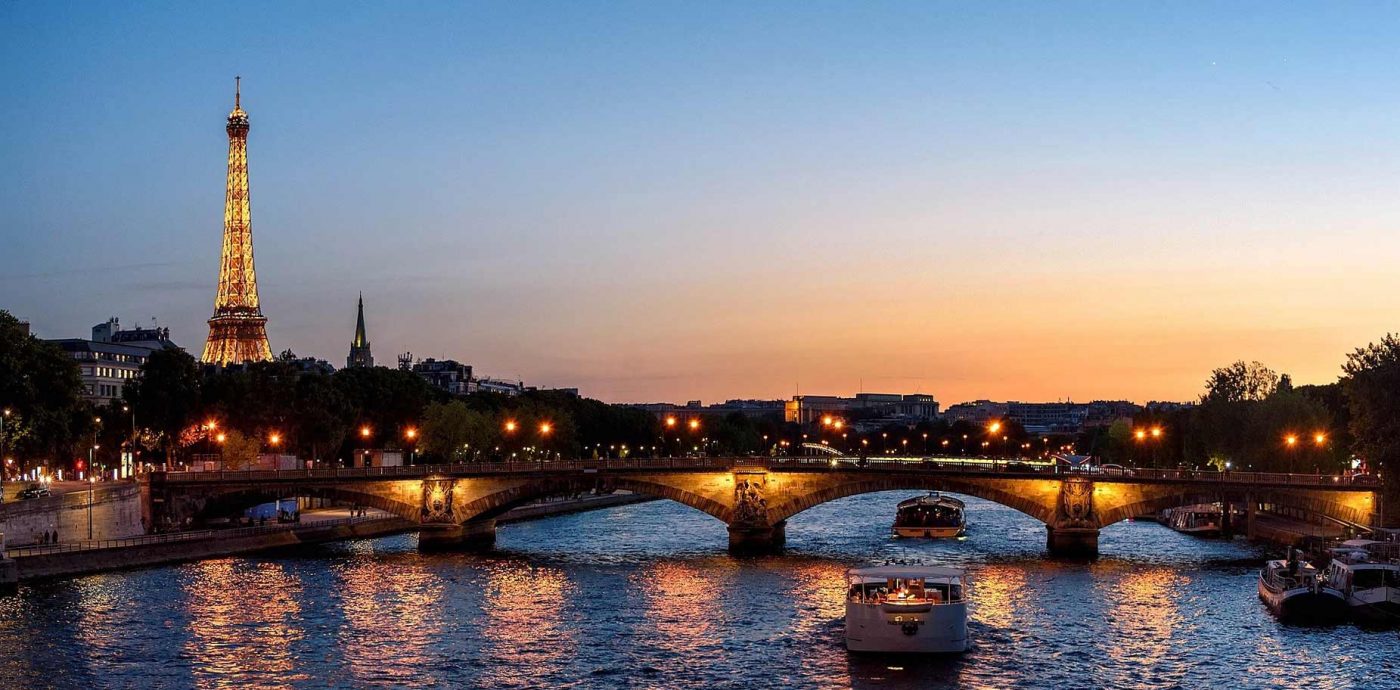
Guided Tour of Europe
If you want to try a guided tour, I recommend a Classic Europe 14-day tour.
This tour is run by Expat Explore Travel and includes everything except International airfare, extra excursions that aren’t in the tour itinerary, and personal incidentals.
» See more information about the Classic Europe tour .
The 14-day itinerary includes:
- Start in Amsterdam
- Drive through Brussels for a quick stop en route to Paris
- Visit Burgundy and the breath-taking Swiss Alps
- In Italy , see Pisa, Tuscany, Florence, Rome, and Venice
- Travel into Munich and Bavaria in Germany , then to Nuremberg and Berlin
- Head back to Amsterdam
There are other Europe tour options with varying destinations. Check out the website to see all options with this tour operator .
Self-Guided Tour of Europe – Plan Your Own Travel Itinerary
With a good plan of action, your 2-week Europe trip will run smoothly and provide you with a comprehensive overview including some of the main countries in Western Europe.
If this schedule seems too ambitious for just a 10 day Europe trip, you can always extend your stay in the cities that interest you most and decide not to visit others.
There’s no right or wrong way to do it. It’s entirely up to you.
Day 1-2: London
Arrive in London . Take the Heathrow Express from the airport to your hotel.
You’ll want to stay in West London for easy access to all the top sights. London is very walkable. To get around to all the sights in a day or two, you’ll want to get your walking shoes on.
You can take a hop-on-hop-off bus tour if you’re not up for the walking. For foodies, we highly recommend spending some time doing any of these fun foodie activities in London .
The city is one of the best for restaurants in the world. If you want to take a day trip from London, we suggest Stonehenge , Bath , or Windsor . They’re all very close by and offer a fantastic experience.

In London, be sure to see these sights:
(You can purchase tickets in advance for these activities. These links are affiliate links to activities we’ve done and recommend.)
- Tower of London (with the Crown Jewels)
- Tower Bridge Experience
- Shakespeare Globe
- Churchill War Rooms
- Westminster Abbey & Big Ben
- View from the Shard
- Kensington Palace
- Kew Gardens

How to Spend One Day in London

Things to Do in Windsor: A Perfect Day Trip From London

21 Fun Foodie Things to Do in London
Where to Stay in London: We recommend the Trafalgar St James by Hilton . It’s in a historic building in a really prime location. The hotel and rooms are designed in art deco and the rooms are really spacious and bright. ⇒ Read reviews on Trip Advisor .
Day 3-5: Paris
Travel to Paris on the Eurostar train . The journey takes just 2 hours from St. Pancras Train Station.
Don’t forget to take a picnic lunch and a bottle of wine with you to enjoy on the train. There are so many things to do in Paris . In only two days, you can cover a lot of ground. You can do a few of these great foodie activities , see the top sights on a walking tour, or join this fun gourmet bus tour for a multi-course meal on a double decker tour bus.
You’ll want to either plan on walking a lot, or acquaint yourself with the Paris Metro map and take short trips in between sights. You can also take the Paris hop of hop off bus to get between sights.
Check out our 3-day Paris itinerary that will help you plan what to see.

In Paris, be sure to see these sights:
- Eiffel Tower
- Notre Dame (closed for renovations)
- Seine River Cruise
- Luxembourg Gardens
- Arch d’Triomphe
- The Avenue des Champs-Élysées
- Louvre Museum
- Sacre Coeur & Montmartre

How to Spend One Day in Paris

3-Day Paris Itinerary for First Timers

9 Fun Foodie Things to Do in Paris
Where to Stay in Paris: The best location to stay in Paris is 6th Arrondissement. It is the Latin Quarter. The heart of Paris. And it’s the best location for tourist who are planning to see everything. Here are 8 top hotels with an Eiffel Tower view . We recommend the boutique 4-star Hotel Parc Saint Severin . The rooms are larger than most in Paris and they’re nicely refurbished. Plus it’s a really great location. The metro is really close. ⇒ Read reviews on Trip Advisor.
Day 5-7: Venice
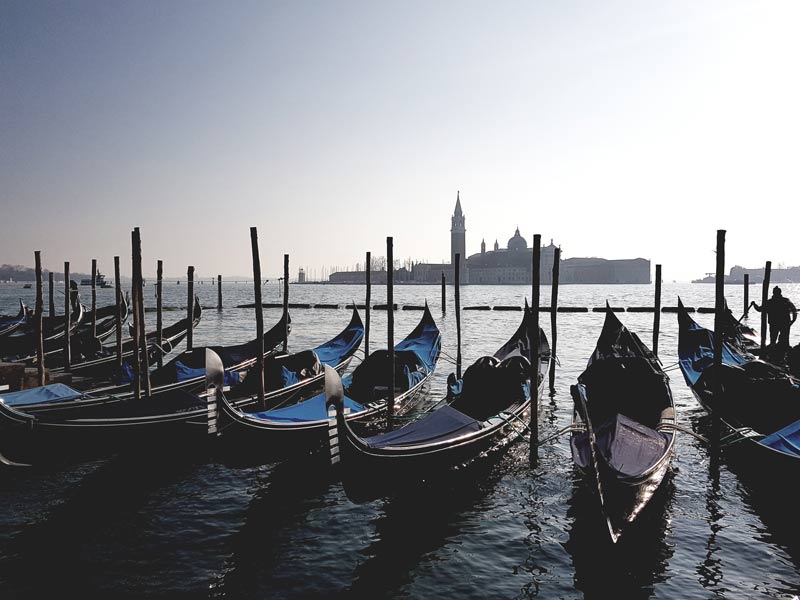
Venice is just one of those places you have to visit at least once in your life. It’s an incredibly enchanting city, with so much character that you feel a little like you’re floating around in a Disney movie.
The views across the Grand Canal are so beautiful, and the narrow alleys can lead you to get lost in a city of charm. Everywhere you turn is another incredible view, and a gondola floating by in the distance. It’s one of a kind.
With so many great things to do in Venice, you really need to set up a good itinerary before you leave, to make sure you fit everything in.
Check out our shortcut guide to all the best parts of Venice, which will help you plan. Definitely make time for a Venice food tour .
The food in Venice is great, if you know where to look. And you can check out our YouTube video for the top 10 things to do in Venice , if you need more ideas.
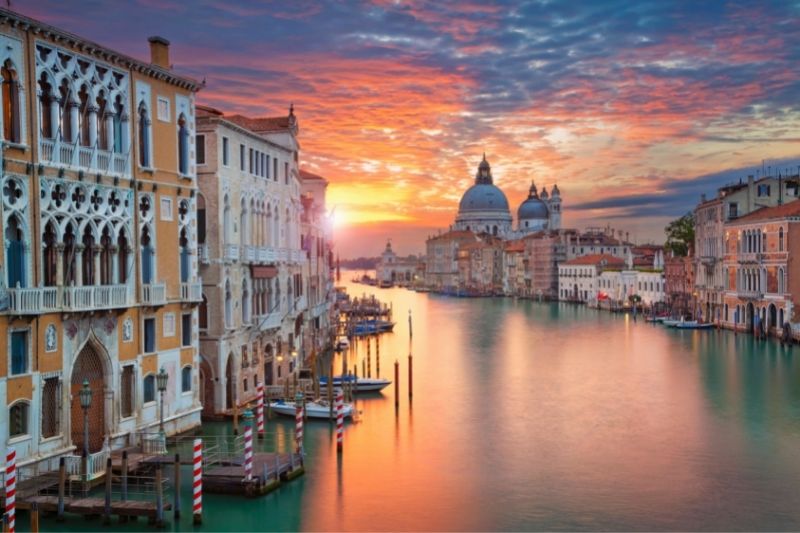
You can pre-book some of the activities. I would definitely pre-book the activities below, so you don’t miss out.
- Venice Gondola Ride and Serenade
- Eat Like a Local: 3-hour Venice Small-Group Food Tasting Walking Tour
- Legendary Venice St. Mark’s Basilica and Doge’s Palace
![Essential Travel Guide to Venice, Italy [Infographic] 7 Venice waterway at sunset](https://www.savoredjourneys.com/wp-content/uploads/2018/01/venice-feature-600x600.jpg)
Essential Travel Guide to Venice, Italy [Infographic]

Top Foods to Try on a Venice Food Tour

Guide to the Best Wine Regions in Italy
Where to Stay in Venice:
Ai Patrizi di Venezia If you’re staying for 3+ nights, I highly recommend this apartment. It’s in the perfect location, is incredibly comfortable and clean, and has a kitchenette. We sometimes prefer an apartment to a hotel so we’re not being bothered by housekeeping. This place is a gem. | Read Reviews or Book a Stay Hotel Londra Palace If you’d rather stay in a hotel because you like the extra amenities, then Hotel Londra Palace is a great choice. It’s in a very good location, only 5 min walk from St. Mark’s Square, with free wifi and a restaurant. Some rooms have a balcony and an incredible view. | Read Reviews or Book a Stay
Day 8-10: Rome

Rome is a city that will capture your heart the moment you arrive. It’s amazing to see so much history packed into one place, and so much of it is scattered right in the middle of a modern city. There’s really no where else like it. Plus the food. You have to go on a food tour and witness it first hand.
If you’re planning a trip, we’ve got you covered with our shortcut travel guide to Rome : an informative and helpful infographic that will give you a quick peek at all the top things you should plan to do in Rome. Here’s our 3-day itinerary to help plan it all out.
Top things to put on your itinerary:
- The Colosseum : This monumental amphitheater is one of the most recognized symbols of Rome, offering a peek into the world of ancient Roman gladiators. Try to book a guided tour to get the full historical context.
- Roman Forum & Palatine Hill : Located near the Colosseum, the Roman Forum was the political, commercial, and judicial center of ancient Rome. The Palatine Hill, according to Roman mythology, is where the city was founded by Romulus.
- Pantheon : This best-preserved monument from the Roman Empire is a marvel of architectural design, with its impressive dome and the oculus at its center.
- Vatican City : Here, you can visit St. Peter’s Basilica, the Vatican Museums, and the Sistine Chapel, with Michelangelo’s renowned frescoes. Be sure to dress modestly as a sign of respect.
- Trevi Fountain : Throw a coin into this iconic fountain to ensure your return to Rome. It’s beautiful during the day, but consider a visit at night when it’s lit up.
- Piazza Navona : This square is home to Bernini’s famous Fontana dei Quattro Fiumi (Fountain of the Four Rivers), as well as various artists, musicians, and street performers.
- Spanish Steps : Climbing these steps from Piazza di Spagna to Piazza Trinità dei Monti offers a wonderful view. The nearby shopping district is a must for fashion enthusiasts.
PRO TIP: Skip the line tickets are necessary in Rome, especially during high season. You won’t waste time waiting in huge lines.
- Eating Europe’s Twilight Trastevere Tour (We loved this tour! Read about it here .)
- Faster Than Skip-the-Line: Vatican, Sistine Chapel and St. Peter’s Basilica Tour (definitely worth it)
- Colosseum and Ancient Rome Small-Group Tour

What To Do in Rome in 3 Days
![Essential Travel Guide to Rome, Italy [+Infographic] 11 Rome Coliseum](https://www.savoredjourneys.com/wp-content/uploads/2019/01/rome-feature-600x600.jpg)
Essential Travel Guide to Rome, Italy [+Infographic]

Eat Like a Local on a Rome Food Tour
Where to Stay in Rome
The best location in Rome depends on what you want to accomplish during your stay, but it’s always best to be centrally located so you can walk to all of the main attractions.
Two great choices in the affordable luxury range are The Inn at the Spanish Steps (with a gorgeous roof-top pool) and Il Palazzetto . We also really enjoyed staying at Nerva Boutique Hotel in the popular Rione i Monti area.
Day 10-12: Berlin
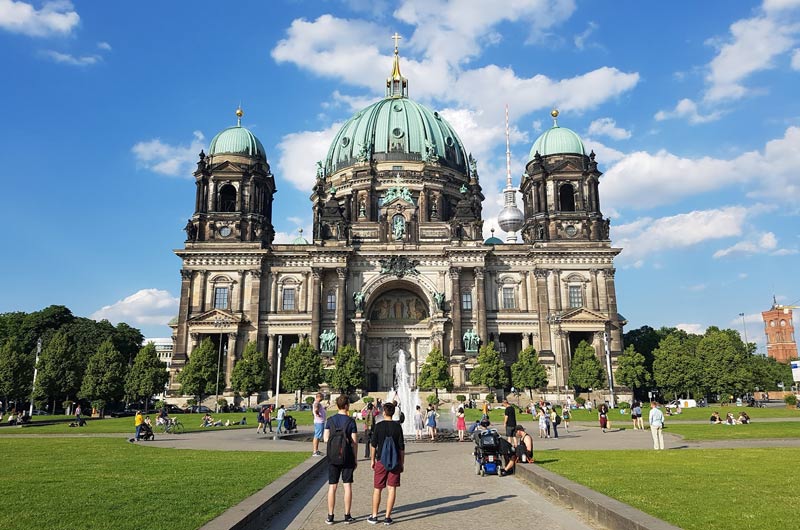
Berlin is a very modern city with a good art scene, many museums, great food options, and cultural/historical things to see and do. It’s a sprawling city so you’ll want to be ready for public transportation.
There are a few Berlin attractions and sights you don’t want to miss like these we’ve listed here:
- Brandenburg Gate : This iconic symbol of Berlin was once a symbol of division during the Cold War, but now stands for German unity and is a must-see.
- Berlin Wall Memorial and Checkpoint Charlie : No visit to Berlin is complete without learning about its Cold War history. The Memorial provides an insightful look into the era of the city’s division.
- Reichstag Building : The seat of the German Parliament, the building’s glass dome offers a panoramic view of the city. It’s a good idea to register in advance for a visit.
- Museum Island : Home to five world-class museums, including the Pergamon Museum and the Neues Museum. The latter houses the bust of Nefertiti, an ancient Egyptian queen.
- Alexanderplatz and TV Tower : A large public square and transport hub in the central Mitte district, featuring the iconic TV Tower (Fernsehturm) which provides excellent views over the city.
- Holocaust Memorial (Memorial to the Murdered Jews of Europe) : A poignant, powerful monument to one of history’s darkest times.
The best way to see all of these sights is on this Discover Berlin half-day walking tour . The tour is really inexpensive and is the best way to learn the historical and cultural past of Germany, while see the top sights.
Foodies will also want to check out Markethalle Neun , an indoor market with international food vendors, especially on Street Food Thursdays! Also plan for a beer tour and a Berlin food tour in order to taste the best parts of the city!
![Essential Travel Guide to Berlin, Germany [Updated 2024] 13 Berlin](https://www.savoredjourneys.com/wp-content/uploads/2019/09/berlin-feature-600x600.jpg)
Essential Travel Guide to Berlin, Germany [Updated 2024]
Berlin is a city that holds a certain mystery, due to its interesting history that forever changed the world. ...
Where to Stay in Berlin
One of my favorite hotels is the Hotel am Steinplatz, Autograph Collection . It’s located right in the center of the city, conveniently located for transportation, so you can easily get around to the top sights. There’s a bar, restaurant, and really comfortable rooms. ⇒ Read reviews on Trip Advisor .
Day 12-14: Amsterdam
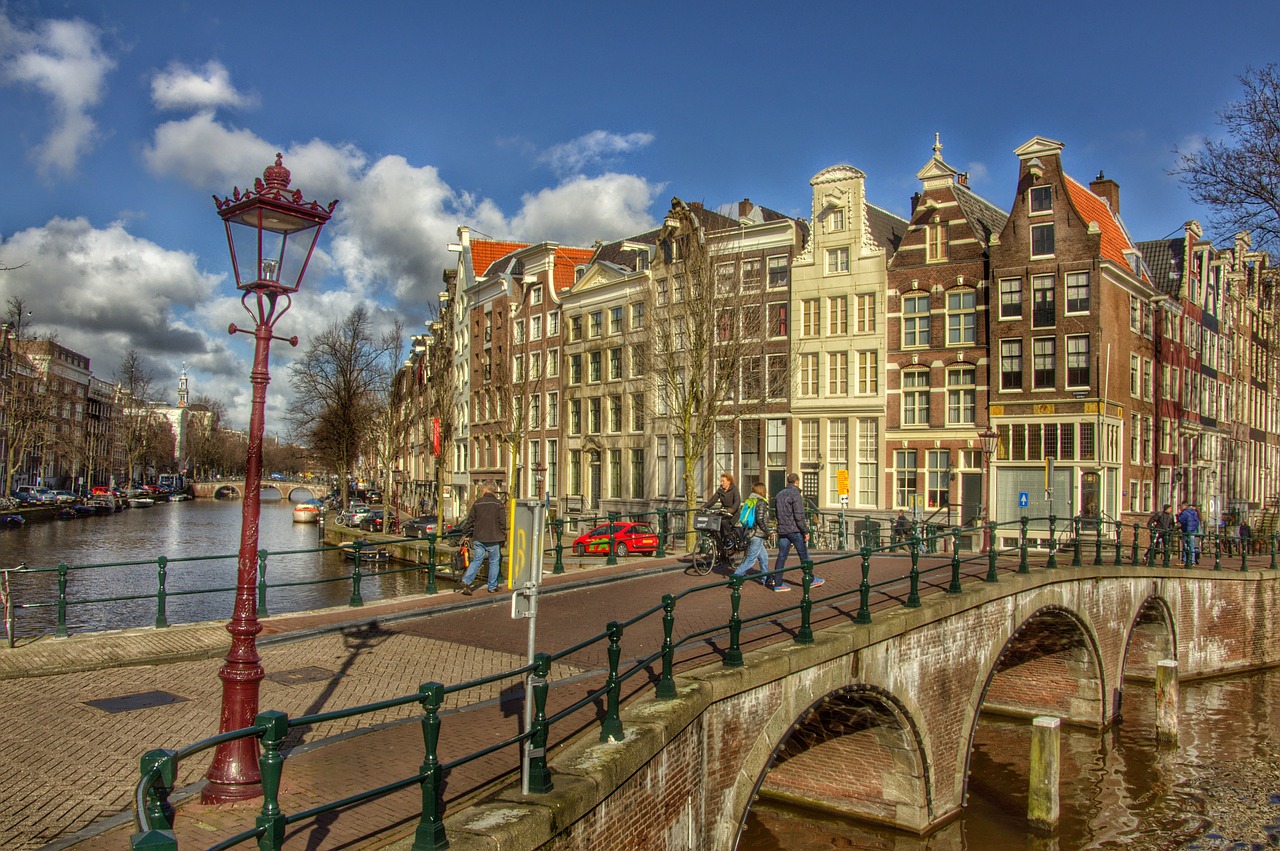
As a tourist, you’ll likely find Amsterdam to be a very welcoming and fun place to explore. The canals and old cobblestone streets make it the quintessential European city, and it’s just so easy to get around. Read our full guide to 3-days in Amsterdam for the full rundown.
The many activities in Amsterdam include history, art and food. I think a good plan to tackle the city includes a bit of walking tour, interspersed with stops to try the local food and drinks.
Be sure to try bitterballen, poffertjes, and frites (which you can get with dozens of different sauces), along with all the cheese. There are dozens of different canal cruises you can take that are often paired with cheese, beer, wine or even pizza.
For drinks, we recommend stopping at some of the beer bars , like Proeflokaal Arendsnest and Beer Temple, as well as the top cocktail bars like Tales & Spirits and Flying Dutchman. And don’t forget to sample the genever at Proeflokaal ‘t Kelkje, one of the best places in Amsterdam to taste genever!
Here are a few links to our favorite tours and activities in Amsterdam so you can purchase your tickets in advance:
- Amsterdam Canal Cruise in Classic River Boat
- Skip-the-line Rijksmuseum & Van Gogh Museum Guided Combo Tour – Private Tour
Eat like a local in Amsterdam with Eating Europe Food Tours – there are 5 tours available:
- Jordaan Food Tour
- Jordaan Food & Canals Tour
- Amsterdam at Twilight Food Tour
- Food Tour in Haarlem
- A Taste of Life in Haarlem
![Essential Travel Guide to Amsterdam [Updated for 2024] 15 Amsterdam waterway and buildings](https://www.savoredjourneys.com/wp-content/uploads/2015/06/amsterdam-feature-600x600.jpg)
Essential Travel Guide to Amsterdam [Updated for 2024]

Where to Find the Best Beer in Amsterdam
Where to stay in Amsterdam
We like staying near Dam Square in central Amsterdam. It’s fun and lively, close to or within easy walking distance of many of the top attractions, and easily accessible for public transportation.
Radisson Blu – This is a nicely-decorated 4-star hotel located directly on a canal near Rembrandt Square. Great place to stay. Read Reviews on Trip Advisor
Tips for Planning a Trip to Europe
Best time to go to europe.
When you decide to go to Europe should be based on what type of experience you want to have. A lot of people make it a priority to go to Europe in the summer because that’s when they take vacation, or when the kids are out of school.
However, everyone else is doing the same thing. That means July-August is high season and there are a lot of visitors. Attractions are packed, lines are long, prices are high, and it can be really hot outside.
The best weather in Europe can be found from late March to early June and from late September to early December. This is considered the shoulder season in Europe and there will be less people and lower prices.
We prefer to travel during these times because it’s just so much easier. And the nicer weather makes all the difference.
We especially caution against traveling in Italy in August. It is one of the hottest months and the weather can be a real hindrance to your happiness.

Getting to Europe
Many top airlines from around the world have direct flights into London. It’s probably one of the easiest cities to get into.
Check Skyscanner for great deals on airfare. We prefer to fly into London for the ease of it all, but you can skip London and fly directly into Paris, if you wish.
Also keep in mind that airfare is lower on the shoulder and off season than it is during the summer. (See this article for more on how to find great airfare ).
We also recommend flying into one city and out of another, so you don’t waste some of your holiday time flying back to the starting point. Using the multi-city option on Skyscanner , you should be able to find this option without the fares getting to high.
Getting Around Europe
When planning your Europe itinerary, keep in mind the distance between each destination. Europe seems small, but it takes a while to get between destinations. In most cases, you’ll need at least a half day to get between locations, more if taking the train.
Once you arrive in Europe, you can either fly or take the train between cities. We prefer to take early morning or late night flights, to avoid burning active hours in our destination.
Flying is relatively cheap on budget airlines like Ryanair and EasyJet . We fly with them all the time.
There are fees for any extras you add, and checking luggage can be expensive, so do be mindful of that.
See here for an idea of what it costs and the flight times for each of the legs in our itinerary:
- London to Paris: $50
- Paris to Venice: $85
- Venice to Rome: $70
- Rome to Berlin: $95
- Berlin to Amsterdam: $70

Via Train – Eurail Pass
Another way to travel around Europe in by train. You can purchase individual train tickets for each journey you wish to take. That will help you mix and match, if you want to fly between some cities and take the train between others.
However, a more economical way to go by train is with a Eurail Pass. The price of the Eurail Pass varies depending on your needs. They range from $250 to over $1000. For the itinerary we laid out in this post, you would need a 5 days within 1 month pass, which costs $326 (updated 2019).
This allows you to travel on any 5 days over a period of a month. There’s also a 7 days in one month pass for $388, if you think you’d like to tack on another destination. These passes entitle you to travel on specific trains only.
You can’t just show up and get on any train, but you don’t need reservations except for the high-speed and overnight trains (which also require an extra fee). They’re only for non-European travelers. And they can only be used for the class of service booked.
Travel Documents – Schengen Area
Always verify the entry requirements and travel documents needed for each specific country you are trip planning for as requirements can vary. You can check with the embassies or consulates of the countries you’ll be visiting or use official government travel websites for the most accurate and current information.
Ensure that your passport is valid for at least six months beyond your planned return date. Some countries may have different requirements, so it’s always a good idea to check the specific entry requirements for the countries you plan to visit.
Depending on your nationality and the specific European countries you plan to visit, you may or may not need a visa. Citizens of the United States can generally enter the Schengen Area (a group of 26 European countries that have abolished passport control at their mutual borders) for short stays of up to 90 days within a 180-day period without a visa. However, if you plan to stay longer or visit countries outside the Schengen Area, you may need additional visas.
Tipping in Europe
Yes, you do need to tip in Europe. However, it’s not at the custom level of the U.S. There are some key differences.
First of all, 10% is the norm for tipping in a nice restaurant. You can give more if you had a stellar experience, but that’s more like 12%. Not 20%. In a cafe or deli, just round up your bill to the nearest dollar. If it was €3.80, leave the .20 cents as a tip.
In pubs in London and bars in Europe, tipping isn’t expected on small amounts.
Whatever you do, always check the bill for a service charge. There are MANY places throughout Europe now that charge a set service fee and include it in the bill. This is often 10 or 12%. If this fee has been added to your bill, there is no need to tip.
Eating in Europe

Since you’ll be visiting many different countries while in Europe, the food will be very diverse. You will have the best overall experience if you’re willing to try all the foods you come across and have an open mind that you mind really like something you’ve never tried before.
- In London, you should have a Sunday roast , Fish and Chips , a Steak & Ale pie . See our foodie guide to London for more.
- In Paris, are you daring enough to try frog’s legs or escargot ? Definitely make room for crepes and a Croque Monsieur . See our foodie guide to Paris for more.
- In Italy, you’ll find an unimaginable array of pasta dishes , pizza, dried meats, and cheeses. Berlin has a very international food scene. It’s not just Schnitzel and sausage anymore.
- And in Amsterdam, you must try the frites , the bitterballen and the Poffertjes (pancakes).
In every city, there is now a food tour taking place. We always recommend going on a food tour first thing when you arrive because it gives you a very good overview of the foods you should look out for and where to find them.
Frequently Asked Questions
Is $5000 enough for a trip to europe.
With careful planning and budgeting, $5000 can allow you to have an enjoyable and fulfilling trip to Europe. However, the amount of money you need for a trip to Europe can vary widely depending on several factors, including the duration of your trip, the countries you plan to visit, your travel style, and the activities you want to experience.
How early should I plan my Europe trip?
Starting to plan your Europe trip 6 months in advance is a good timeframe, especially if your trip involves multiple destinations, is during the peak season, or requires visas. This allows you to also get your accommodation booked in advance. However, if your trip is relatively simple and during the off-peak season, you might be able to start planning 3 months before your travel dates.
What’s the best time to visit Italy?
Italy is a year-round destination, but many people prefer the spring (April to June) and fall (September to October) when the weather is pleasant, and tourist crowds in Italy are generally smaller at this time of year.
YOU MIGHT ALSO LIKE

21 Most Charming Small Towns & Cities in Europe
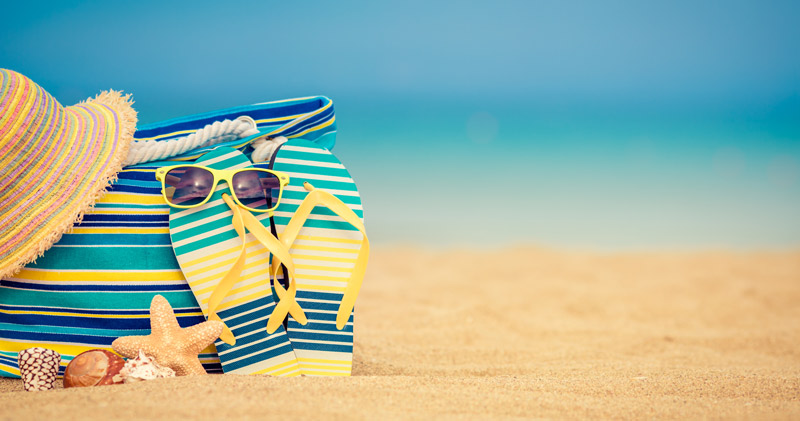
8 Unique Places to Stay in Europe & UK

21 Best Places to Spend Christmas in Europe
Now you know how to plan a trip to Europe, and we’ve given you a 2-week itinerary to follow. What are you waiting for? Whether you take a guided tour or do this Europe 2-week itinerary on your own, I am certain you will find it to be the most exciting and rewarding trip you’ll ever take.
Europe is fascinating and full of surprises. Let us know how your trip to Europe turns out!
Be Prepared For Travel Planning is the most important part of any successful trip. Do it the easy way:
🧳 Travel Packing List | ✔️ Why You Need Travel Insurance | ✈️ What to Do Before You Leave Home
- Find and book the best hotel (our favorite booking site is Expedia)
- Research flight options (our favorite tool is Skyscanner )
- Book a tour (we always use Viator to find the best tours)
- Rent a car through Discover Cars (they search the best deals for you!)
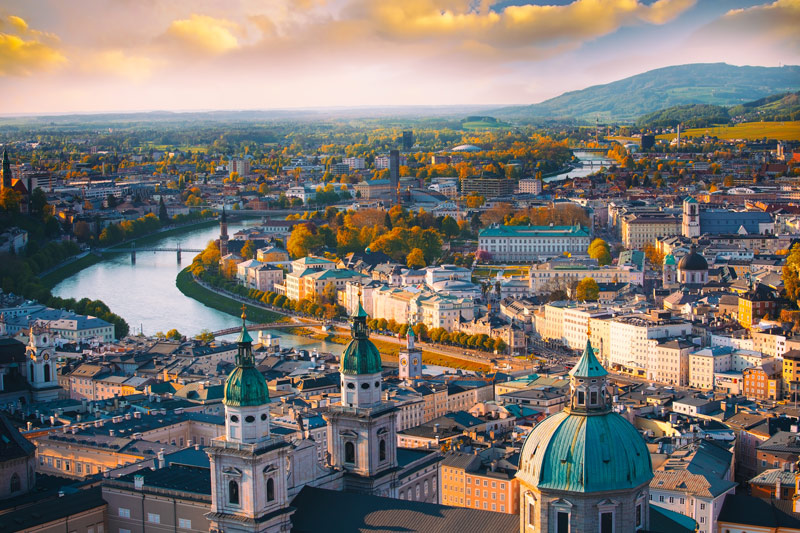
21 of the Best Cities to Visit in Europe

18 Best Wine Regions in Europe for Wine Lovers
Like this post? Why not save it to your Pinterest board ?

Laura Lynch, creator and writer of Savored Journeys, is an avid world traveler, certified wine expert, and international food specialist. She has written about travel and food for over 20 years and has visited over 75 countries. Her work has been published in numerous guidebooks, websites, and magazines.
15 thoughts on “ How to Plan a Trip to Europe (2-Week Europe Itinerary) ”
A great two-week itinerary for those looking to see the capital cities of Europe Laura – and totally agree with the London food choices! We are heading to the UK early next month and the Sunday roast and fish and chips ( with curry sauce) are high on our agenda;) Also an afternoon tea with clotted cream! 🙂 Thanks for sharing this thorough article. Shelley x
I always love a good cream tea!
I am planning on visiting Europe – more like a backpacking trip. And believe, I probably have read all the possible articles about “How to Self Organize Europe Trip” and this is the first article which covered everything I needed to know in a simple and minimal way. I couldn’t thank you enough, Laura. Really helpful!!!!!
Glad you found it useful, Sneha. Enjoy your trip.
This is awesome, thank you ❤️
Thank you for ALL of this great information. I’m in the beginning stages of planning a vacation for my family of 6. We will fly out of JFK – probably late June 2023 and we would like to visit: London, Paris, Venice, (Rome maybe) and Barcelona. Does the order of countries make sense? And know we would do train from Paris to Venice – but what would you suggest for the rest of the trip as far as traveling between countries? Thank you!
Hi Jill. That trip route sounds good. You can actually do all trains, if you don’t mind overnight travel, to save time. I would likely take the Eurostar from London to Paris, fly to Venice, train to Rome, and flight to Barcelona. You can easily get low-cost airline flights between all of those places.
Hi Laura, do you know whether the flight from Paris to Venice would be very busy? We definitely want to hit up London, Amsterdam, Paris and Italy (Venice/Florence/Rome) but felt that 14 days was ambitious for us. We also were hoping to avoid flights as much as possible due to the mass flying and worry it might take forever at the airport during August/September.
Hi Linda. The flight from Paris to Venice is likely always full, but it’s not a bad experience. We fly these routes all the time. You could also take the train! If you want to take a slower journey and actually cover it well, I would recommend 3 weeks for that trip. It is quite ambitious to do it in 2 weeks, but most people don’t have that much vacation time.
Hi and thank you so much for sharing all of this information! I am planning a summer trip for next year and am just researching to get a jump start on things and saving up!
I have a question…is there a way to add in the Almafi coast in this itinerary easily? What would you suggest as far as when you would add that? Before or after Venice…etc. and how many days would you recommend there? I was planning to do a boat day there.
Hi Cassandra. We were just in the Amalfi coast! You’ll love it. If you have time, I would suggest doing this itinerary the opposite way – starting in London and ending in Naples. Then you can visit the Amalfi coast and travel home from Naples.
Thanks so much for the in-depth wonderful article you turned out here .God Bless You
Hi there! This is really helpful!! I’m just confused, and trying to follow the map you post at the top. Just underneath your header “Self-Guided Tour of Europe – Plan Your Own Travel Itinerary”, there’s a map with a travel route posted. But that map does not match up with the route that is detailed below. The map appears to start in London and go to Paris, and them double-back to Amsterdam. But in the written itinerary, you talk about going from Paris to Venice, but this is not shown as the route on the map, and there’s no mention of how to get from Paris to Venice. Just trying to figure out if I follow what’s posted on the map, or what is outline in the written itinerary?? THANK YOU!!!
Hi Sherry. It looks like Amsterdam just got inserted in the wrong place on the map. I’ve updated it to be last instead of 3rd. Although if you wanted to fly into London and out of Rome, you could still put Amsterdam 3rd in the itinerary.
Leave a Reply Cancel reply
Your email address will not be published. Required fields are marked *
Save my name, email, and website in this browser for the next time I comment.
- Travel Resources
- Tour Account ›
- Travel Forum ›
- Travel Forum
- General Europe
- 2 months Europe I...
2 months Europe Itinerary
I am a female solo backpacker and I have 61 days in Europe. (December and January) This is a rough plan on where I want to visit. I am trying to see if it's feasible cus it looks a bit too rush to me, but I don't know which place to eliminate that the route could make more sense. Could you guys give me suggestions on whether I should take out any cities or spend less/more time. Thanks!
Lisbon (3 days)
Seville, Barcelona (6 days)
Lyon, Paris (6 days)
Luxembourg (2 days)
Brussels (2 days)
Amsterdam (3 days)
UK for Christmas and New Year (11 days)
Berlin, Munich (6 days)
Krakow, Warsaw (5 days)
Minsk (3 days)
Vilnius, Riga, Tallinn (8 days)
Helsinki, Rovaniemi (6 days)
For transportation between cities, I will mostly use overnight buses or trains to save time. Feel free to give me any advice. The only things fixed are the flight ticket in and out of Europe and Christmas/New Year in the UK.
Thank you so much!!!
grid_bear - First order of business what you should do is obtain a copy of the Rick Steves' guide book (Backpacking In Europe For The 21st Century) or (The Savvy Backpacker's Guide to Europe on a Budget: Advice on Trip Planning, Packing, Hostels & Lodging, Transportation & More!) by James Feess.
Since you said the flight tickets are set so according to your itinerary, are you flying into Lisbon and flying out of Helsinki? If you are not flying out of Helsinki then I would take away Minsk, Riga and Helsinki altogether from itinerary.
You can replace them with Budapest, Prague and Vienna.
I am flying out of Helsinki. Right now I think I am taking out Belgium, Luxembourg from the first half and Germany from the second half. Flying to Warsaw right after UK. Would it be better then?
Yes that can be an option. As i look on the map, I see that cities like Budapest, Prague are not too far from Warsaw. You ever considered those cities as add ons after visiting Warsaw?
grid_bear - Consider this itinerary as the best geographical order moving from city to city for your 2 months in Europe. You can calculate the number of days to allocate to each city.
Lisbon, Portugal
Seville, Spain
Lyon or Paris, France
Amsterdam, Netherlands (You can stay in city of Haarlem 20 minutes from Amsterdam by train)
Ghent, Belgium
Warsaw and Krakow , Poland
Budapest, Hungary
Prague, Czech Republic
Copenhagen, Denmark
Stockholm, Sweden
Helsinki, Finland
It is a busy trip. I have been to nearly all the places you plan to see (all except Minsk and Finland).
I suggest while in Brussels spend a day going to Brugges, which is not that far from Brussels. Otherwise, skip Brussels entirely.
You have significant travel between some of your cities. Lisbon and Portugal are great places to visit, but travel from Lisbon to Seville may not be so easy. A few years ago, I explored this and found the rail connections to be very poor. Your might consider saving Portugal for another trip, when you can do Porto and the Douro River Valley.
Seville is wonderful and deserved a 3 day minimum. You might start in Seville and spend four days there and four in Barcelona. Add another day to Paris.
Also, we loved Lyon, France and Provence, but you might skip Lyon, since you won't have time to visit Provence and the South of France that much. Instead consider taking the high speed train from Barcelona directly to Paris.
While in Luxembourg, try to visit the city of Viaden, it is worth half a day.
With 11 days in the UK, clearly London deserves some time. Consider some day trips to Canterbury, Cambridge, Winchester, Oxford, Stonehenge/Salisbury or Bath. You won't have time for all. I forgot, if you love Shakespeare, then Stratford Upon Avon is a must.
Berlin and Munich deserve more than 3 days each. I haven't been to Minsk, but my Son has been there and enjoyed it, but it is a bit out of your way. Consider spending your Minsk time in Berlin and Munich. Also, from Munich most people take a trip down to Garmisch and Fussen to see castles or go up on the Zugspitze (highest mountain in Germany).
It will be Winter and going to northern Europe, you may encounter snow.
We did the Baltic States on a guided tour after doing Russia and loved them all. Plan on two days for each country minimum. You will be close to St. Petersburg, Russia. You could spend several days there. I know you don't plan to visit Russia. It does require a visa, but the city is amazing.
Take care while traveling alone. Be sure to avoid some of the seeder places in inner cities at night. Europe is relatively safe, but there are places that require caution or to be avoided altogether.
Pickpocketing is a huge threat in places like Barcelona and Paris, so take precautions. I wear a money belt in those cities.
I'm retired and am currently able to take summer-long trips each year. I think you're trying to cover too many really major destinations over too much territory in the time you have.
Every time I change cities I figure it costs me at least half a day of sightseeing time (packing up, checking out, traveling to the train station or airport, sitting on the train or plane, getting to my new hotel, checking in, etc.). If the two cities are far apart (and you have some very long distances), the transfer may take 3/4 of a day or longer. In theory, your idea of using overnight trains and buses will help with this. In actuality, that option may not always exist. Even when it does, you may find the experience exhausting and decide you don't want to keep repeating it. The last overnight train I took led to absolutely zero sleep and left me feeling off-kilter for more than 24 hours, so instead of losing half a day or so, I lost a full day of productive sightseeing time.
You'll need to check every potential travel leg to see whether overnight transportation is actually available. For night trains, dig all the way down to see the intermediate stops the train makes. Even if you are able to sleep on the train, you may wake up every time it stops.
You list many pairs of cities; if you can't or don't take an overnight train or bus, there will be a half-day lost on those moves as well as on the moves between countries. So the 6 days you list for Lyon and Paris probably become 5 days after you lose 1/2 day on the way to Lyon and another 1/2 day on the way to Paris. The same with Seville and Barcelona.
Another concern I have is that except for the last few stops you have a long series of very large cities, cities chock full of places to see. You can easily run yourself ragged in places like those when you have so little time in each city. And urban areas are intense places to be. Especially on a trip of this length, I think it's really important to spend some time in smaller cities and/or villages and/or rural areas (though maybe not rural areas in mid-winter). You can get those experiences via day-trips from your primary destinations, but you have to allow extra time to make that possible. There's no room for day-trips in the original schedule.
In planning a winter trip you need to keep in mind how very short the days will be, especially in northern Europe. Some sights may keep much more limited hours than in the summer, which will make for less-productive days.
In terms of specifics:
I think nearly everyone would agree that Brussels and Luxembourg are not as interesting as most of your other targets.
Ground-transportation links between Portugal and Spain are surpisingly poor. There are no direct trains between Lisbon and Seville. The overnight train between Lisbon and Madrid takes over 11 hours. After connecting in Madrid you'd get to Seville at about 12:30 PM, so you'd lose half a day despite the misery of a night on a train. That train stops 10 times [begin edit] after midnight and {end edit] before reaching Madrid. Each stop brings braking and station noise.
Are you sure you want to go to northern Germany, Poland, Belarus, Finland and the Baltics in the winter? Cold, wet, dark... I suggest going to timeanddate.com and checking actual, day-by-day historical January weather stats for some of those destinations for the last few years so you know what you may run into.
Thank you for all of your advice!!! It helps a lot.
I am very aware of the cold weather in winter, especially in the Baltics, Belarus and Finland. It won’t be a huge problem as long as the main attractions or restaurants are opened, even if they have shorter hours. Even though it gonna be very cold, I simply want to see and experience the winter side of Europe. Thank you for reminding me to have a look on the weather, looks like in general, 19/20 winter in Europe is gonna be colder than average... and I will definitely make contingency plans as the weather issues will influence transport schedules.
Now, I am taking out Belgium, Luxembourg and Holland from the first half. Split Germany in 2 halves with UK in the middle cus I already have plans during Christmas and New Year in the UK.
So right now the updated itinerary looks like:
Portugal: Lisbon(3 days)
Spain: Seville, Barcelona (7 days)
France: Lyon, Paris (7 days)
Germany: Berlin/Munich (4 days)
Poland: Krakow, Warsaw (7 days)
Belarus: Minsk (3 days)
The Baltics: Vilnius, Riga, Tallinn (8 days)
Finland: Helsinki, trip up north for the Aurora (7 days)
Would it be a little bit less packed? Thank you again!
It does feel a bit better, but it's still capital-city-dense. Of course, those are the places with the big, indoor attractions you may need in the winter.
To my mind there is much, much more to do in Berlin than in Munich. Berlin has not only more huge museums, but also a very large number of 20th century history sites where one can spend hours each. Then again, I am especially interested in the WWII and Cold War periods, so I gravitate to that sort of stuff. Still, other people on the forum have made the same comment about time needed in Berlin vs. Munich. If you don't plan side-trips from Munich, I think you could perhaps reduce that city by one day and apply it to one of your other destinations.
I assume when you write "days" you actually mean "nights". Starting the trip with just 3 nights in Lisbon after an overnight flight gives you only two real, reasonably non-jetlagged, days in the city. I would want more there.
Your first three stops (and I think more Seville/Barcelona than Lisbon) are your best shot at pleasant-to-be-outdoors weather. If the weather's good, I think it's easy to fill 3 (probably even 4) full days in Seville, and a side-trip to Cordoba is very highly recommended, which makes Seville a 4-full-day minimum for me (5 days better).
Barcelona is a place where you have to buy a lot of your sightseeing tickets in advance to avoid ugly lines and sell-outs, and often they are timed, so it's difficult to cram a lot of indoor sightseeing into just a few days. If you plan to see a bunch of the modenista sites or enjoy art museums, you'll be glad to have at least 4 full days. I had 9 days in the city in 2016 and didn't get to all the museums I wanted to see, though I did cover all the modernista sites currently open.
Lyon is a large city with a lot of varied indoor attractions, including the excellent Resistance Museum and Museum of Textiles (usually not my thing, but very interesting). I'm sure you know that you could easily spend 2 weeks in Paris and leave much of the city untouched.
Warsaw, like Berlin, is a city with a lot of sights related to WW II. They can be very time-consuming, depending on the depth of your interest. I spent a week there in 2018. Krakow, though smaller, has two time-consuming sights: Auschwitz (a big chunk of the day) and the Schindler Factory (can be a half-day). Advance-purchase of tickets is necessary for those two in the summer; I have no idea what demand is like in the winter. Keep on top of the ticket situation so you don't show up in town and discover you cannot get into Auschwitz and the factory. At the time of my visit you could queue at Auschwitz for same-day tickets, but that was a very long line, and it was totally outdoors, exposed to the elements.
A plan can be both feasible (you could do it) and too rushed (not the best plan overall). That is how I feel about your first cut. It is especially deceptive because you have some nice long stretches in one place that is really 2 or 3 places ("Berlin, Munich").
For a two month trip, you really want to vary the pace. You are solo and nimble, so if you want to spend a week bopping around from town to town, 2 nights max, you can. But follow it up with 4 nights, a week. Yeah, a whole week in some great place where you can get to know the neighborhood and sit back and smell the cappuccino.
You are also not accounting for your time accurately. Your 61 days on the ground, by your count, does not include travel time. To be honest with yourself, figure out how many nights you will spend in each place. Want to spend 3 days in Minsk? That's 4 nights, not 3.
Your second cut has similar problems. I can't tell you what to do, but if you do some research and are brutally honest with yourself, you will have a better trip.
Oh heck I will tell you my opinion about a few things.
Lisbon is charming and will not get old for a few days, and you'll probably be jet lagged. More time there. Lyon is another gem that deserves at least 4 nights. I've never been to Berlin, so lucky you but also if I did you all the way there I would want to spend more than 2 days. (it's on my list.)
To thine own self be true, obviously, but I think your plan is a prime candidate for the method of seeing more by seeing less. PS Have an amazing time & congrats on having 2 months for your adventure!
We made some friends from London who came to Utah every winter to ski. When they got too old to ski, they continued to come to Utah for winter to escape UK's dismal winter weather. Just in case EU winter doesn't turn out to be as much fun as you expect, prepare an optional escape to Italy (great time to visit-- no crowds of tourists).
Visiting cities breaks out into 3 categories of activities 1] cityscape: walking the streets, going into interesting buildings (churches, palaces, etc); 2] culture: food, booze, music, theater: and 3] museums. Your itinerary is heavily loaded on museums because many of your designations are cityscape poor-- Paris, Lyon, Berlin, Munich. Lyon is so boring that its most famous chef, Paul Bocuse, put his restaurant well out of town.
For cityscape, Prague is #1. Then comes London, Rome, Vienna, Barcelona
We've spent more than 200 days touristing France. Alsace is the #1 sight. Drop Lyon, cut back Paris a bit, and do at least 3 in Alsace.
Your itinerary is heavily loaded on museums because many of your designations are cityscape poor-- Paris, Lyon, Berlin, Munich. Lyon is so boring that its most famous chef, Paul Bocuse, put his restaurant well out of town.
Sorry, calling Paris cityscape poor is insane. Lyon is an attractive city and viewing it from a hill above the city it is wonderful. Berlin and Munich have sites that are a bit spread out, but not to be sneezed at. Prague is a great city, but compared to Rome, Florence, Venice, St. Petersburg, NY city, even London it is not superior.
Two months seems like plenty of time - but it will also take a toll with fatigue. On an adventure like this I would not recommend stopping anywhere for less than 3 nights to give you two full days of touring at a sustainable pace. Hopefully some of your longer stays should include some total "down days."
Note on Germany - The train from Berlin to Warsaw is direct and an easy 6 hours ... Munich probably would require a flight to Warsaw. But Munich is an excellent airport hub. So from France head to Munich for that 4 days, and then head to the UK. UK back to Berlin for 4 days, and then take the train to Warsaw. Krakow is easily reached from Warsaw, but you will probably have to head back to Warsaw to fly on to somewhere else since in my experience Krakow's connections are poor even during the heavily traveled summertime.
You have identified potential locations, so now you need to calculate travel routes/times/costs.
Check out your travel options on:
https://www.seat61.com
A dozen of your days on version 2 are already devoted to traveling - 20% of your time. To me that is a lot.
I like RJean's itinerary...but, of course, you might have a reason for choosing the other locations. For me RJean's makes sense and is interesting.
For Germany.... good that you are choosing Munich and Berlin. Depending on your time, how about adding another place in Germany, Hamburg, Leipzig, or Frankfurt?
Krakow would be my choice in Poland too since it has one of the best hostels in Europe, the Greg and Tom, just minutes from the station, Krakow Glowny.
There is also the night train option between Munich and Berlin, I've done that option but only in the summer. Check if some variation of it exists, you may have transfer in Hannover Hbf, which is quite all right since Hannover Hbf has one of bigger food courts among German train stations.
Another night train option you could use (I certainly would) is Munich to Krakow, changing once in Vienna.
This topic has been automatically closed due to a period of inactivity.

Backpacking Europe trip – Eurotrip!
Eurotrip travel blog! I traveled for 2 months through 10 countries in eastern and central Europe; it was quite the adventure! I’ll share how to plan a backpacking Europe trip itinerary. In the meantime, here’s a quick photo tour of adventures from my trip.
Backpacking Europe itinerary:

1. Choosing countries for your Europe backpacking trip itinerary
Why visit the baltics for a europe backpacking trip, 2. find a flight nearby to start your europe backpacking trip.

Stockholm, Sweden! Coincidently, I have friends in Sweden that I met on my southeast Asia trip. I stayed with a friend that I had last seen while snorkeling with whale sharks in the Philippines . Click that link to see what that was like.
Tip: cheapest flight to Europe might not be to your target countries.
Keep in mind that the cheapest flight might not be directly to the country of interest. However, there may be flights to nearby countries.
3. Map out the countries in Europe to backpack through

4. Backpack through Europe in your countries. Loved the Baltics!

5. Find nearby countries in Europe of interest
Thus far I chose the Baltics to visit, and found a cheap flight to get there in nearby Scandinavia. Next, determine where you’d like to visit for your second target countries. For this one, the limitation is that it needs to be nearby the first one.
Prague tops my list for a backpacking Europe trip!
Prague is amazing. The architecture, the vibe, just everything about it makes you want to visit.
6. Consider stopping in interesting countries on your route
To get to Prague I’d have to navigate there from Vilnius. I was planning to meet friends in Prague, but since I was passing through Poland anyway, I budgeted a 1-day stop in Warsaw and another in Krakow on the way over. I still need much more time in Poland, but it was on the way so I got about 24 hours in each.
I’d prefer to visit each city for a week, if I had the time. However, this approach allowed me a sampler. Sure, it’s not enough. But you can change anything along the way. It’s your backpacking Europe trip!

I loved Prague – I had high expectations and it met them. I could have spent weeks exploring there. It was magical!

Tip: consider buses and trains to get to countries

I arrived in Munich on that Saturday, just in time for the opening weekend of Octoberfest. I spent 2 days meeting new wonderful people dressed up like these (above). Then spent a day exploring Munich before hopping a flight to Crete.
Add Island hopping in Greece to your backpacking Europe itinerary
I like to add balance to my trip. Finally, my backpacking Europe trip includes some sun, warm weather, and beaches. I was craving all three!

I actually couldn’t even locate Crete on a map before I went, but I figured once I get to Greece I could island hop. Crete was much larger than I thought – nearly 6 hours from end to end, but so worth it. Beautiful beaches, affordable lodging, delicious food. I’m so glad I went!

Meet up with friends doing their backpacking Europe trip

Add history to your backpacking Europe trip – Athens!

Finish your backpacking Europe itinerary with someplace awesome

Start a travel goal while backpacking Europe
If you’ve been following my adventures you’ll know I have this crazy travel goal to visit 50 countries by age 50 . And this backpacking Europe trip of 10 countries was a nice teaser of each on. I want to go back to all of them and experience more!
If you don’t have one yet, this is an excellent time to start!

Here’s a currency converter to help you plan.
The title Eurotrip refers to the film about backpacking Europe. Loved it!
Share this Visit50 post:
4 thoughts on “backpacking europe trip – eurotrip”.
Omg that sounds like a trip of my dreams! Not many people visit the baltic states on their eurotrip so it was wonderful seeing you had a great time there! Could you please give a brief breakdown of the lodging and travel cost between all these ctities? It will be real helpful for me as i am also planning a eurotrip in near future… thanks 🙂
Absolutely, will put that together and post @urooj
Wow. It’s really amazing.
Thanks Vinita! It was quite the trip! I’m still working on posting more about it, but in the meantime you can see it on my IG page, at http://www.instagram.com/visit50
What do you think? Join the convo, and add your comments here :) Cancel reply
Visit 50 countries by age 50.
Backpacking Europe For 2 Months
We’ve already discussed backpacking Europe as a general topic, but what if you have a specific time frame in which to achieve your backpacking goals. The backpacking lifestyle provides wonderful freedom and at little expense when compared to more traditional European travel alternatives.
So let’s take this journey together. We’ve taken the time to craft this day by day itinerary for backpacking Europe for 2 months. But be prepared to be spontaneous and “fly by the seat of your pants” a little. While planning is a good and in fact, essential thing for a trip this long, try not to go too crazy with booking hostels or train tickets, because you never know where the journey may lead you!
Getting From Place to Place
One of the cheapest and most efficient ways of getting around Europe as a backpacker, is to purchase a Eurail Pass . If you purchase the “ Global Pass: 10 days in 2 months “ it will give you 10 days of unlimited train travel “from midnight to midnight” on each of those travel days. If you plan your trip well, you can spread them out, or use them back to back.
You may need to pay extra for some of the other train, boat or plane trips, but if you book the shorter trips as standalone payments and use the Global Pass for the longer trips, then you’ll save a lot of money.
2 Months Backpacking Europe – The Itinerary
Overview: We’re going to begin our adventure in Sweden, cross over into Denmark, then through the Netherlands into Germany. From there, we’ll work our way through Germany and down into southern Italy. From there, we’ll work our way north to Milan and then slip across for a brief visit to Greece.
Saying goodbye to Greece, we’ll skip across to Spain, then up through France we’ll travel up to Norway via England. Although Britain is no longer technically part of Europe, it’s still a convenient stopover before moving on to Norway and then finally returning to our starting point at Stockholm, Sweden.
- Stockholm, Sweden – 4 Nights
- Copenhagen, Denmark – 3 Nights
- Amsterdam, The Netherlands – 4 Nights
- Brussels, Belgium – 4 Nights
- Berlin, Germany – 5 Nights
- Munich, Germany – 2 Nights
- Naples, Italy – 4 Nights
- Rome, Italy – 4 Nights
- Tuscany, Italy – 2 Nights
- Milan, Italy – 2 Nights
- Corfu, Greece – 6 Nights
- Barcelona, Spain – 4 Nights
- Paris, France – 4 Nights
- London, England – 3 Nights
- Bergen, Norway – 1 Night
- Oslo, Norway – 1 Night
- Stockholm, Sweden – 1 Night

This should give you a rough idea where we’re going
A word of warning – even though you might be an extrovert and enjoy meeting new people, after two months of backpacking Europe on this itinerary and moving from place to place, you may be “over it” by the end.
I am a big believer in slow travel, and therefore urge you to “see less and enjoy more” during your 2 months backpacking Europe. Ultimately, it will allow you to see more of each place that you visit.
What To Do & Eat on your Europe Backpacking Trip
By far the hardest decision you’ll have to make is what you want to prioritize while on your 2 months backpacking Europe adventure. One thing is for certain – you won’t be able to see it all!
Stockholm, Sweden (4 days)
This Scandinavian capital city is known for it’s sleek design (and beautiful people tbh). In the summertime, especially when we visited on Midsummer, almost no one is actually in the city. Most people go out to the islands, or to their country home. Make sure you stock up on alcohol when you can!
What To Do in Stockholm
Go to Skansen , an open air folk museum and zoo featuring Scandinavian animals. Get a feel for what Sweden was like during the ‘olden days.’ You might even see some bear cubs playing with an iPhone that someone has dropped while they were there.
Check out the Vasa Museum, a museum housing the world’s only preserved ship from the 17th century.
What To Eat in Stockholm
The Vegetarian Buffet at Hermitage for a reasonably affordable lunch out.
Sweden is known for ‘Fika,’ or the concept of having coffee and perhaps a pastry or two. Definitely park yourself somewhere for an amazing cappuccino, cinnamon bun and some people watching in one of Stockholm’s squares.

Skansen Folk Museum
Brussels, Belgium (4 Days)
Belgium’s capital is great for a taste of Belgium’s blend of cultures. People in Brussels tend to speak both French and Flemish, so you’ll see a mix of both styles of architecture in Brussels. It may not be the first place that you’d think to visit, but if you give it a chance, it will really charm you.
What To Do in Brussels
Admire La Grand-Place. The central square in Brussels, and some of the most breathtaking architecture you’ll see in all of Europe. This is also a meeting spot for just about everyone in Brussels.
Go to Musee Magritte, a museum all about the surreal artist, Magritte. It takes you through his works from beginning to end. It’s a fascinating way to see the development of an artist through the years.
For hostel accommodation, check out the Van Gogh Hostel for its atmosphere and central location.
What To Eat in Brussels
What’s NOT to eat in Brussels! Brussels was our favorite eating city on our 2 months backpacking Europe by far. Definitely get some ‘frites,’ Belgian fries that come in a cone with ketchup and mayonnaise to dip them in. DELICIOUS!
Belgian Waffles!! You can either get the traditional Brussels style waffle, crisp and light, or Liège style, caramelized and chewy. My favorite is definitely Liège! Sometimes you’ll find the best ones in the most unusual places – like from a truck right outside Musee Magritte!
Belgian beer! Whether or not you’re a beer drinker, when you arrive in Belgium, you really should taste some. This stuff packs a punch though. The alcohol content in these beers means that you might find yourself buzzed after only one or two!
Last, but not least, the Belgians have truly perfected the art of chocolate making. Take yourself on a chocolate tour in Brussels. It is truly a great experience.
Amsterdam, The Netherlands (4 Days)
Amsterdam is most often referred to as the ‘party city’ of Western Europe, mainly thanks to its famous Red Light District. But you can still have a blast! Amsterdam is known for its canals and historical sites. You can hire a bicycle and easily get around for next to nothing cost-wise. It’s really easy to see things and eat on a budget in Amsterdam, which makes it perfect for backpackers.
What To Do in Amsterdam
Wander along, or even ride along, the canals. The canal system is what makes Amsterdam such a unique city. You could enjoy simply walking along, snapping photos, and enjoying the architecture. You can also opt to see Amsterdam from a different perspective, by going on a canal tour. This is a popular tourist activity and one that is definitely worth it.
If you get tired of wandering, why not pop into one of Amsterdam’s coffee shops? These are no ordinary coffee shops, however, and you should only enter if you enjoy cannabis, or don’t mind being around people who do.
Check out one of Amsterdam’s top notch museums. The Van Gogh Museum, the Anne Frank House (be prepared with tissues), or the modern art Stedelijk Museum are three great choices. It might be worth it to you to buy an Amsterdam City Pass which includes admission to museums, airport train tickets, and the aforementioned canal cruise.

Copenhagen, Denmark (3 Days)
Another Scandinavian capital, Copenhagen is the essence of hipster-cool. Bike around the city, hang out at sleekly designed coffee shops (ones that serve coffee), or view some underground art. You may feel out of place walking around Copenhagen in your standard backpacker attire, so you might want to pack at least one outfit that would be deemed ‘acceptable’ by Copenhagen standards.
What To Do in Copenhagen
Admire the canals, again. This is another city where the canal tour is worth it. Make sure you snap a photo of the most photographed row of houses in Copenhagen (maybe in Europe?)
Go to Denmark’s National Aquarium! Not only is the building itself a unique bit of architecture, but the marine life is also impressive. Check out Tivoli, an amusement park. Walt Disney came up with the idea for Epcot after visiting here, and you’ll see why if you go.
What To Eat in Copenhagen
I only remember eating one thing in Copenhagen, and I’m not sure if it’s because this was so sublime that it made me forget about everything else, or if I really didn’t eat anything else in Copenhagen. It is the cinnamon bun at The Coffee Collective . The coffee was also absolutely amazing.

A Cinnamon Bun at the Coffee Collective
Berlin, Germany (5 Days)
Berlin is one of the cheapest cities to fly into, in Europe. Besides being Germany’s capital, Berlin is rich in culture and has fantastic museums.
You’ll find a number of affordable hostels in Berlin, including the Wombat’s City Hostel in Berlin, a modern hostel that feels more like a hotel with a rooftop bar. Perfect for breaking the ice on a nice summer’s night!
What To Do in Berlin
- Visit the Holocaust Memorial, which is free to visit.
- Take a free tour of German Parliament (Reichstag).
- Visit Museum Island to visit the Pergamon Museum and to see the Ishtar Gate, which was moved from Iraq.
- Wander around the trendy Kreuzberg to admire its markets and street art.
- Try your luck at Berlin’s infamous clubs (Berghain).
- Admire the stunning Brandenburger Tor.
- Walk around the ‘Central Park of Berlin,’ Tiergarten.
- Pay your respects at the Memorial to the Murdered Jews of Europe, and learn more about the horrors of the Holocaust in the Information Centre.
- Visit Hamburger Bahnhof, a contemporary art museum. The sculptures are amazing!
Munich, Germany (2 Days)
Depending on the kind of person that you are, you may enjoy Munich much more than Berlin. It feels warmer, not only temperature-wise but also in the ‘vibe’ you get. The architecture is impressive. If you only have one real ‘sightseeing’ day in Munich, then be sure to make it count! You can pretty much walk around almost all of the city in one day. The good news is, it’s an extremely walkable city. But don’t forget to pack comfy walking shoes!
What To Do in Munich
Enjoy Englischer Garten. This is a huge park, with lots to choose from. You might choose to sit by the river watching surfers catch waves on the river. Don’t be surprised if you see some partaking in some nude sunbathing. There is a specific section of the park for this particular activity. It will probably be quite obvious where that section is.
Do a walking tour, popping into churches along the way. At this early stage of your 2 months backpacking Europe gig, you won’t have gotten “church fatigue” yet.
What To Drink in Munich
So here you are in the home of the original Hofbraeuhaus , so why on earth wouldn’t you pay a visit? (Assuming you drink of course!) This is the place to be for beers as big as your face.
Naples, Italy (4 Days)
Our plan now, is to head from Germany by train, down to the southernmost part of Italy that we plan to visit – and from there, work our way northward through Rome and Tuscany, up to Milan. So using our Eurail Gobal Pass, let’s catch our train to Naples and take it from there.
Naples (Napoli) is the gateway to the Amalfi coast and a real anomaly. There is nowhere quite like Naples! This rough and tumble city offers a lot to travelers. There are also some day trips to world renowned sites not far away that you may choose to take. Naples makes the perfect starting point for doing exactly that! But if you prefer to just stay in Naples, there is plenty to keep you occupied there as well.
What To Do in (And Around) Naples
Climb to the highest point of the city for an amazing view of Mount Vesuvius and the surrounding area. Castel Sant’Elmo offers some of the best views. We got there too late to see the castle, but ate dinner on a terrace nearby. I mean, if this isn’t the ultimate view to go with your meal, I don’t know what is.
Go to Positano “the most beautiful” town on the Amalfi Coast. Our hostel owner sat us down when we first got there, and told us exactly where to go each day of our three day stint in Naples. When he got to Positano he told us we MUST go there, as it was “the most beautiful” of all. Well, he wasn’t wrong.
Go to another, less touristy, Amalfi Coast town than Capri. I may be in the minority here, but I thought Capri was vastly overrated. It could have been that we visited in July, prime tourist time, but I was thoroughly unimpressed. I mean, there’s no denying its’ stunning natural beauty. However, I think you can experience the same (or close) experience by going to another town in Amalfi, and you’ll have a much more enjoyable time.
What To Eat in Naples
Our hostel owner told us just about everything we needed to do in the area. The one non-negotiable, in his opinion, was getting a pizza at Da Michele. Remember the pizza Elizabeth Gilbert/Julia Roberts ate in Eat Pray Love? This is that pizza. Lines be damned, just do it.
Rome, Italy (4 Days)
Why is Italy so amazing? This was my second time in Rome, and it was even better than the first! (It must be down to throwing that coin in the Trevi Fountain!) What is there to say about Rome that hasn’t already been said?
What To Do in Rome
Can you visit Italy without visiting Rome? History and food lovers will be entranced by the history of Rome.
Ruins, fountains and squares, wow! Honestly, the best thing to do in Rome is just to walk for hours. Really take your time and do it the Italian way, stopping for food every hour or so.
Two super touristy attractions that are worth the wait and crowds? Vatican City and St. Peter’s Basilica. There’s a good reason why they’re popular. You may never witness wealth, splendor and opulence like this again. To skip the waiting lines, make sure that you book your Vatican tickets online, as those lines can be rather long. You’ll also need to conform to their dress code .
Don’t forget to visit The Colosseum, where ancient gladiators entertained the Roman crowds.
The Roman Forum is truly impressive and you might like to spend a little while immersing yourself in its history.
Rome is quite large, so pay attention to the location when booking your accommodation. Even though most hostels are in the Termini area, it’s worth avoiding. Instead, stay in Trastevere, one of Rome’s most charming neighborhoods.

Roman Ruins
Milan, Italy (2 Days)
We only spent two days in Milan, and mostly just hung out with our local friend and did a little walking tour. It’s really just a stopover on your way to the next leg of your backpacking journey – and perhaps giving you a little time to just chill out before heading to Greece.
Corfu, Greece (6 Days)
From Milan, we took a quick cheap flight to Corfu, Greece. We were going to do the ferry route, which is an option from the South of Italy, but it just seemed impractical when we could fly for so little. What started as a 3 night, 4 day trip to Greece ended up being a 6 night, 7 day vacation from our vacation. And it was sorely needed. When you’re traveling so much in such a short amount of time, you need to factor in downtime as well!
What To Do in Corfu
Lay on the beach. We didn’t do much more than this, to be perfectly honest. Occasionally, when we got too hot, we would hop in the crystal clear, warm Ionian Sea.
What To Eat in Corfu
We stayed a short walk away from the small town of Agios Georgios. I don’t remember the names of any of the places we ate. Rather, I remember walking into town in the morning and getting a frozen coffee at the same small family owned cafe, usually with a delicious Greek pastry. I also remember the traditional Greek meal we had at a restaurant in town.

Corfu Pink Palace Hostel
Barcelona, Spain (4 Days)
Barcelona stands out starkly in my mind as one of the top destinations for a 2 months backpacking Europe adventure. Who can resist the interesting architecture, tapas, and fantastic nightlife of Barcelona?
One of the delightful things about backpacking is, that you get to meet a lot more people than traveling Europe other ways. You form friendships because you often end up staying in peoples’ homes, or hostels, instead of lonely hotel rooms.
So here’s a note about accommodation in Barcelona. The “word on the street” is, that it’s very difficult for locals to find accommodation in that city, because due to its popularity as a tourist destination, landlords have evicted people in order to put up more lucrative AirBnB tourists. You may wish to factor this into your accommodation decisions.
What To Do in Barcelona
Go to the famous food market, La Boqueria. Just be prepared for the crowds.
Go to Parc Guell, another popular tourist attraction that’s well worth it. You’ll never go to another park this unique.
If you can swing it, check out one of the local beaches further out from the city center. Our new Castilian friends brought us to one and it was a major highlight.
Paris, France (4 Days)
The French capital is a classic stop on every European itinerary and we recommend that you stay for four days in Paris, as any less will force you to make hard decisions about what to do in Paris.
What To Do in Paris
Beyond seeing the Eiffel Tower, touring the Louvre, strolling around Montmartre, taking in Paris’ covered passages, enjoying a self guided walking tour through the Latin quarter, exploring Le Marais, eating all the crepes/macarons, and strolling along the Seine, you’ll find that four days is a good time to appreciate all that Paris has to offer.
Hotels in Paris can get quite expensive, even for a basic room so you should consider booking in advance as early as possible, especially if you’re backpacking during spring or summer.
What To Eat in Paris
The food is so good in Paris. Eat everything! Seriously. All of the foods. In particular, try some of the French pastries .
Well, there you have it, the ultimate guide to 2 months backpacking Europe! Has this inspired you to do a Euro trip of your own? Let me know in the comments where you would go on your backpacking Europe for 2 months adventure.

You May Also Like

Leave a Reply Cancel reply
Your email address will not be published. Required fields are marked *
This site uses Akismet to reduce spam. Learn how your comment data is processed .
Privacy Overview

How Much We Spent Traveling in Europe for Two Months
Ali Real Travel Budgets Amalfi Coast , Belgium , Bologna , France , Italy , Luxembourg , Netherlands , Rome , San Marino , Vatican
When Andy and I set off on our Beyond Vacation kick-off trip , I decided to keep track of every penny we spent. There were two reasons for this. We’ve never really tracked our travel spending, and I wanted to know how much it costs for us to travel for more than a week or two. And I wanted to be able to share with you how much it costs to travel to the places we visited in Europe. I will have posts later that break down our spending by location. So how much does it cost to travel Europe? Here’s an overview of how much we spent traveling in Europe for two months.
How much does a trip to Europe cost
The following amounts are for two people. All numbers are listed first in euros, second in US dollars.
2,959.40€ / $3,924.47 – accommodation 1,335.60€ / $1,771.31 – trains 295.60€ / $391.81 – other transportation 2,056.78€ / $2,726.21 – food and alcohol 205.80€ / $272.80 – activities 130.04€ / $172.40 – miscellaneous 6,983.22€ / $9,259 – total
As you can see, Western Europe is not cheap. We traveled through Luxembourg, the Netherlands, Belgium, France, and Italy, plus side trips to the tiny countries of San Marino and the Vatican. Andy and I are not bare-bones budget travelers, but we aren’t luxury travelers either, so this should give you a decent middle of the road view on costs. You can spend less backpacking in Europe by traveling a little differently and choosing less expensive destinations.
Accommodation costs in Europe – 2,959.40€
We spent 52 nights away from our home. Most of this was in apartment rentals, but there were a few nights in hostels and hotels, plus one night spent on an overnight train. 2,959.40€ divided by 52 nights comes out to an average of 56.91€ per night.
We didn’t pay for 15 nights of lodging. The night on the train was technically free accommodation since the ticket price is entirely included in the train category. We also got complimentary accommodations in the following places: 2 nights in Rotterdam for the post-conference press trip; 2 nights in a hostel in Nice and 3 nights in a hostel in Naples , both sponsored by Hostelworld; 7 nights in Bologna as part of BlogVille, sponsored by Emilia-Romagna Tourism. If we had paid for those ourselves, I estimate we would’ve spent another 1,100€ for 14 nights.
So 2,959.40€ divided by the 37 nights we did pay for averages out to 79.98€ per night, roughly 40€ per person per night. I think this is pretty good considering how expensive hotels can be in Europe. Renting apartments as often as possible definitely helped keep our costs down, not only in this category but also in the food category.
Click here to grab a credit towards your first stay with Airbnb!

Train costs in Europe – 1,335.60€
This was a plane-free trip, so our major form of transportation was by train. The train system in Europe is generally really good, and I’m starting to like train travel more and more.
We looked at getting InterRail passes (like Eurail passes, but InterRail is for European residents) but after some research decided it wasn’t worth it in our situation. Since we had all of our dates set ahead of time, it was cheaper to book the train tickets ahead of time in most places. Train passes would’ve worked if we were booking at the last minute. There were a few trains we bought tickets for at the last minute (in the Netherlands and Belgium, and short distances in Italy) because the prices were almost the same and we wanted to leave ourselves some flexibility.

Other transportation costs in Europe – 295.60€
This is almost entirely public transportation, such as buses, metros, and trams. We used public transportation a lot since we were mostly in big cities and the distances were too far to walk. Almost each city we were in offers some kind of day or multi-day pass for their transportation system, but not all of them were as economical. There is one ride in a taxi and a round trip boat ticket in here as well.
Rotterdam Tourism covered the cost of our local transportation for the 2 day press trip including this crazy tuk tuk and a water taxi. Emilia-Romagna Tourism covered the cost of the van that took our whole group on a weekend excursion, but we paid for our transportation for things like getting to Gelato University and to Modena for the vinegar tasting .
>>See how much my Paris trip cost .

Food and alcohol costs in Europe – 2,056.78€
We did our fair share of eating (and drinking) out, but we purposely rented apartments so we could eat breakfast in and make our own meals occasionally. We almost never bought breakfast out, we went grocery shopping when we stayed in apartments, and didn’t eat at fancy restaurants. We certainly could’ve eaten in even more often, but we also wanted to make sure we were trying the local food.
We had a few lunches covered at the travel blogging conference, all meals on the post-conference trip were covered, and a few meals were covered during BlogVille. Overall we paid for almost everything we ate or drank, and I’m estimating about 3 days worth of meals we didn’t have to pay for.
2,056.78€ divided by 50 days averages out to 41.14€ per day, so just over 20€ per person per day. Not bad considering how often we ate out, drank out, and indulged in gelato. (Check out Andy’s post about the best sandwich ever .)

Europe activities costs – 205.80€
This number includes visits to Vianden Castle and Castle Gravensteen , the Anne Frank Museum , the tulip farm , the Cantillon brewery , Mini Europe , renting beach umbrellas, and a few other things like that. It is a bit low though because we had quite a few activities covered by the tourism boards we were working with. The things we did in Bologna while we were participating in BlogVille were covered, like our San Marino guide, my pasta cooking class and Gelato University . We also had complimentary tours of Pompeii , the Vatican , the Colosseum and Roman Forum, and a food tour from Walks of Italy. These are all activities we would have paid for on our own if we weren’t able to get them sponsored, and I estimate the cost to be around 700€.

Miscellaneous costs on our Europe trip – 130.04€
The majority of this category won’t apply to most people, but there will always be some other expenses along the way when you travel in Europe, especially if you buy souvenirs. I only had one pair of jeans with me, and they were an older pair, so just a week into the trip they had holes in them and had to be replaced for 39.90€ in Amsterdam. I also bought some earrings the same day.
Because we were traveling in Europe for 2 months, I had to buy contact solution about halfway through the trip. We put our luggage in a locker at the train station in Paris during our train layover so we could find dinner. I bought some postcards, as well as 3 souvenir thimbles for my mom. We also had to spend a whopping 20 cents each to use a bathroom, which I only bothered to include here because I thought it was funny.
We each used our cell phones a little bit while we were traveling, and the extra charges we incurred for using our phones outside of Germany came out to a total of 16.04€. We also had to pay to do laundry 3 times when we didn’t have free access to a washer, and that cost came to 20.60€ total.
Planning a trip to Europe? Click here to check out my itineraries!

Europe trip budget per day
Andy and I spent about 131.76€ or $174.70 per day in Europe. Since we had a lot of activities and accommodation comped, these number should be higher. If I factor in the estimated costs of the things we didn’t pay for, the budget per day comes out to about 169.49€ or $224.73 for two people.
So that’s how much we spent traveling in Europe for two months! Everyone’s Europe trip budget will be different, but this will give you a good starting point for how much money you need to travel Europe. If you prefer more luxurious hotels or budget hostel dorms, you’ll need to make adjustments when planning your trip budget and saving for your own trip. In the coming weeks I will break these down by city and country so you can get a better idea of what it would cost to spend a week or two in some of these areas for vacation.
You might also enjoy:
- How Much We Spent Traveling in the Netherlands
- How Much We Spent Traveling in Belgium
- How Much We Spent Traveling in Rome
- Unconventional Guidebook series with insider tips from locals, by Gigi Griffis
- Or check out more real travel budgets

38 Comments
This is very, very helpful, Ali! We haven’t been to Europe in ages, and couldn’t quite get a handle on what a mid-range trip might cost. We’re hoping to get to France for 3 weeks, sometime in the next year or two. Love the apartment rental ideal. Hope you two had an overall splendid time even though sometimes travel sucks. 🙂
Thanks Laila! Renting apartments does help, and it’s nice to have a little more space than a hotel room gives you. Let me know if I can help you with your planning at all!
You’re so kind! I’m just seeing this now, 3.5 years after the fact. I hope you’re well. I enjoyed reading your Kosovo posts. 🙂
No, Europe definitely isn’t cheap. Especially trains. We look at the cost of trains and 9 times out of 10, it is cheaper for us to drive or fly. And driving allows a ton of freedom.
That’s not horrible for nearly 2 months of travel, but still quite a bit.
Since you guys have a car, it definitely makes sense to drive most times. We don’t have a car, or valid driver’s licenses, so that’s not an option for us. And for the typical tourist coming to Europe from the US or somewhere, renting a car and having to pay for the gas and potential tolls, parking, and everything else normally isn’t worth it. By far our most expensive train tickets were going home, Rome to Freiburg, because we booked last minute. And the overnight train in France was expensive because it was an overnight and requires reservations. The rest were well under 100 euros per person, we just had a LOT of trains!
Thanks Ali. This helps a lot for those of us wondering if Europe is in budget. Always good to have up-to-date info.
Thanks Gillian, glad to help! You can definitely do things cheaper if you’re more conscious of what you spend, but Europe is not the cheapest destination out there.
My daughter and I were in Europe for just over 3 weeks in 2012. Our accommodation budget was 75E per night for two. We ended up pretty close to that. We stayed one night in a hostel and one night on a train (part of the train cost is included in the lodging cost). We did not use apartments, but mostly stayed in small hotels or b&bs. We were in Paris, Amsterdam, Cologne, along the Rhine, Munich, Salzburg, Venice, Bruges and Switzerland. Some places are more expensive than others (Venice 130E) but if you average them out, this budget is do-able. in 2009, we traveled with 6 people and our average was between 30 and 33E per person per night. That time we used some triples and quads which keeps the budget down also.
Sounds like a great trip Phyllis! The smaller hotels and B&Bs are great too, usually cheaper than normal hotels, and usually run by friendly local people. The triples and quads make a lot of sense too when you have a group like that. Andy and I have looked into hostel dorms if we just need a night or two, but for just two of us it’s usually the same to just get our own room. There definitely are ways of traveling inexpensively in Europe, you just have to make it a priority and put a little effort into finding the cheaper places and other ways to keep your costs down.
This is a really good article that outlines the real costs of traveling. Even better you put it into US Dollars as well so international people like me can see the effect of the Euro in real terms.
I’m curious to know which site you used to the find the apartment rentals that you were talking about. I’m interested in renting apartment as part of my future trip to New Zealand but I don’t want it to be a homestay situation where I am living with somebody else. I would much rather pay the money and get the apartment on my own and deal with a complex manager instead. Are there any websites that you can go to that do this on a global basis?
Thanks Matthew, glad to help! The apartments we rented weren’t dealing with complex managers. We Airbnb.com for most of them, and also 9Flats.com for one of them. We’ve also used HouseTrip.com in the past and like that site as well. I’ll write more about apartments soon too, so that will have more details. When you rent through those sites, you usually deal with the owner of the apartment because individuals like you and me list their apartments on there. We have rented a few that are actually run by a company, so you would meet some employee, but it’s really not that different. Those sites are worldwide, and there are plenty of others too, some have more listings in one part of the world, some in others. Airbnb.com is probably the biggest, so I’d start there.
Very helpful and a little intimidating! We travel pretty bare bones, but I don’t know if I have the guts to tally it all it up to the last cent. Can’t wait to hear more about your fabulous travels.
It was a little rough to look at that big number at the end, but I have to remind myself that was 53 days of traveling, so it was never going to be low. If you go a little more bare bones you can definitely do this for less, but you have to decide which experiences and comforts are worth paying for.
I think this is super helpful since most popular travel blogs are written for backpackers traveling on a tight budget. I like how this is somewhere in the middle and a bit more realistic for most people!
Those food pictures made me hungry. Time for lunch!
Happy travels 🙂
Thanks Lauren, I’m glad you found it helpful! I don’t think I could ever be a bare bones budget traveler. We like to have little comforts here and there, we like to drink, and we feel strongly that some experiences are just worth paying for.
Sorry for making you hungry!
It is really not cheap travelling in Europe, now I know. At least being comfortable, having good food and enjoying most of the places to visit can be rewarding. Thanks for the information.
Thanks Jane, glad to help! Europe’s not cheap, but with a little effort it can definitely be affordable and enjoyable.
Fascinating to read this. We take our UK car over to Europe for about 5 weeks for a summer holiday every couple of years. We have found the costs of motoring have increased significantly in that time but because we have access to the car anyway it is still cheaper (and more flexible) than paying for 4 train tickets.
We tend to rent a few apartments in various locations that we know we want to visit as is usually cheaper than a hotel. For journeys in-between our booked apartments or if we just take a fancy to going somewhere we just ask at hotels in the area until we find one with a vacancy. If you wait until the evening they will usually be open to bargaining on the price, we usually figure on getting at least a 15% discount but usually a lot more. Better a full room than an empty one.
It can be a bit nervewracking. I remember one summer we realised we were only 4 hours drive from Budapest so we decided to go. We turned up and there was a convention in town, it took us 3 hours but we found a room and still got the discount.
For 4 people, I can totally understand that driving would be cheaper than having to buy 4 train tickets for each leg of your trip. We don’t own a car (or have valid driver’s licenses!) so driving just isn’t an option for us. Most of our train tickets were relatively inexpensive, but we had a night train in there which requires reservations and ends up being a bit expensive, and then we didn’t book our ticket home until 2 days ahead of time, so it was rather expensive too.
That’s great that you’re able to negotiate lower rates for hotel rooms sometimes! We booked almost every night ahead of time on this trip because we had specific things to do in most places and didn’t have as much flexibility, but I definitely want to take a more flexible trip in the future and just figure things out as we go.
This is such a fantastic breakdown! I really appreciate it when long term travellers take the time to share their cost of travel so that others who may be inspired to consider pursuing their own travel dreams can get a feel for what everything costs. In your case, you have made of point of listing more realistic expenses in regard to non-backpacker travel costs – as well as pointing out and detailing options in regard to sponsored travel! Thank you!
Thanks Mary! We’re not budget travelers by any means, though we do try to keep our costs down. But you’re right, I do hope this is a more realistic look for people who travel in the middle somewhere, not all out luxurious and not penny-pinching budget. I also felt it was important to point out the estimated cost of the things we got for free so others planning their trips have a complete view. I’m glad you found this helpful!
It is a bit scary to see it all out like that. But as you say we knew it was going to be high given Europe and that many nights. We could have cooked in more and drank less, but we also could have done a lot more activities. We essentially didn’t move for a week in Minori and we could have done some boat trips which would have been expensive. It will be a bit of a balance in the future between staying close enough to the things we want to do to reduce public transport cost and the extra cost of being in that place.
Wonderful post, my love.
Yeah, that total number does still seem so high, but we have to remember how long we traveled. And we had some really great experiences and hopefully have learned for next time. Thanks Andy!
I agree, it’s interesting to see it all spread out like that. I’ve been looking at my own travel costs- in the past year or so, I’ve spent many thousands of dollars myself on hotels, rail, food, and so forth. The hotels are the biggest expense by far. My expense tracking app says that so far in 2013, I’ve used 30 hotels at a total cost of $7,015.96.
I think I’ll do a “Cost Of Travel” post myself sometime soon; this is a particularly interesting topic to me.
It’s often helpful to people to see what the cost of traveling is, so that’s why I like doing spending posts. I’d rather spend that money on travel than just about anything!
Ali, Great resource, love the transparency you bring to your accounting post – pay toilette and all *laugh*
Thanks Maria! I really want to make sure people have a realistic view of the costs of traveling in Europe. Glad I made you laugh!
Ali! This is so helpful!!! Brian and I are headed to Europe soon (I’m hiking the Camino, I think we’ll do a bit of Europe afterwards) and I’m worried about budget. So this is so good to know. Thank you!
Thanks Kim! Europe is expensive, but there are definitely ways of cutting costs. If you eat out and cook more than we did, you can cut your food spending (especially since you’re vegetarian) and there are probably a few other things you could cut back on to spend less. Even traveling slower and not going to as many places. We definitely went to fast, and that adds more train tickets and things like that. Let me know if you have any questions!
Aieeeee! After a year in Asia, these numbers are freaking me out! We’re planning to head to Europe soonish, but we are going to have such sticker shock. I balk whenever we are asked to pay more than $20US for a room, so I have no idea what we’re going to do once we hit Europe (CouchSurf, I guess!)… I think we’ll really have to embrace slow travel while we are there, since transport costs will really add up and maybe getting some longer-term rentals can help defray costs. Clearly it’s time to start looking into how we can beef up our travel fund, pronto!
You CAN do it cheaper, but yes Europe is definitely more expensive than SE Asia. Apartments help because, even if they’re the same cost as a hotel or private room in a hostel, you have a kitchen and you can cook some or all of your meals to save money that way. The trains can get expensive, but compare them with flights and the occasional bus to see which is actually the cheapest. Most of our train tickets were pretty cheap, but the overnight train was expensive because it’s an overnight train and requires a reservation, and our tickets back home were expensive because we booked last minute. I’ve never tried CouchSurfing, but it might be a good option. There are also options to just rent someone’s extra room through Airbnb and those sites, and that would be cheaper.
Let me know if you end up coming through Freiburg! If we’re around, I’d love to meet you!
Thanks for sharing with us Ali, Western Europe is certainly expensive. I like reading how much other people spend as I like to compare, but also think its useful for travel planning. I’d like to visit Eastern Europe, I hope thats cheaper!
Glad to help, Jennifer! Eastern Europe should be cheaper. The farthest east I’ve been is Czech Republic and Croatia, both of which are popular enough tourist destinations that they’re closer to Western European prices. But there are still lots of inexpensive countries to explore!
The Cost Of Travel, Part II: My Year By The Numbers | Doin' Time On The Donau September 19, 2013 @ 6:02 AM
[…] over at Ali Adventures recently posted about what it cost for her and Andy to travel through Europe for two months, and also what it cost just for their trip to the Netherlands. This sort of number crunching is […]
I guess that explains why we struggled so badly when we were there last year!
🙁 So sorry! I wish it was cheaper here!
which places did you travel exactly can you write them please and in which months did you have the travel which transportation you preferred by air or by land most of the time
That is all detailed in the post, including the countries we traveled to and that we traveled by train. No planes on this trip.
Money latest: Morrisons shoppers are going to notice two changes in stores
Morrisons has launched two major changes for shoppers – with stores offering travel money and trolleys now featuring advertisements. Read this and all the latest consumer and personal finance news below - and leave your thoughts in the box.
Thursday 25 April 2024 19:51, UK
- Halifax hikes mortgage rates - as entire market moves upwards
- Renters' Reform Bill signed off - but with indefinite delay to no-fault evictions ban
- Morrisons rolls out bureau de change and trolley adverts
Essential reads
- The world of dark tourism - what is it, is it ethical, and where can you go?
- Money Problem : I have a mortgage offer - will it change now rates are rising?
- Savings Guide : Why locking into fixed-rate bond could be wise move
- 'More important than a will': What are lasting power of attorneys and how much do they cost?
- Cheap Eats : Michelin chef's secret lasagne tip - and expensive ingredient you shouldn't use
Ask a question or make a comment
Halifax has become the latest major lender to up mortgage rates.
They are putting up a range of deals by 0.2%.
BM Solutions also announced increases today.
It follows similar moves by TSB, NatWest, Virgin, Barclays, Accord, Leeds Building Society, HSBC and Coventry last week.
Lenders are responding to swap rates - which dictate how much it costs to lend money - rising on the back of higher than expected US inflation data, and concerns this could delay interest rate cuts there.
US trends often materialise elsewhere - though many economists are still expecting a base rate cut from 5.25% to 5% in the UK in June.
This is what average mortgage rates look like as of today...
Justin Moy, managing director of EHF Mortgages, told Newspage: "Yet more bad news for mortgage borrowers, as two of the biggest lenders announce increases to their fixed-rate products.
"As mortgage rates creep up and past 5% even for those with the largest deposits, we seem to be lacking a clear strategy of the government or the Bank of England on how rates will eventually fall.
"Even 2% inflation may not be enough to reverse the recent trends in rates."
Morrisons has launched two major changes for shoppers – with stores now offering travel money and trolleys featuring advertisements.
Announcing their bureau de change service, Morrisons said customers could exchange currencies in select stores or could place their money orders online at Morrisonstravelmoney.com.
Using the online service means customers can either click and collect their cash in certain Morrisons stores or at any of Eurochange's 240 branches. Alternatively, they can go for home delivery.
Services director at Morrisons, Jamie Winter, said the service "will provide our customers with easy access to a wide range of currencies at competitive exchange rates".
So far, stores in the following areas have travel money kiosks:
- Basingstoke
In other news, the supermarket chain rolled out a new trolley advertising across 300 stores in a partnership with Retail Media Group.
A sweetener used in drinks, sauces, savoury and sweet foods and chewing gum can cause serious damage to people's health, according to a new study.
Neotame, a "relatively new" sweetener, could damage the intestine by causing damage to healthy bacteria in the gut, according to the study, leading it to become diseased and attack the gut wall.
The study by Anglia Ruskin University (ARU), published in the journal Frontiers in Nutrition, found the negative effect of neotame "has the potential to influence a range of gut functions resulting in poor gut health", potentially impacting metabolic and inflammatory diseases, neuropathic pain, and neurological conditions.
The illnesses this could lead to include irritable bowel disease or insulin resistance.
Read the full story here ...
As we reported yesterday, a pilot programme is coming into force in Venice today that means visitors have to pay a €5 (£4.28) charge to enter the city.
Authorities say the pilot programme is designed to discourage tourists and thin the crowds that throng the canals during peak holiday season, making the city more liveable for residents.
Pictures have been emerging this morning of people queueing to register for a QR code that will allow them to enter after they have paid the charge - and officials carrying out checks on people inside the city.
People found to be contravening the rules can be fined up to €300 (£257).
As detailed in our story , the move has been met with anger among some in the city.
Venice is the first city in the world to introduce a payment system for tourists - but comments from its most senior tourist official suggested it may become a more common practice for major tourist hotspots in Europe.
Simone Venturini revealed the pilot programme was being closely watched by other places suffering from mass tourism - including other Italian art cities and hugely popular weekend-break destinations Barcelona and Amsterdam.
More than 160,000 people switched to Nationwide from other providers at the end of 2023, when the building society was offering a huge cash switching incentive.
According to figures from the Current Account Switch Service (CASS), Nationwide had a net gain of 163,363 account switchers between October and December, after leavers were taken into account.
It was the highest quarterly gain since the same period in 2022, when 111,941 switched to Nationwide.
The building society launched a £200 switching bonus for new joiners in September last year - the biggest giveaway on offer at the time. It withdrew the offer just before Christmas.
The latest CASS figures, which show Nationwide had 196,260 total gains before accounting for leavers, suggesting it could have spent up to £39m on nabbing customers from other providers in the last three months of the year.
Barclays and Lloyds Bank saw more modest net gains of 12,823 and 5,800 respectively, while the rest of the UK's big banks reported net losses.
NatWest and Halifax fared worst, losing over 40,000 more switchers each than they gained.
This week saw the last remaining switching offer on the market withdrawn.
Sainsbury's is having technical issues again - with shoppers taking to social media to say their deliveries have been delayed or cancelled.
The supermarket has been replying to customers saying: "I'm really sorry about the tech issues this morning.
"We're aware of the situation and are working to sort it as quickly as possible. In the meantime, we'd advise you place a new order for a future date."
Customer Andrew Savage wrote: "Order has not been delivered and no confirmation email this morning."
Another, John B Sheffield, said: "So angry! Just got through to your customer line after 40 min WAIT.
"Tells me NO DELIVERIES TODAY! tech problem? I've NO FOOD IN! ANGRY!"
In a statement to Sky News, a Sainsbury's spokesperson says: "A small technical issue affected some groceries online orders this morning.
"We have contacted these customers directly to apologise for the inconvenience."
In another update at 10am, the supermarket said that the issue has been resolved.
Responding to customers on X, Sainsbury's also offered those affected e-vouchers and details on how to rebook their orders.
It comes a month after the supermarket had to cancel almost all deliveries on a Saturday in mid-March due to another technical issue.
By Daniel Binns, business reporter
A potential $38.8bn (£31bn) takeover of UK-based mining company Anglo American has sent its shares soaring - and helped the FTSE 100 hit yet another record high this morning.
The attempted mega-merger, by larger Australian rival BHP, is currently being reviewed by Anglo American's board.
The deal, if it goes through, would create the world's biggest copper mining company - and comes as the price of the metal continues to climb amid soaring demand.
Anglo American's shares have surged as high as 13% this morning as news of the negotiations emerged.
The announcement also helped spur the FTSE 100 to a new intraday (during the day) high of 8,098 points.
The index, of the London Stock Exchange's 100 most valuable companies, has hit a string of records this week, including an all-time closing high of 8,044 points on Tuesday.
The score is based on a calculation of the total value of the shares on the index.
Also moving the markets are a string of company results which were published earlier on Thursday.
Among those issuing updates to investors was drugsmaker AstraZeneca. Its stock is up more than 5% after the firm reported quarterly profit and revenue above market estimates.
Unilever is also up 5% following similar better-than-expected quarterly figures.
Another good performer is Barclays - despite reporting a 12% fall in profits for the first three months of 2024. Its shares are up more than 4%.
That's because its quarterly figures are slightly better than expected, and the bank has said it expects its fortunes to improve later this year.
Meanwhile, as tensions in the Middle East continue, the price of a barrel of Brent crude oil continues to hover at a price of around $88 (£70).
This morning £1 buys $1.25 US or €1.16, similar to yesterday.
Every week we get experts to answer your Money Problems - usually on a Monday, but today we have a short, bonus addition in light of multiple lenders raising mortgage rates this week on fears an interest rate cut could be delayed to a little later this year (note: many economists still think it will come in summer).
A few readers have got in touch with questions similar to this one...
My remortgage is due to complete on 1 May. I already have an offer but with rates going up, is there any way at all my offer rate could increase? Saz681
We asked David Hollingworth, director at L&C Mortgages, to answer this one...
It's great news that you are already set up with a mortgage offer, Saz - ready to make a smooth switch to a new deal and/or lender, once the current one ends.
It does take time to set up a new mortgage so shopping around the market a good few months ahead will help you put everything in place and avoid slipping onto a high variable rate.
Fixed rates have been nudging up slightly but you have already got a formal offer in place so shouldn't worry.
Applying for a mortgage will generally secure that rate and the lender will then carry out any further checks to issue the mortgage offer.
The offer will be valid for a specified period, often for up to six months. Rates are always shifting for new customers but you can rest easy that your rate should be safe and sound for your switch in May.
This feature is not intended as financial advice - the aim is to give an overview of the things you should think about. Submit your dilemma or consumer dispute, leaving your name and where in the country you are, by emailing [email protected] with the subject line "Money blog". Alternatively, WhatsApp us here .
By Ollie Cooper , Money team
Interest in a phenomenon known as "dark tourism" has been steadily rising in recent years - but what is it?
To find out, we've spoken with tourism academic Dr Hayley Stainton and renowned dark tourist and author Dr Peter Hohenhaus, who runs a dark tourism website .
What is it?
In general, dark tourism involves travelling to sites connected to death or disaster.
"Dark tourism has been around for as long as we have been travelling to places associated with death," Dr Stainton says.
However, the term wasn't officially coined until 1996 by John Lennon, a professor of tourism at Glasgow Caledonian University, in Scotland.
"Not everyone is familiar with the term," says Dr Stainton, "[but] many people have been a dark tourist at some time or another, whether intentional or not."
Some examples of the most famous sites
- Auschwitz concentration camp, Poland
- 9/11 Memorial and Museum in New York, US
- Chernobyl, Ukraine
- Hiroshima and Nagasaki, Japan
- Choeung Ek "killing fields" and the Tuol Sleng genocide museum at the former S-21 prison in Phnom Penh, Cambodia
Areas with a degree of infamy, like Alcatraz, are extremely popular spots that also fall under the "dark tourism" umbrella.
How popular is it?
Dr Hohenhaus and Dr Stainton say they have noticed a rise in its popularity.
"Tourists are looking for more unique and unusual experiences," Dr Stainton says.
"This has seen a move away from the more traditional 'sun, sea and sand' type holidays to a variety of different tourism forms, which includes dark tourism."
Dr Hohenhaus adds: "Maybe people want to connect to more recent and hence more personally relevant history - that is definitely the case with myself."
He goes on: "I think I've learned more about the world through dark tourism than through all of my formal education or my previous academic career."
Is it ethical?
This is the big question associated with dark tourism.
Dr Stainton says that while problems do arise, the stigma around the practice is often misguided.
"People don't visit sites like the killing fields in Cambodia or the site of Chernobyl for 'fun' - they visit for the educational experience, as dark tourism is often also a form of educational tourism," she says.
Problems arise when tourists are not respectful to those who may have been impacted.
"For instance, taking inappropriate photos or laughing and joking when others may be in a state of mourning."
Notorious examples include people taking selfies outside Grenfell Tower and at Auschwitz.
"It is therefore imperative that dark tourists are considerate of those around them and respectful at all times," Dr Stainton says.
"As long as you are not just after a cheap sensationalist thrill - take dark tourism seriously and do it right, and it can be an immensely enriching thing to engage in." Dr Hohenhaus
Where could you go?
These are Dr Hohenhaus' recommendations:
- Ijen crater in Indonesia - where at night you can see the fabled blue flames of the sulphur mines next to the volcano crater lake;
- The Polygon, the former Semipalatinsk nuclear weapons test site of the USSR, now in Kazakhstan;
- The Goli Otok former prison island off the coast of Croatia;
- The Murambi memorial to the Rwandan genocide - which Dr Hohenhaus says is "certainly the very darkest place I have ever been";
- Majdanek concentration camp memorial near Lublin, eastern Poland.
What do you think of dark tourism? Is it misunderstood, educational or abhorrent? Let us know in the comments section...
John Lewis will be sharing its job interview questions online in an attempt to find the "best talent".
The retail chain hopes that allowing candidates to view questions before an interview will allow prospective employees to "really demonstrate what they can do" and prepare, the Financial Times reports.
John Lewis talent acquisition lead Lorna Bullett told Sky News that interviews can feel daunting and "nerves can seriously impact performance".
She added the company want "the right people" from a variety of backgrounds and with "the best talent" to join.
"It makes absolute business sense to find ways of helping candidates to really demonstrate what they can do," she said.
Ms Bullett added that the process will be "no less rigorous".
Be the first to get Breaking News
Install the Sky News app for free


IMAGES
VIDEO
COMMENTS
How long to stay: 1-2 days. The final stop in this epic 2 month Europe itinerary is Bruges, a fairytale town that's photogenic from all angles. It's small and compact, easily explored by bike, by foot or by canal cruise, so it's the ideal way to wrap up a very busy couple of months. Things to do in Bruges.
1.4 Money, costs and communication. 2 Where to Go With 2 Months in Europe. 2.1 Italy. 2.2 Spain and Portugal. 2.3 France and the Benelux countries. 2.4 Switzerland, Austria and Germany. 2.5 Scandinavia. 2.6 The Baltic States. 2.7 Greece and the Balkans.
2 Months in Europe via Flixbus Summary. ... Norway, Denmark, Finland, Sweden, and Estonia - each with its unique charm and allure. A 2 month trip would allow you to spend 10 days in each country. Or make some shorter breaks and others longer. Northern Europe is generally well supplied by trains and despite the difficult terrain, most cities ...
0.0.1 What to know about this European itinerary. 0.1 Start your Europe trip with three days in Berlin. 0.2 Three days in Prague. 0.3 Two days in Vienna. 0.4 One day in Bratislava. 0.5 Optional: Three days in Budapest. 0.6 Optional stop: Two days in Villach, Austria to enjoy the Austrian Alps.
Starting Point: London, England Image provided by Paulina from UKeveryday The City. Our two months in Europe itinerary starts in London. London is one of the best tourist destinations in the world with vast amounts to do and see in each part of the city. Frustratingly, however, London is quite expensive for backpackers so whilst you could easily spend a week here, it will blow a massive hole ...
Trip Recap/2-Month Europe Itinerary. Let's dive into a little storytime off all the places I went, plus my favorite spots in each city. Dax, France. I arrived in Paris and only stayed one night before heading south to Dax for a wedding nearby in the French countryside. This wedding was super special because I actually introduced the couple ...
Read also: 18 Budget Tips to Travel Europe For a Month Under S$2,500. Check Flights to London. If you can't see the widget above, check flights from Singapore to London here instead! 1) London, England (7 Days) Kickstart your adventure in London! The city's atmosphere is electrifying — you can easily spend a week exploring London's ...
2-Month Europe Backpacking Itinerary & Tips Europe is one of the most popular travel destinations in the world. It is made up of 44 countries, all connected with a system of trains making it one of the easiest places to travel.
Europe Itinerary - Two Months in Europe. By: Alisha McDarris. Published: October 14, 2018 - Last updated: April 9, 2024. Sharing is caring! Balea Lake on a cold, foggy morning in Romania. To some, two months traipsing around foreign countries seems like nothing, just another backpacking adventure around the world!
1 month (consecutive) - £465 | £620. 2 months (consecutive) - £506 | £676. 3 months (consecutive) - £626 | £833. Please note that the above prices are based on second-class Interrail Global Pass tickets. A youth ticket is for people aged 12-27, and an adult ticket is for people aged 28-60.
I've put together some sample itineraries for planning travel in Europe ranging from a short trip (2-4 weeks) to a long-ish trip (1-3 months). These can help you get a sense of where and when to travel and a few of the fun seasonal happenings that occur! Bellagio, Italy [Lake Como]
Europe in 60 days. Enjoy a 2-month rail adventure through 8 different European countries. Includes London, Glasgow, Paris, Milan, Lucerne, Amsterdam and more. Travel time: 2 months or longer. Take a long trip →.
11. Mostar, Bosnia and Herzegovina (2 Nights) Mostar was one of my favorite stops on my own Eastern Europe itinerary. Named for its iconic Old Bridge, Mostar rebuilt itself, with the support of UNESCO, following mass destruction during the Bosnian War in the 1990s.
Alpine Escape: Bavaria, Switzerland's Jungfrau Region, Milan, and Lake Como. If your dream Europe trip involves plenty of Alpine views with a side of cities, this is the itinerary for Europe in 2 weeks for you. Bavaria. Start your trip in Bavaria, the land of castles, beer, and outdoor delights.
Our snapshot of Heather's 2 month itinerary concludes at the Atlantic coast in Ericeira, considered the surfing capital of Europe. It lies outside of Portugal's rail network, but can be reached in an hour by bus from Lisbon. Join our community to keep up-to-date with even more itineraries, tips and Q&As from travelers just like you.
Option 2: Plan your own trip. Planning your own self-guided tour of Europe gives you ultimate freedom to choose what you want to do and when. You can go to the places you want, without a group to tag along with. The drawbacks are that you have to plan it all out yourself, which can be daunting.
Minsk (3 days) Vilnius, Riga, Tallinn (8 days) Helsinki, Rovaniemi (6 days) For transportation between cities, I will mostly use overnight buses or trains to save time. Feel free to give me any advice. The only things fixed are the flight ticket in and out of Europe and Christmas/New Year in the UK.
Nov 6, 2023. One-Month Europe Trip on a Budget: A Full Itinerary and Cost breakdown. This guide includes my full itinerary and cost breakdown for accommodations and transportation between cities. It also contains things to do and where to stay in London, Paris, Ghent, Bruges, Barcelona, Seville, Granada, Cordoba, and Madrid.
1. Choosing countries for your Europe backpacking trip itinerary. To plan your trip, start with countries that you're most excited to visit. You'll want to plan around these. The Baltics intrigued me - the trio of former Soviet Union countries that border the Baltic Sea. I had only planned to travel for a 2-3 week trip to the Baltics ...
Getting From Place to Place. One of the cheapest and most efficient ways of getting around Europe as a backpacker, is to purchase a Eurail Pass.If you purchase the "Global Pass: 10 days in 2 months" it will give you 10 days of unlimited train travel "from midnight to midnight" on each of those travel days. If you plan your trip well, you can spread them out, or use them back to back.
Andy and I spent about 131.76€ or $174.70 per day in Europe. Since we had a lot of activities and accommodation comped, these number should be higher. If I factor in the estimated costs of the things we didn't pay for, the budget per day comes out to about 169.49€ or $224.73 for two people. So that's how much we spent traveling in ...
2 month Europe trip itinerary . Hello! My friend and I are going to be taking a 2 month trip to Europe beginning 7/27 and ending 9/25. Below is a rough estimate of dates in cities and travel times. Just wanted to see if we were okay with timing, or if we're trying to fit too much in. The date ranges below are the dates which we plan to be in ...
2 month trip to Europe Advice I'm going on a two month trip with my college friend upon graduation from early June to early August of this year. We are planning to go to about 12 countries and have already bought plane and a 2 month unlimited Eurail pass.
Halifax has become the latest major lender to up mortgage rates. They are putting up a range of deals by 0.2%. BM Solutions also announced increases today.
According to the European Commission, since February 2022, the EU has banned over €43.9 billion in goods that would have been exported to Russia and €91.2 billion in goods that would have been imported from Russia. This means that in comparison with 2021 export and import volumes, 49% of exports and 58% of imports are currently sanctioned.